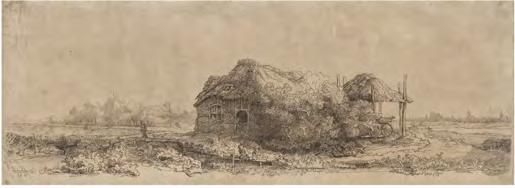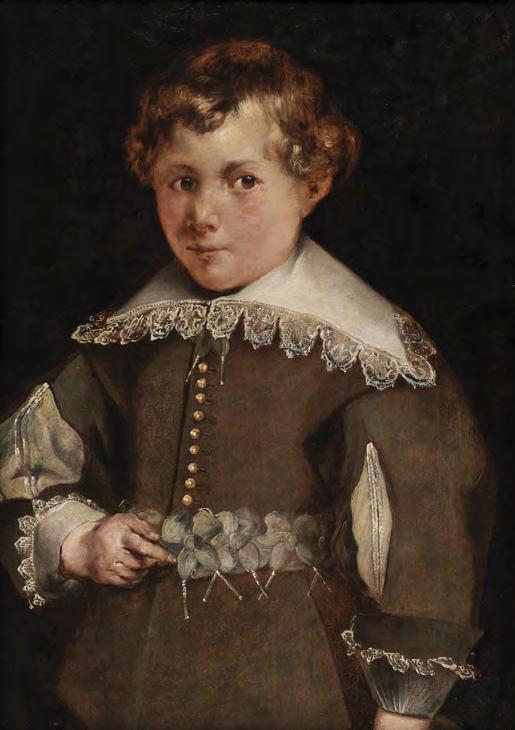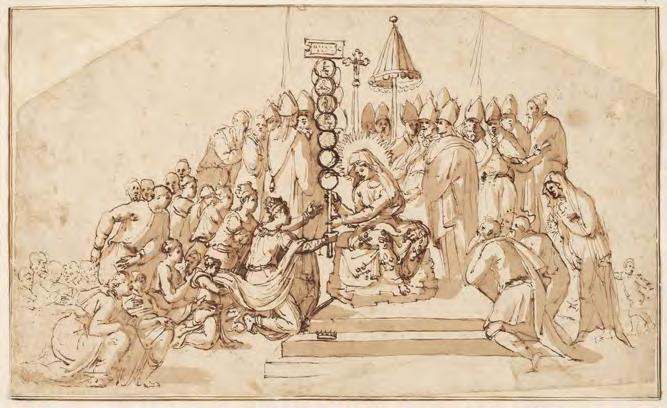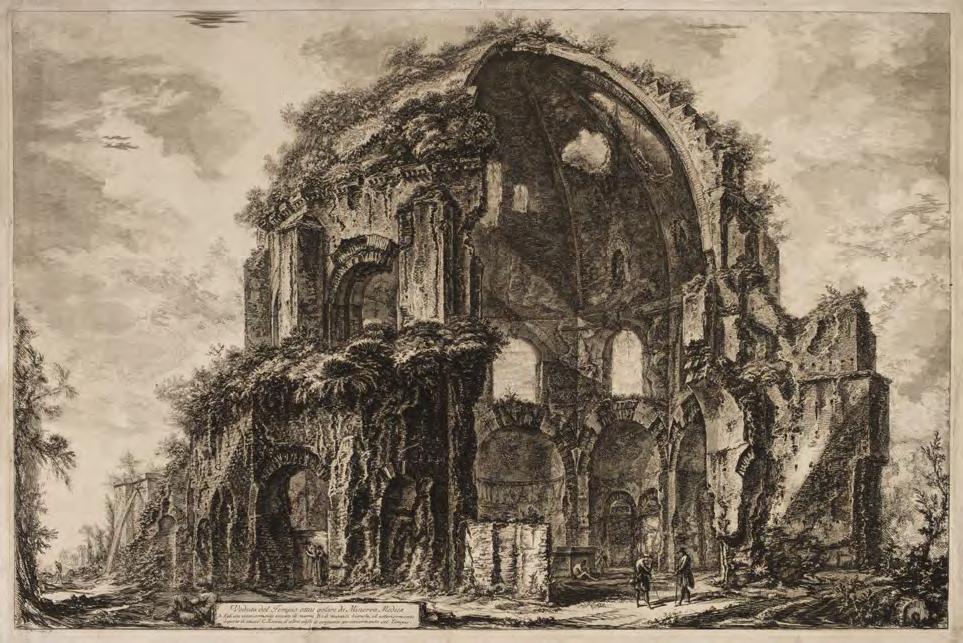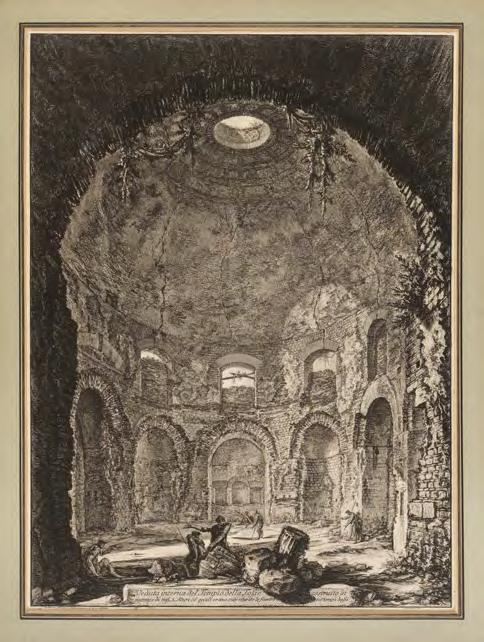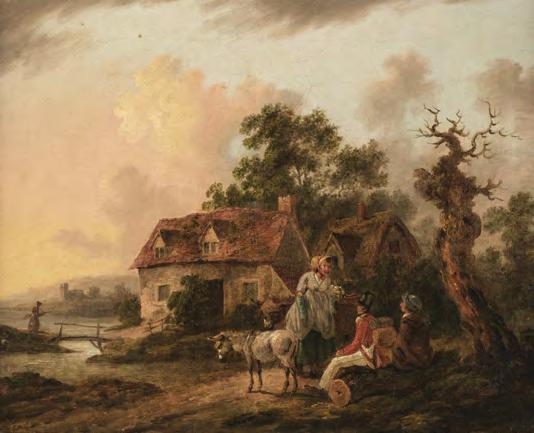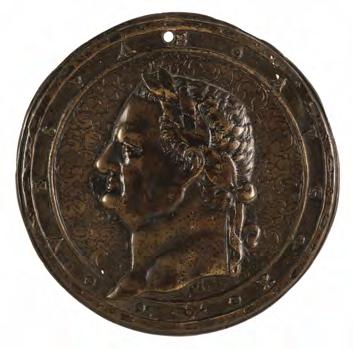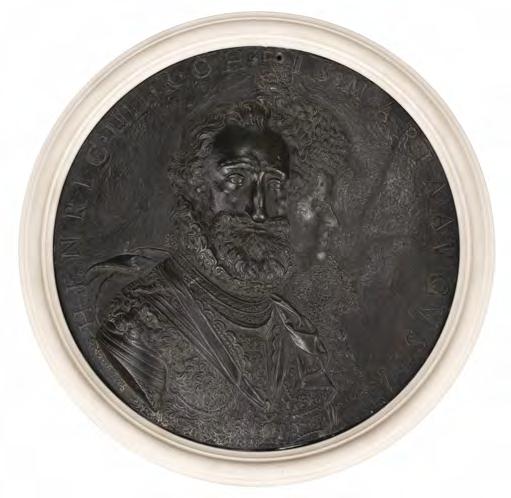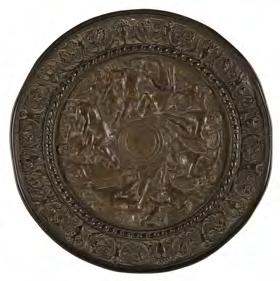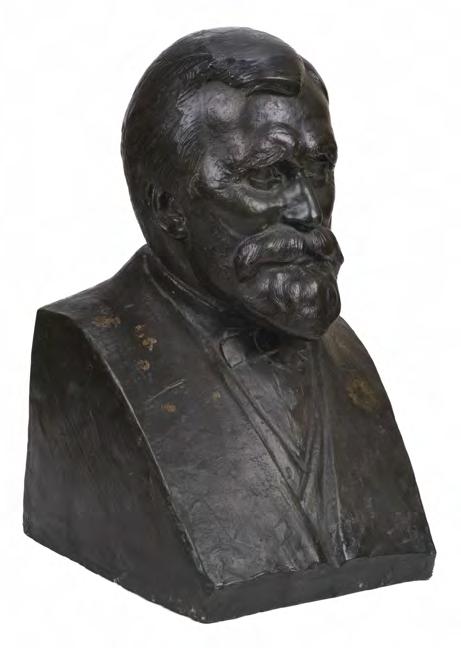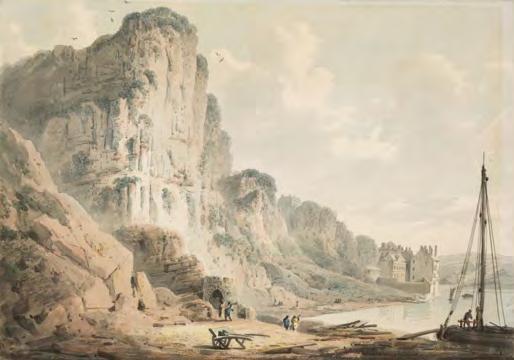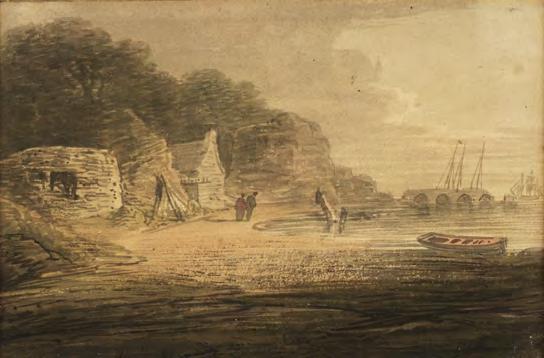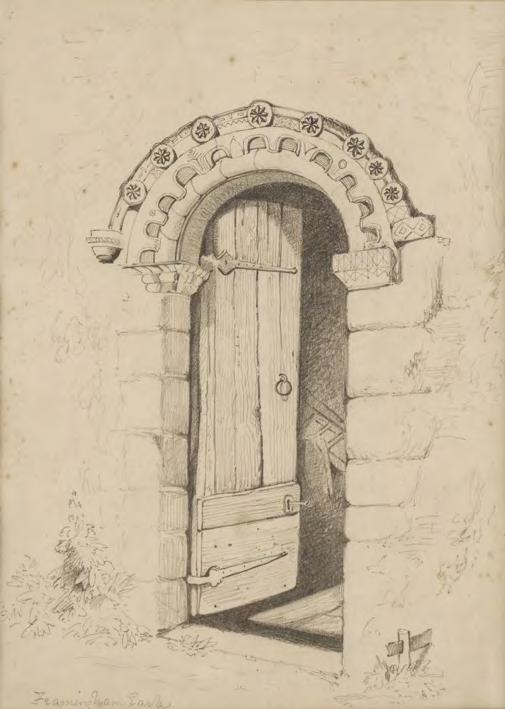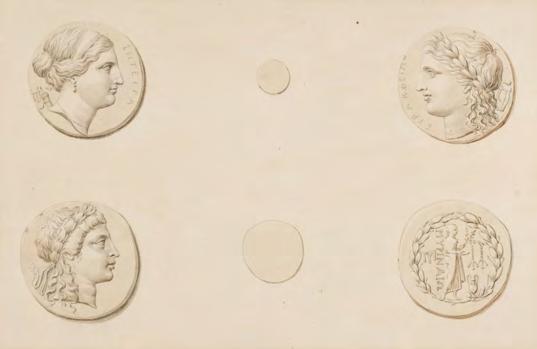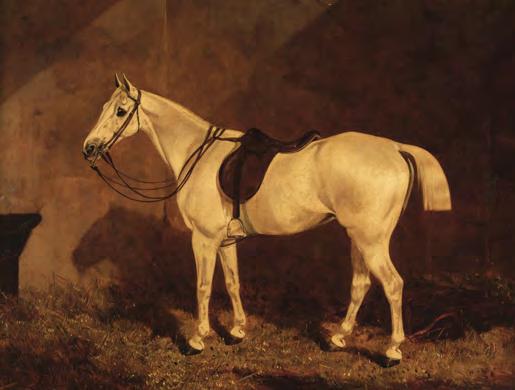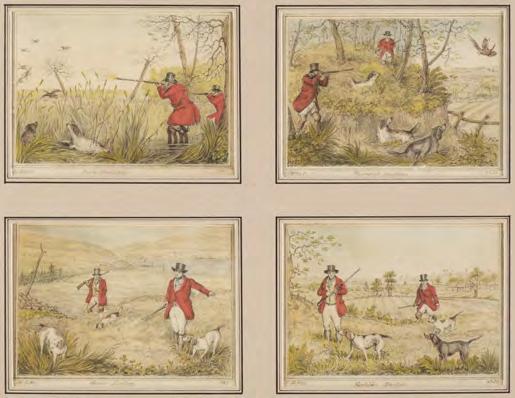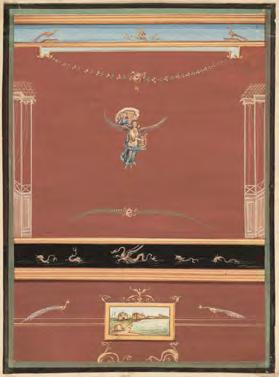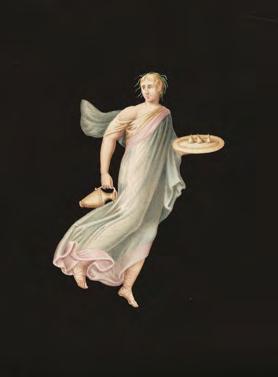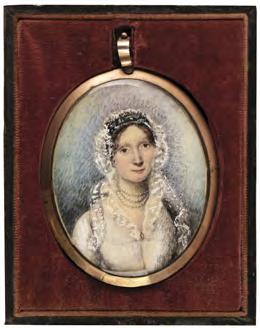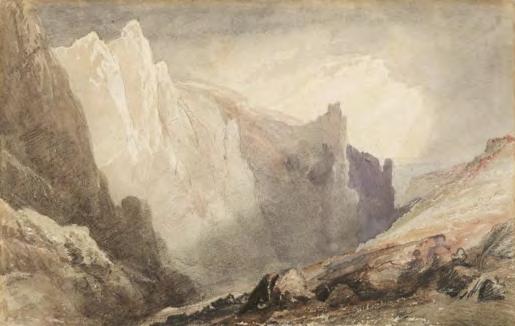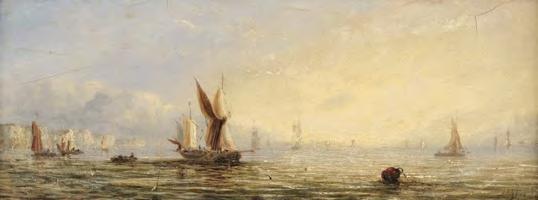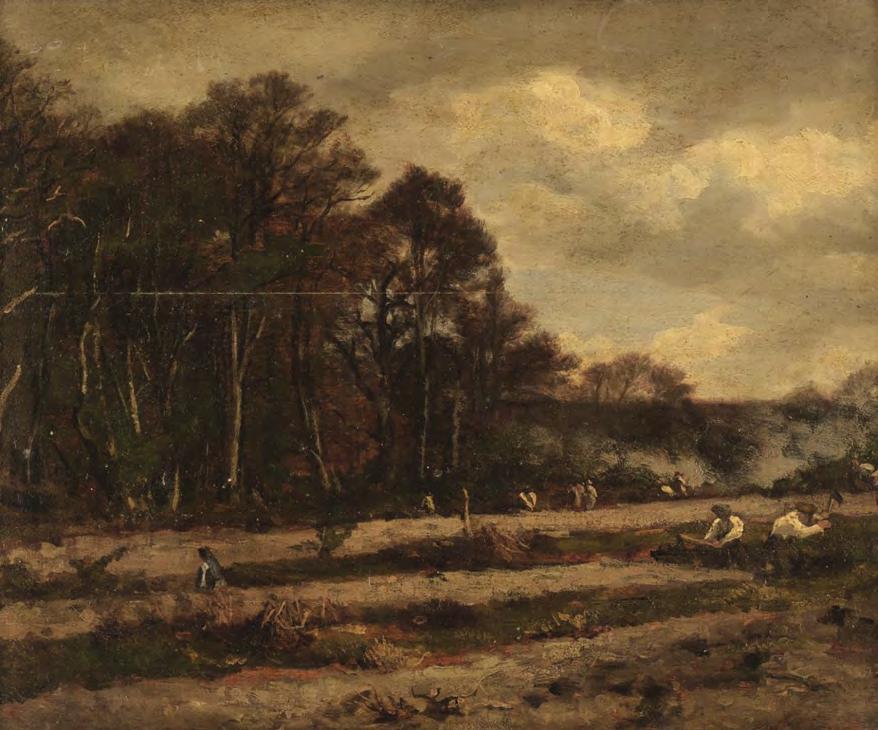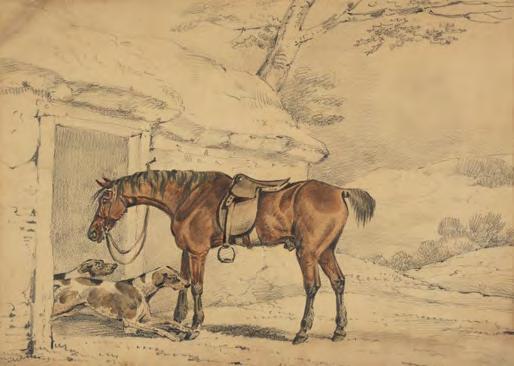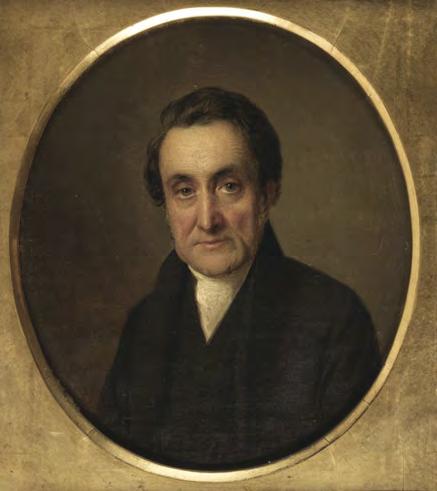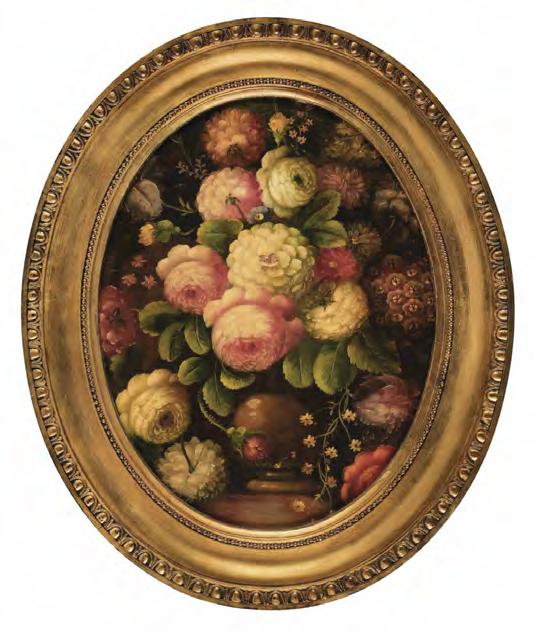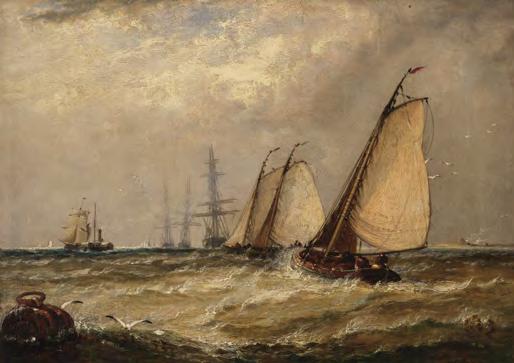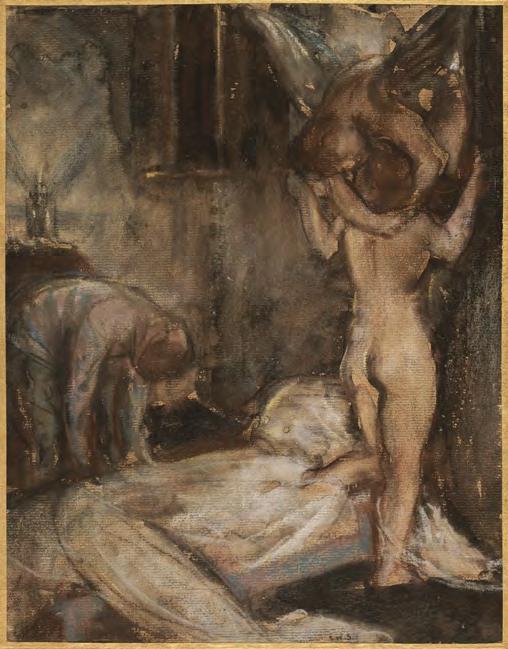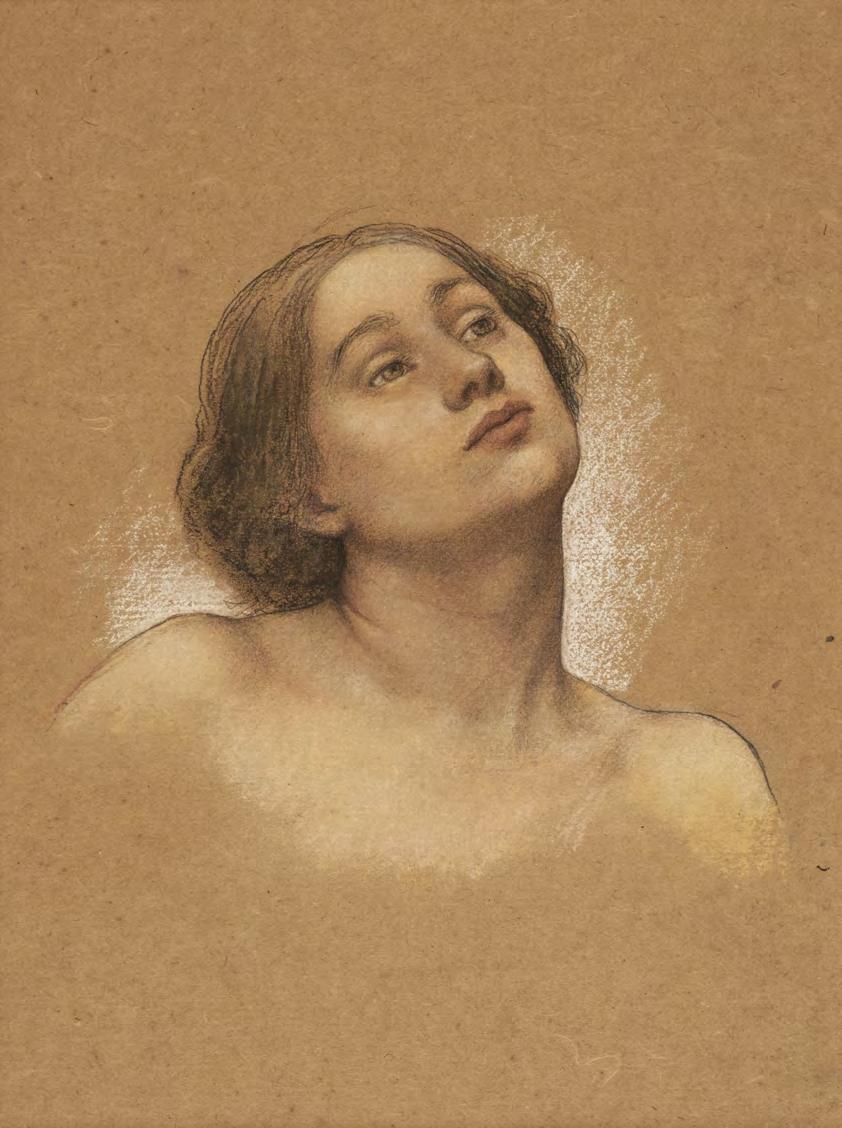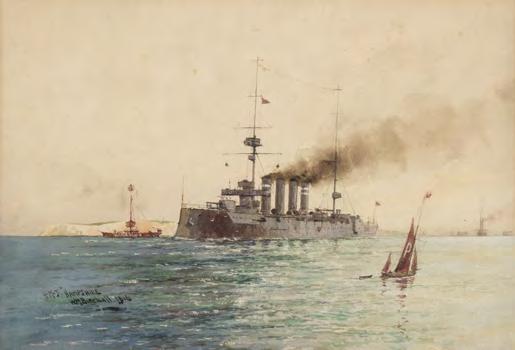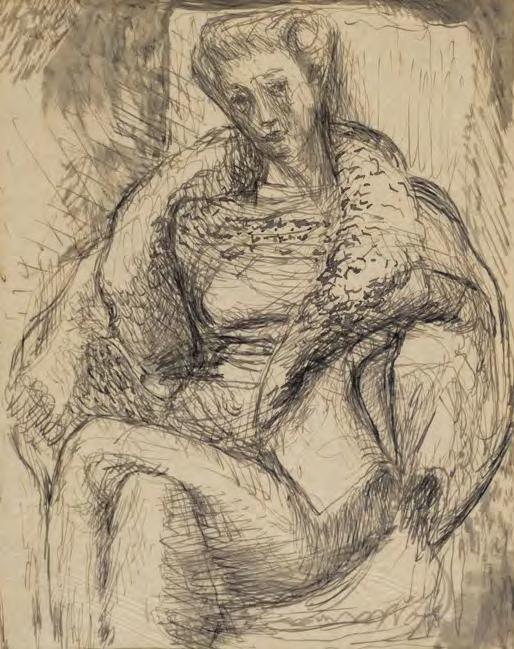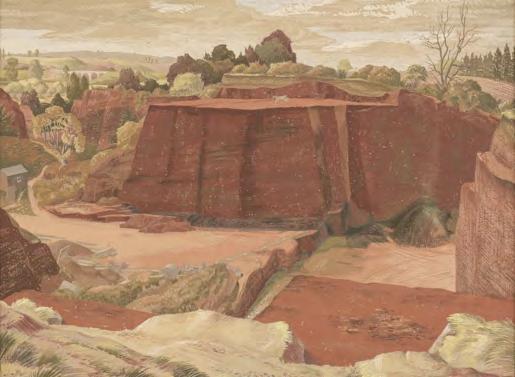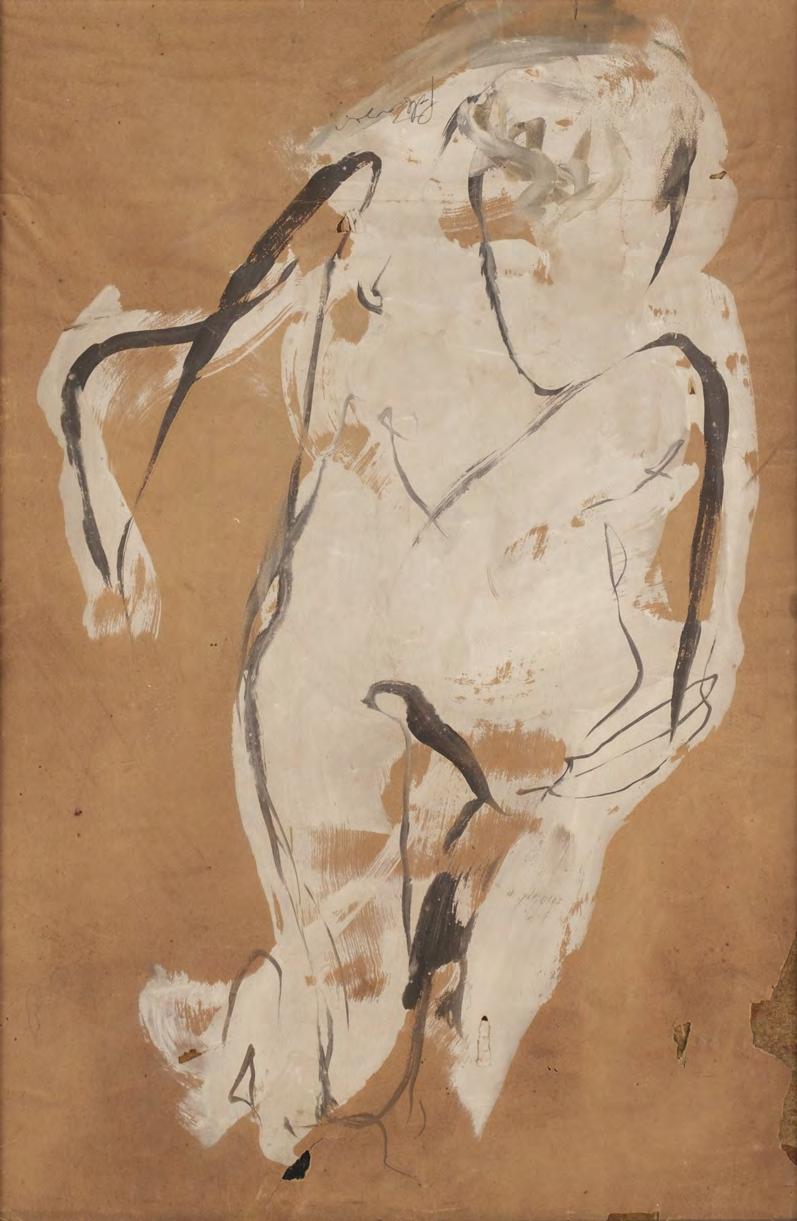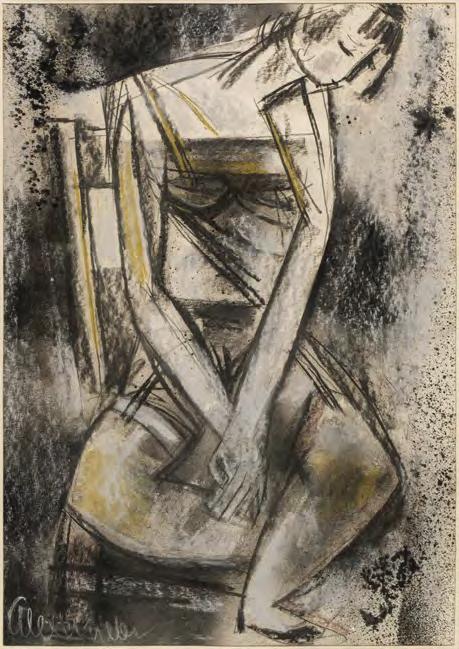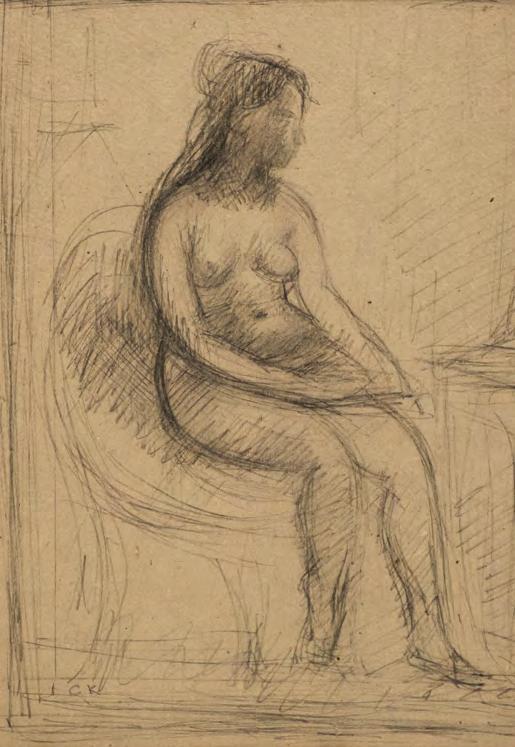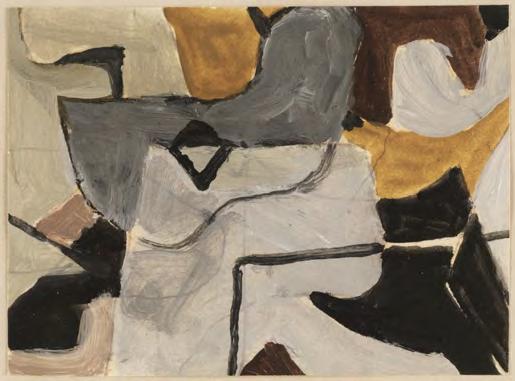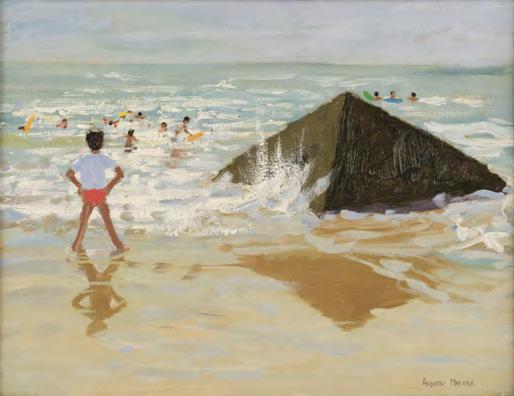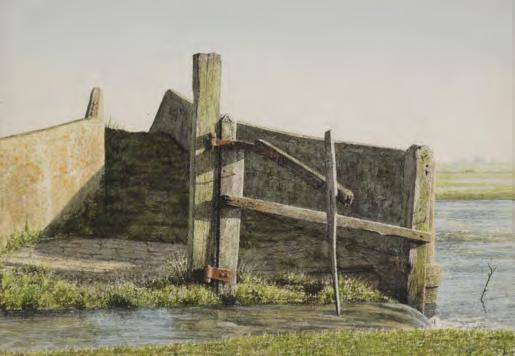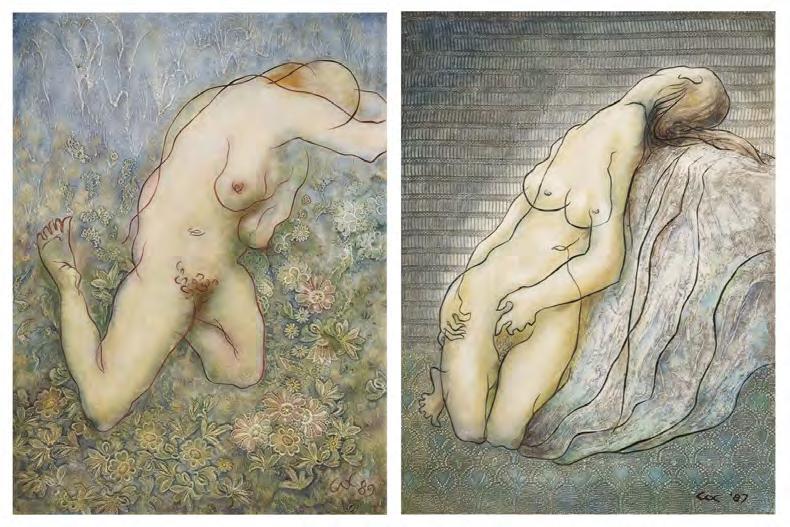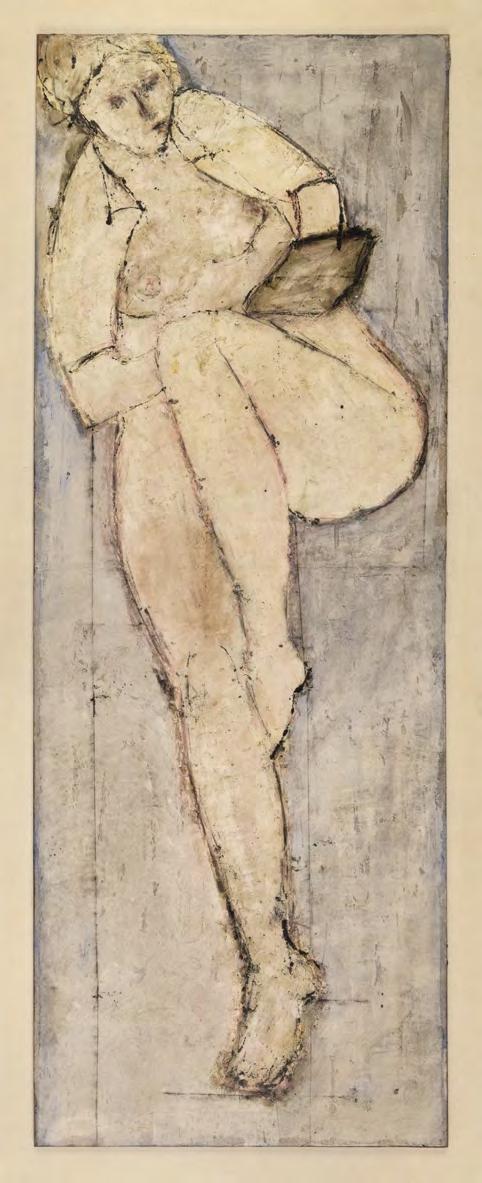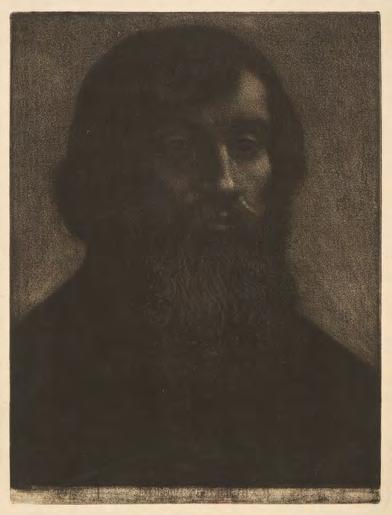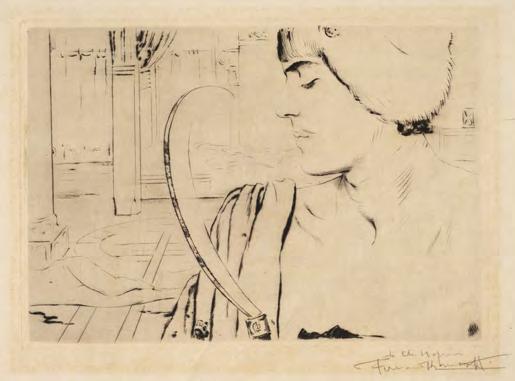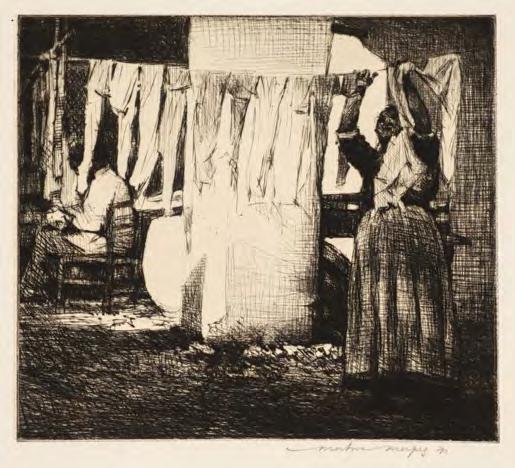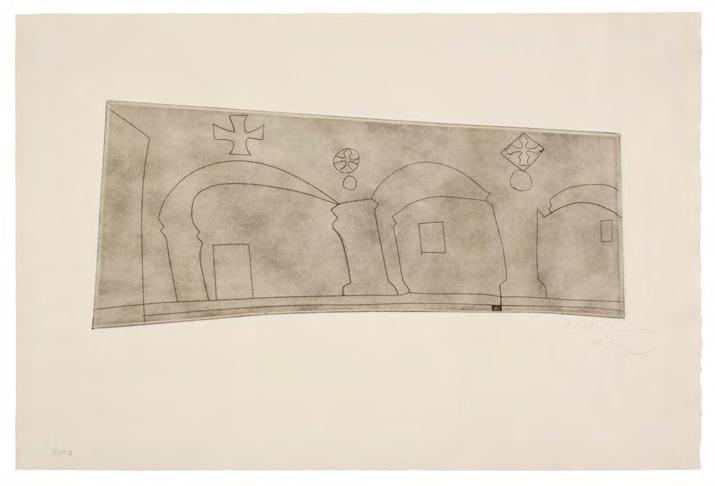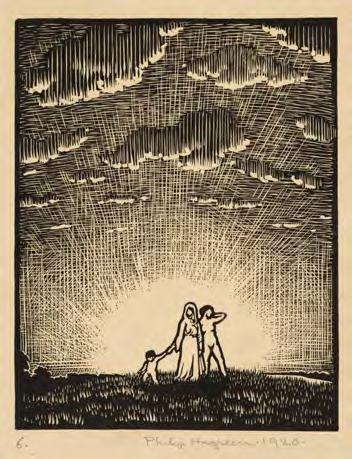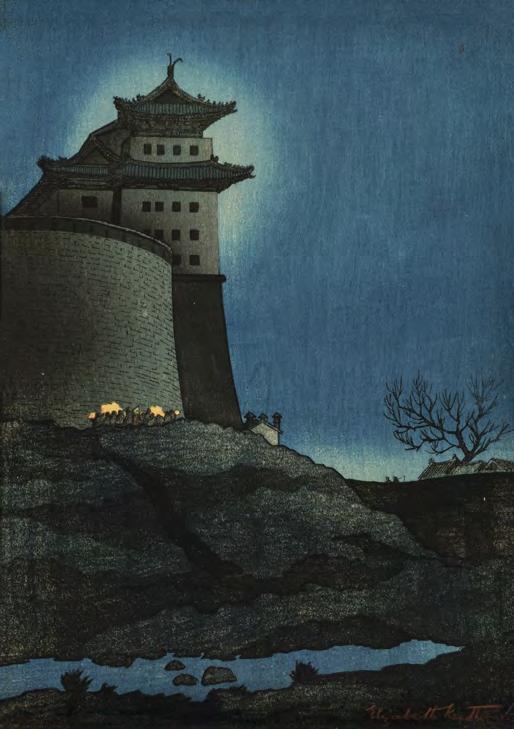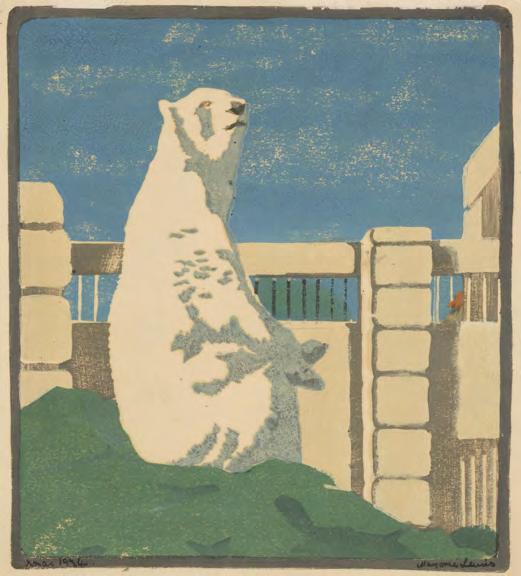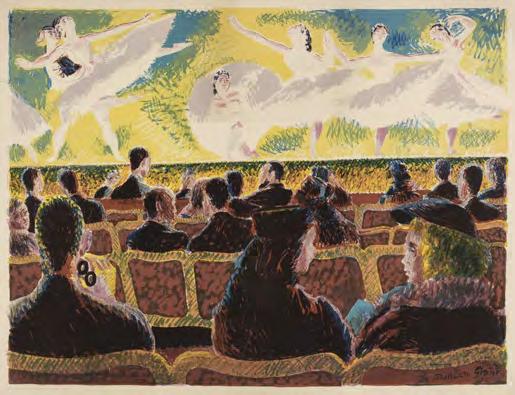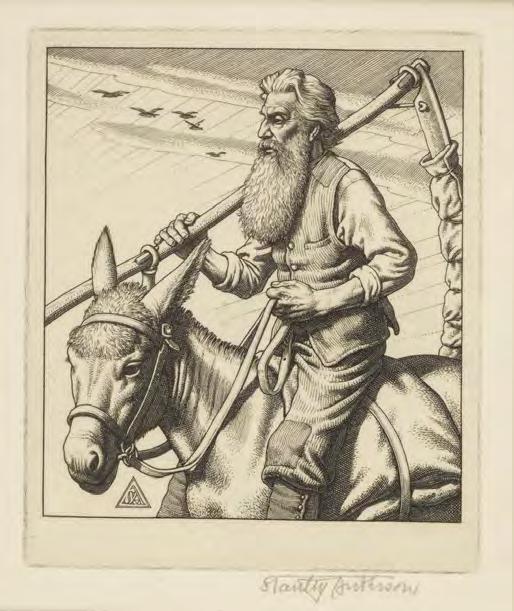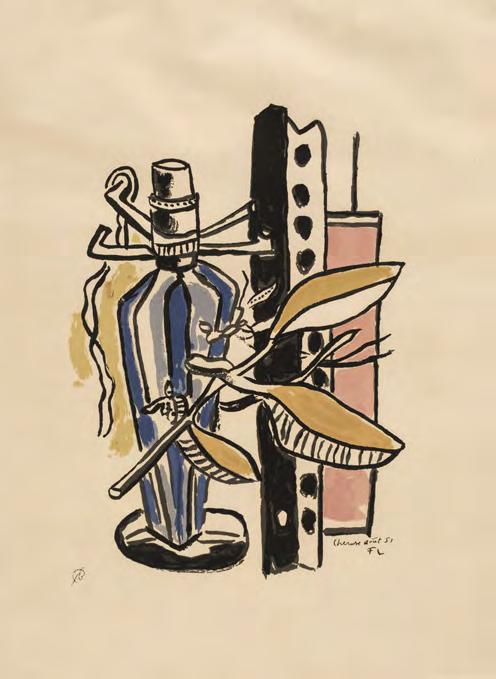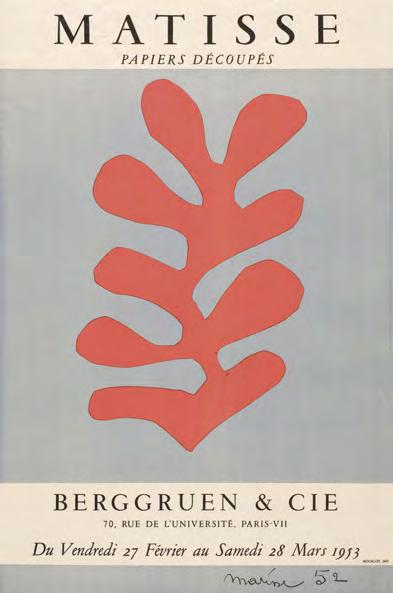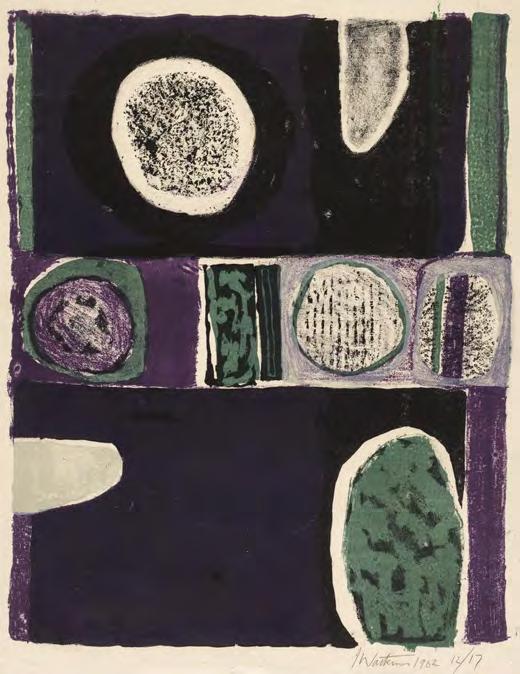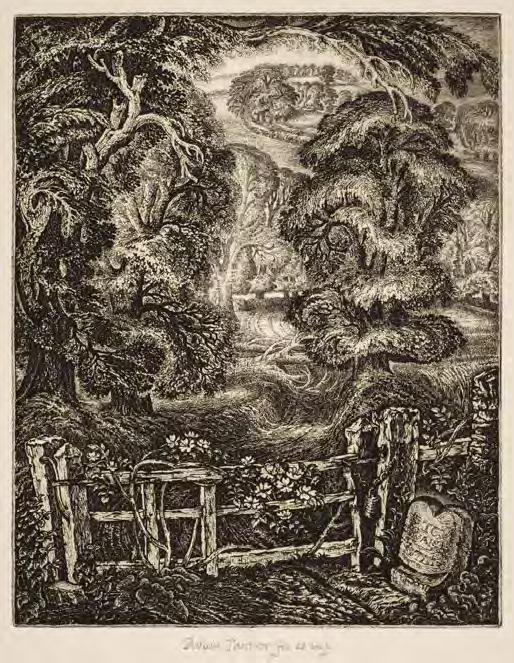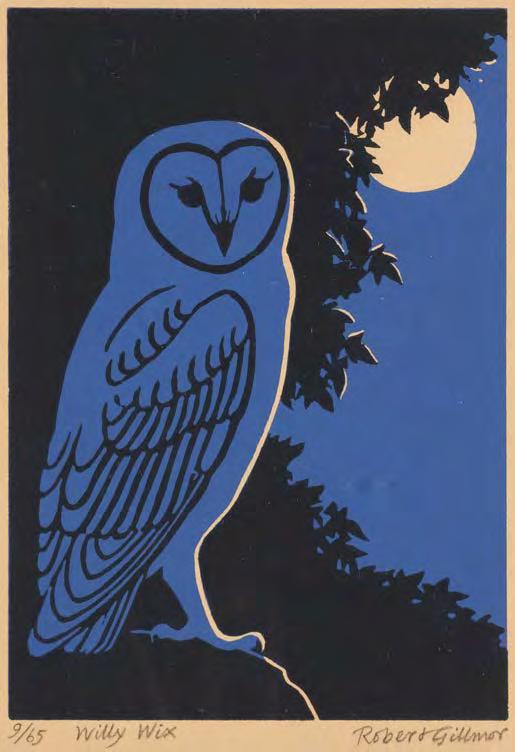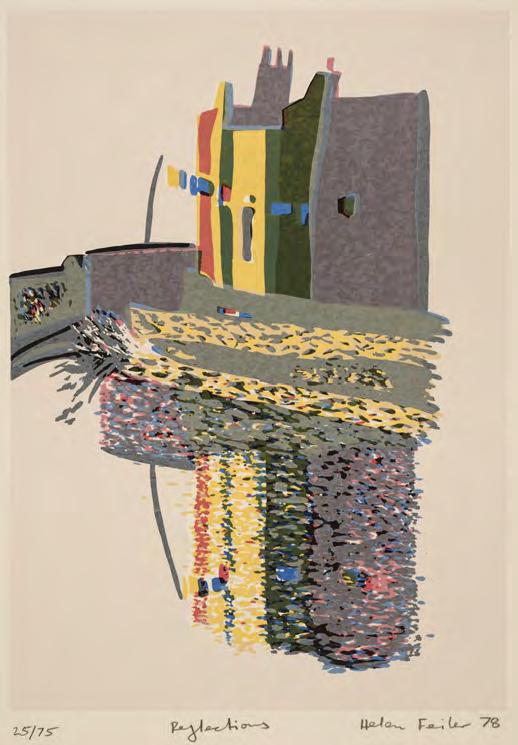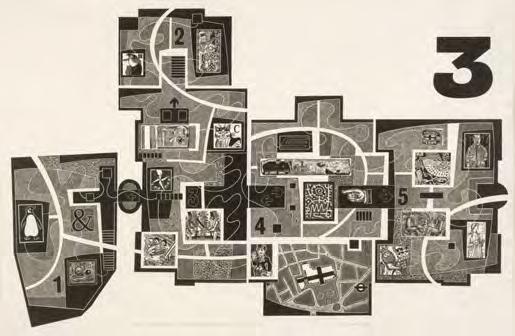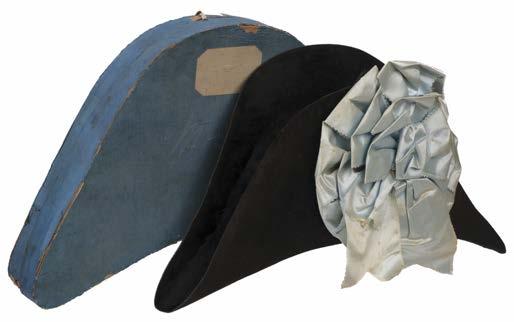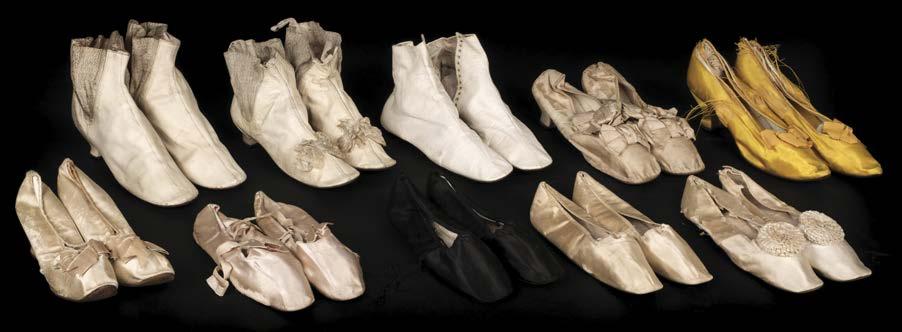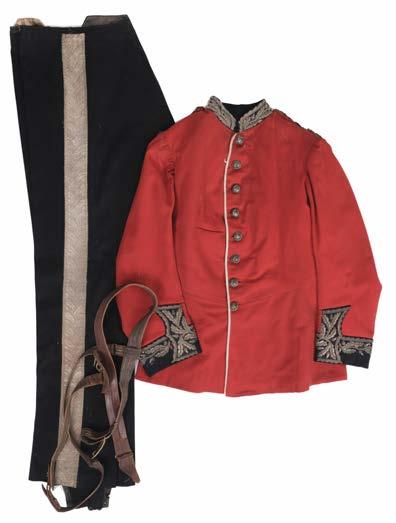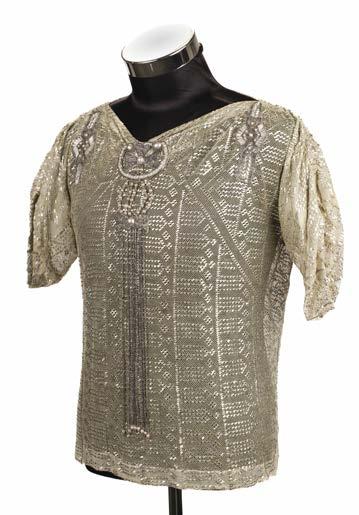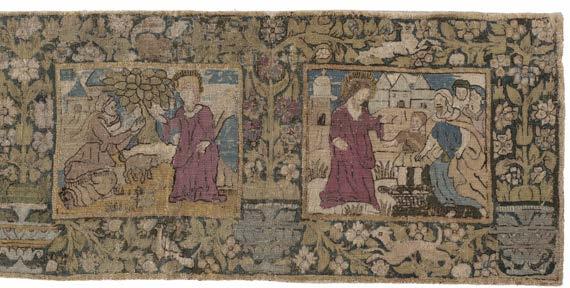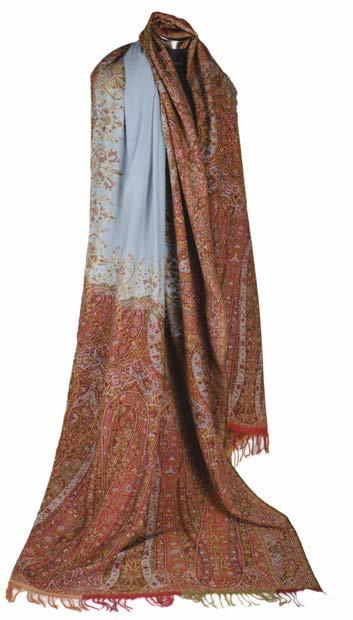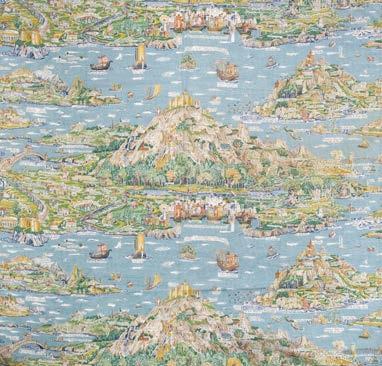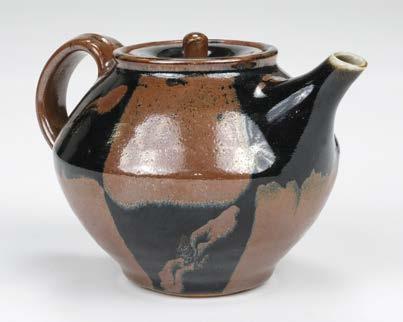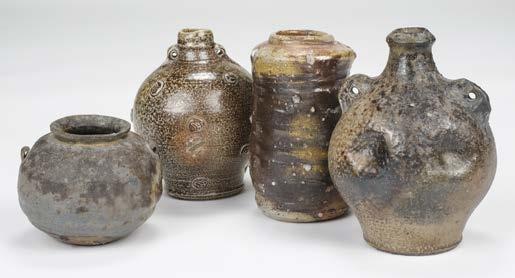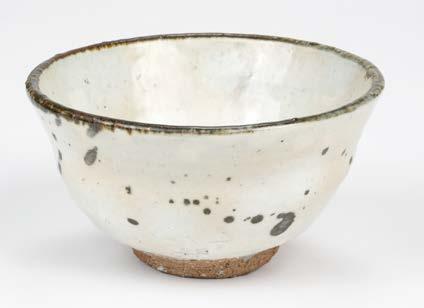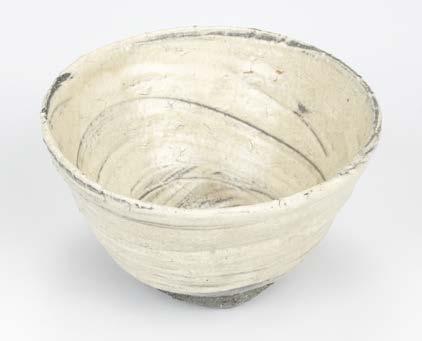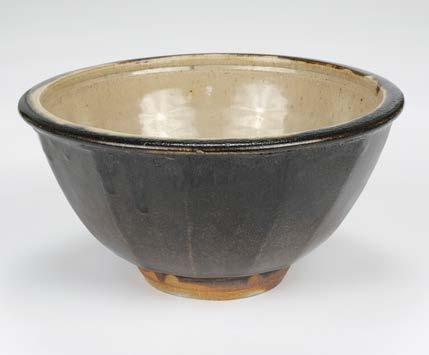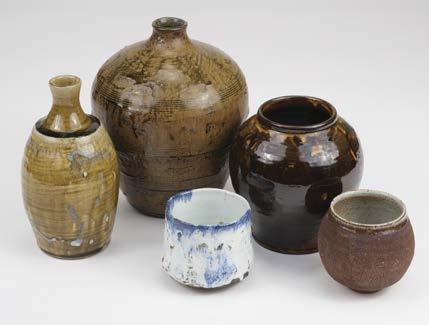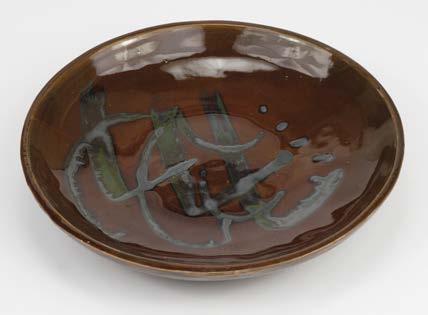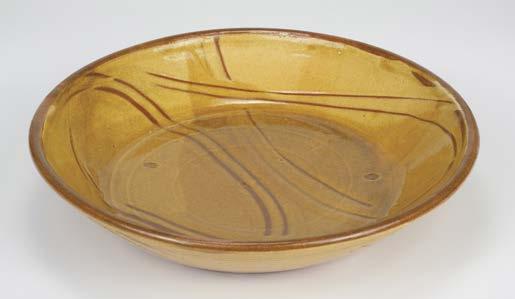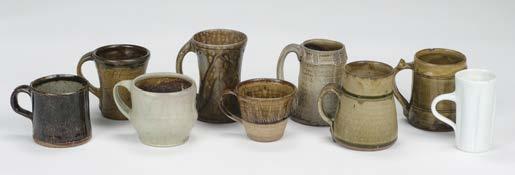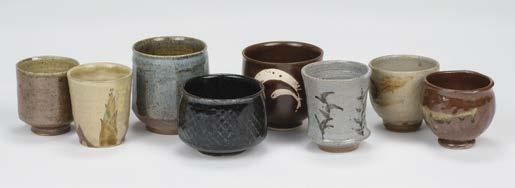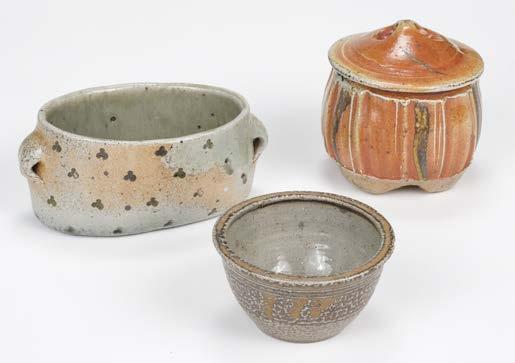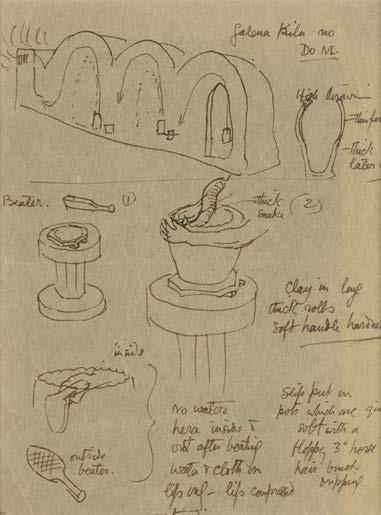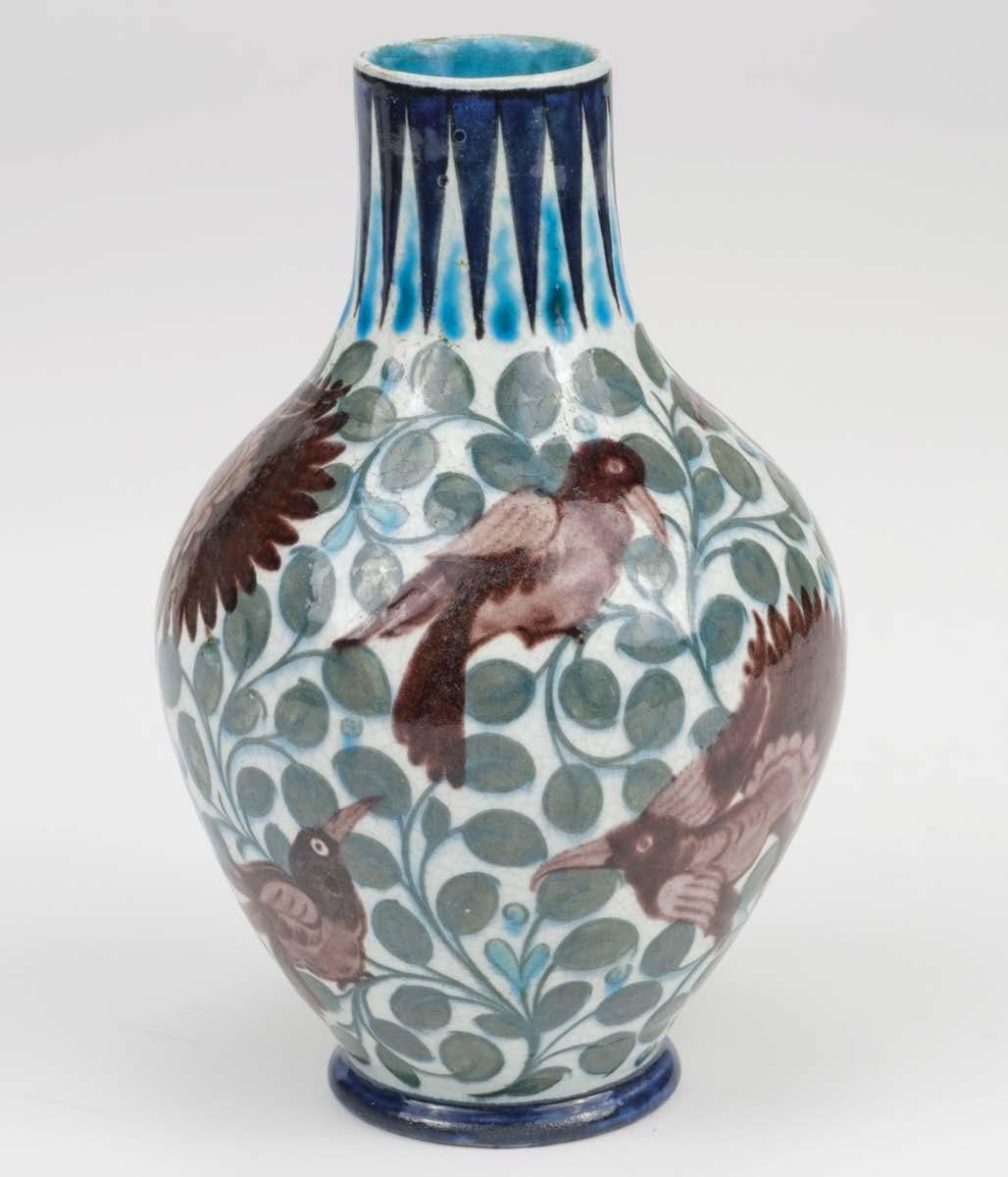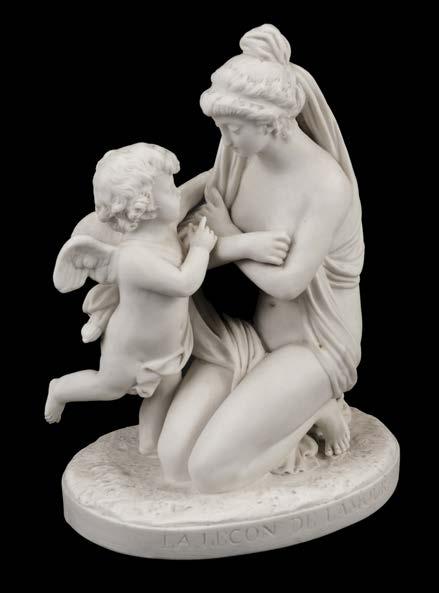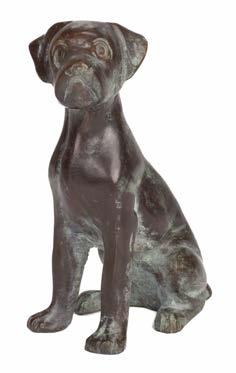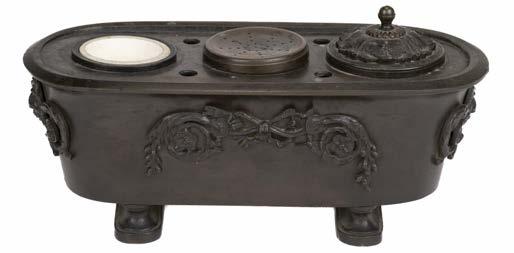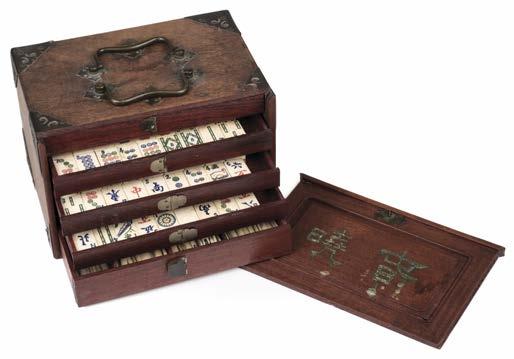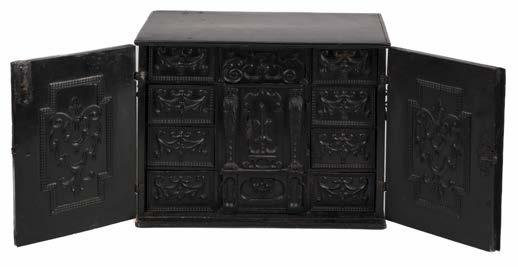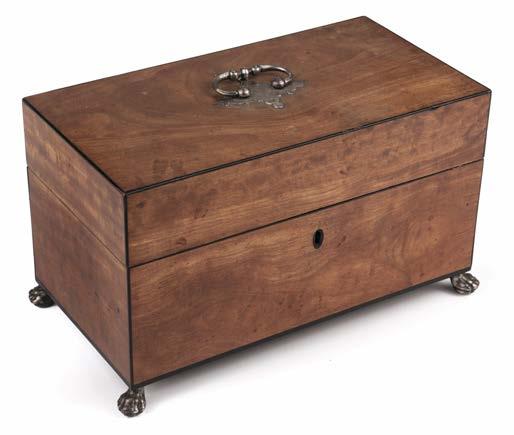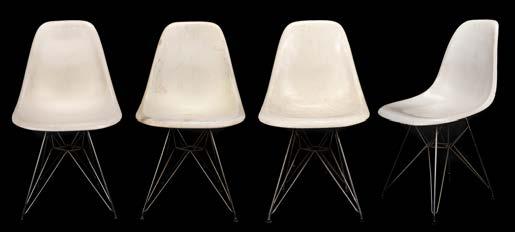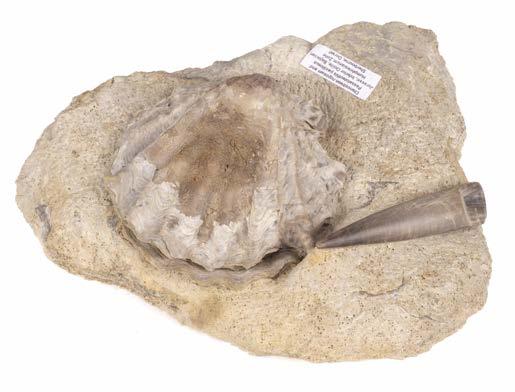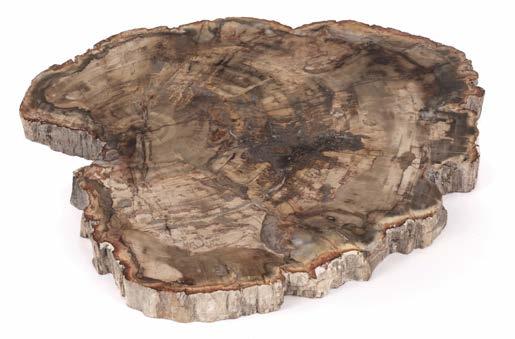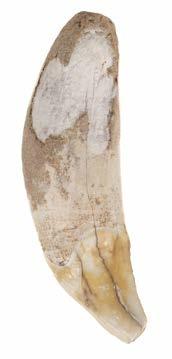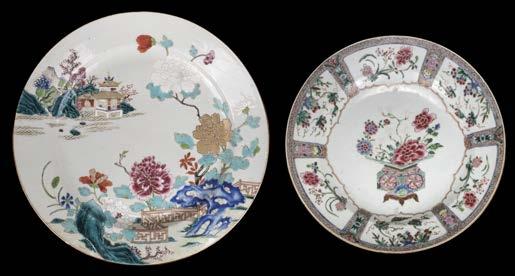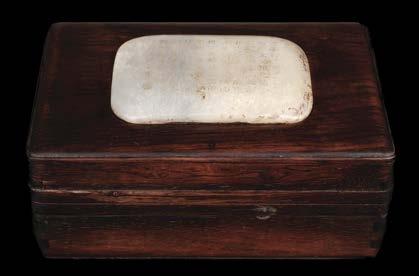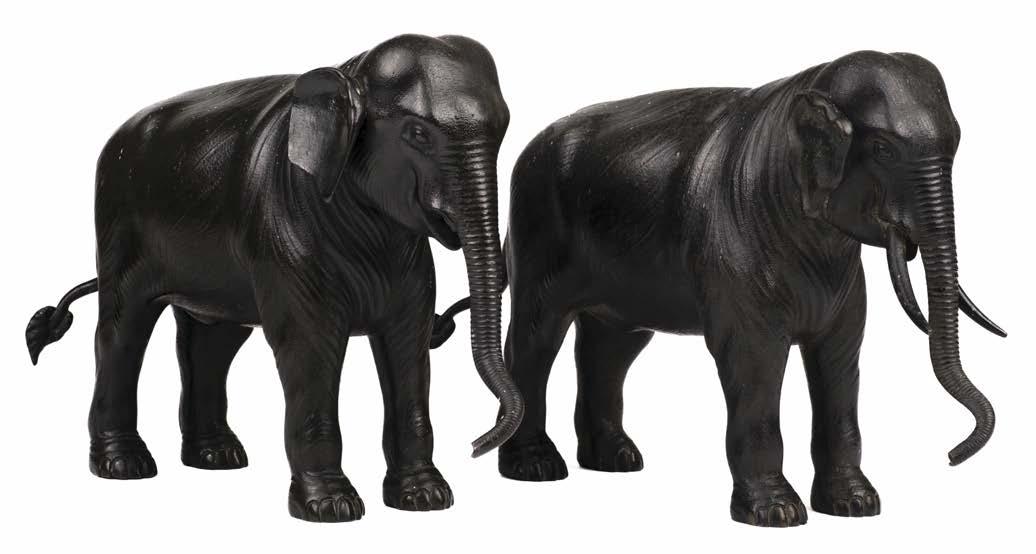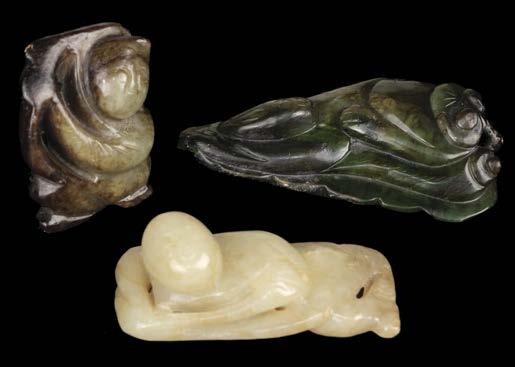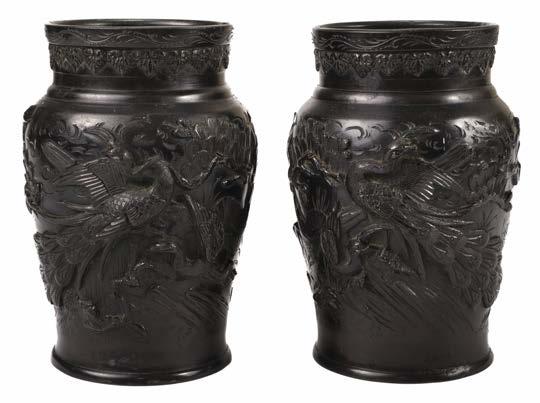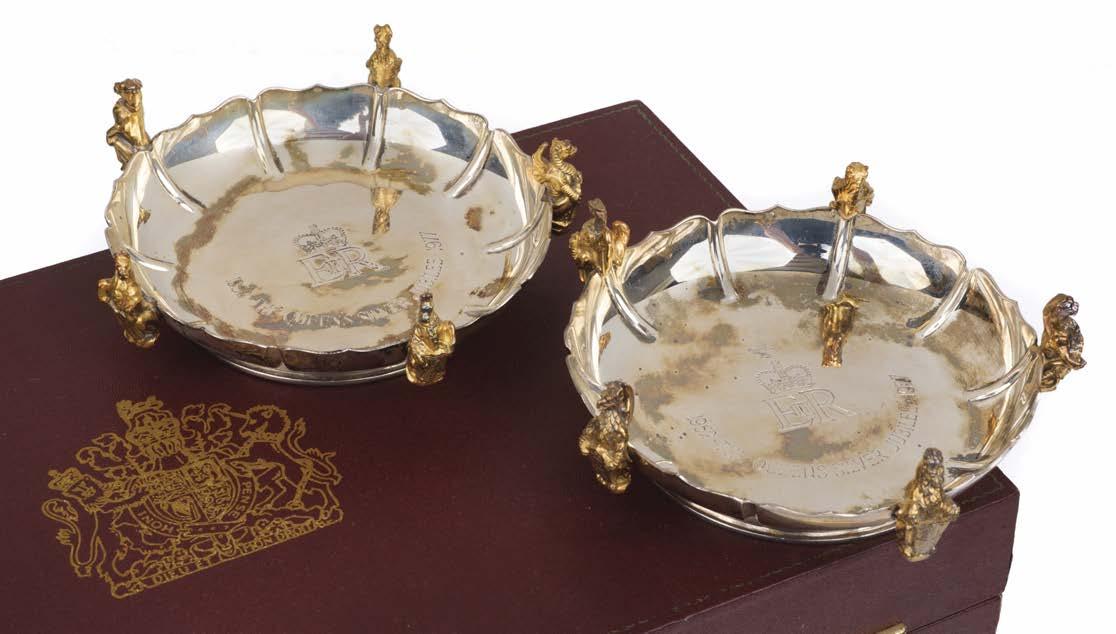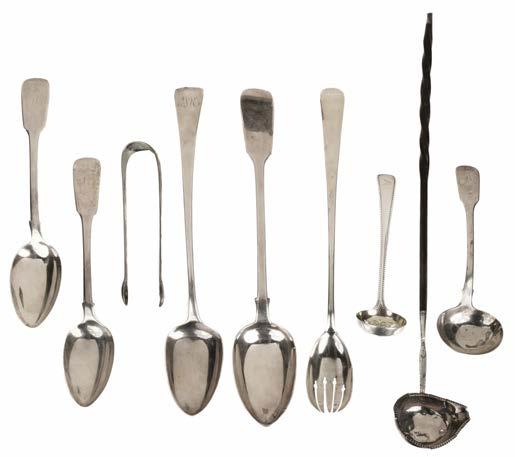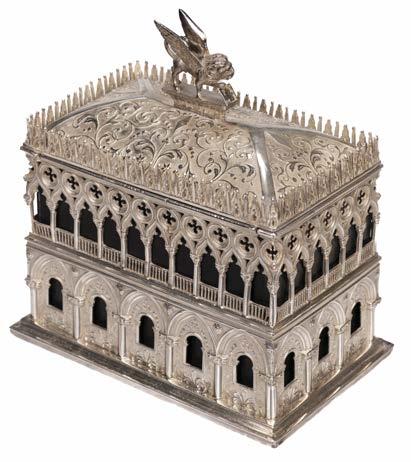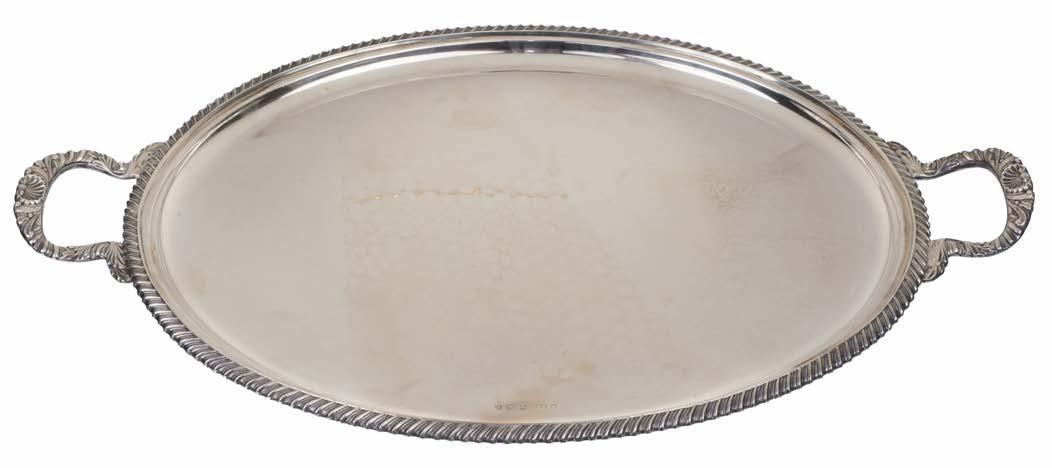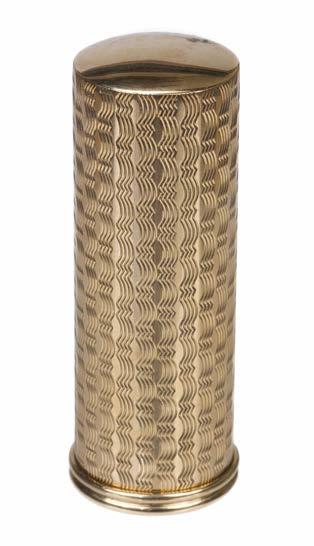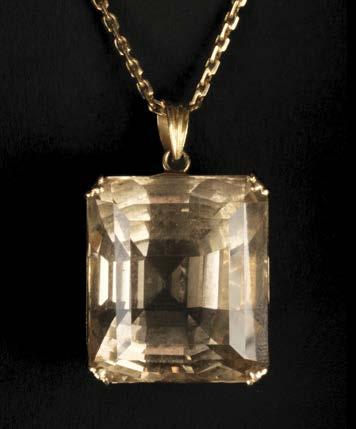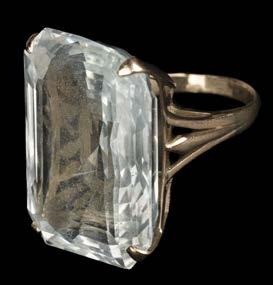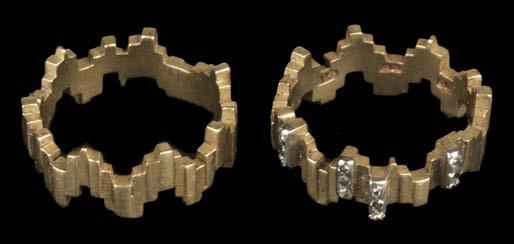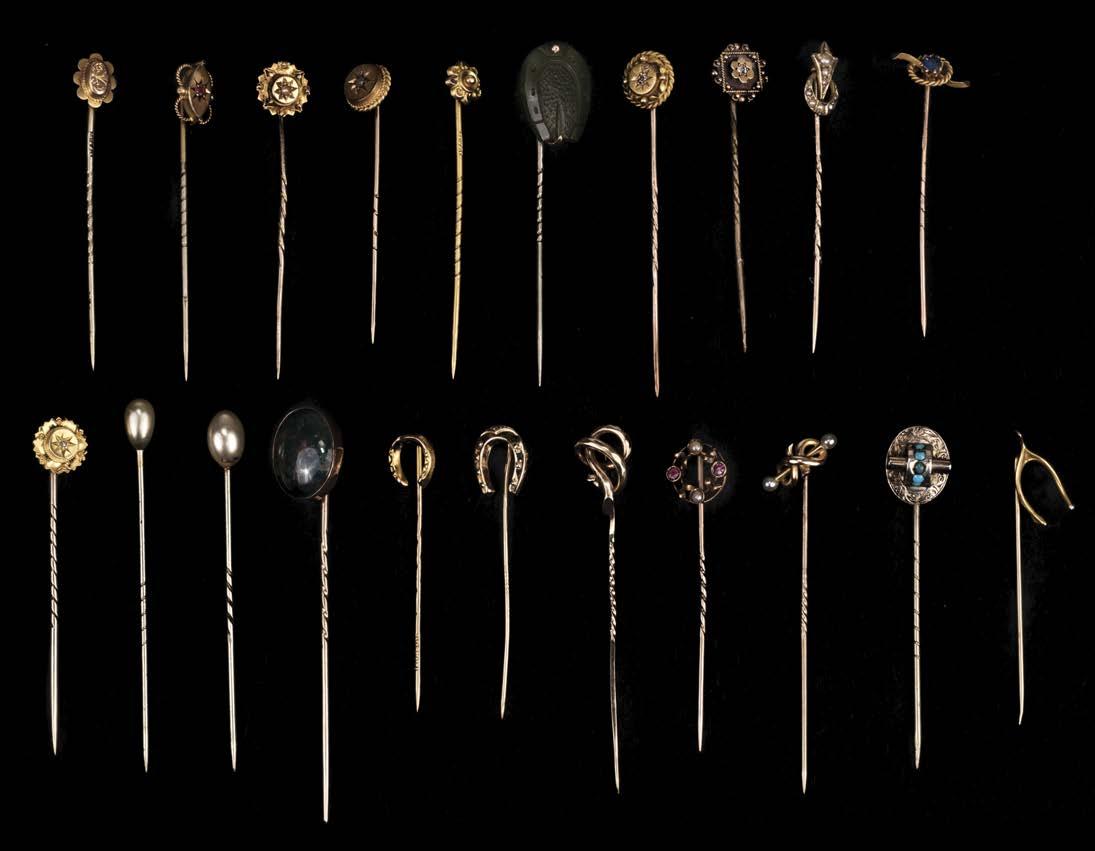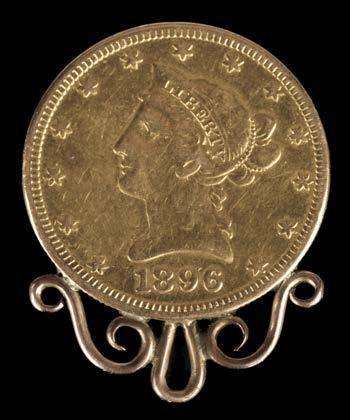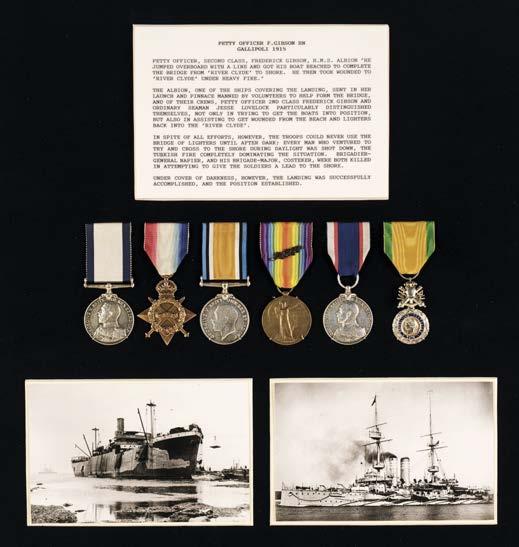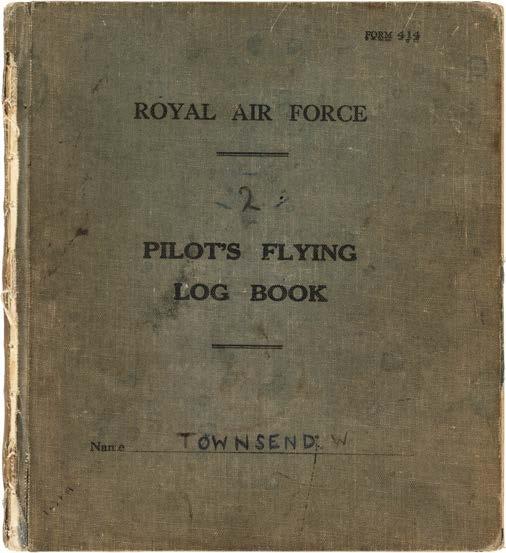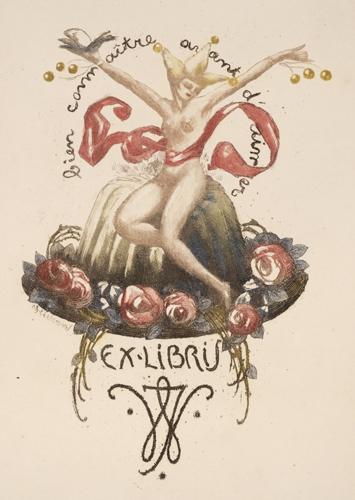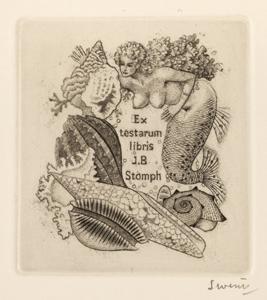FORTHCOMING SALES IN 2024
Wednesday 13 November
Wednesday 20 November
Thursday 21 November
Thursday 12 December
Friday 13 December
Printed Books & Maps, Bibles & English History
A Private Collection of British & European Ex-Libris
Historical Autographs & Documents
Photography 1850-2000
Military & Aviation History, Medals & Militaria The Bill Townsend Dambusters Collection
Printed Books, Maps & Documents
An Important Collection of Original Woodblocks by Thomas & John Bewick
Children’s & Illustrated Books, Modern First Editions
Original Illustrations, Early Playing Cards & Games
Entries are invited for the above sales. Please contact one of our specialist staff for further advice
OLD MASTER PAINTINGS, PRINTS & DRAWINGS
To commence at 10am
1* Dürer (Albrecht, 1471-1528). The Holy Family in Egypt, from The Life of the Virgin, circa 1503 [but slightly later], woodcut on laid paper (without watermark), signed in the block lower right, a very well printed impression, probably Meder d or e state (after the Latin book edition of 1511), circa 1570 or just after, early handwritten annotation '14' in brown ink to centre of lower margin, in very good condition (the sheet edges generally intact), sheet size 294 x 209 mm (11 5/8 x 8 1/4 ins) modern frame, glazed Bartsch 90; Meder 202, d/e; Strauss 69; Schoch, Mende, & Scherbaum 180.
Plate 15 from the series of 20 woodcuts of the Life of the Virgin: the Holy Family rest outside a ruined house on their flight into Egypt, St Joseph mending a wooden trough, the Virgin sitting and spinning, with the sleeping infant Christ in a cradle next to her, various putti and angels (1)
£2,000 - £3,000
2* Master of the Parrot (active Antwerp, 1525-1550). Virgin and Child with bunch of grapes, oil on wood panel, of the Virgin Mary seated, presenting her breast to the Christ child, with a bunch of grapes on the corner of a table before them, and flowers in a goblet to the right, 38 x 28 cm (15 x 11 ins), old recessed gilt frame
Provenance: Probably Samuel Day (1757-1806) of Hinton House, Hinton Charterhouse, Somerset; by descent to Mary Day, his widow, until 1846; by whom bequeathed to Thomas Jones (1808-1848), heir of Hinton House, Hinton Charterhouse, Somerset; by descent to his son Edward Talbot Day Jones (1837-1911); by descent to R. Robertson-Glasgow, Hinton House, Hinton Charterhouse, Somerset; thence by descent in the RobertsonGlasgow family.
Literature: Inventory of all the Household Furniture, Linen, China, Glass, Books, Paintings, Prints, Plate, Plated Ware and Miscellaneous Articles at Charterhouse, Hinton, Somerset. Entailed by Will of the late Thomas Jones Esqre, made August the 23rd, 24th, 25th, 26th and 28th 1848 by English & Son, 21 Milsom St., Bath, unpublished manuscript (where listed as ‘Mother and Child & bunch of grapes, 15 ins by 11 ins, Italian).
T. H. Poilvache-Lambert, Une Vierge et enfant dans un paysage, attribution à un artiste de l’entourage de Pierre Coecke, le Maitre au Perroquet, Revue des Archéologues et Historiens d’Art de Louvain, volume XVII, 1984, pages 118-142 (where the work is discussed on pages 132 and 133, and illustrated as figure 8). A copy of the article accompanies this lot.
An attractive and typical example of the work of the anonymous painter known as the Master of the Parrot. In 1949, the historian Max J. Friedländer was the first to identify a group of similar paintings and attribute them to ‘Der Meister mit dem Papagei’ (Phoebus, 1949, ii, pages 49-54), so-named for the exotic birds that often appeared in this artist’s compositions, active in Antwerp (or possibly Bruges) during the second quarter of the 16th century. Close similarities to this artist are also discernable in the oeuvre of Pieter Coecke van Aelst (1502-1550), one of the most distinguished south Netherlanish painters of the 16th century, and master of the Antwerp Guild of St. Luke, who maintained a large and productive workshop there.
This oil on panel was professionally cleaned and restored by Patrick Corbett, fellow of the British Association of Picture Conservators and Restorers, approximately 20-30 years ago, according to information provided by the owner.
(1)
£10,000 - £15,000
3* Attributed to Carlo Caliari (1570-1596). Head of an Old Man, black and white chalk on pale blue-grey laid paper with thin black ink border, sheet size 14 x 11.9 cm (5 1/2 x 4 3/4 ins), modern doublesided card window mount (bears pencil inscription 'Carlo Caliari 1570-1576 ? and 'Christie's 1/3/57 302LK'), framed and glazed (43 x 35 cm)
Provenance: Christie's, 1 March 1957, with stock number 302LK; purchased by Professor Ray Pahl (1935-2011) from Shelton, 26 January 1976; thence gifted to the present owner.
The present attribution to Carlo Caliari was put forward by Francis Russell, Old Master specialist and Deputy Chairman, Christie's UK. (1)
£1,000 - £1,500
4* Tempesta (Antonio, 1555-1630). Battling Animals, circa 1600, 8 etched prints on laid paper, from the series of 25 (plus title) prints, published in Rome by Nicolas van Aelst, two captioned in Latin, sheet sizes 9.6 x 13.6 cm (3 3/4 x 5 3/8 ins) and smaller, all 8 tipped onto a single backing sheet, which is itself tipped onto a larger backing sheet (46 x 33 cm)
British Museum number X,3.460-484 (for the complete series).
The prints comprise Illustrated Bartsch numbers 916 (Rhinoceros fighting an Elephant), 918 (Bear fighting a Tiger), 919 (Unicorn chasing Lizards from a Pond), 920 (Two Rams fighting), 924 (Chimerical Animal chasing other Animals), 928 (Centaur attacking a Satyr), 929 (Leopard fighting a Boar), and 931 (Tiger fighting a Centaur). (1)
£200 - £300
5*
Circle of Anthony van Dyck (1599-1641). Study of a Tree, red chalk on laid paper, mounted on old backing paper, with double-rule outer border in red ink, several marks and light soiling, original sheet with small loss towards top of left margin, and smaller loss below, collector’s marks of E. R. Lamponi-Leopardi and Charles Henri Marcellis to lower left and lower right corner of the sheet, sheet size 190 x 135 mm (7 1/2 x 5 3/8 ins), old (partly erased) pencil inscription to verso ‘Van Dyck’, pencil note regarding provenance to verso in the hand of Michael Jaffé, modern window-mount (48 x 32 cm), with plain white paper cover bearing the date 29 June 71, and the numeral 66
Provenance: E. R. Lamponi-Leopardi (later 19th century); Charles Henri Marcellis (1798-1864), Belgian industrialist, poet, and collector (Lugt 609), whose stamp was originally given as anonymous; Christie Manson & Woods, London, Important Old Master Drawings, 29 June 1971, lot 66; Estate of Michael Jaffé (1923-1997) art historian and former director of the Fitzwilliam Museum, Cambridge. (1)
£700 - £1,000
6* Breenbergh (Bartholomeus, Deventer 1598-1657 Amsterdam). Italianate Landscape with soldiers and hunting dogs, early morning, oil on wood panel, showing a group of soldiers and hunting dogs on a path, with buildings on a rocky outcrop and distant view of the Apennine mountains, with printed red label to verso of Thos. Agnew & Sons Ltd. bearing the number W.O. 0668-73, and printed label for Christie’s Old Master Paintings and Sculpture sale, December 2019, lot 208, the wood panel with chamfered edges to verso, 26 x 38.5 cm (10 1/4 x 15 1/8 ins), old ebonised wood frame
Provenance: with E. T. Parker & Co., Bristol by 1914; with Thos. Agnew & Sons Ltd.; Professor Michael Jaffé (1923-1997); thence by descent; Christie’s, London, Old Master Paintings and Sculpture for December 2019, lot 208.
Bartholomeus Breenbergh lived and worked in Rome from 1619, where he was influenced by the Italian landscapes of his older compatriot Cornelis van Poelenburgh. He was one of the founder members of the society of Dutch and Flemish artists in Rome, the Bentvueghels (Birds of a Feather), or Schildersbent (Band of Painters), by whom he was nicknamed Het Fret (The Ferret). Breenbergh’s use of the panoramic landscape with dramatic contrasts of light and shade, and buildings drenched in sunlight (as in the present work) influenced the French landscape painter Claude Lorrain, who arrived in Rome around the same time.
(1)
£10,000 - £15,000
7* Flemish School. Susanna at the Well, early to mid 17th century, pen and brown ink on laid paper, of a partly naked woman by a stone well, turning round in surprise, sheet size 151 112 mm (6 x 4 1/2 ins), framed and glazed, with 20th century pencil inscription to verso ‘Dr Besser’ (1)
£200 - £400
8* Galle (Cornelis, 1576-1650). Maphaei S.R.E. Card. Barberini nunc urbani Pp. VIII Poemata, Antwerp: Ex officina Plantiniana Balthasaris Moreti, 1634, engraved allegorical title page after Rubens on laid paper, trimmed to platemark, plate size 195 x 140 mm (7 3/4 x 5 1/2 ins), window-mounted, framed and glazed, 400 x 325 mm (unexamined out of frame), together with Galle (Joannes, 1600-1676). Omnes Sancti (All Saints), circa 1620, engraving after Rubens on wove paper, with margins, plate size 305 x 195 mm (12 x 7 5/8 ins), window-mounted, framed and glazed, 485 x 385 mm (unexamined out of frame), plus four others similar after Rubens, engraved by Cornelis Galle the Elder, Martinus van den Enden, Schelte à Bolswert and Jacob de Wit, matching ebonised and gilt moulded frames, glazed
Provenance: Estate of Michael Jaffé (1923-1997), art historian and former director of the Fitzwilliam Museum, Cambridge. (6)
£300 - £400
9* Rembrandt Harmenszoon van Rijn (1601-1669). Landscape with a cottage and haybarn, late 18th or early 19th-century, counterproof etching on wove, sheet size 115 x 320 mm (4 1/2 x 12 1/2 ins), window mounted, framed and glazed (46 x 56.5 cm), together with:
Leyden (Lucas van, 1494-1533). The Milkmaid, late 17th or early 18th-century, reverse engraving on laid with Strasburg lily watermark bearing the arms of Amsterdam, lower right corner excised with infill repair (measuring 8 x 16 mm), plate size 115 x 158 mm, sheet size 118 x 159 mm (4 5/8 x 6 1/4 ins), window mounted, framed and glazed (41.5 x 29.5 cm),
Rembrandt Harmenszoon van Rijn (1601-1669). Christ returning from the Temple with his parents, late 19th or early 20th-century, etching on wove, sheet size 95 x 145 mm (3 3/4 x 5 5/8 ins), window mounted, framed and glazed (37 x 41 cm)
1. Counterproof etching of Bartsch 225. The original with plate size 129 x 321 mm.
2. Reverse engraving of Bartsch 158 which was originally produced in 1510.
3. Bartsch 60. The original was produced in 1654.
(3)
£200 - £300
10* Lommelin (Adriaen, circa 1687- circa 1677). Marie de Barbancon, Princess of Arenberg, Antwerp: Joannes Meyssens, circa 1645, engraving on laid paper after Anthony van Dyck from the Iconography (Icones Principum), indistinct collectors ink stamp to verso, plate size 282 x 200 mm (11 1/8 x 7 7/8 ins), sheet size 305 x 220 mm (12 1/8 x 8 5/8 ins), together with Jode (Petrus de, 1570-1634). Beatrice de Cusance, Princess of Cantecroix, Antwerp, circa 1645, engraving on laid paper after Anthony van Dyck from the Iconography (Icones Principum), plate size 250 x 200 mm (9 7/8 x 7 7/8 ins), sheet size 420 x 317 mm (16 1/2 x 12 1/2 ins),
Neeffs (Jacobus, 1610- after 1660). Marie-Marguerite de Berlaymont, [Antwerp]: Joannes Meyssens, circa 1649, engraving on laid paper after Anthony van Dyck (with jester/fool watermark), plate size 278 x 202 mm (11 x 8 ins), sheet size 363 x 268 mm (14 1/4 x 10 1/2 ins), Bolswert (Schelte Adams, 1586-1659). Albert de Ligne, Prince of Arenberg and Barbancon, circa 1677, engraving on laid paper after Anthony van Dyck from the Iconography (Icones Principum), plate size 243 x 183 mm (9 5/8 x 7 2/8 ins), sheet size 332 x 260 mm (13 x 10 1/4 ins),
Bailliu (Pieter de, 1613- after 1660). Albert de Ligne, Prince of Arenberg and Barbancon, circa 1650, engraving on laid paper after Anthony van Dyck, verso strengthened at head and foot (creased at foot), trimmed to plate mark, plate/sheet size 475 x 331 mm (18 3/4 x 13 ins),
Bolswert (Schelte Adams, 1586-1659). Landscape by moonlight with horse grazing from the Small Landscapes series, 1650 or later, etching on laid paper after Peter Paul Rubens (1577-1640) published by Gillis Hendricx, trimmed to plate mark and laid down on mount board, plate/sheet size 317 x 455 mm (12 1/2 x 18 ins) (6) £300 - £400

11* Bolswert (Schelte A., 1586-1659). Justus Lipsius Historiographus (from Icones Principum Virorum), circa 1635, stipple engraving and line engraving on laid paper, with watermark of a foolscap with two bells and three balls, a very good impression, the full sheet, some light creases to blank margins, plate size 252 x 167 mm (10 x 6 5/8 ins), sheet size 385 x 270 mm (15 1/4 x 10 5/8 ins), window mounted, together with Vorsterman (Lucas, 1595-1675). Hubertus Vanden Eynden, Statuarius Antverpiae (from Icones Principum Virorum), circa 1630-45, engraving on laid paper, plate size 225 x 155 mm (9 x 6 ins), plus four other engraved portraits after Van Dyck from the Icones Principum Virorum (Theodorus Rombouts Pictor... Antverpiae by Paulus Pontius, circa 1645-46, Cesar Alexander Scaglia, Ambassador of the Duke of Savoy by Paulus Pontius, 1630-40, Henricus Liberti, Organist of Antwerp Cathedral by Pieter de Jode, 1646, and Gustavus Adolphus by Paulus Pontius, circa 1630, all framed and glazed Justus Lipsius: New Hollstein 39, vi/vi (final state); Mauquoy-Hendrickx 22, vi/vi; Hubertus Vanden Eynden: New Hollstein 61, ix, Mauquoy-Hendrickx 80, ix.
(6)
£300 - £400
12* Venetian School. Seated Male Nude, 17th century, red chalk on light pale grey-green laid paper, with indistinct watermark, numbered 2 in pencil to lower right corner, and a further pencil number to lower left corner ‘176’, extreme lower left blank corner replaced, some marks and pale discolouration, sheet size 392 x 280 mm (15 3/8 x 11 ins), hinge-mounted, antique-style gilt frame, together with Italian School. Three Male Heads, 17th century, brown wash, heightened with white body colour on oval laid paper, numbered 36 in an early hand to upper margin, laid on modern backing paper, stained to match, secured to backing board with tape to top of sheet verso, sheet size 23.4 x 33.5 cm (9 1/4 x 13 1/4 ins), mounted

13* Attributed to Carlo Maratta (1625-1713). Winged Angel and Seated Figure with a Crown, pen, brown and black ink, grey wash heightened with white, on oval laid paper, with collector’s mark of Alexandre-Humbert Chatelain (Lugt 135), 270 x 193 mm (10 5/8 x 7 5/8 ins), inlaid to modern backing paper, window-mounted
Provenance: Alexandre-Humbert Chatelain (1778-1852), painter and critic, Lyon. Chatelain formed a fine collection of Old Master drawings, particularly of the French School, but including examples of the Dutch and Italian masters. His collection was sold in Lyon by A. Brun, January 30-February 9, 1872; Estate of Michael Jaffé (1923-1997), art historian and former director of the Fitzwilliam Museum, Cambridge. (1)
£400 - £600
Provenance: Estate of Michael Jaffé (1923-1997) art historian and former director of the Fitzwilliam Museum, Cambridge. (2)
£700 - £1,000
14* Manner of Frans Hals (1580-1666). Portrait of a Boy, wearing a brown tunic with white lace collar and cuffs, possibly late 17th or early 18th century, oil on wood panel, verso in original planed state, comprehensively restored, including cleaning, retouching and revarnishing, 61 x 43 cm, modern antique-style frame (70 x 51.5 cm), with hand-written label by the restorer E. Everett, dated 1969, and later label of Everett Fine Art, dated 2020 to verso
Provenance: Rev. William Cowper Johnson (1813-1893) and his wife Marianne Patteson (1812-1894); thence by descent.
The Rev. William Cowper Johnson was born in Chesham (Buckinghamshire), the son of the Rev. Dr. John Johnson (1769-1833) and Maria Livius (17891864). William's father John was a clergyman, poet, and editor, and was a cousin and friend of the poet William Cowper (1731-1800), who lived with Johnson in his declining years. John was appointed Rector of Yaxham and Welborne in 1800, a benefice he held until his death. William married Marianne Patteson in 1840, the daughter of John Staniforth Patteson (17821832) and Anne Elizabeth Tasker (1789-1873). He also took the position of Rector of Yaxham, Norfolk and died in Norwich. Marianne was a member of the established Norwich family that founded the brewing company Steward and Patteson, later acquired by Watney Mann in 1963. The Patteson family held notable official positions locally including Sheriff and Mayor; members of the family were also directors of Norwich Union.
(1) £700 - £1,000
15* Ricci (Giovanni Battista, 1550-1627). An Allegory of Papacy, pen and brown ink and brown wash on cream laid paper, depicting an allegory of Papacy surrounded by Bishops and giving a Standard to a kneeling crowned figure, minor losses to lower left figures, upper corners cut away, sheet size 21.4 x 35.2 cm (8 1/2 x 13 7/8 ins), laid onto a laid paper backing, verso with old (probably later 18th century) ink inscription Paoli 70, and with later collector's mark R.G.C. [G.C. Rossi], the backing paper tipped onto card, with separate board support (30 x 40 cm)
Provenance: Gian-Carlo Rossi (Lugt 2212); Christie's South Kensington, European Works of Art, Decorative Objects, Carpets and Furniture 5 February 1997, lot 37 (illustrated); purchased by Professor Ray Pahl (19352011); thence gifted to the present owner.
Comparable to a drawing in the museum at Angers (A. Laing, The Finest Drawings from the Museums of Angers, Heim Gallery London and elsewhere, 1977, number 88). This drawing is possibly connected to the same commission: the decoration of the Camera di Santa Francesca Romana commemorating canonisations by Pope Paul V. Gian-Carlo Rossi, although best known as a numismatist, also collected "original drawings by the best Italian artists from the 15th to the 17th century... he managed to assemble a large and important collection" (Lugt). (1)
£300 - £500
16* Marot (Daniel, 1661-1752). Patrons d'étoffes et de velours (Patterns of Fabric and Velvet), Plates 1 & 2, 1712-1716, two etchings on laid paper, numbered 1 and 2 to lower right corner respectively, from the series of six plates entitled Patrons d'étoffes et de velours, included in the collection of various designs by Marot published between 1712 and 1716 as De Werken van Daniel Marot Architecte van wylem zyn Koninglyke Majestyt van Groot Bretagne Willem de Darde, plate size 270 x 186 mm
Provenance: Estate of Michael Jaffé (1923-1997), art historian and former director of the Fitzwilliam Museum, Cambridge.
Berlin, Ornament Kat, II, 2341. Published in De Werken van Daniel Marot Architecte van wylem zyn Koninglyke Majestyt van Groot Bretagne Willem de Darde (1712-16).
Daniel Marot (1661-1752), architect, furniture designer and engraver, son of the French court architect Jean Marot (1661-1752), and pupil of Jean Le Pautre. Members of the Marot family were among the many Huguenots who fled north to the Republic of the Seven United Provinces (Dutch Republic) after the abolition of the edict of Nantes in 1685.
Marot was trained as a dessinateur, in the tradition of Jean Le Pautre and Jean Bérain, providing designs for carpenters, gardeners, weavers, smiths, woodcutters and cabinetmakers.
(2)
£200 - £300
17* English School. Oval portrait miniature of a lady, early-mid 18th century, watercolour on card, head and shoulders portrait of a young lady with upswept fair hair, wearing a white robe and blue sash, 41 x 36 mm (1 5/8 x 1 3/8 ins), set into a glazed yellow metal locket frame (5 x 45 mm), together with 3 other framed and glazed portrait miniatures: a lady with pearls in her curled hair, wearing a laced blue gown and gold sash, watercolour on card, 35 x 29 mm (1 3/8 x 1 1/8 ins), and 2 bewigged gentleman, one wearing a gold-edged blue coat, watercolour and gouache on copper, 30 x 25 cm (1 1/4 x 1 ins), the other wearing a scarlet coat, watercolour and gouache on ivory, laid on card, with contemporary ink inscription on verso 'Cussairs', 27 x 21 mm (1 1/8 x 7/8 ins)
The sitter in the first portrait bears more than a passing resemblance to Henrietta Harley, Countess of Oxford and Countess Mortimer (1694-1755).
Ivory Act registration reference: LFN5LHXY (for final item).
(4)
£300 - £500

18* After Richard Cosway (1742-1821). His most Serene Highness Louis Phillip Joseph Duke of Orleans, & The Right Hon'ble Harriet Viscountess Bulkeley, 1788 and 1785, two hand-coloured stipple engravings by G. Hadfield and F. Bartolozzi respectively, after R. Cosway, the first published by R. Cosway, 1788, visible size 32.4 x 22.7 cm (12 3/4 x 9 ins), the second by S. Watts, May 1st 1785, plate size 27.9 x 21.5 cm (11 x 8 1/2 ins) with margins, black and gilt frames, glazed (36.5 x 29 cm and similar), together with Vorsterman (Lucas, 1595-1675), Portrait of Jacques Callot, after Anthony van Dyck, circa 1645, etching and engraving on pale cream laid paper, a very good impression, without publisher's name lower right, plate size 23.0 x 17.0 cm (9 1/8 x 6 3/4 ins), with margins, sheet size 27.7 x 21.7 cm, black and gilt frame (43 x 35 cm), plus Pond (Arthur, circa 1705-1758), Portrait of Sebastiano Resta, after Pier Leone Ghezzi (1674-1755), 1738, etching on laid paper, with etched caption at lower edge: Il P. Seb. Resta, insigne, Dilettante nell' Arti del Disegno, morto in Roma nell' anno 1714. E Museo Gul. Kent, arm., plate size 28.5 x 18.6 cm (11 1/4 x 7 1/4 ins), with margins, Hogarthstyle black and gilt frame, glazed (47 x 35.5 cm), and Bartolozzi (Francesco, 1728-1815), Marchese Antonio Canova, 1798, fine engraving by Bartolozzi after R.Suhrlandt, published by A.Molteno, March 15, 1798, plate size 21.5 x 15 cm (8 1/2 x 6 ins), with wide margins, black and gilt frame, glazed (34.5 x 24.5 cm), plus Gribelin (Simon, 1661-1733), Whitehall Banqueting House Ceiling, after Rubens, 1720, engraving on paper, after the ceiling painted by Peter Paul Rubens (1577-1640), defective (some tears and small losses), visible size 95.7 x 45.5 cm (37 5/8 x 18 ins), moulded gilt frame, glazed (109.5 x 60.5 cm)

19* Italian School. Biblical Figure, 18th century, black chalk with touches of white chalk, on watermarked paper, depicting a saint one hand holding a thick book the other reaching out, some fraying and closed tears to edges of paper, adhesive tape repairs to three closed tears to verso, sheet size 22.2 x 28.7 cm (8 3/4 x 11 1/4 ins), mounted (33.5 x 38 cm), together with two other early 19th century artworks comprising: pencil on laid paper, and pen, ink and wash on laid watermarked paper, largest 21 x 26.5 cm (3)
£200 - £300
£200 - £300
Provenance: Estate of Michael Jaffé (1923-1997) art historian and former director of the Fitzwilliam Museum, Cambridge. (6)
Lot 18
20* Continental School. Panoramic landscape with figures and distant view of a city, possibly Salzburg, circa 1750-75, pen, ink and watercolour on laid paper, laid down on card, showing a distant view of a city surrounded by fortified city walls and fortress on rocky hillside to the right and glimpse of a river bridge to the left (possibly Salzburg and the Hohensalzburg Fortress) with men on horseback in the foreground and farm workers tending the nearby fields, faint central vertical fold and some toning, 32.3 x 51.3 cm (12 3/4 x 20 1/8 ins) mount aperture, framed and glazed (44 x 62.5 cm), with art dealer and framer's label of Charles E. Luton of Birmingham to backboard (1) £300 - £500

21* Roberts (James, circa 1740-1809). Actor in Costume, watercolour, depicting a well dressed young gentleman wearing a white, green and red feathered hat, a white jacket and red pantaloons with gold tassles and frogging, green cumberband and black shoes with red and green rosettes, signed lower right, 17 x 12 cm (6 5/8 x 4 6/8 ins), mounted, framed and glazed (32.5 x 26 cm), together with: Attributed to Richard Wilson (1713/14-1782). Wooded Landscape, chalk on buff laid paper with watermark B Colombier, Paris (Heawood 2432), some faint vertical crease marks, adherred at upper corners to mount, small darkened spot to upper edge, sheet size 25.4 x 38 cm (10 x 15 ins), backing paper adhered to verso of corners, mounted (35.5 x 48 cm), and Devis (Anthony Thomas, 1729-1817). Above Larbrook, near Albury, Surrey, pen, ink and grey wash on wove paper, with traces of pencil, bears artist’s name in pencil to lower right (in a later hand), titled in contemporary ink (probably by the artist): ‘Above Larbrook’ to sheet edge verso, sheet size 15.6 x 23 cm, hinge-mounted, with later pencil inscription to backing card giving the artist’s name, title and additional note ‘bought from F R Meatyard Oct. 1955 for £2’, and Becker, (E., active 1780-1810). View on the Thames near Windsor, pen, ink and grey wash on laid paper, mount aperture 26.5 x 42 cm (10 1/2 x 16 1/2 ins), with later pencil inscription to mount card, giving the artist’s name, title and additional note ‘From Meatyard, Oct. 1955 for £2, mentioned in Iolo A Williams’s ‘’Early English Watercolours” 1952 for which two of his drawings are ...’, adhered to mount (41 x 53.5 cm), plus another early 19th century English watercolour landscape on paper, laid down onto card, of Kilchurn Castle on Loch Awe, Scotland, mount aperture 23 x 31 cm (9 x 12 1/4 ins)
James Roberts is best known for whole-length portraits of actors in character for John Bell’s British Theatre. He also signs himself as portrait painter to the Duke of Clarence on a stipple engraving of Prince Henry Lubomirski by John Jones after Anne Damer and a watercolour of Dame Creole du Perou, 1797. (5)
£300 - £500
Lot 21
Lot 20
22* Piranesi (Giovanni Battista, 1720-1778). Veduta del Tempio ottangolare di Minerva Medica, from Veduta di Rome, 1764, etching on thick laid paper, the 2nd state (of five), a deep impression, with margins, dust soiling, a few short closed tears (one affecting image), plate size 46.6 x 70.6 cm (18 1/4 x 27 3/4 ins), sheet size 51.5 x 73 cm (20 x 28 3/4 ins), unframed, together with Veduta degli avanzi del Tablino della Casa aurea di Nerone detti volgarmente il Tempio della Pace, from Vedute di Roma, 1774, etching on thick laid paper, a later Regia Calcografia edition of the fourth state (of four), with margins, marks and closed tears to margins, plate size 49 x 72 cm (19 1/2 x 28 1/2 ins), sheet size 63 x 85 cm (24 1/2 x 33 1/2 ins), unframed
Hind 74 ii/iv, and 114 iv/iv. Wilton-Ely 207 and 247; Focillon 778 and 751; Ficacci 945 and 985.
(2)
£300 - £500
23* Piranesi (Giovanni Battista, 1720-1778). Veduta interna del Tempio della Tosse, from Vedute di Roma, 1764, etching on thick laid paper, the first state (of five), printed with real contrast, with margins, fixed to mount with tape to sheet verso, plate size 62.5 x 46 cm (24 1/2 x 18 ins), sheet size 70.5 x 50.6 cm (27 3/4 x 20 ins), framed and glazed (76 x 59 cm)
Hind 70 (i/iv). Wilton-Ely 203. Focillon 775. Ficacci 941.
(1)
£300 - £400
Lot 22
24* Attributed to Thomas Gainsborough (1727-1788). Mountainous landscape with trees, black chalk, grey wash, with scratching out, on pale blue laid paper, 190 x 224 mm (7 1/2 x 8 7/8 ins), window mount, framed and glazed, with gift inscription to verso ‘Michael and Patricia with love from Martin. November 1964’
25* Attributed to Richard Earlom (1743-1822). Academic study of a statue of a male nude with raised arm, circa 1770, black chalk heightened with white chalk on laid paper with a pale pink prepared ground, numbered in ink to head of the sheet verso in an contemporary hand ‘21’, modern pencil attribution to verso ‘Richard Earlom 1743-1822’, 37.5 x 26 cm (14 3/4 x 10 1/4 ins)
Provenance: Estate of Michael Jaffé (1923-1997), art historian and former director of the Fitzwilliam Museum, Cambridge. (1)
£200 - £300
£400 - £600
Provenance: Michael and Patricia Jaffé, to whom gifted in November 1964 on the occasion of their wedding (inscription to verso of the sheet). (1)


26* German School. Prince Ernest Augustus, Duke of Cumberland and King of Hanover (1771-1851), circa 1775, oval oil on canvas, a half length portrait of a young boy with long blonde hair, wearing a white shirt with pearl adornments around the sleeves and chest, a small sprig of forget me nots to the centre of the neckline, a wide blue sash around his waist, relined, 52.5 x 45.5 cm (20 5/8 x 17 7/8 ins) oval aperture, in a fine period gilded composition frame with spandrels, plaque (of a slightly later date) to lower edge titled 'Georg Prinz v Cumberland', with early ownership stencil in black to verso of the frame, with a monogram E.A. and coronet and the number M202, additionally stamped in black to verso EAPC, and with an early printed and handwritten label for the picture restorer Hermann Ritschl, Vienna with stock number 5233, frame size 67 x 62 cm
Provenance: Collection of Ernest Augustus, Duke of Cumberland (17711851), with his ownership stamp to verso; Sotheby's, Property from the Royal House of Hanover, Munich, 5-15 October 2005, lot 5079; Rosebery's, London, Ted Few: An Idiosyncratic Eye: Wednesday 24 March 2021, lot 267. Prince Ernest Augustus, Duke of Cumberland (1771-1851), 5th son of George III and Queen Charlotte, who became Duke of Cumberland in 1799. An active Tory supporter, he had much influence over the Prince Regent, George IV but his political activities ended with the accession of William IV, on whose death he became King Ernest I of Hanover. (1)
£800 - £1,200



27* Attributed to John Smart (1741-1811). A pair of oval portrait miniatures, of an unidentified gentleman and lady, circa 1770s, opaque watercolour on copper, head and shoulders portraits, the gentleman half-profile to left, wearing a white wig and a scarlet coat with fur collar, the lady half-profile to right, wearing a pink wig with ostrich feather and a white dress with yellow-edged ruffled neckline, 49 x 37 mm (1 7/8 x 1 1/2 ins) and 50 x 37 mm respectively, the lady verso with faint engraved inscription: Teed, jeweller, N.14 Off Alley, Adelphi, London, contained together in a period gold case with hanging loop, each miniature glazed and set within a decorative blue, gold and white surround, the case front missing but the back with central monogram JMS within an oval cartouche bordered by engraved swags and festoons 74 x 64 mm (not including loop), weight of case approximately 97g, with associated oval backing paper (now loose), with partial printed advertisement for John Cadman of Creed Lane ...Gate Street
Richard Teed, a goldsmith and jeweller, made his name as a Sword Cutler. He was still based in Off Alley in 1790, but by 1797 was in Lancaster Court, Strand. In 1804 he became Dress sword maker to the Patriotic Fund. This Fund distributed approximately 175 swords before the Fund officially stopped awarding them in 1809, all of which were made under the direction of Teed, who died in 1816. (1)
£3,000 - £5,000
28* Style of Michelangelo Maestri (1741-1812).
Four Allegorical Female Figures (including the muses of healing and dance), early to mid 19th century, gouache on a black background, depicting four allegorical female figures in various poses, some minor marks to black backgrounds, one with small closed tear to upper left corner, image size 19 x 16.5 cm (7 1/2 x 6 1/2 ins), framed and glazed, 33 x 26 cm and slightly smaller
Michelangelo Maestri is best known for his watercolour and bodycolour designs based on the then recently discovered wall frescoes at Pompeii, which became popular with travellers on the Grand Tour, as well as a series of 12 works forming the Hours of the Day and Night, thought to have been based on lost works by Raphael. (4)
£300 - £400
Lot 28
Lot 27
29* Hamilton (Gavin, 1723-1798). The Erythraean Sibyl, after Michelangelo (1475-1574), later 18th century, black and red chalk on laid paper, sheet size 230 x 153 mm (9 1/8 x 6 ins), glued to outer corners verso to later laid cream backing paper, window-mounted, with inscription in pencil to lower right ‘Gavin Hamilton (after Michelangelo) [done in Rome: Italian paper]’ in the hand of Michael Jaffé, framed and glazed
30* Italian School. The Death of Germanicus, later 18th century, oil on wood panel, a study of a dying soldier on a throne, his armour on the floor, surrounded by various attendants and soldiers, small label bearing the number 242 to verso, 25.8 x 20.1 cm (10 1/4 x 8 ins) mount aperture, old gilt moulded wood frame (32 x 26.5 cm)
Provenance: Estate of Michael Jaffé (1923-1997), art historian and former director of the Fitzwilliam Museum, Cambridge. (1)
£200 - £400
Provenance: Estate of Michael Jaffé (1923-1997) art historian and former director of the Fitzwilliam Museum, Cambridge. (1)
£400 - £600
31* Le Cave (Peter, active c.1769-circa 1811). Travellers by a Cottage, & Taking Cattle to Market, a pair of oils on canvas, the first signed lower left and showing a soldier and his lady resting while talking to a peasant with a donkey outside a cottage by a river, the second depicting a farmer and his wife with a horse and cart carrying two cattle, two peasants cutting wood nearby and a church beyond, some craquelure, each 35.3 x 44.5 cm (14 x 17 1/2 ins), gilt beaded frame (43 x 52 cm), versos with old labels of Pickfords Ld.
(2)
£1,000 - £1,500
32* Attributed to Guiseppe Bernardino Bison (1762-1844). Flora, oil on card, 15 x 9.4 cm (6 x 3 3/5 ins), old gilt frame, backing board with 20th century inscription giving the artists name and dates
Provenance: Estate of Michael Jaffé (1923-1997), art historian and former director of the Fitzwilliam Museum, Cambridge. (1)
£300 - £500
Lot 32
Lot 31
33* Moderno (Galeazzo Mondella, 1467-1528). The Crucifixion, circa 1485-90, bronze relief plaquette, with integral graduated outer border, depicting Christ crucified between the two robbers, with soldiers below, on the left, Saint John gazing upwards, below him the fainting Virgin supported by two women, while Mary Magdeline clasps the base of the cross, pierced circular hole to centre of the upper outer framing edge, with old number 512 in white ink to verso, 125 x 89 mm (5 x 3 1/2 ins)
Provenance: Estate of Michael Jaffé (1923-1997), art historian and former director of the Fitzwilliam Museum, Cambridge.
Warren, Ashmolean Plaquettes (2014), 299.
(1)
£700 - £1,000
34* Nuremberg School. Wild Boar, Nuremberg, circa 1520, bronze, modelled in the standing position with long legs, pointed snout and short curved tusks, the ears pointing forwards with a bristly mane on the top which runs all the way along the back leading to a small curly tail, the whole piece with a rich yellow/orange patina, 16 cm high x 25 cm long, mounted on a substantial red marble base, overall height including base, 22.5 cm
Provenance: J. Goldschmidt, 37 Warrington Crescent, London W9, by 1961; from whom purchased on 24 November 1961 (£880) by Michael Jaffé, King's College, Cambridge; thence by descent. The original 1961 purchase receipt from Goldschmidt to Jaffé is included with this lot.
The Fitzwilliam Museum, Cambridge possesses two bronzes, both of which were purchased from J. Goldschmidt in the following year, 1962: Cupid on Horseback by Francesco Fanelli and Italian School, Satyress Attacked by a Python.
(1)
£2,000 - £3,000
Lot 33
35* Italian School. Emperor Vespasian (reigned 69-79 AD), possibly Florence, 16th century, circular bronze relief portrait of the Roman Emperor Vespasian shown in profile, facing left, crowned with laurels, the background with filigree pattern, outer border lettered VESPAS.AUG.X, with the thinner outer border containing repeated cross, dot and lozenge motifs, diameter 104 mm (4 1/8 ins)
Provenance: Estate of Michael Jaffé (1923-1997), art historian and former director of the Fitzwilliam Museum, Cambridge.
Vespasian (9-79 AD) became Roman Emperor following Nero’s suicide. He established political stability after the year of civil war known as the Year of the Four Emperors, established the Flavian dynasty, and built the Flavian Amphitheatre, better known as the Colosseum in Rome. (1)
£300 - £500
37* After Gian Lorenzo Bernini (1598-1680). David, 1675 [but later], bronze figure of David, bending to the right, about to discharge his sling, with his discarded armour by his feet, rich brown patina, 24.5 cm high, mounted on a mottled green marble base, overall height 26 cm
Provenance: Estate of Michael Jaffé (1923-1997), art historian and former director of the Fitzwilliam Museum, Cambridge. (1)
£400 - £600
36* Dupré (Guillaume, circa 1579-1640). Henri IV (1589-1610) and Marie de Medici, 1602, cast bronze medal with the conjoined busts of Henry and Marie facing right, inscription to outer edge HENRI. IIII R. CHRIS. MARIA. AVGVSTA, signed and dated 1602, to lower left, the reverse blank, pierced for suspension, 180 mm diameter, presented in a modern frame (1)
£300 - £500
38* Alabaster Relief Panels. The Burning of the Philosophers, & The Beheading of Saint Catherine, probably early 19th century, a pair of plaster relief panels in the style of Nottingham alabasters, some patination and light wear, dimensions (Burning of the Philosophers) 50.5 x 23.5 cm (20 x 9 1/4 ins), in moulded oak frame (62 x 33 cm), Beheading of St Catherine 50 x 27.5 cm (19 3/4 x 10 3/4 ins), in moulded oak frame (61.5 x 37.5 cm)
The two alabaster relief panels depict the interconnected scenes of the burning of the philosophers and the beheading of Saint Catherine. Catherine of Alexandria (died early 4th century, Alexandria, Egypt; patron saint of philosophers and scholars) was among the most popular early Christian martyrs. She was believed to be of noble birth and protested against the persecution of Christians under the Roman emperor Maxentius. She had been successful in converting Maxentius' wife and several soldiers while he imprisoned her. Her steadfast faith enabled her to oppose the most eminent philosophers Maxentius had tasked to convert her to paganism. During her subsequent torture, she professed that she had consecrated her virginity to Jesus Christ, her spouse, and was sentenced to death. The spiked wheel by which she was to be killed broke when she touched it (whence the term Catherine Wheel), and she was then beheaded. The Burning of the Philosophers relief panel depicts Maxentius overseeing the scene beneath him of the philosophers being burnt after failing to convert Saint Catherine.
For further information regarding the Burning of the Philosophers and the Beheading of Saint Catherine panels, see the Victoria & Albert Museum Catalogue, English Medieval Alabasters, 1984 and Alabaster Images of Medieval England, 2003.
Nottingham alabaster was popular from the 14th century to the 16th century. Many alabaster workers were from London, York and Burton-on-Trent, however, the largest concentration was centred around Nottingham, which led to all production in this medium being referred to as "Nottingham alabaster". Alabaster is a mineral of gypsum and various impurities, which makes it softer and easier to work than marble. Many carvings were made as single figures and parts for tomb monuments. They were also used to make devotional panels for altarpieces.
(2)
£2,000 - £3,000
39* Henning (John, 1771-1851). Two plaster reliefs of the Parthenon frieze, circa 1816-20, two fine low relief plaster panels, one depicting horses and charioteers, the other depicting the battle of Athenian youths and Amazons, one signed Henning 1816, each 55 x 225 mm (2 1/4 x 8 3/4 ins), the first with near-invisible hairline vertical fracture towards the right, old matching black frames with gilt wood inner mount (17.5 x 34.5 cm)
Provenance: Estate of Michael Jaffé (1923-1997), art historian and former director of the Fitzwilliam Museum, Cambridge. John Henning saw the Elgin Marbles at Burlington House in 1811 and persuaded Lord Elgin to allow him to copy them. It took twelve years for him to complete these masterful scale models of both the Parthenon and the Bassae friezes at 1/20th of their original size. (2)
£700 - £1,000
40* Barye (Antoine-Louis, 1796-1875). Panthère couchée (Recumbant Panther), bronze with dark reddish brown patina, incised BARYE, and with incised name of the foundry: Barbedienne, fondeur, Paris, 7 cm (2 3/4 ins) high,18.5 cm (7 1/4 ins)
Provenance: Estate of Michael Jaffé (1923-1997), art historian and former director of the Fitzwilliam Museum, Cambridge. Poletti & Richarme (2000), number A83.
The original model dates from around 1838, and is the first in his series of Panther subjects. After 1876, the model was edited by Barbedienne, but in smaller numbers than other panther subjects. (1)
£700 - £1,000
41* Barye (Antoine-Louis, 1796-1875). Eléphant d'Asie (Asian Elephant), bronze with black and brown patina, signed BARYE to the base, the underside with paper label (possibly inscribed with an inventory number), 13 cm high, 19 cm long, 6.5 cm wide
Provenance: Estate of Michael Jaffé (1923-1997), art historian and former director of the Fitzwilliam Museum, Cambridge. Poletti & Richarme (2000), no. A117, page 249.
The Eléphant d’Asie modelled around 1850, was immediately popular.
(1)
£1,000 - £1,500
43* Steell (Sir John Robert, 1804-1891). Reverend Thomas Guthrie, circa 1856, cast bronze bust with impressed mark to the base, 51 cm high
Reverend Thomas Guthrie (1803-1873) was a Scottish preacher, philanthropist and founding member of Ragged Schools.
£200 - £300
42* Continental School. A cast iron oval plaque depicting a classical female head in profile facing left, 19th century, the reverse with cast initials 'J.P. 2' (possibly catalogue model number), 24 x 18 cm, housed in a superb reticulated foliate carved pine frame, few old worm holes, 53 x 44 cm (1)
Sir John Steell (1804-1891) R.S.A., modelled many of the leading Scottish figures of the time in Scottish culture. He is best known for a number of sculptures displayed in Edinburgh, including the statue of Sir Walter Scott at the base of the Scott Monument.
(1)
£500 - £800
Lot 41
44* After Claude Michel Clodion (1738-1814). Bacchus and Putto, circa 1880, bronze sculpture, showing the young Bacchus with grapes and tambourine, leaning over a reclining putto atop a slain lion, on a D-shaped base, length 26 cm, height 25 cm (1) £200 - £300
45* English School. Portrait of a Gentleman, later 19th century, bronze half bust, modelled as a smartly dressed gentleman wearing a cravat, waistcoat and jacket, unsigned, 67 cm high (1)
£300 - £500
46* Pegram (Henry, 1862-1937). Two Figures by a Fire, 1891, oval plaster relief panel, incised signature and date, a profile view of two nude figures warming themselves by a brazier, approx. 48 x 29 cm (19 x 11 /12 ins), held in a contemporary wooden frame (45 x 63 cm) (1)
£150 - £200
47* Déprez (Gaston, 1872-1941). Bust of the poet and writer Paul Verlaine (1844-1896), circa 1896, lost wax casting, signed on the left side ‘Déprez’, height 31 cm (12 ins), width 17 cm (6 3/4 ins)
Provenance: possibly Oscar Wilde (1854-1900); Robert Ross (1869-1918); Charles Ricketts (1866-1931); David Peel, London (by 1965); Estate of Michael Jaffé (1923-1997), art historian and former director of the Fitzwilliam Museum, Cambridge. The tentative early provenance is derived from information on the accompanying purchase invoice from David Peel, which accompanies this lot.
The purchase invoice from David Peel & Co. Ltd., Dealers in Fine Art, 2 Carlos Place, Mount Street, London, W.1, dated 7th April 1965, to Michael Jaffé, King’s College, Cambridge: 'A wax portrait bust of Verlaine, Déprez, £120.00. Ex-collection-Oscar Wilde, Robert Ross', with additional note to verso:
‘This object was bought by me from a private person in London [asterisked and identified in ink below as M. Ricketts]. He, in turn, had bought it from a small dealer who said that he had bought it from what was left of the estate of Robbie Ross, and that it had been found by him after Wilde's death, and that it had at one time belonged to Wilde himself. I see no reason to doubt the statements, although I have no documents to substantiate them.’
The reported provenance is plausible, as Verlaine was known and admired by Wilde. Wilde met Verlaine once, at his absinthe-drinking haunt, the Café François Premier, while visiting Paris in 1883, and remained a fan thereafter. In a letter to Arthur Symons, (22 October 1890), Wilde wrote, ‘I look forward to an evening together, and to a talk about French art, the one art in Europe that is worth discussion—Verlaine’s art especially.’
48* After Eugenio Bellosio (1847-1927). Battle of Lapiths and Centaurs, circular bronze dish, with a mythological battle scene in relief, representing the Battle of the Lapiths and Centaurs, with an ornamental border incorporating vases and winged putti, diameter 347 mm (13 5/8 ins)
Provenance: Sidney J. A. and Stella Churchill (1862-1921): Ruth Plant (daughter): Juliette Petty of Bristol (granddaughter).
Sidney Churchill was a well-travelled British diplomat who also became a connoisseur of art. After working for some years in India and Persia, he became British Consul first in Palermo (1898-1909) and then in Naples (1909-1912), before being promoted to Consul-General in Naples, where he remained until 1918. It is likely that he collected this piece whilst in Italy. Eugenio Bellosio created his Medusa dish (piatto della medusa) in 1884: our copy was probably made not long afterwards. The original is in the collection of the Castello Sforzesco, Milan. (1)
£200 - £300
Robert Baldwin Ross (1869-1918) was a British journalist, art critic and art dealer, best known for his relationship with Oscar Wilde (1854-1900), to whom he was a devoted lover and literary executor. (1)
£1,000 - £1,500
49* Clay (J., late 19th/early 20th century). Head-and-Shoulders Portrait of a Gentleman, early 20th century, bronze half-length bust of a well-dressed gentleman, incised signature, 54 cm high (1)
£200 - £300
50* Nicolini (Giovanni, 1872-1956). Ebbro (Drunk), bronze sculpture of a nymph and satyr reclining on a rock, signed G. Nicolini, with foundry plaque 'T Laguna / Napoli', 40 cm high, 63 cm wide, 34cm deep
Provenance: The artist by descent to his widow, Marcella Colignon-Nicolini; her sale, to Pietro Palmieri, 28 January 1958; by descent to his daughter, Alarico Palmieri; acquired by the present owner in 1999.
Giovanni Nicolini (1872-1956) was born in Palermo and studied under the Italian sculptor Vincenzo Ragusa at the Museo Artistico Industriale. Nicolini later moved to Rome to work for the naturalist sculptor Giulio Monteverde (1837-1917), where he won the national prize with his relief of Le Marie al Sepolcro and the sculptures La Meditazione and Il Risveglio. His oeuvre ranges from literary to historical and mythological subjects. He is best known for his sculptures in Rome, such as La Calabria (1907) and Trionfo Politico (1911). Nicolini exhibited a work titled Satiro e Ninfa in San Francisco in 1915, which may refer to the present work. See A. Panzetta, Nuovo Dizionario degli Scultori Italiani dell'Ottocento e del Primo Novecento, volume 2, pp. 651-652. (1)
£1,500 - £2,000
51AR* Piffard (Jeanne, 1892-1971). Zebra, bronze, with a rich brown patina, signed 'J. Piffard', foundry stamp to base 'C. Valsuani / Cire / Perdue', cast in the cire perdue (lost wax) method, approximately 36 x 44 x 15 cm (14 x 17 1/4 x 6 ins)
Piffard studied at the Académie Julian and the Grande Chaumière. She participated in the Salon des Artistes Français in 1924 and the Salon d'Automne from 1928. She won the First Grand Prize at the 1937 Universal Exhibition and exhibited at the Venice Biennale in 1940.
The Valsuani Foundry was established by Claude Valsuani (18761923) in the first years of the twentieth century. By 1908, his own foundry was based at 74 Rue des Plantes, Paris. The foundry was well-known for the quality and fine detail of its castings. Among the artists to use its services were Pierre-Auguste Renoir, Antoine Bourdelle, Pablo Picasso, Charles Despiau, Paul Troubetzkoy, Henri Matisse, and Henry Moore.
(1)
£2,000 - £3,000
52* Manzu (Giacomo, 1908-1991). Wolfgang Amadeus Mozart, gilt bronze commemorative medal by Giacomo Manzu 1956, the obverse showing a profile of of the young Mozart facing left, the reverse featuring a Pan playing a flute and the legend MDCCLVI CRESCIS IN SAECULA MCMLVI MANZV 3CCNING, the rim stamped ‘Bronze’, approximately 48 mm diameter, 47.5g, in original Galerie Welz Salzburg fitted presentation case
Three versions of this medal were cast in gold, silver and bronze to commemorate the 200th birthday of the composer Wolfgang Amadeus Mozart.
(1)
£100 - £150
53AR* Tweed (Jill, 1931-). Kicking Horse, 1974, bronze sculpture on a polished slate base, signed, dated and numbered 'Tweed 74 1/6', approximate height 46 cm
Based in Oxfordshire, Jill Tweed studied at the Slade School of Art, and is married to the artist Philip Hicks. She is represented by Messum's Gallery, Cork Street, London. Important solo exhibitions include Bruton Street Gallery, London (1997 and 2001), Alpha House Gallery, Dorset (2002), John Davies Gallery, Gloucestershire (2002) and Messums Gallery, Cork Street, London (2005 and 2008).
(1)
£700 - £1,000
54* Roman School. The Companion of Odysseus (or the Wineskin-Bearer), later 20th century, a near pair of replica plaster cast busts, each covered in white slip, after the original sculpture from the Ancient Roman villa and grotto at Sperlonga, height 71 cm
(2)
£300 - £500
Lot 52
Lot 53
Lot 54

55* Attributed to Thomas Stothard (1755-1834). Night Scene, pen and black ink with dark brown wash on laid paper, depicting two men within an occult circle, with a skull, and hourglass, a snake and 2 books showing arcane symbols, one man prostrating himself before a figure in a hood and robe, the robe with arcane symbols, carrying a lighted candle, vertical closed tear from lower margin and two small chips to lower edge with minor loss, sheet size 16.5 x 20.4 cm (6 1/2 x 8 ins), together with English School. Courtyard Scene, circa 1790, pen and brown ink and brown wash on laid paper, showing an inner courtyard with women around a fountain, sheet size 13.4 x 9 cm (5 1/4 x 3 1/2 ins), window mounted (25.5 x 21.5 cm), plus River Landscape, early 19th century, grey wash on wove paper, depicting a river landscape with a long bridge and various dwellings, possibly Shaldon and Teignmouth Bridge, Devon, sheet size 22.3 x 27.6 cm (8 3/4 x 10 7/8 ins), adhered at edges to modern double-sided window mount, framed and glazed (38 x 44.5 cm), verso with label of Tho's Agnew & Sons Ltd, 43 Old Bond Street, Piccadilly, London, with the number 12077 printed on the label, verso also with stencilled number NV520, and 12 other late 18th and early 19th century English drawings and watercolours, including: a pencil sketch of spotted pigs by a wicker shelter, initialled J.W.D. R.A. lower left, circa 1810; a sketch of Père Lachaise, pencil and pale brown wash, verso with pencilled title and date June 15 1819; Woman in Welsh Costume, watercolour, inscribed From Life by Morgan 1841 to lower left, and others, various sizes, some framed (12)

£300 - £500
56* French School. Oval portrait miniature of a young lady, French, circa 1800, watercolour and gouache on card, head and shoulders portrait, half profile to left, of a young lady in a garden amongst roses, with artfully curled hair held on top with a pearl ornament, wearing a low-cut white muslin dress with blue bows on the sleeves, manuscript inscription set into back of frame ‘Entree en possession Le 6 aout 1852 339 rue St. Martin forgelot’, 51 x 42 mm (2 x 1 5/8 ins), glazed ebonised frame (10.5 x 10 cm) (1)
£200 - £300
57* Nicholson (Francis, 1753-1844). St Vincent’s Rock and the Hot Wells, Bristol, watercolour with traces of pencil on paper, titled by the artist in brown ink to verso ‘St. Vincents rock and the hotwells, Bristol’, pale mount stain, sheet size 21 x 30 cm (8 1/4 x 11 3/4 ins), mounted, framed and glazed, with artist’s name plaque to lower edge of the frame (36 x 44.5 cm)
Provenance: Estate of Martin R. Davies, Bristol. (1)
£500 - £800
59* Circle of Benjamin West (1738-1820). Seated Boy, 1808, pen, brown ink and watercolour, showing a study of a young boy sitting against a step, playing with a dog, another small sketch to the lower margin, signed and dated 1808 in pencil to lower right, some overall spotting, 27.5 x 25 cm (10 7/8 x 9 7/8 ins) mount aperture, framed and glazed (54 x 48 cm)
£200 - £400
58* Payne (William, 1775-1830). Lime Kiln near the mouth of Neath River, 1806, watercolour, 11 x 16.5 cm (4 3/8 x 6 1/2 ins) mount aperture, mounted with cutout revealing title in contemporary brown ink, mount with ‘Lime Kilns at Briton Ferry (1806)’ and artist name and dates printed in black beneath mount aperture, framed and glazed (38.5 x 30.5 cm), some chipping to frame, together with another by the same artist, Riverscape, watercolour, sheet size 11.7 x 17.3 cm (4 5/8 x 6 3/4 ins), mount with artist’s name and dates printed in black, framed and glazed (27 x 37 cm), printed label with information about artist to verso (2)
Provenance: Rosebery's, London, Ted Few: An Idiosyncratic Eye, Wednesday 24 March 2021, lot 264. (1)
£200 - £300



60* Attributed to Robert Field (1769-1819). A pair of marriage portraits, 1808, watercolour on thin card, each signed and dated lower left, 191 x 193 mm (7 1/2 x 6 ins), later 19th century matching gilded wood frames by Thomas W. Hampton, carver, gilder & picture frame maker, 1a Huntly Street, Aberdeen (with his printed label to verso of each), frame size 30.5 x 26.5 cm Robert Field (1769-1819) was born in London, trained at the Royal Academy and in 1794 moved to the United States. He joined a group of artists led by Charles Willson Peale in establishing the Columbianum, or American Academy of the Fine Arts. He refined his talent as a miniature portrat artist for 14 years in the U.S. painting members of high society and political life such as George and Martha Washington and Thomas Jefferson. In 1800 he was commissioned by Martha Washington to paint a group of miniatures as mementoes for friends and family after the first anniversary of the death of George Washington. According to art historian Daphne Foskett (A Dictionary of British Miniature Painters, 1972), Field was 'one of the best American miniaturists of his time'. In 1808 he went to Nova Scotia.
(2)
£700 - £1,000
61* Attributed to Cornelius Beris Durham (1809-1884). Major Robert Martin (circa 1782-1855), late of the Ceylon Rifles, 1827, fine oval head and shoulders portrait miniature, watercolour heightened with white bodycolour, on ivory backed with paper, frame and backing card versos with extensive near contemporary ink manuscript inscriptions detailing the military career of the sitter, and his address: 4 Prospect Terrace, Douglas, Isle of Man, together with A Junior Officer in the British Army, probably the son of Major Robert Mar tin, 1840, fine oval head and shoulders portrait miniature, watercolour heightened with white bodycolour, on ivory backed with thin card (now detached), the card with contemporary ink manuscript 'Cornelius Durham, 100 Strand, London, May 1840', plus Portrait of a Young Girl, probably the daughter of Major Robert Martin, circa 1840, fine oval head and shoulders portrait miniature, watercolour on ivory backed with thin card, portraying a young girl in a blue-green dress with large puffed sleeves, frame apertures 71 x 57 mm (2 3/4 x 2 1/4 ins), uniformly framed in period wood frames with inset oval gilt metal surround, and hanging loop, glazed, some losses to frame edges, each 15 x 12.5 cm Major Robert Martin: The inscription on the frame verso reads: This portrait was taken in 1827 when the Major was 45 years of age, he died 20th June 1855 age 73 at 6.30am, 4 Prospect Terrace, Douglas, Isle of Man. The inscriptions on the backing card verso read: Major Robert Martin late of the "Ceylon Rifles", 49 years in H.M. Service, Ensign "The Loyal Nottingham Fencibles" 2nd June 1801, Ensign 62nd Regiment 15th August 1804, Lieutenant 62nd Regiment 28th March 1805, Captain 62nd Regiment 21st November 1816 ... Major "Ceylon Rifles" [on reduction] 1847, Retired from the Service 1849, Campaign in Egypt - 8 years in the Field in Sicily - Taking of Genoa 1814 - Two Campaigns in America and the taking of Castine & its dependencies on the river Penobscot. India, China and stationed at every British Colony except Australia. Ivory Act 2018 self-declaration submission reference: PX4GRRPX. (3) £500 - £800

62* Nattes (John Claude, 1765-1822). River Landscape, possibly Devon, pencil with grey and pale brown wash on paper, laid onto thin card, showing a figure in a fishing boat, horses grazing by the edge of the river, a rocky gorge beyond, sheet size 21.5 x 27.5 cm (8 1/2 x 10 3/4 ins), window-mounted (41 x 49 cm), together with Pyne (James Baker, 1800-1870). Studies of Broken Classical Columns, pencil on wove paper, with artist’s name and dates to verso in red pencil, sheet size 36.5 x 52 cm (14 3/8 x 20 1/2 ins), plus Attributed to Peter De Wint (1784-1849). Sketch of a Mountain Landscape, black and white chalk on brown wove paper, inscribed in pencil De Wint to verso in a later hand, 21 x 27.5 cm (8 1/4 x 10 3/4 ins), window-mounted (38 x 50.5 cm), and five other similar by artists including an early pencil and watercolour wash landscape study on laid paper of Secundra Mali [Uttar Pradesh, India], artist’s colour notes in pencil to margin, titled and indistinctly signed, sheet size 22.5 x 37.5 cm (8 3/4 x 14 3/4 ins), Thomas Miles Richardson (1784-1848), The Interior of the Old Castle, Newcastle, watercolour, mounted with old pencil inscription to verso ‘The Interior of the old Castle, Newcastle, T. M. Richardson Snr, Purchased from Mr John Richardson son of the artist Oct 19. 1876’, 24.5 x 20 cm (9 5/8 x 7 7/8 ins), window-mounted (43.5 x 39 cm), George Shepherd (active 1800-1830), Fisherman by a River, pen, ink and grey wash on wove paper, 25.3 x 36 cm (10 x 14 ins), framed and glazed, Alexander Monro (1802-1844), and Rustic Landscape with House and Figure on a Path, pencil on laid paper, 21 x 34 cm (8 1/4 x 13 3/8 ins) (9) £200 - £300
63 No lot
64* After Joseph Mallord William Turner (1775-1851). The Castle above the Meadows, circa 1814, pen and brown ink, brown wash with traces of pencil, on paper, single rule in brown ink to outer edges of the sheet, two small pinholes to upper left and right corners, sheet size 181 x 263 mm (7 3/16 x 10 3/8 ins), laid down on modern backing card, with original blue backing card affixed to verso, bearing a contemporary inscription in brown ink ‘4/2/14 Maria’s I believe. Lady Polwarth’s née Brühl’, and a later (probably 20th century) inscription below: ‘Turner’s original of Okehampton engraved in Liber Studiorum...left hand corner...’ , (partly undecipherable), framed and glazed (38 x 45.5 cm)
Provenance: Harriet Brühl Scott, Lady Polwarth (1767-1853), inscription on backing card; Private Collection, Derbyshire.
The contemporary inscription on the back of the original mount for this skilful copy after Turner’s Liber Studiorum plate, often thought to depict Okehampton Castle, suggests that it may have been executed by the second of Lady Polwarth’s four daughters, Maria Annabel Scott (1798-1844). Lady Polwarth had a close connection with Petworth in Sussex, due to her mother Alicia’s position as the Countess of Egremont, having married Charles Wyndham, 2nd Earl of Egremont. It is possible therefore that both Harriet and her daughter Maria enjoyed the company of Turner during his many visits to the Egremonts’ home at Petworth. The Castle above the Meadows, drawn in sepia watercolour and then etched in outline by Turner, was engraved in mezzotint (under Turner’s direction), and published by Charles Turner in 1808, as plate 8 of the second part of Turner’s Liber Studiorum (Finberg 8 i/iv; Rawlinson 8 i/iv). (1)
£700 - £1,000
65* Harford (John Scandrett, 1787-1866). View of Rome from Tower of Capitol, 1816, fine panoramic pen, black ink and watercolour on four conjoined sheets of laid paper, laid down on original brown backing paper, with double rule brown ink ruled outer border, signed lower left and titled and dated to lower right, pale backboard stains, and a few spots, 47.5 x 84.5 cm (18 3/4 x 33 1/4 ins), gilt framed, glazed
Provenance: Private collection, Bristol.
An impressively detailed panorama of Rome from the Vatican, possibly executed by Harford with the aid of a camera lucida, and showing part of the City since demolished. John Scandrett Harford F.R.S. (1787-1866) was the son of a Bristol Banker and Manufacturer, and owner of the Blaise Castle Estate near Bristol. He was an accomplished artist and Member of the Academy of Painting of St. Luke in Rome. His first visit to the City took place in 1815, when he sought the assistance of Pope Pious VII in suppressing the Spanish and Portuguese Slave Trade. Harford visited the City again in 1846 and 1852, primarily to collect materials for his biography of Michelangelo (1857), the first to be published in English.
(1)
£1,000 - £1,500
66* Cotman (John Sell, 1782-1842). South Door, Framlingham Earl Church, Norfolk, circa 1817, pencil on paper, inscribed ‘Framlingham Earle’ by the artist in pencil to lower left margin, some light scattered spots, 32 x 23 cm (12 1/2 x 9 ins) mount aperture, framed and glazed
Provenance: Patricia Jaffé (née Milne-Henderson, 1935-2018), art historian. The original drawing for one of Cotman’s series of 50 etchings of Norfolk subjects, all taken from his own drawings, entitled Specimens of Norman and Gothic Architecture in the County of Norfolk, published in Yarmouth between 1816 and 1818.
(1)
£700 - £1,000
Lot 66
Lot 65


67* Attributed to Domenico del Frate (1765-1821). Four studies of Ancient Greek coins, circa 1820, comprising four finely executed pencil and watercolour wash drawings on wove paper of several Ancient Greek coins predominately from Syracuse (Sicily), including a Dekadrachm signed Kimon depicting a quadriga driven by a charioteer holding reins and kenton with Nike flying to crown him above, the reverse depicting Arethusa with dolphins around the border, another depicting a Pegasus Drachm with Punic legend below (from Dekadrachm, Carthage, North Africa) and studies of the reverse of two coins depicting Hiero II of Syracuse and the Ancient Greek goddess Tanit, another depicting a Syracuse Tetradrachm showing Kora’s head (obverse) and Nike nailing a helmet to a tropaion (reverse), another depicting Minerva (?), another depicting the head of Apollo (obverse) and Apollo walking whilst holding a phiale bowl and laurel branch with omphalos and amphora beside, each study possibly laid on contemporary backing paper (bearing several watermarks, some indistinct including Van der Ley, and Fabria), sheet size 24 x 37.5 (9 1/2 x 14 3/4 ins), each window mounted (aperture approximately 20 x 30 cm), matching frames, glazed (33 x 43 cm)
Provenance: Patricia Jaffé, née Milne-Henderson (1925-2018).
Lot 67
The Milne-Henderson numismatics library was sold in these rooms 12 May 2021. It contained many fine 17th and 18th century numismatic books including key early works by Goltzius, Symeon, Huttich, Strada, Orsini, Sambucus and Enea Vico. (4)
£1,000 - £1,500
68* Manner of John Frederick Herring (1795-1865). Portrait of a Grey Horse, oil on canvas, depicting a white coloured horse (grey) standing in a stable wearing a saddle and bridle, burgundy rug on the floor behind the horse, some craquelure, canvas size 48 x 64.5 cm (18 7/8 x 25 3/8 ins), decorative gilt moulded frame (59.5 x 75 cm) (1)
£500 - £800
69* Attributed to Samuel Owen (1768/9-1857). Entering Portsmouth Harbour, watercolour, sheet size 24 x 35 cm 9 1/2 x 13 3/4 ins), with later printed label attached to verso, together with A Royal Navy three-masted Man-o-War at sea with other ships, watercolour, 24 x 33.5 cm (9 1/2 x 13 1/2 ins), both framed and glazed
(2)
£300 - £400
70* Abbott (John White, 1763-1851). A Gathering in the Woods, 9th March 1822, pen and ink on laid paper, dated lower left, sheet size 18.7 x 29 cm (7 3/8 x 11 3/8 ins), each short edge adhered to backing paper, together with another by the same artist, Gathering Wood, pen and ink on laid paper, showing a man carrying a bundle of sticks on his back, a dog by his side, another man leaning on a stick, plus two other female figures roughly sketched, a couple of small brown spots, sheet size 17.7 x 28.4 cm (7 x 11 1/8 ins), each corner adhered to backing paper, and another by the same hand, Rowing Boat, pen, ink and wash, sheet size 5 x 8.4 cm (2 x 3 1/4 ins), each short edge adhered to thick paper (9.7 x 10.5 cm)
Provenance: Sotheby's British Drawings and Watercolours 25 November 1999, lot 97 (part).
(3)
£200 - £300
71* Alken (Henry, 1774-1850). Shooting for Game, 1822, a set of four watercolour and pencil scenes on laid paper, each individually signed, titled and dated in ink to lower margin, fine and intricately detailed scenes titled 'Duck Shooting', 'Pheasant Shooting', 'Grouse Shooting', and 'Partridge Shooting', each sheet approximately 10 x 13.5 cm (4 x 5 1/4 ins) and attached to mount with tape to sheet verso, 'Partridge Shooting' with a partial monochrome depiction of a horse to verso, displayed in a multiaperture mount, framed and glazed (43 x 51 cm)
(1)
£300 - £500
Lot 69
72* Biffin (Sarah, 1784-1850). Oval miniature portrait of Mrs Parry, by Miss Biffin Without Hands, 1822, watercolour and gouache on card, head and shoulders portrait, half-profile to right, of a lady with flowing long white hair, curled around the forehead, wearing a black dress with white sleeves, and a gold chain, light mottling, artist’s manuscript inscription on verso ‘Painted by Miss Biffin Without Hands 1822. Bruxelles - and presented to Mrs Parry as a small token of gratitude for the many kindness’s Miss Biffin received from her during her stay in Bruxelles’, inscription edgetrimmed with slight losses, 9 x 6.7 cm (3 1/2 x 2 5/8 ins)
73* Copley Fielding (Anthony van Dyke, 1787-1855). Landscape with watermill and figure on a bank, oil on canvas, signed lower left, T. Richardson and Co. label to frame verso, canvas size
33.5 x 29 cm (12 x 11 1/2 ins), in a contemporary gilt wood frame (45 x 39.5 cm) (1)
£300 - £500
£500 - £800
The remarkable Sarah Biffin (or Biffen), sometimes known by her married name of Mrs Wright, was born without arms and legs, yet taught herself not only to write and sew, but also to paint miniature portraits as well as any able-bodied artist. Sarah was born into a poor family, and, determined not to be a burden on her parents, she learnt to use a pen, paintbrush, needle, and scissors, before the age of ten, using her mouth and right arm stump. She began her career exhibiting her skills as a curiosity, touring the country with a travelling fair, billed as ‘The Limbless Wonder’. Her fame spread and she came to the notice of the Earl of Morton who became her patron, sponsoring her to study at the Royal Academy and helping her to secure commissions from members of the aristocracy as well as the royal family. That a disabled woman from a humble background in the 19th century was able to become a celebrated professional artist is testament to her perseverance and resilience. Sarah Biffin’s miniature portraits have become increasingly sought after, and in 2019 one of her self-portraits sold at Sotheby’s for £110,000 hammer price. The portrait offered here is somewhat unusual in showing the sitter with her hair flowing loose, which lends it a certain intimacy, and the artist’s presentation inscription on the back shows that Miss Biffin evidently knew Mrs Parry quite well. (1)
74* English School. Figure on a Mountain Path, early 19th century, watercolour on laid paper, heightened with white, unsigned, toned overall, typed label to frame verso ‘Attributed Hugh William Williams’, fixed to mount with tape to sheet verso, sheet size 48 x 69 cm (19 x 27 ins), framed and glazed (66 x 84 cm) (1)
£200 - £300

75* Edouart (Auguste Amant Constant Fidèle, 1788-1861). Fulllength silhouette portrait of Reverend Charles Simeon (1759-1836), Evangelical leader and fellow of King’s College, Cambridge, 1828, black scissor cut, full-length profile to left, showing a striding gentleman in a hat and long cloak, carrying an umbrella, signed and dated lower left, verso titled in ink ‘Revd. Chas. Simeon’, and with mounted printed advertising label: ‘Likenesses in Profile executed by Mons. Edouart, who begs to observe, that his Likenesses are produced by the Scissors alone..., the expression of the Passions, and peculiarities of Character, are brought into action, in a style which has not hitherto been attempted by any other Artist. Numerous Proof Specimens may be seen at Mrs. Bays’s Trinity-Street, Cambridge’, 28 x 19.5cm (11 x 7 3/4 ins), attractive period maplewood veneer frame, glazed, with ink annotations to verso about the work and its provenance in the hand of A.N. L. Munby, and a presentation inscription at foot to Michael Jaffé dated 6 December 1964
Provenance: Sir John Tresidder Sheppard (1881 - 1968), Provost of King’s College, Cambridge, by 1956; by whom gifted to A.N.L. Munby, Librarian of King’s College, Cambridge; by whom gifted in 1964 to Michael Jaffé (19231997), art historian and former director of the Fitzwilliam Museum, Cambridge.
One of the most proficient silhouette artists of the nineteenth century, Auguste Edouart discovered his skill at paper cutting only after resigning his post in Napoleon’s defeated army and moving to England in 1814. Sitters included the exiled French royal family of Charles X, the writer Sir Walter Scott and artist William Dyce, Fanny Brawne, the muse and fiancée of Keats, and many others. The National Portrait Gallery holds twenty-eight silhouettes by him. (1) £200 - £300
76* Carse (Alexander, circa 1770-1843). A Scottish Warrener, oil on wood panel, of a rustic bearded man with wide-brimmed hat, ragged clothes and game bags, leaning on a staff before a ruined chapel, 62 x 48 cm (24 1/4 x 19 ins), some surface marks, period molded gilt frame, with printed late 19th century label to verso of panel of A. M. Jockel & Co., Church Furnishers, 32, George St., Edinburgh, with handwritten details regarding the artist
Provenance: Estate of Michael Jaffé (1923-1997), art historian and former director of the Fitzwilliam Museum, Cambridge.
A native of Edinburgh, Alexander Carse received his early artistic training from the genre painter David Allan. He is known for his scenes of Scottish life, especially the customs of town and country folk. (1) £500 - £800
77* Cox (David, 1783-1859). Stormy Landscape, black and grey wash on thick wove paper, laid onto later printed newspaper backing, of a mountain landscape with castle ruin, signed lower right, sheet size 23.5 x 34 cm (9 1/4 x 13 3/8 ins), 20th century pencil annotation to verso quoting the attribution of this work to David Cox by A. E. Whitley, Birmingham Art Gallery, dated 1942, framed and glazed (42 x 51.5 cm)
Pencil note to verso reads “‘Of the three monochrome drawings which you have, there is no doubt the romantic looking sketch of a landscape with a castle is by Cox. I am however not sure of the authorship of the others’ A.E. Whitley, Birmingham Art Gallery 24.7.1942”. Alfred Eric Whitley (1901-1945) was Deputy Director and Keeper of the Department of Paintings, Drawings, Prints and Sculpture at Birmingham Museum and Art Gallery. (1)
£300 - £500
79* English School. Portrait miniature of Dr. Billing, by G. Hamilton, 1830, watercolour and gouache on ivory, half-length portrait of a young gentleman with curly fair hair, dressed in a black cloak with fur collar, with window in back of frame revealing pencil inscription ‘Dr Billing G. Hamilton fecit March 1830’, 9.3 x 7.4 cm (3 5/8 x 2 7/8 ins), glazed ebonised frame (14.5 x 12.5 cm)
Ivory Act registration reference: R9KULZVA.
(1)
£150 - £200
80* English School. Prospect view of a Regency villa with figures in garden, 1830s-40s, watercolour heightened with bodycolour on wove paper depicting figures in garden with herbaceous flower beds and trees in front of Regency villa with fine bow fronted balcony and windows with shutters, lined to verso on modern card, 38 x 54 cm (15 x 21 1/2 ins), framed and glazed 46.5 x 62 cm
Provenance: Furzehill Place, Woking, Surrey. Former home of Sir Henry Morton Stanley GCB (born John Rowlands; 1841-1904).
£200 - £300
78* English School. Portrait of a Senior Officer of the British Army, circa 1830, oval head and shoulders portrait miniature, watercolour on ivory, backed with paper and laid onto card, partial signature (indecipherable) to left margin, small surface chip to lower right edge, slight pale discolouration to left edge, sheet size 69 x 55 mm (2 3/4 x 2 1/18 ins), together with Portrait of a Young Child, circa 1830, oval half length portrait miniature, the child wearing a white off-the-shoulder dress with pale pink sash, and a black ribbon hanging loosely around their neck, a red curtain with tassles to the left background, watercolour on a square ivory sheet, laid onto card, image size 90 x 69 mm (3 1/2 x 2 3/4 ins), sheet size 92 x 71 mm (3 5/8 x 2 3/4 ins), uniform later 19th century red velvet frames (14 x 12.5 cm), with inset oval gilt metal surround and glazed, the Army Officer with additional pale blue velvet window mount (2)
(1)
£200 - £300
81* Miniature Portraits & Silhouettes. A collection of miniature portraits, early-mid 19th century, comprising 6 portrait miniatures, watercolour, some with gouache and/or pencil, on card or paper: a young lady with ringlets; a lady in profile wearing an elaborate bonnet; and 4 gentlemen, one of the latter annotated in contemporary manuscript 'W. Hunt by Steers 1830', and 6 silhouette portraits: 5 scissorcuts, black paper mounted on card, 2 of ladies, and 3 of young men, 2 with gilt highlights, including one of a young gentleman annotated on verso in a contemporary hand in ink 'at Wm Heath's', and in pencil 'John', and in a later hand in pencil 'Ellison The Actor'; and a black painted silhouette highlighted in gilt, on card, of a young girl with short hair, wearing a bead necklace, some rubbing and toning, largest (sheet size) 80 x 65 mm (3 1/8 x 2 1/2 ins), smallest 53 x 45 mm (2 1/8 x 1 3/4) (12) £150 - £250
82* Jackson (Samuel, 1794-1869). Looking up the Avon from below Kingsweston Down with Sea Mills and Cook’s Folly, watercolour with traces of pencil, 27 x 37 cm (10 5/8 x 14 1/2 ins) mount aperture, gilt frame, glazed (43 x 53 cm), with printed gallery label of David A. Cross, 3a Boyces Avenue, Clifton, Bristol 8
Provenance: Estate of Martin R. Davies, Bristol. (1)
£500 - £800
83* Style of Michelangelo Maestri (1741-1812). An album of original paintings taken from frescoes at Pompeii & Herculaneum, circa 1830s/40s, 44 gouache paintings on wove paper, depicting various classical deities, scenes, and animals, occasional small marks, and one or two corners chipped, 24.5 x 16 cm (9 5/8 x 6 1/4 ins) and smaller, and 3 albumen prints of Pompeii, paintings and prints tipped-in singly on recto of album leaves (some foxing and marks to latter), all edges gilt, leaf size 27.5 x 37.5 cm (14 3/4 x 10 3/4 ins), gutta-percha perished and leaves detached in contemporary green half morocco, rubbed, gilt decorated spine with paper label lettered in ink ‘Pompeii and Herculaneum Paintings’, oblong folio
Michelangelo Maestri is best known for his designs based on the then recently discovered wall frescoes at Pompeii, which became popular with travellers on the Grand Tour, of which the finely-executed works in this album are likely a product.
(1)
£700 - £1,000
84* Brittan Willis (Henry, 1810-1884). Leigh Woods, 1836, oil on canvas, signed and dated to lower centre, relined, canvas size 70 x 94 cm (27 1/2 x 37 ins), Frost and Reed label to verso with stock number (50254), and title ‘A View of Durdham Down, Bristol, from Leigh Woods, looking across the Avon Gorge to the Observatory’, antique-style gilt molded frame, gilt plaque with title, date and artist’s details to lower frame (85 x 109 cm)
Provenance: Frost and Reed Ltd, 10 Clare Street, Bristol, BS1 1XX, by 1975; Estate of Martin R. Davies, Bristol.
Neal Solly’s biography of William James Müller records that Brittan Willis was a member of a ‘sketching-club’ formed in Bristol in 1832 or 1833. It included Müller, Samuel Jackson, T. L. Rowbotham, and William West, the builder of the Clifton Observatory in the centre distance. Adjoining the tower, West’s brand new rotating dome, which housed a substantial revolving telescope, can just be seen. Farther to the left, between the tree trunks, is the columned facade of Camp House, completed in 1833 for Charles Pinney, former mayor of Bristol. Willis emphasises the detachment of Leigh Woods by being deliberately up-to-date and including details that foliage could have conveniently obscured. Willis emigrated to the U.S.A. in 1842, but ill health drove him home and he subsequently reestablished himself in London, exhibiting at the Royal Academy from 1844 and extensively at the British Institution and the Old Water Colour Society. (1)
£1,000 - £1,500
85* Edouart (Augustin, 1789-1861). Five silhouette portraits of the Spriggs family, 1837, black paper cut-outs on off-white paper, signed and dated by the artist at foot of each, one somewhat spotted, being portraits of William Spriggs surrounded by his four children Hester Savory, Lydia, William and Martha Anna (later Binyon), neatly mounted together as a group, framed and glazed, 33 x 36 cm, together with 13 other silhouettes of various members of the Spriggs and Binyon families, including Thomas Wakefield Binyon & Edith Elizabeth Crosfield (mounted as a pair), William Spriggs, Arthur Spriggs, Martha Anna Spriggs, Martha Knight (x2), Thomas Binyon (x2), Benjamin Binyon, Margaret Binyon and Joseph Petley, mostly early to mid 19th century, various frames, glazed Provenance: Family of Martha Spriggs (1777-1866), by direct descent. (18)
£300 - £400
86* Coghetti (Francesco, 1804-1875). Presentation in the Temple, oil on canvas, 21 x 16.3 cm (8 1/4 x 6 1/2 ins), contemporary gilt moulded frame (with a few small losses), with a small sheet of handwritten notes by Michael Jaffé on the artist loosely inserted at the back of the frame
Provenance: Estate of Michael Jaffé (1923-1997), art historian and former director of the Fitzwilliam Museum, Cambridge.
Born in Bergamo, Francesco Coghetti moved to Rome in the early 1820’s, where he studied under Camuccini, and developed his classical style by study of the works of Raphael. He was president of the Accademia di San Luca in Rome from 1858. The present work is probably a sketch, or bozzetto, for an altarpiece.
(1)
£700 - £1,000
87* Daumier (Honoré, 1808-1879). Vieux homme lisant un journal, ink on pale cream laid paper, mount stained, tipped-on to card mount, some marks and minor soiling to out blank areas, later strip of paper (10 x 188 mm) added to foot of sheet, sheet size 145 x 188 mm (5 3/4 x 7 1/2 ins), mounted
Provenance: Claude Roger-Marx (1888-1977) French writer, playwright, art critic and art historian. Pencil inscription to card mount 'Daumier / ex col. Roger Marx'. Estate of Michael Jaffé (1923-1997), art historian and former director of the Fitzwilliam Museum, Cambridge and Patricia Jaffé (née Milne-Henderson, 1935-2018), art historian.
An inscription to the verso of the card mount, in Patricia Jaffé's hand, reads: "Sketch - probably intended for a lawyer. Bought by Pat MilneHenderson 1960/61 in Boston (Mass). It is listed in the catalogue raisonné by K.E. Maison - in the Appendix or Addendum."
K. E. Maison, Honoré Daumier: Catalogue Raisonné of the Paintings, Watercolours, and Drawings (2 volumes), New York Graphic Society, Greenwich, Conn, 1967.
(1)
£2,000 - £3,000
88* English School. A pair of miniature marriage portraits, circa 1840s, watercolour and gouache on ivory, one depicting a lady wearing a lace-trimmed white gown, lace bonnet and shawl, and a triple row of pearls, the other depicting a grey-haired gentleman wearing falling bands and a black coat, each 74 x 59 mm, contained back-to-back in a copper locket frame (8.5 x 7 cm), set into the original red velvet-lined cloth-covered case with brass clasp, split at hinge, 12 x 9.5 cm
Ivory Act registration reference: VSBX8KCG.
(1)
£200 - £300
90* Jackson (Samuel, 1794-1869). Cheddar Gorge, watercolour with traces of pencil on paper, with inscription in pencil by the artist to verso ‘Cheddar. Samuel Jackson, Senr.’, gallery label of Martyn Gregory, 34 Bury St. St. James’s, London, SW1’ to verso, facsimile copy (in a contemporary hand) of old attribution label also to verso, additional pencil sketch to verso, sheet size 12 x 19 cm (4 3/4 x 7 1/2 ins), framed and glazed (26 x 34 cm)
Provenance: Martyn Gregory, 34 Bury St., St James’s, London, SW1, by 2005; purchased by Martin R. Davies from Martyn Gregory; Offered Bonham’s, Bath, Wales and West Country Sale, 20th June 2005, lot 331; Estate of Martin R. Davies, Bristol. (1)
£300 - £500
89* Jackson (Samuel, 1794-1869). The Avon from Durdham Down with Cook’s Folly, looking towards Portishead Point and the Bristol Channel, fine watercolour with traces of pencil, 22 x 29 cm (8 5/8 x 11 3/8 ins) mount aperture, with Heather Newman Fine Quality Early English Watercolours gallery label to verso (erroneously giving the artist’s dates as 1830-1904), framed and glazed (44 x 50.5 cm)
Provenance: Heather Newman Fine Quality Early British Watercolours, Painswick, Gloucestershire; Estate of Martin R. Davies, Bristol. (1)
£500 - £800
91* Jones (Samuel John Egbert, 1797-1861). The Catch, & Patience, a pair of oils on canvas, both relined, each 30.5 x 35.5 cm (12 x 14 ins), uniform gilt moulded frames (47.5 x 52.5 cm), versos of both inner frames with black stencilled auction number (NE951), The Catch also with 2 old labels numbered 5143, and A1487, Patience with number in black ink to canvas turn-over A1488, the inner frame with old paper labels numbered A1488 and 5142
Provenance: Sotheby's New York, Sporting Paintings, Drawings and Sculpture, 9 June 1989, lot 146.
(2)
£2,000 - £3,000
92* Knell (William Adolphus, 1801-1875). Off Margate & Off the Foreland, a pair of oils on board, each signed lower right, several hairline cracks to the paint surface (without loss), some old retouching (visible under UV light), visible size 10.7 x 29.3 cm (4 1/4 x 11 1/2 ins), uniform gilt moulded frames (18 x 37 cm), each with title and artist’s name plaque to lower edge, both versos with printed gallery label of Kensington Sporting Paintings & Prints Ltd, Ripley, Surrey
A pair of fine, small scale classic examples of Knell’s seascapes, with an eye for lively detail and atmosphere. These works would benefit from conservation treatment to avoid any loss due to the hairline cracks that are only visible on close inspection.
(2)
£700 - £1,000
93* Knell (William Adolphus, 1801-1875). Ships by the Kent Coast, oil on canvas, signed lower right, relined, 35.5 x 51 cm (14 x 20 ins), gilt moulded frame (45.5 x 61 cm)
(1)
£700 - £1,000
94* Attributed to John Melhuish Strudwick (1800-1862). Head of a Young Woman, pencil on thick wove paper, some soiling and a few small stains, sheet size 255 x 357 mm (10 x 14 ins), together with Study of a female figure bending forward, left leg raised, & Study of a seated young woman, both pencil on thick wove paper, a few pale stains and surface dirt, 255 x 357 mm and 354 x 250 mm respectively, each in card window mount, with modern pencil attribution to card mount to Sir E. Burne-Jones
Provenance: Estate of Michael Jaffé (1923-1997), art historian and former director of the Fitzwilliam Museum, Cambridge.
We are grateful to Scott Thomas Buckle for this attribution. He notes that "The left hand study is possibly for Passing Days, the middle one appears to be an early idea for Love and Time (although the artist used a male figure in the finished composition), and the right hand study is for Isabella."
(3)
£1,000 - £1,500
95* Tubino (Girolamo, 1805-1879). Ezekiel’s Vision, after Raphael, 1840s, fine watercolour on wove paper, heightened with body colour, further enhanced with gum arabic, signed in gold lower left ‘Girolamo Tubino, dall’ originale di Raffaello’, Paul & Dominic Colnaghi & Co., 13 & 14 Pall Mall East, London label to frame verso, some small areas of paint loss (mainly to margins), sheet size 41 x 30.2 cm (16 1/4 x 12 ins), in a period gilt frame (54.5 x 43.5 cm)
A fine watercolour after the original painting by Raphael (14831520), which is now found in the Palazzo Pitti, Florence.
Girolamo Tubino studied at the Accademia di Belle Arti di Firenze. During his time in Florence he was active as a copyist in the numerous galleries, drawing and studying works by the great masters. He exhibited at Geneo’s Società Promotrice di Belle Arti (also known as the ‘promotrice’) in 1854 and 1864 and was later appointed Chair of Drawing at the Accademia Ligustica di Belle Arti, Geneo. His most famous work, Evangelista (1864) is held in Geneo’s Galleria d’Arte Moderna.
(1)
£300 - £500
96* Tubino (Girolamo, 1805-1879). La Velata, after Raphael, 1840s, fine watercolour on wove paper, heightened with white body colour, signed ‘G. Tubino disegno’ in gold to lower right, Paul & Dominic Colnaghi & Co., 13 & 14 Pall Mall East, London label to frame verso, sheet size 28.6 x 21.2 cm (11 1/4 x 8 1/2 ins), in a period gilt frame (40 x 32 cm)
97* Tubino (Girolamo, 1805-1879). Madonna del Cardellino, after Raphael, 1840s, fine watercolour on wove paper, heightened with gold and white body colour, further enhanced with gum arabic, partial J. Whatman Turkey Mill watermark, Paul & Dominic Colnaghi & Co., 13 & 14 Pall Mall East, London label to frame verso, small area of restoration to John the Baptist’s right knee, some marks to the lower right portion of the sheet, sheet size 45.2 x 32.5 cm (17 3/4 x 12 3/4 ins), in a period gilt frame (54.5 x 43.5 cm)
£300 - £500
A fine watercolour after the original painting by Raphael (1483-1520), which is now found in the Palazzo Pitti, Florence. (1)
A fine watercolour after the original painting by Raphael (1483-1520), which is now found in the Galleria degli Uffizi, Florence. (1)
£300 - £500
98* Huet (Paul, 1803-1869). Landscape with field workers near the forest of Compiègne, circa 1850, oil on wood panel with bevelled edges to verso including contemporary inscription with ink to verso “Compiègne” and “allongé”, later auction number in white chalk 4049, 26.5 by 33.5 cm (10 1/2 by 13 3/8, gilt frame with beaded inner boarder
Provenance: Estate of Michael Jaffé art historian and former director of the Fitzwilliam Museum, Cambridge.
Paul Huet was a pupil of Pierre-Narcisse Guérin and Antoine-Jean Gros at the Academie des Beaux-Arts and a driving force in the renewal of landscape painting in the early Romantic period. A friend of Richard Parkes Bonnington and of Delacroix. He first exhibited at the Salon in 1827. The contents of his studio were sold in 1878.
(1)
£700 - £1,000
99* Bland (E., late 19th/early 20th century). Making for Port, North Sea, 1903, oil on Winsor & Newton Academy Board, signed and dated lower left, title annotated on verso, 19.5 x 28 cm (7 3/4 x 11 ins) framed, together with Emmersley (Gunn). Boats in a Storm, 1843, oil on board, signed and dated lower right, 30.5 x 40 cm (12 x 16 ins), framed, with Dickins (S. A.). Sailing boat passing the Nore Lightship at the mouth of the River Thames, 1870, oil on canvas, signed and dated lower right, 18.5 x 36.5 cm (7 1/4 x 14 1/2 ins), framed, plus Pilot boat approaching an anchored Warship, 1870, oil on canvas, signed and dated by the same artist lower right, 18.5 x 36 cm (7 1/4 x 14 inches), framed, and an unsigned oil on canvas of a first-rate British warship, 29 x 44.5 cm (11 1/2 x 17 1/2 ins), framed, with an oil on board of a British warship in a gale, signed in initials 'L. M. N. 1891' lower right, 39 x 49 cm (15 1/2 x 19 1/4 ins), framed, plus a pair of unsigned oil on boards of Dutch coastal craft, each approximately 18 x 23.5 cm (7 x 9 1/4 ins) framed and an indistinctly signed oil on canvas of Thames Barges, 29 x 21 cm (11 1/2 x 8 1/4 ins) framed (9)
£300 - £500

100* Harding (James Duffield, 1797-1863). Carew Castle, August 1844, pencil and white body colour on grey wove paper, laid onto mount board, titled and dated lower right in pencil, mid 20th century Thos Agnew & Sons Ltd printed label and old auction/exhibition label preserved on paper adhered to verso, sheet size 12.8 x 17.4 cm (5 x 7 ins), together with Cooper (Thomas Sidney, 1803-1902). Study of a Goat, 1842, pencil, depicting a horned goat, some small brown marks, signed and dated lower right, 13.5 x 19 cm (5 3/8 x 7 1/2 ins) mount aperture, framed and glazed (30 x 34 cm), plus Duncan (Edward, 1803-1882). The Shore at Oystermouth, Mumbles, pen and ink, depicting a boats on the shore at Oystermouth, a sketch of a woman’s figure in the upper left corner, monogram, title and signature to lower margin, 11 x 17.5 cm (4 3/8 x 6 7/8 ins) mount aperture, framed and glazed (27.5 x 32.5 cm), and seven other watercolour and pencil drawings showing scenes of churches, boats, landscapes, etc., by various artist’s including: attributed to James Robertson, E. Ellis, W. Cheesman, E.H. Ernest, various sizes, largest 31 x 35 cm (10) £200 - £300

101* Metford (Samuel, 1810-1896). Silhouette portraits of three members of the Binyon family, 1846, black paper cut-outs with white highlights, all full-length in profile to the right, against identical lithographic scenes of a drawing room with a boat seen through the window behind, each signed and dated by the artist at Manchester in brown ink lower left, some spotting, 27 x 17.5 cm, framed and glazed, together with Patten (William Vandyke , active 1844-1871). A pair of half-length portraits of Rachel and Thomas Binyon, August 1845 & 1847, pencil with red highlights on wove paper, signed and dated to lower margins, uniform overall toning to paper of first portrait and some light toning to paper of second portrait, 30.5 x 25 cm (12 x 10 ins), matching maplewood frames, glazed, 42 x 37 cm
Provenance: The family of Martha Spriggs (1777-1866); thence by direct descent.
Modern manuscript labels to frame versos identify the sitters of the silhouette portraits as the children of Thomas Binyon and Hannah (née Smith) of Manchester: Thomas Binyon (born 23 January 1795, died in Worcester 18 May 1865), Hannah Binyon (born 26 April 1801, married 1st Nathaniel Card, 2nd Jeremiah Barrett) and Ann Binyon (born 16 June 1804, married Wilson Forster of Liverpool). The two Metford portraits depict Thomas Binyon (1795-1865) of Manchester and Worcester and his second wife, Rachel Arch (1817-1845).
Samuel Metford (1810-1896) was born into a Quaker family in Glastonbury, Somerset, and during his childhood in Bath, he was taught by Augustin Edouart (1796-1861), the best French exponent of silhouette profiles. In 1834 he emigrated to New York, where he continued to work as a portraitist, travelling to Boston, Philadelphia, Washington and Saratoga Springs. After returning to England a decade later in 1844, he was active in the north of England, producing many portraits of members of the Quaker community, as here.
(5)
£200 - £300
102* Alken (Samuel Henry Gordon, 1810-1894). Horse and Two Hounds, pencil with watercolour on buff paper, depicting a saddled horse and two hounds by a thatched hovel, some light discolouration to lower right and upper left corners, mount aperture 25 x 34.5 cm (9 7/8 x 13 1/2 ins), gilt frame and glazed (44 x 52.5 cm)
(1)
£200 - £300
Lot 101
105* Attributed to Constantin Guys (1802-1892). Turkish figure on horseback with attendant, pen and wash, depicting a cloaked figure on horseback with a male attendant dressed in Turkish costume, two female figures wearing niqabs before a building, 13.5 x 16.5 cm (5 3/8 x 6 1/2 ins) mount aperture, 20th century typed label to verso with artist's name and title 'Cavalier', medium and size, with the name Richard Beaumont added in blue ink to verso, framed (32 x 37 cm)
Constantin Guys served alongside Lord Byron during the War of Greek Independence in 1823, before he became a correspondent with the Illustrated London News, covering the 1846 French Revolution and Crimean War. (1) £200 - £300
£200 - £300
103* Calvert (Frederick, 1785-1845). St Martin’s Church, Birmingham, circa 1850, watercolour on paper, a view of St Martin’s church in the Bull Ring, typed information label to verso, mount aperture 17.5 x 10.5 cm (7 x 4 1/4 ins), framed and glazed (39 x 31 cm), together with a view of Iona Abbey by R. Peyton(?), watercolour on paper, three labels to frame verso: title, artist and date inscribed in ink, Charles E. Luton framer’s label, an article on Iona from the Times, dated 1870, mount aperture 11.5 x 24 cm (4 1/2 x 9 1/2 ins), framed and glazed (32 x 43.5 cm) (2)


106* Hodges (Frances Sarah, née Martin, 1809-circa 1875). The Promenade on Clifton Hill with a View of the River Avon, & Looking towards the Observatory from Leigh Woods, two small scale watercolours with pencil, both signed lower left, mount aperture 10.7 x 15 cm (4 1/2 x 5 5/8 ins), the first with handwritten label by the artist to verso in ink ‘The Promeade on Clifton Down, with view of the River Avon. Painted from nature by F. S. Hodges’, both in matching frames, glazed (15.5 x 20 cm)
Provenance: Estate of Martin R. Davies, Bristol (owner’s documentation regarding these two views supplied with this lot, including a letter from Francis Greenacre of the City of Bristol Museum and Art Gallery, dated 11 April 1991).
£200 - £300
104* Digby (Sir Kenelm, 1795-1880). Views on the Grand Tour, 6 pen and ink drawings, depicting various Italian scenes, including: Arch of Titus, St Peter’s Basilica, Tivoli, Gaia Cestia, etc., one with description in pencil to lower left, some fraying to sheet edges, sheet size 20 x 26.2 cm (7 7/8 x 10 1/4 ins), and similar, all uniformly framed and glazed (29 x 35 cm) (6)
Fanny Sarah Martin, sister of Captain Robert Francis Martin, married Frederick Collard Hodges, a music teacher. In 1864 she registered her copyright in four lithographs of Clifton views, with the address 13 Richmond Hill, Clifton. (2)
£300 - £500
107* Manner of Charles Robert Leslie (1794-1859). Landscape with Travellers, mid 19th century, oil on canvas, canvas size 45.7 x 60.9 cm (18 x 24 ins), unframed, together with Barret (George, 17671842). Rural landscape with thatched cottage, watercolour on wove paper, signed lower right, some mount staining to edges, sheet size 40 x 52.5 cm (15 3/4 x 20 3/4 ins), framed and glazed (60 x 71.5 cm)
(2)
£300 - £400
109* Quaker Portraits. A group of six head and shoulder portraits of members of the Spriggs and Binyon families of Worcester and Manchester, circa 1850s, oil on canvas, each 22 x 18.5 cm (8 3/4 x 7 1/4 ins), gilt oval mats, framed with old and modern manuscript paper labels to versos, 34 x 31 cm (and one of Martha Spriggs slightly larger)
108* Russian School. Icon: The Dormition of the Mother of God (Theotokos), 19th century, gesso, tempera and gilding on panel, depicting the body of the Theotokos lying on a bier surrounded by the Apostles, with Christ raised slightly higher holding a small body wrapped in a winding cloth (representing the soul of the Theotokos), with a mandorla around him, label to verso ‘B784’, 31.5 x 27.5 cm (12 1/2 x 10 3/4 ins), unframed (1)
£300 - £500
Provenance: from the family of Martha Spriggs (1777-1866), by direct descent. The sitters are: 1) William Spriggs (1776-1855), draper of Broad Street, Worcester. 2) Martha Spriggs (1777-1866), nee Knight, wife of William Spriggs of Worcester. 3) Thomas Binyon (1795-1865), of Manchester and Henwick Grove, Worcester; husband of Sarah Fryer (d. 1826), Rachel Arch (1817-1845), and Martha Anna Spriggs (1816-1896), youngest daughter of William and Martha Spriggs. 4) Martha Anna Binyon (1816-1896), daughter of William and Martha Spriggs of Worcester; third wife of Thomas Binyon. 5) Hester Savory Spriggs (1818-1889), daughter of William and Martha Spriggs of Worcester. 6) Lydia Pengelly (1819-1898), daughter of William and Martha Spriggs of Worcester; second wife of William Pengelly of Torquay. (6)
£700 - £1,000
110* Victoria (Queen, 1819-1901 & Albert, Prince, 1819-1861). Islay, by Prince Albert after a drawing by Victoria, 11th September 1840, etching on India wove, showing a dog sitting raising one paw, print size 15 x 9.8 cm (5 7/8 x 3 3/4 ins), sheet size 22.6 x 17.3 cm (8 7/8 x 6 3/4 ins), mounted (31.5 x 25.5 cm), together with Victoria (Queen, 1819-1901). Ada Hohenlohe, 1840, two etchings on India wove, depicting Queen Victoria’s 5 year old half-niece Adelheid ‘Ada’ Hohenlohe-Langenburg, sitting in one and standing in the other, facing away from the artist, one dated 18th September, both with Ada Hohenlohe’s name in pencil to margin, print size 11.6 x 7.8 cm (4 1/2 x 3 ins), sheet size 22.7 x 15.9 cm (8 7/8 x 6 1/4 ins), plus 8 other engravings and woodcuts by various artists including: J. Hamilton Douglas, Wyllie, L. Ward, Russell Conway, Christine M. Wells, various sizes, largest 50.5 x 38 cm
Queen Victoria and Prince Albert took up etching in 1840 under the tutelage of the Royal portrait painter Sir George Hayter. Both were competent artists and over the rest of the decade Queen Victoria etched some sixty-two plates and Prince Albert twenty-five. Most compositions were based on paintings and drawings in their collection, but some were also based on each other’s sketches. The plates were etched at Windsor Castle and some proof impressions were pulled from a small press there. The Queen and Prince Albert never intended these very personal etchings to stray outside of a very tight circle of family and friends. As such, very few etchings by either Royal exist outside of the private collections at Windsor (who have a full set) and the British Museum (who were given a set by King George V). Examples are also owned by the Victoria & Albert Museum as well as a small numbers in private hands.
(11)
£200 - £300
112* Jackson (Samuel Phillips, 1830-1904). Coastal scene with figures on the beach, a ketch rigged merchantman at anchor in the foreground, castellated tower on headland and warship in the distance, 1857, watercolour, signed and dated lower left, 38 x 65 cm mount aperture, framed (framed size 57 x 84.5 cm)
Provenance: R. Aldworth, Bournemouth (old label to verso); John Adams Fine Art, London (later label).
Bristol-born artist Samuel Phillips Jackson specialised in marine subjects, his early oils were of Devon and Cornish coastal scenes. (1)
£300 - £500
111* Zwecker (Johann Baptist, 1814-1876). Sujets Historiques (Historical Subjects), circa 1850, 16 original pen and ink drawings, each laid onto cream card with pencil and red pencil border, depicting various scenes from European history including: Bataille de Pavie 1525 (Battle of Pavia 1525), Elisabeth d'Angleterre signant l'arret de mort de Marie-Stuart (Elizabeth of England signing Mary Stuart's death warrant), Armes du Moyen Age (Medieval Weapons), Destruction de Magdebourg par Lilly (Destruction of Magdebourg), Richard Coeur de Lion (Richard the Lionheart), etc., title and 'de la Collection du Prince Galitzin' in pencil to lower margins, Victor Déséglise ownership stamp to verso and recto of leaves, some overall spotting, one or two with light staining, image size 10 x 13.9 cm (4 x 5 1/2 ins), sheet size 22.5 x 29.5 cm (8 7/8 x 11 5/8 ins), contained in 14 pale brown folders each with extensive annotations in French
Provenance: Collection Galitzin; Victor Déséglise (1839-1916), with his collector's mark to lower right corner of each sheet (Lugt L.356c).
Victor Déséglise was a member of the Society of Friends of Books and the Cent Bibliophiles. He collected book illustrations from the 17th, 18th and 19th century as well as modern prints and drawings. His collection was dispersed in three sales in Paris in 1896, 1921 and 1929. (16)
£100 - £150
Lot 112 Lot 110
Lot 111

113* Warwickshire. Four original watercolour illustrations by C. F. Green for The Legend of Shakespeare's Crab-tree, 1850's, four watercolours each on thin card, (two signed lower left), with notes in the artist's hand to verso, laid down, image size 11.3 x 16.4 cm, mounted (35.5 x 43 cm), together with another watercolour by the same artist of Anne Hathaway's Cottage in Shottery, circa 1857, watercolour on thin card, signed lower left, 'The cottage at Shottery wherein Anne Hathaway Shakespeare's wife resided, as it appeared in 1823' by C.F. Green, in pencil to lower margin, also in pencil to verso, image size 11.3 x 16.4 cm, mounted (35.5 x 43 cm), plus seven other pen, ink and wash drawings of various scenes in Warwickshire including Yardley, Moseley, Aston, etc., and Billingsley (James, 1860-1932). The Old Blue Coat School, watercolour, depicting The Blue Coat School from the corner of Colmore Row and St Philips Place, signed lower left, minor spotting, 17 x 24.5 cm (9 3/4 x 6 3/4 ins) mount aperture, moulded gilt frame (31 x 39 cm) and glazed (old auction label to lower left of glaze), verso with title, artist's name and sent in address in blue ink
The four original illustrations (''Piping' Pebworth, "Dancin" Marston, "Hungry" Grafton and Shakespeare's Crab-tree) were published in The Legend Of Shakespeare's Crab-tree by Charles Frederick Green, printed for the author in 1857.
(13)
£200 - £300
114* The Price Family of Dulford and others. A small archive of watercolour & pen, ink and wash views, circa 1850-1907, 26 original views 20 watercolour & 6 pen, ink and wash views, mainly coastal landscapes, country landscapes and topographical views, from areas of the U.K including: Cornwall; Norfolk; Wales; Devon, Yorkshire etc., some titled, dated and initialled, two with closed tears and slight losses to upper edge, various sizes, largest 26 x 36 cm (10 1/4 x 14 1/8 ins), together with a contemporary handwritten 4 page document detailing dates and towns from 1852-1907, and a 19th-century mahogany paintbox (23.5 x 27 x 9 cm) filled with paints, tubes of watercolour, charcoal, pencils, etc., bottom drawer loose, lacking key, and three ceramic paint pallettes
Provenance: Lawrence's Auctioneers, English and Continental Paintings, 23 February 1995, lot 216. (1 folder and a box)
£300 - £500
115* After Joseph Mallord William Turner (1775-1851). St Benedetto, looking towards Fusina, circa 1870, watercolour heightened with bodycolour on wove, some scattered spotting, mount aperture 46.5 x 68 cm (18 1/4 x 26 3/4 ins), framed and glazed (74 x 97 cm), printed George Rowney & Compy. label to backboard
The original oil painting on canvas by Turner was exhibited at the Royal Academy in 1843, measuring 62·5 × 92 cm. It was accepted by the nation as part of the Turner Bequest in 1856 and transferred to the Tate Gallery in 1968 (Ref: N00534). Ruskin commented that the title was partly imaginary, with no church of San Benedetto being visible in reality. Several buildings to the right in the painting were also imaginary in their detail. An engraving of the original by Turner was by James Charles Armytage published 185961, captioned 'Approach to Venice'. An example of the print held at the Tate has a manuscript correction to the title 'St Benedetto, looking towards Fusina RA 1843'.
(1)
£300 - £500
116* Attributed to Myles Birket Foster (1825-1899). Donkeys
Resting in a Field & House in a Landscape, two watercolours with traces of pencil, 6 x 9.5 cm (2 3/8 x 3 3/4 ins) mount aperture, in matching gilt frames (25.5 x 31.5 cm) both with remenants of printed labels showing title and artist to verso (2)
£150 - £200
Lot 115
117* Boldini (Giovanni, 1842-1931). Portrait of Lady Charlotte Russell, circa 1870, oil on canvas, signed G. Boldini to centre left, the sitter wears a white chiffon court dress with applied flowers and a train, she stands beside a carved gilt rococo chair in a sumptuously decorated room, numerous notes to frame verso, including: manuscript research note in black ink listing owners and sitter, old auction stencil ‘WS300’, modern Christie’s label with barcodes, typed postcard circa 1968 from Sir Robert Abdy to M. D. E. Clayton-Stamm, canvas stamped to verso GEO. ROWNEY & CO. / 52, Rathbone Place / AND / 29, OXFORD STREET, W / LONDON., canvas size 49 x 33.4 cm (19 1/4 x 13 ins), in a gilt frame with turquoise inlay (56 x 44 cm)
Provenance: Russell family collection; Sir Robert Abdy (1896 - 1976) owner of the Ferrer Gallery, London, SW1; where purchased by M. D. E. Clayton-Stamm, art collector and bibliophile (and an authority on the work of William de Morgan and Pre-Raphaelite ceramics); thence by family descent. Accompanied by an old typed postcard circa 1968, to M. D. E. Clayton-Stamm from Sir Robert Abdy "The Boldini nothing like as pretty as yours made £4500 today. Best wishes, Yours sincerely, Sir Robert Abdy" with a manuscript note in pencil "Christies / 6 Dec 68". (1)
£10,000 - £15,000
118* Brierly (Oswald Walter, 1817 - 1894). Sailing Vessels in a Stiff Breeze, watercolour with attribution label to the verso, 17 x 26 cm (6.75 x 10.25 inches), framed and glazed
The label on the verso states, "Sir Oswald Walters Brierly R. W. S. 1817 - 1894. London marine painter and watercolourist. Studied at Sass's Academy and Plymouth Naval College. Exhibited at the R. A. and at O. W. S. Travelled widely with [the] Prince of Wales, 1874 appointed Marine Painter to Queen Victoria. Knighted 1885. Full scale exhibition of his work was held at Pall Mall Gallery in 1887". (1)
£700 - £1,000
119* Thorneley (Charles, active 1858-circa 1902). Misty Morning on the Medway, oil on canvas, signed Thornley lower right, relined, 35.5 x 30.5 cm (14 x 12 ins), gilt moulded frame (47.5 x 42 cm), verso with label of Kenulf Gallery, Winchcombe (1)
£700 - £1,000
Lot 118
Lot 119
120* Goodwin (Albert, 1845-1932). The Venetian Fruit Market, 1872, watercolour with bodycolour heightened with gum arabic, underdrawn in pencil, areas of scratching out, signed lower right Albert Goodwin ‘72, inscribed label to verso ‘The Venetian fruit market / Albert Goodwin / 2 Finboro Road / West Brompton / S.W. / Sold’, old auction stencil and labels to verso, T Rushworth & Sons framers’ label to verso, minor fading and some scattered spotting to the upper portion of the sheet, laid down, sheet size 51.5 x 91 cm (20 3/4 by 37 7/8 ins), framed and glazed (62 x 98.5 cm)
Exhibited: London, The Royal Watercolour Society, Winter, 1872, No. 247.
Sotheby’s, London, British Drawings, Watercolours and Portrait Miniatures, 22 November 2007, Lot 160. (1)
£1,000 - £1,500
121* Dutch School. Still Life of Flowers in a Vase, later 19th century, oil on board, oval still life depicting flowers in a bulbous vase, including dahlias, chrysanthemums and primula, visible board size 46 x 35.5 cm (18 x 14 ins), in an oval gilt wood frame (62 x 51.5 cm) (1) £150 - £200
Lot 121
Lot 120

122* Orrock (James, 1829-1913). Iona Abbey, 1875, watercolour on card, showing Iona Abbey, figures in the foreground making hay, across the water the Isle of Mull visible in the distance, signed and dated lower left, 37.5 x 56 cm (14 3/4 x 22 ins), window-mounted (48 x 67 cm), together with Donnington Castle, 1881, watercolour on paper, showing a figure sitting on the grass in front of Donnington Castle (possibly sketching), signed and dated lower right, 27.1 x 37.5 cm (10 5/8 x 14 3/4 ins), window-mounted (47 x 57 cm), plus a Tower near Edinburgh, 1893, watercolour on thick paper, showing a large stone building looking over a valley, a church in the distance, figures working in the fields, titled ‘Tower near Edinburgh’ signed and dated lower left, 30 x 37 cm (11 3/4 x 14 1/2 ins), window-mounted (51 x 57 cm), and three other Swiss watercolour landscapes by Orrock, comprising: At Unterseen, 1873, signed and dated, framed and glazed (71 x 56 cm); Travellers on a Bridge, the Swiss Alps behind them, A Village in the Alps, various sizes, largest 50 x 36 cm, and Paris (George de, 1829-1911). At Unterseen, pencil on card, laid onto backing card, signed and titled in pencil, some mount staining, sheet size 45.5 x 32 cm (17 7/8 x 12 1/2 ins)
(7)
£200 - £300
123* Ward (William H., act. c.1850-1885/1900). Fishermen and woman playing cards, Cornwall, 1876, watercolour on wove heightened with bodycolour depicting three fishermen and a lady playing cards (possibly the game of Cutthroat Euchre), beside a dilapidated outbuilding surrounded by fishing nets, crab pots, fishing tackle and nautical remnants, signed and dated lower left, laid down on mount board, 47 x 54.7 cm (18 1/2 x 21.5 ins), mounted, framed and glazed (74 x 83 cm)
(1)
£700 - £1,000
124* Attributed to Robert Sanderson (1848-1908). A wreck on the Firth of Forth, watercolour heightened with white, unsigned, laid down, old auction stencil to frame verso ‘NV250’, sheet size 27 x 38.3 cm (10 1/2 x 15 ins), framed and glazed (43.5 x 54.5 cm)
Provenance: Estate of Michael Jaffé (1923-1997), art historian and former director of the Fitzwilliam Museum, Cambridge.
This work is strikingly similar to the oil painting ‘A wreck on the Firth of Forth’ by Robert Sanderson, which was sold on 13 January 2009, at Bonhams London’s British and Continental Pictures sale.
(1)
£150 - £200
125* Starr (Sydney, 1857-1925). Landscape with Bathers, oil on canvas, showing a nude female bather in a dark pastoral landscape, 56 x 92 cm (22 x 36 1/4 ins), framed (62 x 98 cm)
Provenance: This work was taken from the back of a signed work by Sydney Starr, which was sold several years ago to Bagshawe Fine Art, and subsequently purchased by an institutional client (information supplied by the owner).
(1)
£400 - £600
126* Ellis (Edwin John, 1842-1895). Moorland scene, watercolour on paper, signed lower left, a figure leads a horse and cart across moorland, James Lloyd, 32 Cornhill label to frame verso, mount aperture 31 x 48 cm (12 1/4 x 19 ins), artist’s name plaque to lower edge of the frame, in a gilt frame (with some losses) 58.5 x 76 cm (1)
£150 - £200
x 19 3/4
£200 - £300
127* German School. Loading Hay, late 19th century, oil on canvas, indistinct incised signature ‘H Groul’ to lower right, farm workers load hay onto horse-drawn hay carts, canvas size 35 x 50 cm (13 3/4
ins), unframed (1)
128* Hydrecht (G. Luyt van, 19th century). Riverscape, 188?, oil on wood panel, showing a single masted boat travelling down a river, a church in the distance, signed lower left, 23.5 x 30.5 cm (9 1/4 x 12 ins), red wax seal, contemporary handwritten label to verso with artist’s name, title and date (some loss to right edge) and Gainsborough Gallery label to verso, in gilt decorative frame (29 x 36 cm)
(1)
£200 - £300
129* Kilburne (George Goodwin, 1839-1924). Rivals, watercolour, depicting a well dressed gentleman and woman sitting on a couch, another gentleman hat in hand and flowers behind his back walking in through the door, signed to lower left, sheeet size 37 x 53.5 cm (14 1/2 x 21 cm), with title and artist printed to gilt mount, decorative gilt moulded frame, some minor chipping (60 x 76 cm), contemporary label with title and artist in blue ink and printed Charles Nicholls label to verso (1)
£200 - £400
130* Meadows (Arthur Joseph, 1843-1907). St Malo, Low Tide, & Blois, Evening (on the Loire, France), 1881 and 1882 respectively, a pair of attractive marine oils on canvas, signed and dated lower left and lower right respectively, each 25.5 x 35.8 cm (10 x 14 1/2 ins), canvas versos with ink stamp 'Prepared by Brodie & Middleton, 79 Long Acre, London', uniform moulded gilt frames (39 x 49.5 cm), each with artist's name plaque to lower edge, both versos with artist's ink manuscript title, date and signature, and printed gallery label of MacConnalMason & Son Ltd., London
Provenance: Private Collection, Gloucestershire.
Arthur Joseph Meadows, son of James Meadows senior and younger brother of James Edwin Meadows, painted harbours and coastal scenes in England, France and Holland, and is regarded as the best of the well-known Meadows family of marine artists. His shoreline scenes with beached boats lying close to the waters edge, while fishermen unload their catch, are typical of his output. He exhibited mainly at Suffolk Street as well as at the Royal Academy from 1863 to 1872, and the British Institute between 1863 and 1867. (2)
£2,000 - £3,000
131* Meadows (Arthur Gordon, 1866 - 1937). Dutch Craft at the Mouth of the Maas, 1884, oil on canvas, re-lined, inscribed on verso, 24 x 34.5 cm (9.5 x 13.5 inches), framed (1)
£300 - £400
132* Aldridge (Frank James, 1850 - 1933). Sailing Barges, 1885, oil on canvas, signed and dated by the artist to the lower right, relined, 29 x 24 cm (11.5 x 9.5 inches) ornate gilt gesso moulded frame Frederick James Aldridge was a painter of mainly marine watercolours who lived for most of his life in Worthing. He exhibited at many venues including the RA, RHA, and RBA. This example is unusual being executed in oils. (1)
£200 - £300
133* Follower of John Everett Millais (1829-1896). The Fairest of Flowers, 1886, watercolour, highlighted with bodycolour, threequarter length portrait, half profile to left, of a young girl standing in a garden, her arms outstretched to pick pink roses from a bush, with a pink bow in her curly fair hair, wearing a striped pink sack-back polonaise robe over a blue underskirt, pearl drop earrings, and a dark ribbon choker, a stone ball on a garden wall to her right, with monogram and date in red beneath, 29 x 22.3 cm (11 3/8 x 8 3/4 ins), gilt mount lettered with title, attribution to John Everett Millais, and date, glazed gilt moulded frame (47 x 39 cm), with old typed exhibition label on backboard ‘No.362. The Fairest of Flowers. Painted by Sir J.E. Millais, P.R.A. 1886. Size 11 1/2 x 8 3/4”. Exhibited Bristol, 1886. Exhibited Birmingham, 1887. Price 150 Guineas. A fine work.’ (1)
£200 - £300
134* Orrock (James, 1829-1913). River Irthing, Gilsland, Cumberland, 1886, watercolour on thin card, showing the river Irthing flowing through Cumbrian moorland, a flock of sheep grazing on one side, signed and dated 1886 lower right, 48 x 72 cm (18 7/8 x 28 1/4 ins), printed Cumbrian Fine Art Galleries label to verso of backing board with artist and title in ink, framed and glazed (72 x 94 cm), together with Landscape with Windmill, watercolour, showing a windmill (possibly Woodhouse Mill, Leicestershire), a horse-drawn carriage passing by, a storm approaching overhead, 17.3 x 29.2 cm (6 3/4 x 11 1/2 ins) mount aperture, framed and glazed (34 x 44.5 cm), together with four other English lanscape sketches by Orrock, comprising: Rough Sea (possibly Brighton), no 286-158 in pencil to verso; Gay Ling, Yorkshire; Moorland nr Aysgarth (no 103144 in pencil to verso); and Bradgate Park, Leicestershire (no 224-122 in pencil to verso), all with title and artist’s name to verso, 33 x 51 cm (13 x 20 ins) and similar (6)
£150 - £200
Lot 133
135* Wolfe (George, 1834-1890). July in Leigh Woods, 1889, watercolour, depicting a summer wooded scene from Leigh Woods in Bristol, a figure in the background carrying wood in a red shawl, signed and dated to lower right, 72 x 50 cm (28 3/8 x 19 5/8 ins), framed and glazed, (81 x 59 cm), label with contemporary manuscript containing the first verse of Birds in Summer by Mary Howitt with 'Geo Wolfe Windsor Terrace Clifton Bristol' in brown ink to verso
George Wolfe (1834-1890), landscape, coastal and marine painter both in oil and watercolour, was born in Bristol, the son of Charles Wolfe, a boat builder, and Ann, a dressmaker. By the age of 17 in 1851, Wolfe had moved to 9 Windsor Terrace in Clifton, and lived under the guardianship of Sophia Bulkeley, a widow and fund holder, who may have become his adoptive mother. He shared a studio in Clifton with fellow artist, Samuel Phillips Jackson (1830-1904), son of Samuel Jackson (1794-1869), founder of the Bristol School of Artists.
The verse by Mary Howitt, inscribed on the label on the back of the picture reads: How pleasant the life of a bird must be, Flirting about in each leafy tree, In the leafy tress so broad and tall, Like a green and beautiful palace hall, With its airy chambers, light and boon, That opens to sun and stars and moon, That open unto the bright, blue sky, And the frolicsome winds as they wander by. (1)
£400 - £600
137* Hughes (Edward Robert, 1851-1914). Seated female nude, black chalk on cream laid paper, signed lower left, some light overall toning, a few small spots, aperture size 34.2 x 24.1 cm (13 1/2 x 9 1/2 ins), framed and glazed (53.5 x 41 cm), typewritten label on verso with brief artist’s biography, together with Portrait of a Woman, July 5 1904, black chalk on cream laid paper, dated upper right, couple of brown spots to upper right, mount aperture 25.4 x 32.8 cm (10 x 13 ins), framed and glazed (45 x 49.5 cm), typewritten label on verso with brief artist’s biography
According to a modern handwritten note on the frame verso, the model for these two life studies may be Hilda Virtue Tebbs - the note refers to the Lyle Official Review, 1992, page 276. (2)
£400 - £600
136* Cruickshank (William, 1848-1922). Study of a Dead Chaffinch with nest and eggs, harebells nearby, watercolour and gouache, signed, 18 x 23 cm (7 x 9 ins) oval mount aperture, together with Study of a Dead Female Bullfinch with nest and eggs, harebells nearby, signed, 18 x 23 cm (7 x 9 ins) oval mount aperture, both with printed Heather Newman Fine Quality Early British Watercolour labels with artist and title details to verso, both in matching gilt moulded frames, some slight chipping to edges (36.5 x 41 cm) (2)
£300 - £500
138* Prosdocimi (Alberto, 1852-1925). Venice - The Salute in the Distance, watercolour, showing St Marks Square, Venice, signed lower left, some light toning, 29 x 17.5 cm (11 1/4 x 6 7/8 ins) mount aperture, framed and glazed (53 x 40 cm), together with Vasari (Andreas, 1873-1961) San Georgio Maggiore, watercolour, signed lower left, 26.5 x 37 cm (10 1/2 x 14 1/2 ins) mount aperture, in decorative gilt frame (49 x 59 cm), and Wright (Richard Henry, 1857-1930). View of the Doge’s Palace, 1874, watercolour, showing a view of the Doge’s Palace from the river, signed and dated lower right, 17.5 x 24 cm (6 7/8 x 9 1/2 ins) mount aperture, in decorative gilt frame (37 x 43 cm) (3)
£300 - £400
139* Shannon (Charles Haselwood, 1863-1937). Study for Daphnis and Chloe, circa 1890, watercolour, bodycolour and coloured chalk on laid paper, signed with initials lower right, additional partial initials to lower left, sheet edged in gilt, fixed to mount, mount aperture 32.5 x 25.5 cm (12 3/4 x 10 ins), unframed
and dated lower left, with old
to verso 286BE, with later chalk number
£500 - £800
Provenance: David Gould (1922 -2004), art dealer, connoisseur, and founder of the Taranman Gallery with Christopher Hewett. (1)
by
1/2 by 11 1/4 ins), period gilt frame, glazed (some losses to frame)
Provenance: Collection of the late Christopher Foyle, Beeleigh Abbey. (1)
£300 - £500
£300 - £500
140* Wheeler (Alfred, 1852-1932). Fox on the Run, oil on board, monogrammed lower right, few tiny flecks of paint loss to/near tail, 11.9 x 20.5 cm (4 5/8 x 8 ins), together with another similar late 19th century oil on wood panel of a fox hunting scene, with two hounds chasing a fox, unsigned, chipped with small loss to lower left corner, 14.4 x 23 cm (5 3/4 x 9 ins), both in contemporary near matching wood frames with gilt slips (21.5 x 29.5 cm and smaller) (2)
141* Bundy (Edgar, 1862-1922). The Dreamer, 1898, oil on wood panel, signed
black auction stencil
SS913, 39.5
28.5cm (15
142* De Morgan (Evelyn, 1855-1919). Study of the head of a bearded man, coloured chalks and pastel on buff paper, in profile to the left, looking downwards, visible sheet size 25 x 17.2 cm (9 3/4 x 6 3/4 ins), framed and glazed (41 x 31.5 cm)
Provenance: English private collection formed circa 1950-1970, thence by descent.
This may be a study for the seated bearded man in Evelyn De Morgan's By the Waters of Babylon (1882-83). The figure also bears a passing resemblance to Evelyn's husband William De Morgan (1839-1917). (1)
£3,000 - £5,000
143* Taylor (Charles, active 1836-1871). Off The Isle of Wight, watercolour with traces of pencil, some spotting mainly to lower quarter, depicting a single masted yacht in a rough sea, other yachts in the distance, 17.5 x 53 cm (6 7/8 x 20 7/8 ins) mount aperture, framed and glazed (38 x 71 cm), together with Knox (Peter, 1942-). Dockside, Venice, watercolour, depicting boats moored alongside white stone buildings, a sailor pushing away from the boats, signed lower right, 25.5 x 35 cm (10 x 13 3/4 ins) mount aperture, framed and glazed (50 x 59.5 cm), plus 5 other marine scenes by various artists including: R. A. Lowe, R.T. Wiilding, etc. 2 signed, various sizes, largest 51 x 58.5 cm) (7)
£300 - £400
144* Russian School. Icon: Theotokos with the Christ Child, late 19th early 20th century, gesso, tempera and gilding on panel, depicting the Theotokos (Virgin Mary) holding Jesus at her side, the Virgin’s head inclined towards the child, who raises his hand in a blessing gesture, with painted MP OY (abbreviation of the Greek ‘Mater Theos.’) and IC XC (for Jesus Christ), 36 x 30 cm (14 x 12 ins), unframed
(1)
£200 - £300
Lot 144
Lot 143
145* Debillemont-Chardon (Gabrielle, 1860-1957). Portrait of a Lady, 1901, oval watercolour and gouache on ivory, head and shoulders portrait, half profile to right, of a lady with dark curly hair worn in a topknot, wearing a high-necked black blouse or dress elaborately ornamented with gold embroidery or braid, a fur around her shoulders, signed and dated to right-hand side, 110 x 85 mm (4 1/4 x 3 3/8 ins), glazed carved wood bow frame (18 x 13 cm), together with another oval portrait miniature of a lady, circa 1910, watercolour on ivory, three-quarter length, of a seated lady, wearing a lace and blue ribbon-trimmed black gown, a wide pearl choker, a gold pendant, and gold bangles, a shawl draped over her knees, 108 x 81 mm (4 1/4 x 3 1/8 ins), glazed oval hanging frame (12.5 x 10 cm)
Gabrielle Debillemont-Chardon was a French artist who worked in enamel as well as watercolour and pastels, best known for her miniature portraits. She was born to a family of musicians who encouraged her interest in the arts, enabling her to study drawing and painting. She started exhibiting at the Salon des Artistes Français in 1877 and won several prizes. Gabrielle also devoted herself to women’s education, giving painting lessons at various academic establishments as well as privately at home.
Ivory Act registration reference: QFR8R78Y; TAT5RBP5.
(2) £200 - £400
146* Wimperis (Edmund Morison, 1835-1900). Moor House & Ferndean Manor, two original watercolour designs for Jane Eyre, by Charlotte Brontë, pencil and brown wash on pale blue paper, and pencil on pale blue paper respectively, each with printed and type written label of Heather Newman to verso, Moor House with additional printed and handwritten label for the Edmund Morison Wimperis exhibition of 1973, sheet size 171 x 252 mm (6 3/4 x 10 ins), and similar, gilt frames and glazed (35 x 50.5 cm), together with 47 other landscape sketches and designs by Wimperis, mostly pencil (two in watercolour or wash), including Hemingford Abbotts, Apple Gathering, two designs for a calendar (June and September), each with manuscript verse in ink below, sketches of Blackwater Ferry, Budleigh, Vale of Festiniog, on the Aran, Llandudno, etc., various sizes, several mounted, the majority contained in a modern blue cloth spiral bound album
Provenance: From the grandson of the artist (according to note on the two illustrations to Jane Eyre).
E. M. Wimperis was linked, through marriage to his wife, to the Brontë family. His illustrations for Jane Eyre, were used in the edition published by Daily Express Publications in 1933.
(11)
£200 - £400
147* Attributed to Charles Ricketts (1866-1931). Compositional Studies, a group of 5 small scale compositional studies of figures and scenes, pen and black and dark blue ink on pale brown paper, two with a small area of slight surface loss, sheet sizes 87 x 61 mm (3 3/8 x 2 3/8 ins) and smaller, the group laid down onto a single sheet of thin card (33 x 21.5 cm)
Provenance: David Gould (1922 -2004), art dealer, connoisseur, and founder of the Taranman Gallery with Christopher Hewett. (1)
£300 - £400
148* Hayes (Claude, 1852-1922). Tending to the Sheep, gouache on paper, signed lower left, mount aperture 26 x 36 cm (10 1/4 x 14 1/4 ins), framed and glazed (50 x 58 cm) (1)
£200 - £300
149* Shannon (Charles Haselwood, 1863-1937). Figure in a Boat, circa 1900, watercolour, gouache and coloured chalk on thick wove paper, unsigned, a figure crouches inside a wooden boat, a few scratches and a small closed hole to sheet recto, nicks to extreme left and lower margins, neat rectangular section of sheet removed to right and lower margin (21.7 x 3 cm), sheet size approximately 45.6 x 37.4 cm (18 x 14 3/4 ins), unframed (1)
£300 - £500
Lot 148
Lot 149
150* Wasley (Frank, 1848-1934). Quayside, St. Marks Square, Venice, watercolour and gouache, signed lower left, 26 x 53 cm (10 1/4 x 20 7/8 ins) mount aperture, mounted, framed and glazed (49 x 75 cm), black stencil and printed Abbey Antiques and Arts label with medium, artist and subject in blue ink to verso, together with 4 others by the same artist, and 2 of Venice in the early morning, 2 of English landscapes, all signed, various sizes, framed and glazed, largest (61 x 77.5 cm)
(5)
£300 - £500
151* Muirhead Bone (David, 1876-1953). Evening in Little Russia, circa 1901, a preparatory sketch in pencil on cream paper for an etching published in Exhibition Etchings, Glasgow, 1901, signed lower right, inscribed to verso Russian Section Exhibition 1901, sheet size 18.2 x 11.6 cm (7 1/8 x 4 1/2 ins), some toning, mounted (40 x 29 cm), together with Hankey (William Lee, 1869-1952). Joan, circa 1905, a preparatory study in pencil on laid paper for The Young Joan of Arc, laid down on card, titled to upper left and with monogram to lower right, minor spotting, sheet size 20.4 x 12.6 cm (8 x 5 ins), mounted (40.5 x 30.5 cm), plus Attributed to Hercules Brabazon Brabazon (1821-1906). Two landscape sketches, watercolours heightened with white bodycolour on brown or grey wove paper, showing a scene across a town, hills in the background, the other showing an arched bridge with church in the background, sheet size 19.5 x 27.7 cm (7 5/8 x 10 7/8 ins), and three other various drawings in chalks, ink and pencil respectively by D.Y. Cameron (Dieppe Castle, signed and dated, 1896), John Gough and Louis Ousy, various sizes (7)

£200 - £300
152* Austrian School. Winter Landscape, oil on canvas, indistinctly signed lower right, a view of snow-covered buildings with mountains in the background, areas of craquelure, canvas size 20 x 28.5 cm (8 x 11 1/4 ins), framed (25 x 33 cm), together with European School. Carriage in a Snowstorm, 1902, watercolour heightened with gouache on paper, indistinct signature 'M Bakko'? and date to lower right, a carriage pulled by three horses moves at speed through a snowstorm, Technische Zeichen-Papier blindstamp to lower left of sheet, laid down to board, pin-holes to three corners, sheet size 53.5 x 70.2 cm (21 x 27 1/2 ins), framed and glazed (64 x 81.5 cm) (2)
£200 - £300
Lot 150
153* Gould (Alexander Carruthers, 1870-1948). The Cumbraes: from the Arran Coast, September 1902, oil on wood panel, signed to lower left, some marks to edges, 17.3 x 33.6 cm (6 3/4 x 13 1/4 ins), No. 5 in blue ink, title, artist’s signature and date in pencil to verso (1) £150 - £200
154* Smith (Pamela Colman, 1878-1951). Group of Young Women, 1903, watercolour and black ink on thick card, signed with monogram lower left, with inscription by the artist below the image: ‘To P.... from Pixie Pamela, Jan. 1903’, some light soiling, and vertical crease to upper portion of the image, overall sheet size 42 x 34 cm (16 1/2 x 13 1/2 ins), together with another watercolour and gouche design on card by Pamela Colman Smith of a woman holding a branch of rowan in a landscape, signed with monogram lower left, 25 x 14 cm (9 3/4 x 5 1/4 ins)
Provenance: David Gould (1922 -2004), art dealer, connoisseur, and founder of the Taranman Gallery with Christopher Hewett. Pamela Colman Smith (1878-1951), nicknamed “Pixie”, was an artist, illustrator, writer, publisher, and occultist, born to an American father and Jamaican mother. She is best-known for illustrating the Rider–Waite tarot deck for Arthur Edward Waite. This tarot deck became the standard among tarot card readers, and remains the most widely used today. Smith also illustrated over 20 books, wrote two collections of Jamaican folklore, edited two magazines, and ran the Green Sheaf Press, a small press focused on women writers.

Smith was a fascinating but mysterious figure – a mystic who was part of the secret occultist society the Hermetic Order of the Golden Dawn, which borrowed ideas from Kabbalah and freemasonry for its own spiritual belief system centred on magic and metaphysics. Born in London, Smith spent a period of her childhood in Jamaica and styled herself in West Indies fashion, leading to conflicting reports over whether or not she was biracial. She has also been cast as a cult queer icon because she shared a home with a female companion and business partner named Nora Lake for many years – though it is unclear whether their relationship was romantic. (2)
£300 - £500
155* French (Cecil, 1879-1953). Self-Portrait, early 20th century, oil on canvas, laid on board, unsigned, head and shoulders portrait, half-profile looking right, some small areas of wear, board size 37.9 x 30 cm (15 x 12 ins), unframed, together with a study for the same self-portrait, black and white chalk on laid paper, some toning to extreme edges of sheet, old pinholes and creases, sheet size 48 x 31 cm (19 x 12 1/4 ins), unframed
Provenance: David Gould (1922 -2004), art dealer, connoisseur, and founder of the Taranman Gallery with Christopher Hewett.
The artist and art collector Cecil French was born in Dublin. He trained at the Royal Academy Schools, London, and at Sir Hubert von Herkomer’s School at Bushey, Hertfordshire. Letters written by Charles Ricketts (18661931) and Charles Shannon (1863-1937) to French are held by the Houghton Library, Harvard University.
(2)
£300 - £500
Lot 154
156* Fisher-Prout (Margaret, 1875-1963). Lady Resting in a Garden, watercolour on wove paper, depicting an older lady sitting in a blue dress, surrounded by flowers, bushes and trees, a tray with drinks on sitting on a table, sheet size 35.5 x 38 cm (14 x 15 ins), partial sketch of woman to verso, mounted (45.5 x 52 cm)
Provenance: Purchased by vendor directly from artist’s studio sale. Fisher-Prout was born in London, daughter of the painter Mark Fisher. She studied under him and attended the Slade School in 1894-7. She exhibited at numerous places including the Royal Academy, the Royal Watercolour Society, and the New English Art Club. In 1922 she had a solo exhibition at the Beaux Arts Gallery. She also taught drawing at the Hammersmith School of Arts and Crafts.
(1)
£200 - £300
158* French (Cecil, 1879-1953). Female figure beside a sarcophagus at dusk, 1912, oil on board, initialled and dated C.F. 1912., heavily faded label to verso, painted black outer border with some chips and a little loss, board size 45.4 x 45.4.cm (18 x 18 ins), unframed Provenance: David Gould (1922 -2004), art dealer, connoisseur, and founder of the Taranman Gallery with Christopher Hewett. The artist and art collector Cecil French was born in Dublin. He trained at the Royal Academy Schools, London, and at Sir Hubert von Herkomer’s School at Bushey, Hertfordshire. Letters written by Charles Ricketts (18661931) and Charles Shannon (1863-1937) to French are held by the Houghton Library, Harvard University. (1)
£200 - £300
157* Nesbitt (Frances Emily, circa 1864-1934). Floating Market in Venice, watercolour, showing a boat surrounded by large reed pots, other boats gathering around, signed lower right, 25 x 34.5 cm (9 7/8 x 13 1/2 ins) mount aperture, framed and glazed (46 x 54 cm), printed Burlington Paintings label to verso, together with Sailing Boats, watercolour, 24 x 33.5 cm (9 1/2 x 13 1/4 ins) mount aperture, framed and glazed (45 x 53.5 cm), printed Green and Stone of Chelsea label to verso, and another watercolour depicting a canal scene with barges full of colourful produce in Venice, mounted, framed and glazed (46 x 57 cm) (3)
£200 - £300
159AR* Gere (Charles, 1869-1957). Monte Zeda, 1912, watercolour and heightened with gouache, initialled and dated lower left, a view of Monte Zeda in the Italian Lepontine Alps, autograph manuscript note dated September 12, 1912 from the artist to Chas. Harris Esq on personal stationery to frame verso ‘Monte Zelda... It is [one] of the most beautiful mountains I know... I have painted it often when in those parts’, minimal scattered spotting, mount aperture 25.5 x 31.5 cm (10 x 12 3/4 ins), in a contemporary gilt frame (46.5 x 53 cm) (1)
£200 - £300
160* Holman (Agnes Gladys, 1886-1966). Molly, circa 1913, watercolour on ivory, showing a young girl with blonde curly hair standing in front of a large toy donkey on wheels, reins in her right hand, left hand resting on the donkey’s rump, signed lower left, small faint scratch to donkey’s hind quarters, small black dot to lower part of donkey’s neck, 11 x 8.5 cm, in decorative silver painted metal frame (12 x 9 cm), handwritten label to verso with artist’s name, address, title of work and medium in blue ink
Ivory Act 2018 self-declaration submission reference: 40ORYXC8. (1) £200 - £300
161* Nightingale (Basil, 1864-1940). Crime & Retribution, 1913, a pair of watercolours, with black chalk and body colour on buff paper, each titled, signed and dated in brown ink to upper right, Crime depicting a fox carry a dead chicken in its mouth, Retribution portraying a hound carrying the head of a dead fox in its mouth, Retribution with some light surface mould and dust, visible size within inner gilt slips 36 x 54.5 cm (14 1/4 x 21 1/2 ins) and similar, framed and glazed (51 x 69.5 cm)
162* Wyllie (William Lionel, 1851-1931). The Thames at Gravesend, 1913, oil on canvas, relined, signed and dated lower right, 66.5 x 99.5 cm (26 1/4 x 39 ins), antique-style gilt wood frame
Provenance: Private Collection, Gloucestershire, UK. (1)
£1,500 - £2,000
163* Attributed to Leon Bakst (1866-1924). Costume design for a character from Josephslegende (The Legend of Joseph), circa 1914, gouache, watercolour and pastel on thick wove paper, heightened with gold, signed centre right, tipped-on to mount board, sheet size 33.7 x 27.1 cm (13 1/4 x 10 3/4 ins), framed and glazed (54.5 x 44 cm) (1)
£1,000 - £1,500
164* Attributed to Leon Bakst (1866-1924). Costume design for a character from Josephslegende (The Legend of Joseph), circa 1914, gouache, watercolour and pastel on thick wove paper, heightened with gold, signed centre right, tipped-on to mount board, sheet size 33.4 x 27 cm (13 x 10 3/4 ins), framed and glazed (54.5 x 44 cm)
A similar design for a costume from the same production sold at Chiswick Auctions, 19th & 20th Century Paintings and Works on Paper, 23 March 2022, lot 3 (£6,250).
£500 - £800
Nightingale produced many examples of Retribution in various media, some with the title The Celebrated Belvoir Gambler. We have found no other examples of Retribution dated earlier than 1916. It appears that the hound Gambler belonged to the Duke of Rutland, of Belvoir Castle, and its portrait, on which Retribution is based, was drawn in 1909 for the Duke's own collection. Most of the later copies have the word 'copyright' added by the artist: presumably in an attempt to prevent unauthorised copies. (2)
The Legend of Jospeh was first produced by Diaghilev’s Ballet Russes in 1914 at the Théâtre National de l’Opéra in Paris. The music was composed and conducted by Richard Strauss, choreography by Michel Fokine, set designed by José-Maria Sert and costumes designed by Léon Bakst. The Legend of Joseph was the début of the famous Russian ballet dancer Léonide Massine.
The production was set in the Venice portrayed by the 16th Century Italian artist Paolo Veronese. To inspire his costume designs Bakst visited Venice, and his sumptuous Veronese designs with zoccoli and open-skirted costumes recall the Venetian clothing featured in the Italian Renaissance artist’s pictures.
(1)
£1,000 - £1,500
Lot 161 Lot 160
Lot 162
165* De Morgan (Evelyn, 1855-1919). A study for The Passing of the Soul at Death, circa 1910-1919, coloured chalks and pastel on buff paper, head and shoulders portrait, half-profile with head turned a little upwards and to the right, eyes gazing into the distance, visible sheet size 29.5 x 22 cm (11 1/2 x 8 3/4 ins), framed and glazed (41 x 31.5 cm)
Provenance: English private collection formed circa 1950-1970, thence by descent. The present work is a study for the figure of the dying woman in The Passing of the Soul at Death, held by the De Morgan Foundation (Object Number P EDM 0027). The final work shows the dying figure sitting on rocks in a dark shadowy land, the flaming torch of life has fallen from her hand and will shortly be extinguished in the water. A dark shadow of a dragon representing evil lurks behind her, yet her spirit passes safely across the water, towards the sunlight of the spirit world.
(1) £3,000 - £5,000
lot is subject to a Buyer’s Premium of 20%
166* De Morgan (Evelyn, 1855-1919). Preparatory study of a female head, circa 1914, coloured chalks and pastel on buff paper, head and shoulders portrait, half-profile turned to the left, visible sheet size 30 x 22 cm (12 x 8 3/4 ins), framed and glazed (41 x 31.5 cm)
Provenance: English private collection formed circa 1950-1970, thence by descent.
This may be a study for Peace (wearing the symbolic olive wreath) in Evelyn De Morgan's The Vision (1914). The work is an allegory of the First World War and depicts two women in the foreground as personifications of Peace and Purity, a menacing demon behind them representing war and destruction. (1)
£3,000 - £5,000
167* Birchall (William Minshell. 1884 - 1941). H. M. S. Hampshire, 1916, watercolour on board of H. M. S. Hampshire passing the Varne lightship in the Dover Straits, 21.5 x 31.5 cm (8.5 x 12.5 inches), mounted, framed and glazed, with Colin Denny Ltd. Gallery label to verso, together with McKinley (S.). Euryalus at the Battle of Trafalgar, circa 1880, watercolour, signed by the artist to the lower left, annotated on the verso, 35 x 24.5 cm (14 x 10 inches), mounted, framed and glazed with Green and Stone Gallery Chelsea to the verso H.M.S. Hampshire was conveying Field Marshal Lord Kitchener on a diplomatic mission to Russia when she struck a German mine off the Orkney Islands on 5 June 1916. The ship sank within 15 minutes with the loss of 737 lives, including Kitchener. (2)
£150 - £200
168AR* Mason (Frank Henry, 1875 - 1965). H. M. S. Donovan, Fleet Messenger, Leaving for Gib, circa 1916, watercolour on board of warships in Valletta Harbour, Malta, signed and titled to the lower left, 23.5 x 35 cm (9.25 x 13.75 inches), mount aperture, mounted framed and glazed
Inscribed on the verso of the painting in pencil in a contemporary hand ‘Frank Mason R. B. A. with the fleet during the war’. (1)
£200 - £300
169* Dearden (Harold, 1888-1962). Shepherd and his Flock, pen and ink on grey paper, depicting a shepherd carrying hay and water to his sheep and lambs, sheet size 19.4 x 14.2 cm (7 5/8 x 5 1/2 ins), mounted (35 x 23.5 cm), artist’s name in pencil to verso of mount, together with Millais (Raoul, 1901-1999). Coach Horses, October 1947, pen and ink with sepia wash, three vignettes showing horses pulling a coach, horses drinking from a trough and horses standing with their tack on, initialled and dated lower right, image size 19 x 14.5 cm (7 1/2 x 5 3/4 ins), mounted, framed and glazed (33.5 x 27 cm), original printed Fine Art Society label adherred to verso of frame, title, artist and date in blue ink, plus Collins (George Edward, 1880-1968). The Whitethroat and Nuthatches, two pencil drawings on paper laid onto mount board, both monogrammed lower left, some mount staining, one or two small brown spots, sheet size 28 x 20 cm (11 x 7 7/8 ins), mounted (40 x 27 cm), and three other original artworks by artist’s comprising: Claude Muncastle, G. R. Wylie and attributed to Gilbert Mason (unsigned), various sizes, largest 25 x 20 cm (9 7/8 x 8 ins) (7)
£200 - £300

170* French (Cecil, 1879-1953). An archive of 37 autograph letters and 25 plain postcards, The Corner/Cats’ Rest, 104 Station Road, Barnes, [London], SW13, 22 April 1946 to 15 April 1952, all to David Gould but often addressed in a humorous way, e.g. ‘DogsolmePeasenhall’, largely concerning paintings at auction and in galleries, e.g., ‘Thankyou for your note and for the photographs. The enlargement of the one figure, ‘On Amateur’, is interesting as showing the technical methods of F[rederick] W[atts]. Otherwise the photographs do not impress me. I have been meaning to write to you… a confession (weakness or triumph??). I am on the way to being dragged back into maelstrom – Duke Street and Dealers! I went to Legers to see “La Pia” chiefly. Since when, I have been tempted by most beautiful little Watts. La Pia is surprisingly good. He was supposed to have had a lucid phase towards the end; but the last two replicas finished, a “Joan of Arc” at Cambridge and a “Proserpine” are vile, vile. The flesh-painting of La Pia might almost be by another hand – of a pale golden tone (not the leaden violet) and pleasant quality: few of the mannerisms appear. Rosa Triplex watercolour has come to be repellent…’ ((27 March 1950), mostly written in purple or blue ink in a neat hand, the first signed ‘Cecil French’, the others mostly with an initialled monogram, the majority of letters one or two pages, 8vo, and mostly retaining the original postmarked envelopes, together with a small contemporary sketchbook containing approximately 35 pages with unsigned pencil sketches, mostly of figures and heads and pictures, plus two watercolours of butterflies, scattered pencil annotations and notes, contemporary cloth, rubbed and soiled, 8vo, plus a group of approximately 80 film negatives, the majority apparently of Cecil French in various poses wearing a tie and jacket, some with groups of unidentified figures, 13 x 7.5 cm, the whole collection contained in a small file box
Provenance: David Gould (1922-2004), art dealer, connoisseur, and founder of the Taranman Gallery with Christopher Hewett.
£300 - £500
The artist and art collector Cecil French was born in Dublin. He trained at the Royal Academy Schools, London, and at Sir Hubert von Herkomer’s School at Bushey, Hertfordshire. Letters written by Charles Ricketts (18661931) and Charles Shannon (1863-1937) to French are held by the Houghton Library, Harvard University. (small box file)
171* Kramer (Jacob, 1892-1962). Head of a Woman, 1920s, black and blue chalks on buff paper, signed in black chalk lower right, mount opening 50.5 x 42.5 cm, framed and glazed (72 x 62.5 cm), together with Portrait of a Man, 1924, chalk and pastel on buff paper, signed and dated in black chalk lower right, mount opening 45 x 32 cm (17 5/8 x 12 1/2 ins), framed and glazed (59.5 x 45cm)
Provenance: Collection of Michael and Megan Dawson. (2)
£200 - £300
172* Priestley-Smith (David, active early 20th century). Sunday Morning, watercolour on paper, initialled DPS lower right, a view of buildings and a river, possibly in Birmingham, two labels to verso: title and artist’s address in ink and The Graves Gallery, Birmingham, mount aperture 27 x 23 cm (10 1/2 x 9 ins), framed and glazed (42 x 38 cm), together with In the grey of the morning, watercolour on paper, initialled DPS lower right, title and artist’s address in ink and research notes on Priestley-Smith’s father to frame verso, mount aperture 22.5 x 29.5 cm (9 x 11 1/2 ins), framed and glazed 39 x 46 cm) (2)
£200 - £300
Lot 171
173AR* Sleigh (Bernard, 1872-1954). Ivy Ellis at Work, coloured chalks on brown paper, three small edge tears (2.5 cm and smaller, one with tiny edge loss), very small hole to upper right corner, visible size 24.2 x 29.4 cm (9 1/2 x 11 1/2 ins), contemporary Arts and Crafts style wooden frame and glazed (42 x 45.5 cm), verso with exhibition label
Exhibited: Masterly Art (Birmingham School of Art 1884 - 1920), City Museum & Art Gallery, Birmingham, 15 November 1986 to 25 January 1987.
Sleigh studied and later taught at the Birmingham School of Printing, College of Arts and Crafts - Ivy Ellis was also a student there and became Sleigh’s main collaborator and constant companion throughout the rest of his life.
(1)
£300 - £500
174AR* Sleigh (Bernard, 1872-1954). The Young Violinist, coloured chalks on buff paper, artist’s monogram lower right, visible size 67 x 37.8 cm (26 3/8 x 15 ins), period Art Deco style frame and glazed (76.5 x 47.5 cm), verso with exhibition label, also with label of Ruskin Galleries, Chamberlain Square, Birmingham
Exhibited: Masterly Art (Birmingham School of Art 1884 - 1920), City Museum & Art Gallery, Birmingham, 15 November 1986 to 25 January 1987.
This evocative painting depicts the daughter of a friend of the artist. She was unwell at the time and sadly died shortly after the portrait was taken.
(1)
£400 - £600
HMS Victory was towed into dry dock at Portsmouth Historic Dockyard’s Dry Dock No. 2 on January the 12th 1922. The ship was brought into dry dock to begin a new life as a museum ship.
(1)
£200 - £300
175AR* Mason (Frank H.). H. M. S. Victory entering Dry Dock at Portsmouth, circa 1922, watercolour, signed by the artist to the lower right, 25.5 x 35.5 cm (10 x 14 inches), mounted, framed and glazed

176* French (Cecil, 1879-1953). Moroccan Kasbah, November 1922, pastel with traces of pencil on wove paper, showing an arid landscape with cactus, a cream stone wall with battlements and building running through the background, monogrammed and dated in pencil to lower right, 15.5 x 32 cm (6 1/8 x 12 5/8 ins), sheet size 17 x 33 cm (6 6/8 x 13 ins), together with North African Kasbah, 6th November 1922, pastel heightened with body colour on wove paper, showing a rocky and arid landscape with the edge of a wall and tall building emerging from the side, dated in pencil to lower right, image size 19 x 35.5 cm (7 1/2 x 14 ins), sheet size 21.3 x 37.5 cm (8 3/8 x 14 3/4 ins), plus Sleeping in the Ruins, oil on linen backed paper, showing a man dressed in white with a red hat and belt resting against a ruin, three small pinholes to upper corners, image size 18.4 x 37 cm (7 1/4 x 14 1/2 ins), sheet size 23 x 37 cm (9 x 14 1/2 ins), and another three drawings (2 in pencil, 1 pen and ink), various sizes
Provenance: David Gould (1922 -2004), art dealer, connoisseur, and founder of the Taranman Gallery with Christopher Hewett.
Cecil French was born in Dublin and trained as an artist at the Royal Academy Schools, London, and at Herkomer’s Art School at Bushey, Hertfordshire. He regularly exhibited between 1902 and 1922, including the Royal Academy in 1902 and the Baillie Gallery in 1903. His first illustrated volume of verse Between Sun and Moon, was published in 1922 in a limited edition of 350 copies by the Favil Press. He dedicated the work to his fellow Irishman, W. B. Yeats. According to David Gould, writing in 1954, French largely abandoned painting after 1903 because he felt unable to attain the standards of the Florentine Renaissance painters and Pre-Raphaelites he so admired.
(6)
£300 - £500
177* Hennell (Thomas Barclay, 1903-1945). Interior of a Blacksmiths, 1928, watercolour on thick handmade wove paper, underdrawn in pencil, two figures at work in a Blacksmiths, one at an anvil, initialled ‘T.H.’ in pencil to lower right, inscription in pencil to verso ‘Thomas Hennell A.R.W.S. / 1928’, remnants of old tape to margins verso, sheet size 28.5 x 39.5 cm (11 x 15 1/2 ins) (1)
£200 - £300
178AR* Flint (William Russell, 1880-1969). Trees by a Lake, watercolour on paper, signed to lower margin, fixed to mount with tape to sheet verso, sheet size 22.5 x 31.5 cm (9 x 12 1/4 ins), framed and glazed (44 x 52.5 cm) (1)
£400 - £600
179* Hennell (Thomas Barclay, 1903-1945). Garden Landscape, circa 1930, watercolour on wove paper, signed ‘T. Hennell’ in pencil, small areas of loss to lower left corner and upper right margin, sheet size 28 x 38 cm (11 x 15 ins) (1)
£100 - £150
Lot 177
180AR* Hunt (Cecil Arthur, 1873-1965). Markham Moor & Distant view of Lincoln, watercolour on cream wove paper, titled lower left and signed lower right in pencil then oversigned in blue ink, some light spotting, sheet size 25.2 x 35.4 cm (9 7/8 x 13 7/8 ins), artist name and title in blue ink to verso (1)
- £200
181AR* Cox (Morris, 1903-1998). Life/Creativity Diagram, 1931, tempera on canvas laid onto panel, small area (6.9 x 8.5cm) of missing canvas to upper left corner neatly painted (possibly original?), small closed tear to canvas top right, 40.5 x 46 cm (16 x 18 ins), label with printed title to verso
Provenance: From the family of Alan Tucker (1933-2017), Stroud bookseller and poet, and co-author of Morris Cox and the Gogmagog Press (1991). Morris Cox was a printer, poet, printmaker, painter and puppeteer. At the age of 13 he recieved a scholarship to West Ham School of Art where he studied for 6 years. In 1957 he set up Gogmagog Press resolving to print his own work in his own way. Cox painted in oil and watercolour for over 60 years. In 1994 an exhibition of his work was held at the Victoria & Albert Museum, to celebrate the acquisition of Cox’s personal archive of Gogmagog books and early colour prints. (1) £400 - £600
182* Freedman (Barnett, 1901-1958). Fingest Valley, 1932, oil on canvas, signed and dated lower right, further inscribed bythe artist with name and title to frame verso, typewritten label with detasils of the work, 56 x 86 cm (22 x 34 ins), framed (overall 69 x 101 cm, 27 1/4 x 39 3/4 ins)
A similar (slightly smaller) view of Fingest Valley dating from 1933, sold at Gorringes, Lewes, Sussex 4 July 2013, lot 1573. Freedman's Corfe Castle, of 1929 (67 x 54.5 cm, 26 1/2 x 21 1/2 ins), was sold in these rooms 31 July 2020, lot 638 (£3200). (1)
£1,000 - £1,500

183 Gibbings (Robert John, 1889-1958). A series of 16 autograph letters signed by Robert Gibbings to William Bridges, Department of Publications, The New York Zoological Society, 1936-1939, 16 autograph letters in Robert Gibbing's hand in ink on headed paper (either The Orchard, Waltham Saint Lawrence, reading, Berkshire, or The University, Reading, all signed, the contents relating to Gibbings' planned trip to Bermuda to see and draw the coral reefs, in 1936, and 1937 plans for a new trip to the Red Sea, etc., together with Original Typescript copies of Gibbings' article Artist Under the Sea, addressed to William Bridges, New York Zoological Park, 6 pages on thin typing paper, a similar typescript entitled Sharks Permitting or An Artist Under the Sea, 8 pages, each with several editorial corrections, the 2nd with pencil note at head 'about 1900 words', a group of 10 carbon copies of replies from William Bridges to Robert Gibbings, as well as several to various New York editors, including one to William Beebe asking permission for Gibbings to use Beebe's Bermuda Station facilities, and later autograph letter by Wiliam Bridges to David W. Coombs, dated November 18 1974, gifting the correspondance to him as a collector and enthusiast for the work of Robert Gibbings., plus a typewritten list of the letters compiled by Alan Tucker, poet and bookseller of Stroud, as well as an autograph letter signed by John Randel to Alan Tucker regarding the letters and thier possible publication in the journal Matrix, dated 23 October 1997 on Whittington Press headed paper (an archive) £300 - £500
184AR* Spencer (Stanley, 1891-1959). The Annunciation, circa 1939, pencil, depicting a young lady in a ball gown, a figure standing on the left with one finger over their mouth, overall spotting, 30 x 22.5 cm mount aperture, framed and glazed (48.5 x 39.5 cm), yellow and white numbers in chalk, and New Grafton Gallery label to verso
Exhibited: New Grafton Gallery, 15th January 1973, number 712. (1) £400 - £600
185* Holland (Dudley, 1915-1956). The Feather Boa, ink, wash/tracing paper, 23.5 x 18.5 cm mount aperture, framed (frame size 55 x 45.5 cm), together with ‘Women on a Bus’, pen and ink preparatory study, 23.5 x 32.5 cm mount aperture, framed (frame size 47 x 58 cm)
Provenance: Western Gallery, Totnes, ink and other inscriptions to versos. (2) £200 - £300
Lot 186
186AR* Le Bas (Edward, 1904-1966). Harbour (probably Southern France), oil on board, signed, image measures 32.5 x 47.8 cm (12 3/4 x 18 3/4 ins), framed, overall measures 48.5 x 64 cm (19 1/5 x 25 1/4 ins) (1)
£1,500 - £2,000
187AR* Le Bas (Edward, 1904-1966). Shipyards at La Ciotat (Dawn), oil on board, signed, James Bourlet label verso, image measures 33.5 x 50.5 cm (13 1/5 x 21 3/4 ins), framed, overall measures 50 x 67 cm (19 3/4 x 26 2/5 ins) (1)
£1,500 - £2,000
188AR* Le Bas (Edward, 1904-1966). Shipyards at La Ciotat (Dusk), oil on board, signed, James Bourlet label verso, image measures 40 x 44 cm (15 3/4 x 17 1/4 ins), framed, overall measures 56 x 60 cm (22 x 23 1/2 ins)
Provenance: Bonhams, sold 3rd July 2018. (1)
£1,500 - £2,000

189* Hennell (Thomas, 1903-1945), British artist and writer. A series of 8 autograph letters signed 'Thomas Hennell', Orchard Cottage, Ridley, Wrotham, Kent, 30 June 1941 to 13 May 1942, all to Mr Wilson and largely concerning drawings done for Mr Wilson and payments for them, the first thanking for payment of £3 and apologising for not having signed the four drawings which he will do when next in London; the second letter thanking for a payment and telling that he will bring ‘some fresh drawings, also what books I can lay hands on between now and then, although I doubt if I shall be able to get the poems with Ravilious’ woodcuts. At the moment I am quite busy, having some work to do for the Ministry of Information which is exactly my cup of tea: if only I have good luck and do it well enough’ (17 August 1941); the third letter damp damaged with some paper loss affecting text and signature, referring to drawings including two avenues he drew for the Pilgrim Trust in Hampshire (1 November 1941); the fourth letter thanking him for his payment of 10 guineas and talking of some writing he is doing on tool-making in Sheffield, charcoal burning, cider-making, also telling of the loss of his father the previous week and that ‘At such a time it is the greatest possible help to be given a motive for working’ (8 December 1941); the fifth letter reporting that he has lately been mainly drawing subjects of work on the land, ‘clearing hedges, felling trees, threshing, and picking brussels sprouts... ‘ (4 February 1942); the sixth letter referring to a book he is working on on English crafts and later saying that he should be glad to have Gilchrist’s ‘Blake’ at the price of £3 ‘if I can have it against drawings of that value. But I am not sure whether I can afford Maund as well... ‘, (15 February 1942); the seventh letter referring to Maund and Gilchrist again and saying that when he calls on Saturday and does not find him in ‘would you be willing to leave out the faggot-heap drawing? I think a touch or two of grey will make the thing right’, some damp staining (20 February 1942), the final letter referring to some further drawings done for Mr Wilson, ‘My own belief is that the last drawing of Elizabeth was the best, that it was one of which neither you nor she nor I need feel ashamed. One does not get all the attractive aspects of a sitter into one drawing. I should hate any of my drawings to remain in your house to be disliked... ‘, some occasional old damp staining, creasing and spotting, a total of 12 pages, mostly folio, together with 2 Autograph Letters Signed from Thérèse Sickert, St George’s Hill, Bathampton, Bath, 16 March 1942 & 27 April 1942, also to Mr Wilson, the first torn with loss, reporting that she can send him 3 of the Bath scenes he remembers, the second saying that she will send the little circus canvases, etc., some soiling and creasing, 4 pp., 8vo (10) £200 - £300

190AR* Bloch (Martin 1883-1954). Rhododendrons/Flowers at Night, 1942, black chalk on paper, signed lower left, information note to verso relating to the exhibition ‘Martin Bloch / The Arts Council of Great Britain 1957’ with the original exhibition catalogue included, and another gallery sticker to verso noting work’s alternative title, mount aperture 39 x 51 cm (15 1/4 x 20 ins), in a mid-century wooden frame with hessian inlay (58.5 x 68 cm)
Exhibited: Martin Bloch, London: The Arts Council of Great Britain, 1957; titled ‘Flowers at Night’. (1)
£150 - £200
191AR* Armfield (Maxwell Ashby, 1881-1972). Le Premier Dejeuner, tempera on board, signed, varnished, artist’s monogram bottom left, labels verso including Christie’s, image measures 28 x 25.5 cm (11 x 10 ins), ornate frame, overall measures 42.2 x 40 cm (16 1/2 x 15 3/4 ins) (1)
£600 - £800
192* Manner of Gerard Dillon (1916-1971). Cottage in Spring, oil on board, a view of a thatched cottage and a church with a blossoming tree in the foreground, with use of impasto, John Magee, Limited label to frame verso with ‘Dillon’ inscribed in ink, board size 35.3 x 45.5 cm (14 x 18 ins), framed (49 x 59 cm) (1)
£300 - £500
193* Wilson (Muriel, 1892-1977). Chelsea, 26 April 1946, watercolour, showing a view of chelsea from the river Thames looking towards Grosvenor Rail Bridge, Battersea Power Station on the left, signed, titled and dated, 17 x 25 cm (6 6/8 x 9 9/8 ins) mount aperture, framed and glazed (35 x 42.5 cm), Green and Stone of Chelsea label to verso, together with Parker (Cecil Victor, 190783). View across the River Thames, watercolour, showing a view across the river, large smoking chimneys in the background, a boat moored on the banks, signed lower right, 18 x 26.5 cm (7 x 10 3/8 ins) mount aperture, framed and glazed (37.5 x 45 cm), together with three other watercolours depicting various scenes of London from The Thames, by various artist’s comprising: Alfred Parkman, 1908; H. Williamson, and Thompson, various sizes, all signed, all framed and glazed, largest (48 x 59 cm) (5)
£300 - £400
194* British School. Church of the Damned, acrylic on board, stylish mid-century view of a skyline, likely exhibition label to frame verso bearing ‘10’ and title in ink, board size 76 x 81.5 cm (29 3/4 x 32 ins), in a contemporary white wooden frame with hessian inlay (90 x 95 cm) (1)
£200 - £300
195* Felkel (Carl, 1896-1980). Self Portrait, watercolour on thick paper, showing a head and shoulders portrait of a man, sheet size 47.5 x 36 cm (18 3/4 x 14 1/8 ins), framed and glazed (90 x 77 cm)
Provenance: Rosebery’s, London, Ted Few: An Idiosyncratic Eye: Wednesday 24 March 2021, lot 392. (1)
£300 - £500
196* Hawes (Meredith William, 1905-1999). Red Sand QuarryKidderminster, gouache on paper, three labels to verso: one with artist, address, title and price inscribed in ink, and two framer’s labels (James Bourlet & Sons Ltd., and Geo. L. Brown), 28 x 38.5 cm (11 x 15 ins) mount aperture, framed and glazed (54 x 63.5 cm) (1)
£200 - £300
Lot 194
197AR* Lanyon (Peter, 1918-1964). Nude, study for Europa, suggested circa 1954, gouache on brown parcel paper, laid down on board, signed lower center, laid paper has some ruckling, paper loss and folds, aperture measures 48 x 32 cm (18 4/5 x 12 3/4 ins), framed and glazed (60.5 x 44.5 cm)
Provenance: Private Collection, Oxfordshire.
A preparatory study for Lanyon's painting Europa of 1954, in which the artist explored the idea of land and sea as female and male elements. (1) £2,000 - £3,000
198
198AR* Alexander (Stefan, 1910-1978). Seated Girl, mixed media, signed lower left, 69 x 49 cm, framed and glazed (frame size 84 x 63.5 cm)
(1)
£100 - £150
199AR* Cliffe (Henry, 1919-1983). Abstract Figure, circa 1955, gouache on paper, 58 x 39.5 cm (22 4/5 x 15 1/2 ins), wooden frame, 75 x 58 cm (29 1/2 x 22 4/5 ins) (1)
£500 - £800
200* Klinghoffer (Clara, 1900-1972). Female Nude, charcoal on buff paper, showing a full length seated nude female, initialled in pencil to lower left, 34 x 23.5 cm (13 3/8 x 9 1/4 ins), together with 8 other drawings by the same artist, mainly head and shoulder portraits of women and men, in various mediums but mostly pencil, or brown crayon, one with extensive inscription to verso, various sizes, largest (54.5 x 42 cm)
Provenance: Rosebery’s, London, Ted Few: An Idiosyncratic Eye, Wednesday 24 March 2021, lot 405. (9)
£200 - £300
201* Ngatane (Ephraim Mojalefa, 1938-1971). Street Workers at Night, Johannesburg, watercolour and gouache with black ink on thick paper, laid down on board, signed lower right, 520 x 680 mm (20 1/2 x 26 3/4 ins), framed and glazed (72 x 88 cm), frame verso with several adhered South African newspaper cuttings regarding the artist and his exhibitions, and with gallery label of Art Nova, 70c Rissik St, JHB [Johannesburg] Ephraim Ngatane studied at the Polly Street School of Art under Cecil Skotnes, then continued his studies under the tuition of Rev. Hall Duncan. In 1963 he held his first one-man exhibition ‘Johannesburg Township Life’ at the Adler-Fielding Gallery in Johannesburg. (1)
£1,500 - £2,000
202* Toms (Carl, 1927-1999). Twelve original portrait sketches of members of the premiere cast of the opera A Midsummer Night’s Dream, 1960, watercolour and pencil on wove paper, three with heightening in white, a mixture of full-face, half-profile and profile poses, each with character and corresponding singer’s name in pencil, some with additional design notes in blue biro, occasional light handling creases, each sheet 37.5 x 25 cm (14 3/4 x 9 3/4 ins) Carl Toms designed the set and costumes for Benjamin Britten’s opera A Midsummer Night’s Dream. Britten adapted the libretto with Peter Pears from Shakespeare’s play of the same name, and it was premiered on 11 June 1960 at the Aldeburgh Festival, conducted by the composer. These designs all feature members of the cast and were presumably used as a reference for Toms during the design process. Some include additional notes referencing singer’s hair designs: ‘extra piece to pin on’, ‘height here’ and ‘pepper with salt grey flecks’. Characters and singers (as inscribed) include: Lysander - Mr George Maran, Demetrius - Mr Thomas Hemsley, HermiaMiss Marjorie Thomas, Helena - Mrs April Cantelo, Hypolita, Mrs Joanna Peters, Theseus - Mr Forbes Robinson, Bottom - Mr Owen Brannigan, Quince - Mr Norman Lumsden, Flute - Mr Peter Pears, Snug - Mr David Kelly, Snout - Mr Edward Byles, Starveling - Mr Jospeh Ward. (12)
£400 - £600
204* Cusa (Noel William, 1909-1990). Tern Company, circa 1961, watercolour heightened with white on paper, underdrawn in pencil, signed lower left, various labels to frame verso: Royal Institue of Painters in Water Colours, Dean & Dawson Ltd., James Bourlet and Sons, mount aperture 36.5 x 52 cm (14 1/2 x 20 1/2 ins), framed and glazed (59.5 x 73 cm) (1)
£150 - £200
£200 - £300
203* Ward (John Stanton, 1917-2007). Seated Woman, watercolour and pencil on paper, signed lower right, a woman reclines on a sofa, mount aperture 42 x 29 cm, framed and glazed (63 x 49 cm), and Greenwood (Ernest, 1913-2000). English Country House, 1976, watercolour and gouache on paper, underdrawn in pencil, signed and dated, mount aperture 35.5 x 48 cm, framed and glazed (54 x 66 cm), together with two further unsigned works, a river view, oil on canvas, framed (33 x 43 cm), and an abstract study, monochrome wash and white chalk, with inscription in pencil to lower right ‘Extra ? for The Turn of the Screw / 31 vii 64’, unframed, mount size (65.5 x 73 cm), plus five further 20th century works, various scenes and media (9)
205* McKenzie (Hugh, 1909-2005). Rye, Sussex, 1962, pen and wash on paper, signed and dated lower left, title and artist’s stamp to lower right, Messum’s Fine Art label with exhibition details to mount verso, mount aperture 32 x 45.5 cm (12 1/2 x 18 ins), mounted, plus Ladywell Police Station, 1977, pen and wash on paper, signed, dated and titled lower right, artist’s stamp to lower left, Messum’s Fine Art label with exhibition details to mount verso, mount aperture 30.5 x 45.5 cm (12 x 18 ins), together with three further pen and wash works by the same artist, views include The High Street, Salisbury, Canterbury and Snow on the Pond, each window mounted (5)
£200 - £300
206AR* Trevelyan (Julian, 1910-1988). Regatta III, 1963, oil on canvas, signed and dated lower left, title and artist inscribed in ink to stretcher, James Bourlet & Sons Ltd., label to frame verso, remnants of an old exhibition number (‘2’) to lower left portion of frame, canvas size 40 x 50 cm (15 3/4 x 19 3/4 ins), framed (57 x 57 cm)
Provenance: Private Collection, Cotswolds, UK. (1)
£2,000 - £3,000
207AR* Bliss (Douglas Percy, 1900-1984). Village View, 1965, oil on canvas, signed, presents well (two professional repairs verso), image measures 49 x 59.5 cm (19 1/5 x 23 3/4 ins), framed, overall measures 65 x 75 cm (25 3/5 x 30 ins) (1)
£500 - £800
Lot 207
Lot 206
208AR* Canney (Michael, 1923-1999). Abstract Composition, gouache on paper, studio stamped signature on backboard, provenance is from the artist’s estate, image measures 8 x 11cm (3 1/5 x 4 1/5 ins), aperture measures 9.5cm x 12.3cm (3 3/4 x 4 3/4 ins), framed and glazed (1)
£300 - £500
209AR* Stone (Reynolds, 1909-1979). Bride Valley from the Old Rectory Trees, watercolour on pale grey-green wove paper, with traces of pencil and white body colour, signed in ink lower right, additionally inscribed in pencil by the artist to verso ‘looking across the Old Rectory trees to the other side of the Bride Valley’, sheet size 41 x 59.5 cm (16 x 23 1/2 ins), framed and glazed, with New Grafton Gallery label to verso dated 10 May 1972 giving details of the work and the purchaser’s name (Michael Jaffé)
Provenance: Estate of Michael Jaffé (1923-1997), art historian and former director of the Fitzwilliam Museum, Cambridge. (1)
£300 - £500
210AR* Stone (Reynolds, 1909-1979). Medmenham, Buckinghamshire, watercolour on wove paper, with traces of pencil, signed in ink lower right, 49 x 34 cm (19 1/4 x 13 1/2 ins) mount aperture, framed and glazed, with Ernest Wheatley printed framers label to verso (frame size 70 x 53 cm), and with inscription in ink by Michael Jaffé giving details of the 1959 exhibition in which this work was included
Provenance: Estate of Michael Jaffé (1923-1997), art historian and former director of the Fitzwilliam Museum, Cambridge.
Exhibited: Reynolds Stone: An Exhibition of Engravings and Designs, [London], Arts Council, 1959, catalogue number 259. (1)
£300 - £500
211* O’Casey (Breon, 1928-2011). Composition with Stars, acrylic and collage on card, 17.5 x 13 cm (7 x 5 1/4 ins), framed 34 x 29.5 cm (13 2/5 x 11 3/5 ins) (1)
£500 - £800
Lot 210
212* Wright (Bert, 1930-). Morning Coffee, San Stephano, watercolour, depicting a bustling square, signed lower left, 26 x 38 cm (10 1/4 x 15 ins) mount aperture, framed and glazed (49 x 59 cm), printed Bert Wright studio label to verso with title in ink, together with three other watercolours by the same artist, comprising: Misty Morning, The Thames; Tugs in Retirement; and Sunlight & Shadows
214AR* Ward (Eric, 1945-). Still life by the coast, oil on board, signed lower left, 23 x 27.5 cm mount aperture,
£300 - £400
Rialto Bridge, all with printed Bert Wright studio labels with titles in ink to versos, various sizes, all framed and glazed, largest (48 x 55 cm) (4)
215* Cox (Morris, 1903-1998). Maeve, 1981, acrylic and oil glaze on board with incised lines, signed and dated lower right, 61 x 46 cm (24 x 18 1/8 ins), printed label and white chalk ‘386’ to verso, together with Girl with a Patterned Dress, 1991, acrylic on panel with incised lines and collage, signed and dated lower right, 61 x 46 cm (24 x 18 1/8 ins)
Provenance: Alan Tucker (1933-2017), Stroud bookseller and poet, and co-author of Morris Cox and the Gogmagog Press (1991).
£300 - £400
213* Makara (Andrew, 1944-). Sunken Bunker near Royen, oil on canvas, noted verso by artist that canvas was reworked in January 2013, measures 29.5 x 39 cm (11 3/4 x 15 2/5 ins), framed, overall measures 43 x 53 cm (17 x 21 ins) (1)
Exhibited: Morris Cox, Centennial Exhibition - A Selection of Visual Art (1921-1996), 2003.
Morris Cox was a printer, poet, printmaker, painter and puppeteer. At the age of 13 he recieved a scholarship to West Ham School of Art where he studied for 6 years. In 1957 he set up Gogmagog Press resolving to print his own work in his own way. Cox painted in oil and watercolour for over 60 years. In 1994 an exhibition of his work was held at the Victoria & Albert Museum, to celebrate the acquisition of Cox’s personal archive of Gogmagog books and early colour prints. (2)
£200 - £300
framed (frame size 42 x 46.5 cm) (1)
£100 - £150
216* Dowden (Edward, 1950-). Pack-Horse Bridge at Whaddon, between Bradford-on-Avon and Melksham, Wiltshire, with the Avon in flood, 1985, fine watercolour on paper, 12 x 17 cm (4 5/8 x 6 3/4 ins) mount aperture, framed and glazed, with handwritten label to verso by the artist, signed
(1)
£150 - £200
217* Cox (Morris, 1903-1998). Troubled Ease, 1986, acrylic on board with incised lines and collage, signed and dated lower right, 61 x 46 cm (24 x 18 1/8 ins), printed label and white chalk ‘434’ to verso, together with Woman with the Snake Bracelet, circa 1985, acrylic on panel with incised lines and collage, white drip mark to right hand side (possible bird), 61 x 46 cm (24 x 18 1/8 ins)
Provenance: Alan Tucker (1933-2017), Stroud bookseller and poet, and coauthor of Morris Cox and the Gogmagog Press (1991).
See lot 215 for note.
(2)
£200 - £300
218* Cox (Morris, 1903-1998). Reposed, 1987, acrylic on board with incised lines and collage, signed and dated lower right, 61 x 46 cm (24 x 18 1/8 ins), printed label and white chalk ‘451’ to verso, together with Nude in a Garden, 1989, acrylic on panel with incised lines and collage, signed and dated lower right, 61 x 46 cm (24 x 18 1/8 ins), printed label and white chalk ‘481’ to verso
Provenance: Alan Tucker (1933-2017), Stroud bookseller and poet, and coauthor of Morris Cox and the Gogmagog Press (1991).
Exhibited: Morris Cox, Centennial Exhibition - A Selection of Visual Art (1921-1996), 2003.
See lot 215 for note.
(2)
£200 - £300
Lot 217
Lot 218
219AR* Emanuel (John, 1930-). Figure with Raised Leg, 1987, mixed media on board, signed in ink to frame verso, two gallery labels to verso detailing artist, title and medium, board size 152 x 56.5 cm (59 3/4 x 22 1/4 ins), mounted and framed (175.5 x 79 cm)
220* Russian School. Icon: Theotokos with the Christ Child, 1987, gesso, tempera and gilding on panel, signed and dated lower right, depicting the Theotokos (Virgin Mary) holding Jesus at her side, flanked by saints, some areas of paint flaking, gallery label to verso, 41.5 x 34.5 cm (16 1/4 x 13 1/2 ins) (1)
£150 - £200
John Emanuel has exhibited extensively throughout the United Kingdom. Solo exhibitions include Wills Lane Gallery, St Ives, Newlyn Gallery, Penwith Gallery, Gilbert Parr Gallery, London, Montpelier Studio, London, Beaux Arts Gallery, Bath and Maltby Art, Winchester. (1)
£500 - £800
221AR* Mc Lean (Bruce, 1944-). Exploration of an Idea, pencil and crayon on lined paper, sheet irregular with maximum measurements 24 x 18 cm (9 1/2 x 7 ins), presented in box frame measuring 37.5cm x 31cm (14 3/4 x 12 1/2 ins) (1)
£200 - £300
222AR* MacKeown (James, 1961-). The Open Window, oil on board, signed lower right, a woman sits reading on a sofa with an open window above her head, title in pencil to frame verso, board size 150 x 49.8 cm (59 x 19 1/2 ins), framed (176.8 x 76.5 cm)
James MacKweon was educated at Gresham’s School in Norfolk. He is a prize-winning artist in the UK and France, having been highly commended in the 1981 National Portrait Gallery portrait competition. He has held solo shows throughout Britain and Ireland, including at the Phoenix Gallery, Lavenham, Fermoy Centre, King’s Lynn, Bury St Edmunds Art Gallery, West Wales Arts Centre, Fishguard, and the Solomon Gallery, Dublin. (1) £200 - £300
19TH & 20TH CENTURY PRINTS
223* Rossini (Luigi, 1790-1857). Veduta di Fianco del Campidoglio di Roma, Veduta del Tempio di Vesta, Avanzo della Casa di Cola di Rienzo, & Veduta dell’Antico Ponte Janiculense Ristaurato di Sisto IV, Rome, 1819-22, together four etchings from Le Antichita Romane, published 1832, plate size 44.5 x 55 cm (17 1/2 x 21 1/2 ins) and similar, all with margins, a few marks and minor stains to sheet edges, the fourth plate (Ponte Janiculense), with water stain to upper left corner, just touching the plate edge, sheet size 49 x 73 cm (19 1/4 x 28 3/4 ins) (4)
£200 - £300
224* Palmer (Samuel, 1805-1891). The Herdsman’s Cottage, or, Sunset, 1850, etching on pale cream laid paper, the second and final state, with printed initials SP lower left, as issued in The Portfolio in 1872, with large margins, ‘MBM Portfolio’ watermark, very minimal spotting, image size 9.7 x 7.6 cm (3.8 x 3 ins), plate size 12.4 x 10.2 cm (4.8 x 4 ins), sheet size 36 x 26.2 cm (14 1/4 x 10 1/4 ins), mounted Lister E3 ii/ii. (1)
£300 - £400
225* Meryon (Charles, 1821-1868). L’Arche du Pont Notre-Dame, 1853, etching with drypoint on laid paper, with partial watermark, the 4th state (of 7), some light spotting, plate size 153 x 195 mm (6 x 7 3/4 ins), sheet size 295 x 475 mm (11 1/2 x 18 3/4 ins), old card mount Schneiderman 28. (1)
£200 - £300
226* Legros (Alphonse, 1837-1911). Les Mendiants de Bruges (Beggars of Bruges), etching on laid paper, signed, titled and notes ‘Second state Proof No 6’ in pencil to lower right margin, two ownership stamps to lower margin (Francis Edward Bliss, Lugt 988, L265 & and Achille Chariatte L88a), plate size 20.6 x 34.3 cm (8 1/8 x 13 1/2 ins), sheet size 24.5 x 36 cm (9 5/8 x 14 1/8 ins), together with The Wayfarer, etching on laid watermarked ‘Portfolio MBM’ paper, ownership stamp to lower margin (Charles Lambert Rutherston L594), plate size 15.2 x 27.6 cm (6 x 10 7/8 ins), sheet size 25.8 x 36 cm (10 1/8 x 14 1/4 ins), plus 9 other etchings by the same artist including: The Poet, Les Bouches Inutiles (The Useless Mouths) with ownership stamp (Bliss L265), Le Lutrin (The Lectern), A woodland study, Breton Peasant, etc., 3 signed in pencil, various sizes, and three lithographs by the same artist, largest image size 27.5 x 44 cm (10 7/8 x 17 1/4 ins), all mounted in cream card (40.5 x 56 cm)
Provenance: Achille Chariatte (Lugt 88a). After his death in 1922 his collection of 296 prints were sold over two days by Sotheby, Wilkinson & Hodge in London. On the 30th April & 1st May 1923, they hosted the Catalogue of Old Master Drawings and Modern Etchings from the collection of the late Monsieur A. Chariatte, of 36, Brondesbury Road, NW6. The second day of the sale saw lots 128-296 auctioning Modern Etchings by English and French Artists ..., lots 128-296.Francis Edward Bliss (Lugt 988 & 265) author of A Catalogue of Etchings, Drypoints and Lithographs by Professior Alphonse Legros, printed in 1923, emigrated to Santa Barbara, California. Before his departure he sold numerous Legros prints from his collection at Sotheby Wilkinson & Hodge in London at various points throughout 1921-1924. (14)
£300 - £500
227* Legros (Alphonse, 1837-1911). Le Triomphe de la Mort: Le Depart (The Triumph of Death: Departure), etching on wove paper, signed, titled and notes ‘454 first state’ in pencil to lower margin, some spotting mainly to margins, plate size 34 x 49.5 cm (13 3/8 x 19 1/2 ins), sheet size 40.5 x 55 cm (16 x 21 5/8 ins), together with Le Triomphe de la Mort: Le Combat (The Triumph of Death: Battle), etching on laid paper, signed and titled in pencil to lower margin, some mount staining, plate size 22.4 x 42.5 cm (8 3/4 x 16 3/4 ins), sheet size 30 x 46.5 cm (11 3/4 x 18 1/4 ins), plus The Triumph of Death: Death at the home of the sailor’s family, etching on watermarked laid paper, laid onto thin backing paper, signed in pencil to lower margin, two ownership stamps to lower right (Frances Edward Bliss Lugt 988 & L.265, and Charles Julius Knowles L.576), plate size 16.3 x 19 cm (6 3/8 x 7 1/2 ins), sheet size 18.5 x 24 cm (7 1/4 x 9 1/2 ins), and 7 other etchings by the same artist including: Coin d’un Bois (Corner of a Wood), Cabane dans les Marvais (Cabin in the Marsh, with A, Legros ownership stamp L.140a), Portrait of Jules Dalou, etc., 1 signed in pencil to margin, some mount staining and minor spotting, various sizes and two lithographs, all uniformly mounted in cream card (40.5 x 56 cm)
Provenance: Francis Edward Bliss (Lugt 988 & 265) author of A Catalogue of Etchings, Drypoints and Lithographs by Professior Alphonse Legros, printed in 1923, emigrated to Santa Barbara, California. Before his departure he sold numerous Legros prints from his collection at Sotheby Wilkinson & Hodge in London at various points throughout 19211924.Charles Julius Knowles (Lugt 576) did not use this stamp during his lifetime. After his death collector Francis Bliss, in collaboration with Charles’s son, Guy Knowles, produced the stamp and affixed it to any prints in Bliss’s collection that knowingly came from the CJ Knowles collection. (12) £300 - £500
229* Klinger (Max, 1857-1920). Weiblicher Akt in Schabkunst, 1890, mezzotint on wove paper, signed in pencil to lower margin, some light soiling, plate size 290 x 170 mm (11 3/8 x 6 5/8 ins), sheet size 450 x 320 mm (17 3/4 x 12 5/8 ins)
Singer 271. (1)
£200 - £300
228* Legros (Alphonse, 1837-1911). Le Chateaux des Revenants (The Castles of the Ghosts), etching, signed in pencil to lower right margin, image size 17.3 x 22.5 cm (6 3/4 x 8 7/8 ins), together with Paysage en Bateau (Landscape with Boat), etching, signed in pencil to lower right margin, some minor spotting, image size 20 x 41.7 cm (7 7/8 x 16 3/8 ins), and another by the same artist, Le Petit Bruleur d’Herbe (Little Burner of Grass), etching, signed in pencil to lower right margin, image size 12 x 11.8 cm (4 3/4 x 4 5/8 ins), all in matching wooden frames (59.5 x 44 cm) (3)
£150 - £200


230* Ricketts (Charles, 1866-1931). The Epithalamium, for Daphnis and Chloe, circa 1892-93, proof wood engraving on thin wove paper, printed in gold-brown, sheet size 189 x 131 mm (7 3/8 x 5 1/8 ins), laid down on mount card with gold outer border, inscribed in pencil by David Gould to verso, 'The Epithalamium by Charles Ricketts, Proof wood engraving 1892-1893, For Daphnis & Chloe, page 103', mount size 40 x 31.5 cm, together with Four Initial Letters, for the Vale Press edition of Blake's Poetical Sketches, 1899, wood engraving on thin japan tissue, signed and inscribed by the artist 'Trial Proof 1st State', laid down on wove paper 234 x 159 mm (9 1/4 x 6 1/4 ins), hinge-mounted in later windown mount, with annotation in pencil by David Gould 'Touched in places with bodycolour white. From Craddock & Barnard August 1962 "possibly unique" they say, For Blake's Poetical Sketches, Vale Press, 1899', plus a lithograph by Charles Ricketts titled Finis, 45 x 30 cm (17 3/4 x 11 3/4 ins), window mounted (56 x 40.5 cm)
Provenance: David Gould (1922 -2004), art dealer, connoisseur, and founder of the Taranman Gallery with Christopher Hewett. (3)
£300 - £500
231* Bauer (Marius Alexander Jacques, 1867-1932). Een Straat In Constantinopel (A Street in Constantinople), 1893, etching, initialled in pencil to lower right, image size 47.5 x 63 cm (18 6/8 x 24 3/4 ins), mounted, framed and glazed (72.5 x 86.5 cm), together with De Koningin van Sheba te Jeruzalem (The Queen of Sheba at Jerusalem), 1893, etching, No. 97 [of 100 impressions] and initials in pencil to lower margin, image size 32 x 33 cm (12 1/2 x 13 ins), mounted, framed and glazed (58 x 55.5 cm), plus 4 other etchings by the same artist comprising: De Reiniging van den Tempel (Christ Cleansing the Temple) trial proof, De Schoone Slaapster (The Sleeping Beauty), Romance, and Een Fakir in Den Tempel van Madura (A Fakir in the Temple at Madura), all from a limitation of 100 impressions, all signed or initialled in pencil to lower margin, some occassional spotting and toning, largest image size 23 x 18 cm (9 x 7 1/8 ins), all in matching cream mounts (56 x 40.5 cm) (6)
232* Bauer (Marius Alexander Jacques, 1867-1932). La Multitude Emplissait d'une Allégresse Grave les Rues (The Multitude Filled the Streets with Serious Joy), a series of 8 etchings, 5 on Van Gelder Zonen watermarked laid paper, produced for Akëdysséril by P. Villiers de I'Isle Adam, 1894, the first depicting a large procession lining the streets in a Far Eastern Town, some overall light toning, signed in pencil to lower right margin, image size 21.5 x 20.4 cm (8 1/2 x 8 ins), sheet size 45.5 x 39 cm (17 7/8 x 15 3/8 ins), in card mount (56 x 40.5 cm), together with 7 other etchings from Bauer from the same series, comprising: L'Eau Radieuse Dormait Sous Les Quais Sacrés, On Distribuerait Au Peuple Le Butin d'Éléphanta, Et Le Terrain Résonnait Sourdement Sous Ces Approches, La Souveraine du Habad entra dans Bénarès, Elle Marchait sur ces Ombres Mouvantes, Les Effleurant de sa Robe d'or, C'est Que, sans même Relever les Paupières sur L'Accusatrice le Pontife Sombre avait Murmuré, sans Dédain, sans Terreur et sans Orgueil, ce Seul Mot: "Regarde"., Les Trois Vizirs, Inclinés, La Regardaient, Leurs Armes en Mains, L'Air Meurtrier', all signed in pencil to lower margin, some occassional spotting and toning, largest image size 19.7 x 29.1 cm (7 3/4 x 11 1/2 ins), sheet size 45.5 x 39 cm (17 7/8 x 15 3/8 ins), all in matching cream card mounts (56 x 40.5 cm)
£300 - £500
The etchings were published in Akëdysséril by P. Villiers de I’Isle Adam, translated into Dutch by L. van Deyssel. “In addition to appearing in the edition of 100 copies, with text, published in a portfolio in 1894, the etchings were published separately in editions of 100 proofs of each. The titles mentioned are as in the original French text” - Bauer page 81-83. (8)
£300 - £400
233* Rothenstein (William, 1872-1945). Mr Charles Ricketts and Mr Charles Hazelwood Shannon, from English Portraits, 1897-98, uncoloured lithograph (from the set of 24) printed by T. Way, published by Grant Richards in an edition of 750, together with W.B. Yeats, from the Liber Juniorum, 1899, lithograph, signed in pencil, 12 1/2 in. x 11 1/4 in. (318 mm x 285 mm)
Provenance: David Gould (1922 -2004), art dealer, connoisseur, and founder of the Taranman Gallery with Christopher Hewett. (2)
£300 - £500
234* Khnopff (Fernand, 1858-1921). Sire Halewyn, 1903, drypoint etching on pale cream wove paper, signed and with indistinct presentation inscription lower right, several diagonal creases, affecting the image area, light mount stain, plate size 170 x 240 mm, sheet size 283 x 365 mm, together with Un Masque, 1899, drypoint etching on cream wove paper, heightened with pale red crayon (to the flower button hole), signed and inscribed ‘un souvenir de Fernand Khnopff. 1919’, diagonal crease to upper right, touching the image area, some light spotting and handling marks, mainly to blank outer margins and sheet edges, plate size 177 x 100 mm, sheet size 290 x 180 mm (11 3/4 x 7 1/8 ins)
Delevoy Croesë 388 & 337.
(2)
£500 - £800
235* Khnopff (Fernand, 1858-1921). Un Geste d’Offrande (Un Geste de Respect), 1900, drypoint etching on thin wove paper, printed with light plate tone, an artist’s proof, signed an dinscribed ‘epreuve d’etat. Un souvenir de Fernand Khnopff. 1920’ to lower margin, some light soiling and handling marks to sheet edges, barely discernable crease to upper left corner of the plate area, plate size 200 x 145 mm, sheet size 272 x 182 mm (10 5/8 x 7 3/16 ins)
Delevoy Croesë 355. (1)
£300 - £500
236* Menpes (Mortimer Luddington, 1855-1938). Farmhouse, South Africa, etching on laid paper, titled and signed in pencil to lower margin, showing an exterior scene of a large white farmhouse surrounded by trees, plate size 30 x 46 cm (11 3/4 x 18 ins), sheet size 37.5 x 46.5 cm (14 3/4 x 18 1/4 ins), together two other etchings by the same artist including: Groot Schuur, South Africa, signed in pencil and another mountainous landscape, largest sheet size 38.5 x 52 cm (3)
£200 - £300
237* Menpes (Mortimer Luddington, 1855-1938). Hanging out the Washing, etching on thick paper, signed to lower margin in pencil, image size 13.4 x 15.2 cm (5 1/4 x 6 ins), sheet size 25.5 x 20.2 cm (10 x 8 ins), together with another etching by the same artist, Dresden, Church of St. Sophia, signed in pencil to lower edge, image size 24 x 30 cm (9 1/2 x 11 3/4 ins), sheet size 29 x 46 cm (11 3/8 x 18 1/8 ins), plus six other etchings by the same artist including: Ann Street, Dresden, Musse de Cluny, Port St. Dennis, all but two signed, largest 48 x 61.5 cm (8)
£300 - £400
238* Menpes (Mortimer Luddington, 1855-1938). Mexican Women, etching on wove paper, signed in pencil to lower margin, showing an interior scene a group of woman and children sitting and standing, all wearing broad brimmed and high crowned hats, plate size 17.1 x 22.6 cm (6 3/4 x 8 7/8 ins), sheet size 25.8 x 38.5 cm (10 1/8 x 15 1/8 ins), together with Japanese Bronze workers on cream paper, signed in pencil to lower margin, closed cut to lower margin, plate size 16.6 x 15 cm (6 1/2 x 5 7/8 ins), sheet size 22.7 x 17.4 cm (8 7/8 x 6 7/8 ins), plus two further etchings by the same artist comprising: Mexican Street Scene and a Far Eastern river scene with buildings alongside, both unsigned, largest sheet size 47 x 39 cm (4)
£200 - £300
239* Menpes (Mortimer Luddington, 1855-1938). Venetian waterways with Santa Maria della Salute, etching on watermarked laid paper, signed to lower margin in pencil, small closed tear to upper edge margin, image size 19.9 x 19.6 cm (7 6/8 x 7 6/8 ins), sheet size 23.5 x 36 cm (9 1/4 x 14 1/8 ins), together with a Canal Scene in Venice, etching on watermarked laid paper, signed in pencil to lower margin, image size 14.5 x 19.7 cm (5 6/8 x 7 3/4 ins), sheet size 22.5 x 27.9 cm (8 7/8 x 11 ins), plus ten other etchings by the same artist, mainly of Venice, including: Palaces on the Canal, A Narrow Canal, Zocodover Gate, Toledo, etc., 9 unsigned, largest sheet size 28 x 47 cm (12)
£300 - £400
240* Menpes (Mortimer Luddington, 1855-1938). Warwick Castle, etching on wove paper, signed to lower margin in pencil, image size 15 x 16.6 cm (5 7/8 x 6 1/2 ins), sheet size 17.6 x 22.7 cm (7 x 9 ins), together with another etching by the same artist, Bridge over the River, showing a bridge with an intricate circular structure, a European cityscape in the background, signed in pencil to lower edge, image size 11.6 x 27.6 cm (4 5/8 x 10 7/8 ins), sheet size 20 x 34.5 cm (7 7/8 x 13 5/8 ins), plus two other etchings by the same artist including: Octagon House, Oxford and West Side of Cannon Street Bridge, both on laid paper, largest 28 x 23.5 cm (4)
£200 - £300
241* Bauer (Marius Alexander Jacques, 1867-1932). Een Optocht met Vaandels (A Procession with Banners), 1902, etching, trial proof, initialled in pencil to lower right, image size 37.5 x 32.5 (14 3/4 x 12 3/4 ins), mounted, framed and glazed (64 x 55.5 cm), together with Intocht van een Koning (Entry of a King), 1894, etching on cream wove paper, numbered titled and initialled in pencil to lower margin, 115/150 impressions, some very light toning, image size 30.5 x 46.5 cm (12 x 18 1/4 ins), sheet size 37 x 54 cm (14 1/2 x 21 1/4 ins), and two other etchings by Bauer comprising: Een Kruidenbazaar te Cairo (A Herb Bazaar in Cairo), 1926, 79/100 impressions, and Eene Overdekte Straat in Cairo (A Roofed Street in Cairo), 1922, 50/100 impressions, both numbered and initialled in pencil to lower margin, some overall toning, largest sheet size 45.5 x 29 cm (17 7/8 x 11 3/8 ins), in card mounts (55.5 x 40.5 cm) Bauer page 77 + 123 + 154 (4) £200 - £300

242* French (Cecil, 1879-1953). The Mad Queen, wood engraving, depicting a young woman looking up to the sky, holding her dress, blonde hair flowing to the floor, initialled in pencil lower left, image size 14.1 x 5.2 cm (5 1/2 x 2 ins), sheet size 16.5 x 6.5 cm (6 1/2 x 2 1/2 ins), together with A Vision of a Wasted Life, wood engraving, depicting a human figure with wings resting one arm on a wall, human bones on the floor, initalled to lower left, image size 12.5 x 9.8 cm (4 7/8 x 3 7/8 ins), sheet size 15 x 11.6 cm (5 7/8 x 4 1/2 ins), plus Contemplatives, wood engraving, depicting a lily pond with a buddha looking on, signed in pencil to lower right, image size 10.1 x 10.1 cm (4 x 4 ins), and 40 other wood engravings and etchings, some on thin tissue (creased), by the same artist including: 1903 calendar, Through the Ages, Dark Amor, etc., some duplicates, 14 of which are signed or initalled in pencil, various sizes, and a 2 page letter from George Cecil Ives to Cecil French dated July and handwritten in black ink, discussing what a trying night Ives had had ‘with buzz bombs passing over and some, shaking the house.’ Ives advises French that the best advice ‘people say, that the safest place is in the middle of a field, lying flat down, and shielding the eyes and ears, if possible, with a mask, or iron helmet’..., in original envelope with red wax seal
Provenance: David Gould (1922 -2004), art dealer, connoisseur, and founder of the Taranman Gallery with Christopher Hewett.
French was born in Dublin and trained as an artist at the Royal Academy Schools, London, and at School at Bushey, Hertfordshire. He regularly exhibited between 1902 and 1922, at venues including the Royal Academy Annual Exhibition in 1902 and the Baillie Gallery in 1903. His etchings and lithographs are in the British Museum Print Room. He illustrated his first volume of verse Between Sun and Moon, 1922, published in a limited run of 350 copies by Favil Press. He dedicated this book to his fellow Irishman, the poet W.B.Yeats. He concentrated on collecting the works of a limited number of late nineteenth century and contemporary painters who appealed to him.
George Cecil Ives (1867-1950), was an author, poet, penal reformer and early gay rights campaigner. He lived at 196 Adelaide Road, London, NW3, until his death in 1950.
(18)
£200 - £300
Lot 242
243AR* Nicholson (Ben, 1894-1982). 6 Eaux-Fortes et Eaux-FortesAquatintes de Ben Nicholson, 1969, the complete suite of six etchings and etchings with aquatint on wove as published by François Lafranca, Locarno, March 1969, each signed, dated and numbered 33/50 in pencil, from the edition of 50 impressions (plus 6 artist proofs) each with Lafranca blindstamp to lower left corner, full sheets, five of the six prints loose with original tissue wrapper with the title, date and size printed to the upper wrapper (as issued), single printed sheet Justification du Tirage on BFK Rives paper, numbered in pencil '33', all (except one, mug and goblet) loosely contained in original grey card chemise with 'Ben Nicholson' and Lafranca logo to upper cover, housed in the original publisher's silver aluminium hinged protective case designed by Ferruccio Mantovani, Locarno (58 x 51 cm), etching of mug and goblet separately framed and glazed (59.5 x 54 cm)
La Franca 65, 90, 97, 126, 86, 102.
The titles of the six etchings are: long horizontal Patmos (1967), Torcello 2 (1967), glasstopped bottle (1968), mug and goblet (1968), two bottles and glass (1968) and Euboea (vertical) (1967)
Patmos, plate size approx. 33 x 14.5 cm, sheet size 29.5 x 44 cm | Torcello 2, plate size approx. 31.5 x 31 cm, sheet size 44 x 47.5 cm | glasstopped bottle, plate size approx. 25.5 x 35.5 cm, sheet size 37 x 49 cm | mug and goblet, approx. 25 x 22 cm, sheet size | two bottles and glass, plate size approx. 32 x 32 cm, sheet size 42.5 x 47 cm | Euboea (vertical), 36 x 34 cm, sheet size 50 x 45.5 cm
In this set, the impression of Euboea (vertical) has five additional pencil lines added to the composition by the artist. (6)
£7,000 - £10,000
244* Chagall (Marc, 1863-1937). La Maison de mon Village, 1960, colour lithograph on Velin d’Arches paper, from the unsigned edition of 100, printed by Mourlot, Paris, published by Andre Sauret, Monte Carlo, gallery label to verso, mount aperture 31 x 23.5 cm (12 1/5 x 9 2/5 ins), framed and glazed (54 x 47 cm), together with Le Profile l'Enfant Rouge, 1960,colour lithograph on Velin d’Arches paper, from the unsigned edition of 150, printed by Mourlot, Paris, published by Andre Sauret, Monte Carlo, gallery label to verso, mount aperture 30 x 22 cm (12 x 8 3/4 ins), framed and glazed (56 x 47.5 cm) (2)
£300 - £400
Lot 244
Lot 243
245* Shannon (Charles Haslewood, 1863-1937). Mother and Child, 1894, lithograph on thin card, from Portfolio No. 2, published in an edition of 55 impressions, signed in pencil, light munt stain to outer edges, and blank margins with some skinning caused by previous mounting, sheet size 30 x 23 cm (11 3/4 x 9 ins) (1)
£150 - £200
246* Carter (Frederick, 1885-1967). Pierrot in love with the moon, circa 1911, etching, signed in pencil lower left, 22 x 13.5 cm mount aperture, framed (frame size 39 x 33 cm), together with Legros (Alphonse, 1837-1911). Charity, etching, signed in pencil lower right, 23 x 20 cm mount aperture, framed (frame size 43 x 37.5 cm), plus Manner of Augustus John. The Daffodil Seller, etching, 25.5 x 15.5 cm mount aperture, framed (frame size 38.5 x 28.5 cm) (3) £200 - £300
247* Campbell (Norah Mary, 1888-1971). Rejected!, 1919, etching, depicting a chaotic scene outside a large stone building, crowds of people with paintings and sculptures, in the foreground two unhappy looking women walk away with pictures under their arms, titled, signed and dated in pencil to lower margin, image size 12.4 x 17.5 cm (4 7/8 x 6 7/8 ins), mounted, framed and glazed (28.5 x 31.5 cm), together with two original pen and ink drawings by the same artist, including: Death of an Orchestra Tragedy by Worthing Council, one signed to lower right, the other unsigned, largest 12.5 x 16.4 cm (4 7/8 x 6 3/8 ins) mount aperture, framed and glazed (31 x 33.5 cm) (3) £200 - £300
Lot 246
Lot 247
248* French (Cecil, 1879-1953). The Mad Queen, colour woodcut, depicting a young woman looking up to the sky, holding her dress, her headdress flowing down her back, titled and signed in pencil lower left, some spotting, image size 27.1 x 10.9 cm (10 5/8 x 4 1/4 ins), sheet size 31 x 13.4 cm (12 1/4 x 5 1/4 ins), together with The Quarrel, colour woodcut, some spotting, oval image size 27.4 x 20.2 cm (11 x 8 ins), sheet size 38 x 28 cm (15 x 11 ins), title and notes in pencil to lower margin, plus A Vision, colour woodcut, signed in pencil to lower right, sheet size 18 x 15.8 cm (7 x 6 1/8 ins), and 20 other woodcuts and lithographs, by the same artist, 7 signed, some duplicates, various sizes
Provenance: David Gould (1922 -2004), art dealer, connoisseur, and founder of the Taranman Gallery with Christopher Hewett.
French was born in Dublin and trained as an artist at the Royal Academy Schools, London, and at School at Bushey, Hertfordshire. He regularly exhibited between 1902 and 1922, at venues including the Royal Academy Annual Exhibition in 1902 and the Baillie Gallery in 1903. His etchings and lithographs are in the British Museum Print Room. He illustrated his first volume of verse Between Sun and Moon, 1922, published in a limited run of 350 copies by Favil Press. He dedicated this book to his fellow Irishman, the poet W.B.Yeats. According to his friend David Gould, writing in 1954, French largely abandoned painting after 1903 because he felt unable to attain the standards of the Florentine Renaissance painters and PreRaphaelite artists he so admired.
(23)
249* French (Cecil, 1879-1953). The Rose of Dream, lithograph, depicting a young woman with a rose in her mouth, some marks to blank margins, signed in pencil to lower right, image size 23 x 19 cm (9 x 7 1/2 ins), sheet size 35 x 25.5 cm (13 3/4 x 10 ins), together with Snowdrift, lithograph, signed in pencil to lower right, image size 25.4 x 12.5 cm (10 x 4 7/8 ins), sheet size 29 x 15.3 cm (11 3/8 x 6 ins), plus A Fire by Night, lithograph, signed in pencil to lower right, image size 12 x 14.3 cm (4 3/4 x 5 5/8 ins), sheet size 25 x 22 cm (9 7/8 x 8 5/8 ins), mounted (28 x 22.3 cm), and 47 other lithographs and other prints, by the same artist, 29 signed, some duplicates, various sizes
Provenance: David Gould (1922 -2004), art dealer, connoisseur, and founder of the Taranman Gallery with Christopher Hewett. French was born in Dublin and trained as an artist at the Royal Academy Schools, London, and at School at Bushey, Hertfordshire. He regularly exhibited between 1902 and 1922, at venues including the Royal Academy Annual Exhibition in 1902 and the Baillie Gallery in 1903. His etchings and lithographs are in the British Museum Print Room. He illustrated his first volume of verse Between Sun and Moon, 1922, published in a limited run of 350 copies by Favil Press. He dedicated this book to his fellow Irishman, the poet W.B.Yeats. According to David Gould, writing in 1954, French largely abandoned painting after 1903 because he felt unable to attain the standards of the Florentine Renaissance painters and Pre-Raphaelite artists he so admired.
£200 - £300
(50)
£200 - £300
250* Hagreen (Philip, 1890-1988). Sunrise, 1920, woodcut on cream wove paper, depicting two adults, and a small child before the rising sun, numbered 6 and 6/50 to lower left margin, signed and dated to lower right, with margins, plate size 10.1 x 7.9 cm (4 x 3 1/8 ins), sheet size 17.5 x 13 cm (7 x 5 ins), unframed, together with Jesus appearing to Mary Magdalene, 1916, woodcut on thin laid paper, Jesus stands in front of a kneeling Mary Magdalene with the open tomb in the background, signed and dated lower right in pencil, initialled in the plate, with margins, scattered spotting, plate size 9.5 x 12 cm (3 3/4 x 4 3/4 ins), sheet size 13.5 x 20.5 cm (5 1/4 x 8 ins), unframed
Provenance: David Gould (1922 -2004), art dealer, connoisseur, and founder of the Taranman Gallery with Christopher Hewett. Hagreen was a founding member of the Society of Wood Engravers, and exhibited with them between 1920 and 1922. He and his family moved to join Eric Gill at Ditchling in 1923, where he became a member of the Guild of St Joseph and St Dominic. (2)
£200 - £300
251* Urushibara (Yoshijiro ‘Mokuchu’, 1889 - 1953). Dahlias in a vase, circa 1920, colour woodcut on laid paper, signed in pencil, numbered 99 lower left, a strong, clean impression, image size 39 x 28 cm (15 1/4 x 11 ins), sheet size 44 x 32 cm, mounted (1)
£200 - £300

252* Hallward (Patience Mary, 1892-1981). In Ambush, 1921, lithograph, depicting a waiting dragon coiled up in wooded rocky landscape, a grassy coastal landscape in the distance, titled, signed, dated and numbered 2/25 in pencil to lower margin, some light overall toning, image size 41 x 26 cm (16 1/8 x 10 1/4 ins), sheet size 55 x 36 cm (21 5/8 x 14 1/8 ins), together with Batten (John Dickson, 1860-1932). The Centaur, October 12th 1921, colour woodcut from six blocks, signed with ‘S4’ and ‘No14’ in pencil to lower margin, ‘6 block edition’ and date to verso in pencil, some spotting and light overall toning, image size 23.5 x 15.2 cm (9 1/8 x 6 ins), sheet size 27.5 x 18 cm (10 3/4 x 7 1/8 ins), in cream mount (36.5 x 25.5 cm), plus Guthrie (James, 1859-1930), Dreamland, wood engraving, image size 21 x 17.5 cm (8 1/4 x 6 7/8 ins), sheet size 27 x 21 (10 5/8 x 8 1/4 ins), in cream mount (49 x 32.5 cm), together with 15 other mainly etchings by various artists including Michael Renton, William Strang, Henry Townsend, Achille Ouvré, J.W. Waterhouse, etc., largest 31.5 x 51 cm (12 3/8 x 20 ins)
Provenance: David Gould (1922 -2004), art dealer, connoisseur, and founder of the Taranman Gallery with Christopher Hewett. (18)
£200 - £300
Lot 251
253AR* Keith (Elizabeth, 1887-1956, エリザベス キース). Outside the Te-Sheng-Men, Peking (北京城門の月), 1921, colour woodblock print, printed by Watanabe, signed in red pencil lower right, titled in red pencil to lower left, image size 37.5 x 26.5 cm (14 3/4 x 10 3/8 ins, with short blank margins, additionally inscribed by the artist in pencil to lower left ‘With the artist’s compliments’ (trimmed with partial loss of the inscription), laid down on backing card, sheet size 39 x 27.5 cm (15 1/4 x 10 3/4 ins), period gilt frame, glazed, with original framer’s label of The Graves Gallery, Fine Art Dealers, 44 Cherry Street, Birmingham to verso
Provenance: Private Collection, Cotswolds, UK.
Elizabeth Keith (1887-1956) was born in Aberdeenshire, Scotland, and spent her childhood in London. In 1915, she travelled to Japan, and lived with her sister there for 9 years, during which time she sketched extensively in Japan, China, Korea, and the Philippines. An exhibition of her watercolours held in Tokyo in 1919 was seen by the famous publisher and printmaker Watanabe, and from that time onwards he published colour woodblock prints of her watercolours up until 1939. Her published prints are of a consistently high quality, with a strong sense of colour. A catalogue of her prints was published by Richard Miles in Singapore in 1991.
(1)
254* Nash (Paul, 1889-1946). Mansard Gallery, The Friday Club, 1921, colour lithograph poster, published by Vincent Brooks Day & Sons Ltd., London, a fine example, tipped-on to backing board at top corners, two old tape marks to lower margin of sheet verso, sheet size 76 x 50.5 cm (30 x 19/34 ins), framed and glazed (78 x 53 cm)
Provenance: Purchased by the present owner from The Fine Art Society, London, approximately 30 years ago.
The Friday Club was an avant-garde exhibiting group founded by Vanessa Bell in 1905. Nash was a member from 1913 until 1922 (when it was disbanded).
(1)
£2,000 - £3,000
£500 - £800

255* Brockhurst (Gerald, 1890-1978). Study for a Decoration, 1923, etching on cream laid paper, from the edition of 76 artist’s proofs, signed in pencil, mount stained, plate size 15.7 x 12.1 cm (6 x 4.3/4 ins), sheet size 28.8 x 22.2 cm (11.3 x 8 3/4 ins), unframed, plus Anderson (Stanley, 1884-1966). ‘Old Father Time’, of Wiltshire, 1944, copper line engraving on laid paper, signed in pencil, from the edition of 100 artist’s proofs, ‘Ed = 100’ by the artist lower left in pencil, titled ‘Old Father Time, of Wiltshire. (Lineengraving) Edition 100 prints’ by the artist to lower sheet edge, tipped-on to backing board at the upper sheet corners recto, plate size 9.5 x 8 cm (3 3/4 x 3 ins), sheet size 23 x 17.8 cm (9 x 7 ins), hingemounted, and Spencelayh (Charles, 1865-1958). The Last Night of Hanuka, etching, signed, titled and numbered 7/30 in pencil, plate size 25 x 20 cm (9 3/4 x 8 ins), framed and glazed (55.5 x 45.5 cm), with Lindsay (Lionel, 1874-1961). Zocodover Gate, Toledo, etching with drypoint, signed in pencil, from the edition of 75 proofs, P. & D. Colnaghi label to frame verso, plate size 29.5 x 19.9 cm (11 3/4 x 8 ins), framed and glazed (56.5 x 42 cm), together with a drypoint etching signed ‘J. Gavin’ of workers operating a press, and two etchings of views of Chelsea, London by Charles William Sherborn, all framed, signed Brockhurst: Wright/Fletcher 46. Anderson: Meyrick and Heuser 243. (7) £400 - £600
256* Gill (Eric, 1882-1940). The Shepherds, 1924, wood engraving on laid paper, printed in the intaglio manner, signed and numbered 33/50, with margins, tipped-on to mount at the upper sheet edge verso, light mount staining, very minimal scattered spotting, plate size 7.2 x 8 cm (2 3/4 x 3 1/4 ins), sheet size 19.4 x 14 cm (7 3/4 x 5 1/2 ins), in a very large window mount Physick 301.
(1)
£200 - £300
257* Stall (Joseph, 1874-1933). Sauvion’s Brandy, 1925, colour lithograph poster, published by Joseph Charles, Paris, a bright and vibrant image, repaired closed tear and some light handling creases, sheet size 60 x 40 cm (23 1/2 x 15 3/4 ins), unframed (1)
£150 - £200
Lot 256
258* After Leon Bakst 1866-1924. Four lithograph plates from Léon Bakst by E. Wasmuth, 1927, four lithographic plates with pochoir hand-colouring, including gold and silver on thick cream wove paper, watermarked MBM, taken from the book Léon Bakst by E. Wasmuth, Berlin, 1927, includes costume designs for Aladin, Sleeping Beauty and Judith, light spotting and very pale toning, remnants of original tissue guard to extreme left margin, each sheet size 32.5 x 25.2 cm (12 3/4 x 10 ins), unframed (4)
£200 - £400
259AR* Tanner (Robin, 1904-1988). Christmas Card for 1929, etching on cream laid deckle-edged paper (bearing the blindstamp ‘Robin Tanner Memorial Portfolio’ to lower right), signed in pencil to lower margin, an artist’s proof aside from the published edition of 35 issued by Garton & Cooke in 1984, with margins, plate size 15 x 10 cm (5 7/8 x 3 7/8 ins), sheet size 27.5 x 23 cm (10 3/4 x 9 ins), window mounted
Garton 10 (ii/ii).
(1)
£200 - £300

260* Gibbings (Robert, 1889-1958). Three photographs of carved stone figures by Robert Gibbings, circa 1930s, each inscribed by the artist in green ink to verso 'Portland Stone or Bath Stone', and the size of the original work, and each signed by the artist, each 148 x 117 mm, together with seven photographs of Robert Gibbings, his wife and daughter, Patrick Gibbings, and others on the Thames at Moss' Boatyard, Reading, 27th July 1939, each annotated in pencil to verso (probably by Patience Empson), identifying the figures in each photograph, 83 x 120 mm, plus a Christmas card wood engraving of a toad by Robert Gibbings, circa 1930s, a copy of the Society of Wood Engravers 29th Exhibition, 29 September1 November 1958, 19 mostly typewritten letters from Patience Empson to Lieutenant R. B. Goodden, Falmouth, almost all on headed pale blue note paper from Footbridge Cottage, Long Wittenham, Abingdon, Berkshire (Gibbings' home), mainly discussing wood engravings by Robert Gibbings and Golden Cockerel Press publications, 9 printed publicity brochures for Golden Cockerel Press, circa 1931-1959, and an unsigned wood engraving by Gibbings, Mid Coral Caves, Bermuda (framed and glazed)
Provenance: Lieutenant Colonel Robert B. Goodden of Falmouth, thence by descent.
(30)
£200 - £300
262* Anderson (Stanley, 1884-1966). Pan in Fulham, 1932, engraving on Millbourn wove paper, signed in pencil, a deep impression, from the edition of 50 artist’s proofs, title pencil to lower sheet edge, with margins, tipped-on to backing board at the upper sheet corners recto, faint mount staining, plate size 18.6 x 14.2 cm (7 1/4 x 5 1/2 ins), sheet size 29 x 21.5 cm, window mounted, and Austin, (Robert Sargent, 1895-1973). Woman Sleeping, 1931, engraving on wove paper, signed in pencil, with margins, tipped-on to backing board at the upper sheet corners recto, very faint mount staining, plate size 13.7 x 19.2 cm (5 1/2 x 7 1/2 ins), sheet size 28 x 36.5 cm, window mounted, plus Walcot (William, 1874-1943).
Cornhill and the Royal Exchange, London, circa 1933-35, etching with drypoint on cream wove paper, signed in pencil, plate size 17.8 x 19.8 cm (7 x 7.3/4 ins), with margins, window mounted, together with two further prints by Louis C Rosenberg and Leslie Moffat Ward, both unframed
Pan in Fulham. It is thought that only about 10 to 14 prints were made before the plate was lost when Anderson’s studio was bombed in 1941.
Meyrick & Heuser 203 (iv/iv).
(5)
£300 - £500
261AR* Pellew-Harvey (Claughton, 1890-1966). The Smithy, 1930, wood engraving, numbered 31/40, titled, signed and dated in pencil to lower margin, image size 25.3 x 20 cm (10 x 7 7/8 ins), mounted, framed and glazed (45 x 39 cm) (1)
£300 - £500
263AR* Carter (Frederick, 1883-1967). D. H. Lawrence, 1932, etching on laid paper, signed and titled D.H.L. in pencil, from the edition of 32 artist’s proofs, numbered 9/32 (?), window mounted, plate size 168 x 112 mm (6 1/2 x 4 1/2 ins), sheet size 322 x 202 mm (12 1/2 x 8 ins)
Grenville Clark, Frederick Carter ARE 1883-1967: A study of his etchings, 131 (illustrated page 79).
Frederick Carter A.R.E. (1885-1967)), a close friend of D. H. Lawrence as well as an artist, writer and mystic, was the author of D. H. Lawrence and the Body Mystical published in 1932, for which the present etching was used as the frontispiece. The work was engraved following Carter’s trip to Bandol in 1929, and published in 1932 in an edition of 75 proof impressions. (1) £150 - £200

264* Hagreen (Philip, 1890-1988). Our Lady of the Rosary, circa 1932, woodcut on laid paper, printed by St Dominic’s Press, Ditchiling, Sussex, an image of the Blessed Virgin Mary with the Infant Christ surrounded by illustrations of the life of Jesus (including a partial Stations of the Cross), and other Biblical stories with additional foliate borders, with margins, scattered spotting, pinholes to each corner, overall plate size 40 x 36.5 cm (15 3/4 x 14 1/4 ins), sheet size 46.6 x 41.1 cm (18 1/4 x 16 1/4 ins), unframed, together with The Song of the Dressmaker, circa 1926, printed broadside in black and blue ink on wove paper, printed by St Dominic’s Press, Ditchling, Sussex, illustrated with Eric Gill’s woodcut The Madonna and Child with an Angel: Madonna Knitting, with Harry Douglas Clark Pepler’s poem below, ‘Broad Sheet No. 1’ in ink to lower right, with margins, sheet size 30.7 x 14 cm (12 x 5 1/2 ins), unframed, and a further broadside, Prayer for England, printed in red and black ink on laid paper, a well-known traditional English Catholic prayer, probably composed by Pope Leo XIII’s English Secretary of State, Cardinal Merry del Val, sheet size 27.5 x 20.3 cm (10 3/4 x 8 ins), unframed
Physick: The Madonna and Child with an Angel: Madonna Knitting, 60. (3)
£200 - £300
265* Lewis (Majorie, 20th century). Polar Bear at London Zoo, 1934, linocut on pale crame wove paper, signed and dated in pencil Xmas 1934, some paper residue to top margin, generally in good condition, image size 21 x 19 cm (8 1/4 x 7 1/2 ins), sheet size 23.5 x 20.8 cm (9 1/4 x 8 1/4 ins)
Given the date, this little-known artist may have attended the Grosvenor School of Art, where linocut printmaking had come to the fore under the guidance of Iain McNab. The subject is almost certainly a polar bear on the Mappin Terraces at London Zoo (1)
£150 - £200
266* Raverat (Gwen, 1885-1957). The Remise Door (2nd state), wood engraving on wove paper, signed in the block, image measures 6.5cm x 9.5cm (2.6” x 3.6”), SN 469, staining to upper edges, together with Jones (David, 1895-1974). ‘Coach and Horses’ and ‘The Lion and The Farmer’, two off-set engravings, from the Cleverdon edition of 75, published by Clover Hill Editions in 1981, and Leighton (Clare, 1899-1989). Going to Market, as published in Country Matters, 1937, all framed and glazed (4)
£200 - £300
Lot 265
267* Gill (Eric, 1882-1940). Six plates from Twenty-Five Nudes, 1937, six wood engravings from the set of twenty-six, on wove paper, published by J.M. Dent & Sons, 1938, all in very good condition, some trimmed to or fractionally within the image in places (presumably as published), sheet sizes all approximately 22.3 x 13.5 cm (8 3/4 x 5 1/4 ins), all uniformly window mounted (29.5 x 21 cm), together with four wood-engravings by the same artist (The Money Bag, 1929, The Carrying of The Cross, 1926, Crucifix, 1917, and The Monk's Tale, 1929), all uniformly mounted Note. Physick: Twenty-Five Nudes, 940, 942, 946, 950, 954, 961. The Money Bag 602. The Carrying of The Cross 352. Crucifix 89. The Monk's Tale 600. (10) £150 - £200

268* Grant (Duncan, 1885-1978). At the Ballet, 1938, colour lithograph on wove paper, printed by Curwen Press, published by Contemporary Lithographs Ltd., London, light handling creases to lower right blank margin, a small short closed tear to lower margin (not affecting image), sheet size 50.6 x 66 cm (20 x 26 ins), unframed (1) £300 - £500
269* Grant (Duncan, 1885-1978). At the Ballet, 1938, colour lithograph on wove paper, printed by Curwen Press, published by Contemporary Lithographs Ltd., London, several short closed tears and minor creasing to lower blank margin, sheet size 50.6 x 66 cm (20 x 26 ins), together with four copies of L’oeuvre grave de Vuillard, colour lithographic poster on wove, published by Mourlot, Paris, sheet size 46.5 x 34.5 cm (18 1/4 x 13 1/2 ins), plus a photolithographic print of Portrait of my Father, by Paul Klee, all unframed (6) £200 - £400

270* Lines (Vincent, 1909-1968). Skating, 1938, colour lithograph on wove paper, signed in pencil (and in the plate), published by Contemporary Lithographs Ltd., London, from the second series, two short closed tears to upper margin (not affecting image), sheet size 67 x 50.5 cm (26 1/2 x 20 ins), both unframed, together with Grant (Duncan James Corrowr, 1885-1978). At the Ballet, 1938, colour lithograph on wove paper, printed by Curwen Press, published by Contemporary Lithographs Ltd., London, dust soiling, a few small short closed tears to lower blank margin, sheet size 50.6 x 66 cm (20 x 26 ins), unframed (2)
£300 - £500
£150 - £200
271* Morgan (Gwenda, 1908-1991). The Tax Dun, circa 1938, wood engraving on japanese tissue paper, signed, titled and numbered 5/12, along with ‘Illustration from ‘’Tapster’s Tapestry” - Golden Cockerel Press.’, in pencil to lower margin, image size 14.2 x 10.2 cm (5 5/8 x 4 ins), sheet size 18.9 x 14.3 cm (7 3/8 x 5 5/8 ins), mounted (1)
272* Allen (Harry Epworth, 1894-1958). A Derbyshire Village (Wardlow Mines), wood engraving on Japon paper, signed, titled bottom left, signed bottom right, good condition with minor ruckling bottom border and very light occasional foxing spots to bottom border, block measures 17.6 x 25.5 cm (7 x 10 ins) plus borders, together with ‘West Gate, Southampton’, wood engraving, good condition, block measuring 20.5 x 17.3 cm (8 x 5 1/5 ins), plus borders, both presented conservation mounted (2)
£200 - £300
273AR* Anderson (Stanley, 1884-1966). ‘Old Father Time’, of Wiltshire, 1944, copper line engraving on wove paper, a fine impression, signed in pencil, from the edition of 100 artist’s proofs, titled ‘Old Father Time, of Wiltshire. (Line-engraving)’ by the artist to lower sheet edge, with margins, tipped-on to backing board at the upper sheet corners recto, P. & D. Colnaghi label to frame verso, plate size 9.5 x 8 cm (3 3/4 x 3 ins), sheet size 20.3 x 15.5 cm (8 x 6 ins), framed and glazed (43 x 34.5 cm), Meyrick and Heuser 243. (1)
£200 - £300
Lot 272

274* Raverat (Gwen, 1885-1957). Childe Rowland, 1947, colour wood engraving on laid paper, printed from the edition of 26 impressions in colour (there were 10 impressions of the monochrome version), printed in dark blue-grey, light grey, pale yellow and pale orange, signed, titled and numbered 18 in pencil by the artist to lower margin, very pale mount stain, image size 185 x 235 mm, sheet size 217 x 268 mm (8 1/2 x 10 5/8 ins), framed and glazed, with old typewritten label to verso with the title of the work, the price and the artists address as Mrs. G. Raverat, The Old Grannary, Silver Street, Cambridge, together with Cambridge Autumn, 1 & 2, 1935, two wood engravings on Japan tissue, unsigned, one numbered 15 in pencil to lower left margin, image size 43 x 119 mm, plus Old Silver Street Bridge, Cambridge, 1938, wood engraving on card, with printed inscription at foot “Best wishes for Xmas and the New Year from Gwen Raverat, The Old Grannary, Silver Street, Cambridge”, image size 178 x 144 mm, sheet size 229 x 144 mm, both framed and glazed, with printed label verso, Broughton House Gallery, 98 Kings Street, Cambridge Selborne & Neman P550; 339, 340 & 484. Cambridge Autumn 1 & 2 were published as illustrations to Mountains and Molehills by Frances Cormford, published by Cambridge University Press in 1934 (4) £300 - £400

275* Malet (Guy Seymour Warre, 1900-1973). Victorian Parlour, woodcut, numbered 3/25, titled and signed in pencil to lower margin, 19 x 17.5 cm mount aperture, framed (frame size 33 x 31.5 cm, together with Inner Harbour, Dieppe, woodcut, limited edition of 50, this an unsigned proof, 14.5 x 19.5 cm mount aperture, framed (frame size 27 x 32 cm) (2)
£200 - £300
276AR Matisse (Henri, 1869-1954). La Danseuse Créole, 1st edition, Paris: French Government, 1950, colour lithographic poster, 990 x 625 mm, fine condition, tipped into an aperture mount
This poster was printed by Mourlot and produced for the Musée Matisse, Nice, as publicity material by the Commissariat Général au Tourisme. Taken from the original gouache and paper cut-out, the subject is the dancer Katherine Dunham, whom Matisse had seen perform. (1)
£400 - £600
277* Léger (Fernand, 1881-1955). Bouteille Bleu, Chevreuse, August 1951, serigraph in colour on Arches paper, dated, ink stamped and monogrammed in plate, studio stamp to lower margin ‘Serigraphie F. Leger’, 504/1000 in pencil to lower right, light mount staining, plate size 55.5 x 38 cm (21 7/8 x 15 ins), upper verso edge tipped onto mount, some toning to verso, mounted (61.5 47.5 cm), together with Composition Geometrique, serigraph in colour on Arches paper, ink stamped and monogrammed in plate, studio stamp ‘Serigraphie F. Leger’ and 328/1000 in pencil to lower right margin, mount stained and toned, sheet size 37.5 x 55 cm (14 3/4 x 21 5/8 ins), and Fleur sur un fond jaune et orange, serigraph on Arches paper, studio stamp to lower margin, 345/1000 in pencil to lower right margin, mount stained and toned, sheet size 55 x 38 cm (21 6/8 x 38 ins) (3)
£200 - £300
278* Mackley (George, 1900-1983).The Ferry, 1951, wood engraving on cream wove paper with Basingwerk Parchment watermark, from the edition of 75 impressions, signed, titled, and numbered 4/75, with wide margins, a few light spots, hinged on to card mount, image size 150 x 127 mm (6 x 5 ins), sheet size 249 x 182 mm, together with Barn at Giethoon, 1968, wood engraving on japon, signed, titled, and numbered 73/75, with margins, tipped on to card mount, image size 99 x 125 mm (4 x 5 ins), sheet size 205 x 210 mm, plus Island Slipway, circa 1930, wood engraving on thin laid paper, signed, titled, numbered 30/75, with margins, tipped on to card mount, image size 126 x 176 m (5 x 7 ins), sheet size 187 x 256 mm
Provenance: Patricia Jaffé (née Milne-Henderson, 1935-2018), art historian. (3)
£200 - £300
279AR* Matisse (Henri, 1869-1954). Matisse: Papiers Découpés, Paris: Berggruen & Cie, 1952, colour lithographic exhibition poster, 600 x 400 mm, fine condition, tipped into an aperture mount One of 500 copies. The poster uses the image ‘Algue’ and was produced for an exhibition of cut-outs at Galerie Berggruen in Paris (27 February to 28 March 1953).
(1)
£400 - £600
280AR* Sutherland (Graham, 1903-1980). Bird, 1953, colour lithograph on wove, from the edition of 65 printed by Mourlot, Paris, and published by Curt Valentin, New York, signed and numbered 38/65, image size 440 x 440 mm, with margins, framed and glazed with Redfern Gallery labels to verso, dated December 18th, 1956
Provenance: Estate of Michael Jaffé (1923-1997), art historian and former director of the Fitzwilliam Museum, Cambridge. (1)
£500 - £800
281AR* Tunnicliffe (Charles Frederick, 1901-1979). Swordfish (The Old Man & the Sea), circa 1953, scraperboard engraving on board, depicting a swordfish leaping from the sea, image size 8.7 x 13.6 cm (3 3/8 x 5 3/8 ins), framed and glazed (28 x 32 cm), Welsh Arts Council printed label to verso with artist’s name, title and owner details (1)
£150 - £200

282* Hermes (Gertrude, 1901-1983). Bullfight 3, 1954, woodcut on laid paper, signed in pencil bottom right, titled bottom left, one of published edition of 50, block size 24.5 x 30.3 cm (9 1/2 x 12 ins), sheet size 42 x 52 cm (16 1/2 x 22 1/2 ins) framed and glazed, some light time toning, together with Bullfight 3 No. 8, woodcut on laid paper, signed in pencil bottom right, dated 1955, titled in pencil bottom left, block measures 36.5 x 58 cm (14 2/5 x 22 4/5 ins), mount aperture measures 39 x 60 cm (15 4/5 x 22 4/5 ins), some ruckling and creases to sheet along with overall time staining, framed and glazed, plus Martin (Frank, 1921-2005). Sèvres Babylone, circa 1981, colour etching on embossed paper, titled, signed and numbered ‘69/150’ in pencil to lower margin, plate size 38.4 x 54 cm (15 1/8 x 21 1/4 ins), sheet size 57.5 x 78 cm (22 5/8 x 30 3/4 ins) framed and glazed, and Montparnasse Bienvenue by the same artist, colour etching on embossed paper, titled, signed and numbered ‘72/75’ in pencil to lower margin, plate size 38.4 x 54 cm (15 1/8 x 21 1/4 ins), sheet size 57.5 x 78 cm (22 5/8 x 30 3/4 ins), blind stamped ‘’Studio Prints’ to bottom right border, lightest time toning under mount, mounted, and Montgomery Clift (American actor) by the same ertist, etching, signed in pencil bottom right, titled and numbered 2/15 bottom left, plate size 17.5cm x 25cm (6.8” x 9.8”), mount aperture size 21.5cm x 28.8cm (8.5” x 11.4”), framed and glazed (5) £200 - £300
Lot 281
283AR* Clarke (Geoffrey, 1924-2014). Study for Sculpture, 1956, etching and aquatint in colour, an unsigned artist’s proof, aside from the published edition of 30 impressions, inscribed in pencil to verso (presumably by the artist): Clarke 1956 [GT Bardfield], plate size 90.5 x 55.5 cm (35 1/2 x 21 3/4 ins), sheet size 97 x 61 cm (38 x 24 ins), framed and glazed
Provenance: Estate of Michael Jaffé (1923-1997), art historian and former director of the Fitzwilliam Museum, Cambridge. (1) £400 - £600
284AR* Cocteau (Jean, 1889-1963). Matarasso, 1957, colour lithograph poster, printed by Mourlot, Paris, laid down to backing board, a few minor creases, sheet size 58 x 46.5 cm (22 3/4 x 18 1/4 ins), mounted (1)
£150 - £200
285AR* Ingham (Bryan, 1936-1997). Landscape with Flowers in Vase, mixed media etching, enhanced with pen and ink, on paper, plate size measures 32.5 x 47.5 cm (12 3/4 x 18 4/5 ins), framed, overall measures 53.5 x 69.5 cm (21 x 27 2/5 ins)
(1)
£200 - £300
286* Prassinos (Mario, 1916-1985). Composition, colour etching on wove, from the edition of 95 impressions, signed and numbered 26/95 in pencil, plate size 615 x 430 mm, with margins, framed and glazed
Provenance: Estate of Michael Jaffé (1923-1997), art historian and former director of the Fitzwilliam Museum, Cambridge. (1)
£150 - £200
287* Bawden (Edward 1903-1989). Evora, 1962, colour lithograph on wove paper, signed in ink, from the series Bawden in Portugal, originally published in Motif 9: Critics ex Cathedra (edited by Ruari Maclean), scattered spotting, very short closed tear to left margin, image size 30 x 39.5 cm (12 x 15 1/2 ins), sheet size 38 x 50.5 cm, unframed, together with three further colour lithographs from the same series, Obides, Lisboa, and Beja, each signed in ink, scattered spotting, all unframed
The Fry Art Gallery, Saffron Walden holds examples of each work. Catalogue numbers 1829, 1830, 1831 & 1833.
(4)
£300 - £500
Lot 286
Lot
288* Mackley (George, 1900-1983). The Creek, wood engraving on cream wove paper, signed, titled, numbered 17/75, with margins, tipped-on to backing board, scattered spotting, image size 7.5 x 10.1 cm (3 x 4 ins), sheet size approx. 13 x 18.5 cm, mounted, together with Gateway, circa 1962, wood engraving on laid paper, signed, titled, numbered 37/75, minimally tipped-on to backing board, image size 10.7 x 10 cm (4 1/2 x 4 ins), sheet size 22 x 18 cm, mounted, plus Litter Basket, circa 1950s, wood engraving on cream wove paper, signed, titled, numbered 26/60, tipped-on to mount board, image size 9.8 x 7.5 cm (4 x 3 ins), sheet size 18.5 x 12.5 cm, mounted, and Cow Parsley from Weeds and Wild Flowers, signed and mounted
Provenance: Patricia Jaffé (née Milne-Henderson, 1935-2018), art historian. (4) £200 - £300
289* Mackley (George, 1900-1983). Gateway, circa 1962, wood engraving on laid paper, signed, titled, numbered 38/75, minimally tipped-on to backing board, image size 10.7 x 10 cm (4 1/2 x 4 ins), sheet size 20.8 x 15.5 cm (8 1/4 x 6 ins), mounted, together with Island Slipway, circa 1940s, wood engraving on thin laid paper, signed, titled, numbered 32/75, a strong impression, with margins, minimally tipped-on to backing board, image size 12.5 x 17.5 cm (5 x 7 ins), sheet size 20.2 x 25.1 cm (8 x 10 ins), mounted, plus Memory of Montfoort, wood engraving on laid paper, signed, titled, numbered 14/75, large margins, tipped-on to backing board, image size 12.7 x 10 cm (5 x 4 ins), sheet size 25 x 21 cm, mounted
Provenance: Patricia Jaffé (née Milne-Henderson, 1935-2018), art historian. (3) £200 - £300
290* Watkins (Islwyn, 1938-2018). Composition, 1962, lithograph, signed, dated, and numbered 12/17, sheet size 44 x 34.5 cm (17 1/4 x 13 1/2 ins), together with another abstract etching by the same artist, blue ink to verso ‘Islwyn Watkins Cardiff College of Art 2nd State Etching 1958, sheet size 26.5 x 23 cm (10 3/8 x 9 ins), plus a sheet of marbled red and blue paper with artist’s name to verso and two other unattributed abstract screenprints, one black and brown (x4) and the other green, yellow and red, largest sheet size 45.5 x 32 cm (18 x 12 1/2 ins) (8)
£100 - £150
291AR* Rothenstein (Michael, 1908-1993). Rip I, 1967, colour linocut and woodcut on wove paper, laid down on card, from the edition of 35 impressions, signed and numbered twenty four and twenty five, a few marks, sheet size 74 x 60.5 cm (29 x 24 ins)
Sidey, The Prints of Michael Rothenstein (1993), 172a.
(1)
£150 - £200
292AR* Trevelyan (Julian, 1910-1988). Buffaloes, 1968, coloured etching on wove paper, plate size 35 x 47 cm (13 4/5 x 18 1/2 ins), with margins, some toning to sheet, framed, 54 x 66.5 cm (21 1/5 x 25 4/5 ins)
(1)
£400 - £600
293AR* Blackadder (Elizabeth, 1931-2021). Japanese Table, 1987, colour with aquatint etchings on Arches, a printer's proof, from the edition of 50 impressions, published by Glasgow Print Studio, signed and inscribed in pencil by the artist Printer's Proof, sheet size 44.5 x 34 cm (17 1/2 x 13 1/2 ins)
(1)
£200 - £300

294* Tanner (Robin, 1904-1988). An archive of correspondence the etcher Robin Tanner and Fay and Ray Cori, 1970s to 1980s, approximately 60 items, including numerous autograph manuscript correspondence letters and cards between Robin Tanner (plus a small number from his wife Heather Tanner) and Fay and Ray Cori, some with their original envelopes, the letters from Robin Tanner in his distinctive calligraphic handwriting and discussing numerous topics including his work, the natural world, calligraphy, health issues, the weather, exhibitions, etc: “Etching the N.W. Wiltshire scene is an obsession with me, & if I had to say why I should insist that apart from giving me some satisfaction my prime reason is to try to give pleasure to as many people as I can”, “The cuckoo arrived yesterday, & blackcaps & willow warblers or chifchaffs [sic] are well established... I’ve contrived to finish needling my large “JULY” plate, & hope soon to bite it.”, “This is a “Fine” version of Perry’s Osmiroid Italic pen, & on the whole I like it better, though it gives less contrast between thick & thin strokes. All these cheap fountain pens are poor...” and “I’m afraid my news isn’t good. Because the prostate operation was ineffective a further one was proposed... revealed a malignant growth in the bladder.”, exhibition catalogues including: Robin Tanner Memorial Exhibition, Garton & Co, 1988, Robin Tanner Etchings, Wine Street Gallery, June 2003, An Exhibition of English Pastoral Etchings, 1974/75, the book Wiltshire Village, by Heather and Robin Tanner, Impact Books, and the pamphlet What I Believe, all in very good condition (approx. 60) £400 - £600

295AR* Clarke (Geoffrey, 1924-2014). Tree Form, 1974, monotype on thin tissue, signed and dated lower right image size 17 x 18.5 cm (6 6/8 x 7 1/4 ins), sheet size 26 x 26.5 cm (10 1/4 x 10 1/2 ins), together with a copy of the exhibition catalogue of Geoffrey Clarke, 19 May - 30 June 1975 held at Taranman Gallery
Provenance: Estate of David Gould (1922-2004), founder of the Taranman Gallery, collector and connoisseur, and one of the earliest experts on the Antiques Roadshow.
(2) £150 - £200
296* Guiro (Vincent, 1935-). Earthy Composition, 1974, paper collage, showing pale browns, and black on thick green paper, signed and dated lower left, image size 25.6 x 36 cm, mounted on white paper, framed (49 x 64 cm), together with another by the same artist, Composition, 1974, paper collage, black paper on pale green board, signed and dated upper right, 33 x 50.5 cm (13 x 19 7/8 ins), mounted onto white card, (59 x 74.5 cm), and two other smaller collages by the same artist, largest 14 x 15 cm (5 1/2 x 5 7/8 ins), mounted onto board, largest (49 x 31.5 cm) (4)
£150 - £200
297AR* Watkiss (Reg, 1933-2010). West Cornwall, 1974, lithograph printed in colours, signed, dated, titled and inscribed ‘artist’s proof’ in pencil to lower margin, gallery label to verso, mount aperture 46 x 61 cm (18 x 24 ins), framed and glazed (63.5 x 78.5 cm) (1)
£200 - £300
298* Tanner (Robin, 1904-1988). The Old Road, Elegy for the English Elm I, 1976, etching on laid William Morris ‘Apple’ paper, the first state (of three), signed in pencil, title and paper detail in artist’s hand in pencil to lower portion of sheet, with margins, plate size 29.8 x 23.7 cm (11 3/4 x 9 1/4 ins), sheet size 40.5 x 33.2 cm (16 x 13 ins), unframed, together with Hedge Flowers, 1936, etching on cream wove paper, a separate impression printed by the artist in September 1983, aside from the published edition of 12 impressions issued in 1982 by Garton and Cooke, signed, titled and additionally inscribed by the artist ‘This impression is for Fay & Ray: Fron Fawr. Sept., 1983.’, with margins, plate size 23.2 x 16.2 cm (9 x 6 1/2 ins), sheet size 33.7 x 26.5 cm (13 1/4 x 10 1/2 ins), unframed
Garton 36 (i/iii - before the area to the left of the road between the tree and hedge is burnished) & 20.
(2)
£200 - £400
299* Armitage (Kenneth, 1916-2002). Landscape, 1977, etching on Crisbrook handmade wove paper, from the published edition of 30 impressions, signed, numbered 14/30, and dated in pencil, plate size 25 x 30 cm (10 x 12 ins), sheet size 50.5 x 57.5 cm (19 1/2 x 22 1/2 ins), together with another similar Landscape etching by Armitage, on handmade wove paper, signed, numbered 5/30 and dated 1979, plate size 30 x 37.5 cm (12 x 14 3/4 ins), sheet size 51 x 60 cm (20 x 23 1/2 ins)
(2)
£200 - £300
300AR* Tanner (Robin, 1904-1988). The Old Road, Elegy for the English Elm I, 1977, etching on thick laid paper, the third state (of three), signed in pencil, from the edition of about 1000 as published in British Etchers 1850-1940 by K. M. Guichard, published by Robin Garton, 1977, with margins, plate size 29.8 x 23.7 cm (11 3/4 x 9 1/4 ins), sheet size 32.9 x 26.2 cm (15 3/4 x 10 1/4 ins), unframed Garton 36 (iii/iii).
(1)
£200 - £300
Lot 299
301AR* Gillmor (Robert, 1936-2022). Brooding Ringed Plover, linocut on wove paper, signed in pencil, titled and numbered 43 from the edition of 65, image size 6.2 x 20.4 cm (2 1/2 x 8 ins), mount aperture size 10 x 24 cm (4 x 9 1/2 ins), framed and glazed (1)
£300 - £400
302AR* Gillmor (Robert, 1936-2022). Willy Wix, linocut on wove paper, signed in pencil titled and numbered 9 from the edition of 75, image measures 19 x 13.4 cm (2 1/2 x 8 ins), aperture measures 22 x 16 cm (8 1/2 x 6 1/3 ins), framed and glazed (1)
£300 - £400
Lot 302
Lot 301
303* Penwith Print Room. A Spring Collection, 1978, four (of the ten) prints from the portfolio issued by Penwith Print Room, includes Storm Moon by Roy Walker, etching on Grosvenor Chater 'Royal Cornwall' paper, signed, titled, dated and numbered 26/75 in pencil, the full sheet, plate size 24 x 17.5 cm (9 1/2 x 6 3/4 ins), sheet size 52 x 39 cm, together with prints by Helen Feiler ‘Reflections’, Alyson Stoneman ‘Lamorna Spring’ and Lieke Ritman ‘Jollytown Barn’, all signed, all the full sheet, each sheet 52 x 39 cm, contained in the original board folio with title sheet printed in red and black ink
(3)
£200 - £300
304 Tanner (Robin, 1904-1988). Illustration for Thomas Gray’s Elegy, 1980, etching, signed with initials in pencil and dated 1981, as published in Thomas Gray, Elegy written in a Country Churchyard, published by Robin Garton, 1981, in an edition of 100, plate size 13.8 x 14.4 cm (5 1/2 x 6 ins), sheet size 25.5 x 18.5 cm (10 x 7 1/4 ins), all edges gilt, original dark brown quarter morocco gilt, with paper wrapper, and publisher’s cardboard box, small 4to Garton 41 (ii/ii). This copy numbered 90 of 100 copies, signed by Robin Tanner to the limitation leaf.
(1)
£200 - £300
305* Lawrence (Peter, 1951-). Fire for England: Plan of the National Gallery London, Level 3, wood engraving on wove paper, signed, dated and numbered 14/35 in pencil, printed from four blocks, image size 34 x 53 cm (13 1/2 x 21 ins), mounted, framed and glazed (56 x 74.5 cm), together with Twelve: Night Poem, wood engraving with blind embossing on wove paper, signed, titled and numbered 5/7 in pencil, information sheet to frame verso, image size 34 x 33 cm (13 1/2 x 13 ins), mounted, framed and glazed (52.5 x 51.5 cm), plus Transform, wood engraving on wove paper, signed, titled and numbered 29/50 in pencil, image size 30 x 30 cm (12 x 12 ins), mounted, framed and glazed (49 x 51 cm)
Peter Lawrence is a member of the Society of Wood Engravers and former Chairman. He is an elected member of the Royal Society of PainterPrintmakers, the Oxford Art Society and the Oxford Printmakers Cooperative. His wood engravings are held in the collection of the Ashmolean Museum, the Manchester Metropolitan Museum and the V&A, London. Exhibitions include the Royal Academy Summer Exhibition. (3)
£100 - £150
Lot 304
306AR* Bellany (John, 1942-2013). The Call of the Sea, 1995, the complete portfolio of twelve black and white screenprints on BFK Rives Blanc paper, each signed and numbered 11/60 in pencil, from the edition of 60 (plus three proofs, two archive proofs and one Hors Commerce), published by the artist and G.S.L., Cambridge, full sheets, each sheet with series number (1 to 12) and catalogue code in pencil to verso, loosely contained in the original paper sleeve with printed title, signed and numbered ‘11/60’ in pencil, each sheet approximately 76.5 x 58 cm (30 x 22 3/4 ins) (12)
£700 - £1,000
307AR* Bellany (John, 1942-2013). Untitled (Red Earth), 1995, screenprint in maroon on wove paper, signed and numbered 19/20 in pencil, sheet size 75 x 56 cm (29 2/3 x 22 ins), framed and glazed (83.5 x 54 cm) (1)
£200 - £300
308* Irvin (Albert, 1922-). Two Christmas Cards from the artist and his wife for 1997 and 2014, colour screenprints, each signed and dated in pencil Irvin ‘97 and Irvin ‘13 respectively, both printed by Advanced Graphics, the first mounted on card, inscribed in ink ‘with very much love from Bert and Betty’, the second inscribed ‘Best wishes for Christmas & for 2014 from Bert & Betty’, 15 x 21 cm (6 x 8 3/8 ins) and 21 x 14.5 cm (8 1/4 x 5 3/4 ins) respectively (2)
£300 - £500
Lot 307
17 October 2024
HISTORIC TEXTILES & FANS
To commence at 10am
310* Bed Linen. An early 18th century pillowcase, 1710, large pillowcase of fine linen, with drawn threadwork and insertions of hand-made lace, indistinctly stitched (due to loss of thread) in black cross-stitch with the words ‘Christ is my redemer [sic] in home/I trust my soul is for the Lord and my body is for the dust’, and the date 1710, some light foxing and marks, 50 x 88 cm (19.75 x 34.75 ins), together with a coarse linen shift, probably 18th century, with round neck, elbowlength sleeves, and initials in red cross-stitch to front ‘A x S’, several small stains, chest 56 cm (22 ins), sleeves 27 cm (10.5 ins), length 108 cm (42.5 ins)
Provenance: Private Collection, Derbyshire. (2) £100 - £200


311* Chinese Clothing. A collection relating to Reverend William Chalmers Burns (1815-1868), comprising: William Burns’ own full-length blue cotton coat, long-sleeved, round-necked, and with toggle fastenings to right-hand side, lined with turquoise silk, some staining and scattered small holes, manuscript label stapled to nape ‘W.C. Burns’ Dress Lent by Mrs Islay Burns [wife of William’s brother] Octr. 1894’, chest 122 cm (48 ins), sleeves 69 cm (27 ins), length 133.5 cm (52.5 ins); another long coat, of royal blue figured silk; 2 children’s silk pierrot costumes (blouse and breeches), trimmed with lace and large self buttons; 2 black hair wigs, one with 2 large lappets, and a cap with black hair plait, printed to lining ‘Clarkson, Maker, 15, Wellington St., Strand’; 13 hats or headdresses with various embellishments; an embroidered collar; 3 pairs of boots, 2 of black silk, and the other of black velvet with appliqués, and toggle fasteners to heel; 10 pairs of embroidered or appliquéd shoes; and a tucked sleeve cuff, various condition and sizes, together with a copy of Northern Lights: Pen and Pencil Sketches of Modern Scottish Worthies, [by Reverend Jabez Marrat], 1st edition, London: Wesleyan Conference Office, 1876, letterpress engravings, original gilt decorated olive green cloth, 8vo
Provenance: Private Collection, Derbyshire (purchased by the owner in an antique shop in Portsmouth 65 years ago).
Scottish minister William Chalmers Burns studied theology at Glasgow and was licenced in 1839, travelling to preach first around the British Isles and then to Canada (1844-46), before sailing to China in 1847 as an envoy of the English Presbyterian Missionary Society (EPMS). He adopted the Chinese dress and way of life, and lived in Hong Kong, Canton, Amoy, Shanghai, Peking, and Niu-chwaag, choosing not to stay long in one place so as to more effectively spread the Christian message. Burns was said to be one of the most devoted missionaries of modern times. He won wide-spread respect amongst the Chinese people with whom he lived and worked, and he translated Bunyan’s Pilgrim’s Progress into their native tongue. This collection of Chinese costume was part of a travelling exhibition, which was taken on tour in a covered waggon to parts of Britain in order to raise money for the EPMS. The book which accompanies this lot contains a chapter on the life of William Burns, with a frontispiece showing him wearing Chinese dress (pp.30-54).
Islay Burns was William’s brother; he wrote Memoir of the Rev. Wm. C. Burns, M.A., Missionary to China from the English Presbyterian Church, published by James Nisbet in 1870.
(2 cartons)
Each lot is subject to a Buyer’s Premium of 20% (Lots marked * 24% inclusive of VAT @ 20%)
£400 - £600
312* Chinese Embroidery. A large embroidered silk panel presented to British Sacerdote Qi Rong by his Chinese disciples at Guangzhou Tongzhi Academy and Qing Dynasty officials, circa 1900, appliquéd and embroidered in polychrome siks on a red silk ground, with 4 large appliquéd Chinese characters vertically in centre ('Spring Breeze Holds Love'), composed of couched metallised silver threads, and edged with couched green silk threads, with smaller embroidered characters to each side, within a border of auspicious symbols (e.g. longevity) couched direct in metallised gold threads, large outer border of embroidered exotic birds symbolising good fortune (including cranes, golden pheasants, magpies, and paradise flycatchers) amongst paeony, magnolia, and other flowering stems, some mottled fading to ground, 4 cm tear and a few tiny holes to extreme lower edge, backed with pale cotton (some staining and small holes), top edge mounted with drawing pins to a wooden baton, with modern manuscript label attached, 293 x 145.5 cm (115.5 x 57.25 ins)
Provenance: Private Collection, Derbyshire.
The label, written by the current owner, reads: ‘Given to me 60 years ago by our neighbour, Mrs Hilda Read whose aunt was a missionary in China. I was told this was a gift from the Empress when she left China. It may have been something to do with her trying to stop foot binding’.
We are indebted to Zhe Chen, University of Sheffield, for his translation and analysis of this piece: ‘This impressive silk banner is a celebratory gift, presented by many disciples and led by a mid-level Qing Dynasty official. It was collectively given to a London priest named Qi Rong to honour his glorious return. Based on the text, there are two possible interpretations of Qi Rong’s status. One is that he was a British priest returning to England. The other is that he was a Chinese priest who served in London and is now returning to China. I prefer the first interpretation. As such, this banner signifies a deep friendship between a British priest and his Chinese disciples and holds good value as a historical artefact.
The banner should be read from right to left, and from top to bottom.
The first column (from the right) contains the recipient’s information. The second column, which contains the central message in large characters, conveys words of well-wishing. The third and subsequent columns list the social titles and names of the givers.
Translated from right to left, the banner reads as follows: Celebration for the glorious return of London sacerdote (司鐸), Master (司夫子) Qi Rong (啟榮). Spring breeze holds love (春風留愛).
Givers:
Guangzhou Tongzhi Academy (羊城通志學堂) Headmasters: Huilan Guo (郭惠南), Tingbin Wei (韋廷斌). Disciples: Haitang Li (李海棠), Guangrong Guo (郭廣容), Changshu Liang (梁長㴻), Huiting Huang (黃煇庭), Huipu Lai (賴蕙圃), Biru Cao (巢璧如), Hanchi Lu (呂翰池), Runlai Zhang (張潤來), Shizhen Jian (簡士珍), Zhaoqin Li (李兆芹), Bingkui Feng (馮炳奎), Zijing Feng (馮子敬), Zaoshao Lai (賴藻韶), Hongzhi Chen (陳鴻志), Cheng Tan (譚澄), Zhibo Yan (顏志伯), Zhaozhou Deng (鄧兆周), Zhilian Tan (譚志廉), Xuezhai Feng (馮雪齋), Dixi Zhao (趙帝錫), Shanzheng Wu (吳善政). Big Qing Dynasty, Blue feather five-rank officer (清国藍翎五品銜, mid-level Qing Dynasty rank), head of a provincial prison (府首领掌郡狱官), and disciple Jianshan Li (門下士李兼善), respectfully bows and presents this tribute(頓首拜書頌並具).’
Zhe Chen goes on to quote his colleague: ‘When I first read this document, I was very excited as well. I remember seeing this form of “banner” when I was a child, but this is the first time I have come across such an artefact representing an interaction between East and West. Considering the status of both sides, on one side, we have a British sacerdote (��), which refers to more than just a priest; and on the other side, we have disciples of the Qing Dynasty, not just ordinary disciples, but high-status individuals from Guangdong (the neighbouring province to Hong Kong). This makes the artefact’s value quite exceptional. Furthermore, during the Qing Dynasty, I imagine such artefacts would have been incredibly rare worldwide. It would be worthwhile to consult relevant resources and conduct further research on it.’ (1)
£700 - £1,000
313* Chinese Embroidery. A long length of embroidered silk, early 20th century, finely hand-embroidered in silk threads in shades of green, pink, blue, and cream, using Peking knots edged with couched fine twisted braid, with a pattern of paeonies on sinuous stems, on a royal blue silk ground, top edge hemmed by hand, remains of stitching to sides and lower selvedge, one machine-stitched join (not affecting needlework), and a crudely hand-stitched join 21.5 cm from left-hand edge (pattern not quite matching up), right-hand edge with irregular portion excised (approximately 23 x 23 cm), irregularly-shaped hole in lower edge (13 x 5 cm at largest points) patched with a piece of the same silk (slight loss of embroidery), one 3.5 cm long faint dark mark, overall size 38 x 627 cm (15 x 247 ins)
Notwithstanding the various condition issues noted, this piece of embroidered silk is in bright, clean condition, with the stitching largely intact. (1) £200 - £400
314* Clothing. A Quaker gentleman's wool suit, circa 1780, handstitched brown wool two-piece suit, with some historic moth damage, comprising: a frock coat, with standing collar, curved sleeves, cut steel decorative buttons (7 down the front, 3 to each cuff, 1 below each pocket flap, and 2 to rear), 2 concealed metal hook and eye fasteners to front, and cream silk lining (perishing in places), chest 84 cm (33 ins), sleeves 70 cm (27.5 ins), length 94 cm (37 ins); and a pair of matching fall front knee breeches, with buttons to waist and fly front (1 missing), and 4 cut steel buttons to each knee, waist 80 cm (31.5 ins), length 76 cm (30 ins)

317 Clothing. A black velvet opera coat, circa 1920s, black velvet short coat, with long sleeves and neck tie, bust 98 cm, sleeves 66 cm, length 90.5 cm, together with 7 other items of early to mid 20th century clothing, including a 1930s black velvet dress, a 1950s black chenille coat, a 1930s black crepe dress, a Susan Small black dress, and a Victorian fur cape, various condition and sizes (9)
£150 - £200
Provenance: Private Collection, Derbyshire (from a Quaker family in Winchester). (2)
£100 - £200
315 Clothing. A collection of mid-later 20th century clothing, comprising: a gold full-length evening dress with high neck, balloon sleeves, and sequinned bodice, a Biba skirt, a pair of patterned fabric knee-length boots with leather lining and low heels, a suit, a Top Shop dress with cape attached to the collar and sleeves, and 2 floral dresses, all 1960s/70s; 3 wedding dresses, one 1950s, together with the veil and related wedding photograph album showing the dress being worn; and a Mary Quant umbrella, various condition and sizes (14)
£200 - £300
316 Clothing. A 19th century Elizabethan-style theatrical costume or fancy dress outfit, comprising a doublet, trunk hose, cape, and flat cap, all of terracotta satin and pale turquoise satin (latter faded) edged with plaited gold metallic braid, doublet with padded slashed-look sleeves gathered at intervals, and with neck and cuffs trimmed with net lace edged with gold metallic lace, some wear and marks (black silk lining of doublet with historic insect damage), and a matching blue satin holster belt in two parts with yellow metal buckles and embellishments, a gold metallic mesh sash, and a pair of midnight blue and raspberry pink slashed velvet shoes (worn), various sizes (7)
£150 - £250
318* Clothing. A cocked hat belonging to Charles Wykeham Martin of Leeds Castle (1801-1870), black beaver bicorn hat, embellished with a large bow of pale blue picot-edged silk ribbon (with mottled discolouration and one tail torn almost across), lined with black silk, 42 x 13 cm (16.5 x 5 ins), contained in the original blue papercovered cardboard box (dusty and broken, with some small losses), with sepia ink label loosely inserted ‘Hat worn by Charles Wykeham Martin Esqr at the Declaration of the Poll when M.P. for West Kent’ Provenance: Leeds Castle property and contents sale, 1925; Sotheby’s, Sale of the Contents of Sheffield Park, Sussex, March 8th, 1954; Private Collection, Derbyshire. Charles Wykeham Martin, a Conservative Party politician who sat in the House of Commons during three periods between 1841 and 1870, was the son of Fiennes Wykeham and Elizabeth Bignell. Fiennes Wykeham assumed the additional surname of Martin by royal license in 1821 when he succeeded to Leeds Castle on the death of his relative, General Philip Martin. Charles wrote The History and Description of Leeds Castle, Kent, published by Nichols and Sons in an edition of 500 copies in 1869. (1) £100 - £200
Lot 314 Lot 315
319* Clothing. A collection of ladies’ shoes and half boots, early to later 19th century, comprising: 3 pairs of cream silk evening or wedding slippers, 2 pairs bearing the engraved oval label of ‘Thunder, Boots & Shoe Maker, to the Queen, 2, Castle Square, Brighton’, and ‘Borsley, Maker, No.43, Wigmore Street, Cavendish Square’ respectively, latter pair annotated inside in pencil ‘My Wedding Shoes F.C. Stilwell’, and in ink to one sole ‘Mrs Hales’s Wedding shoes on her marriage with James Stilwell 1825’, and a black pair similar; 3 pairs of bow-embellished shoes with heels, 2 pairs of cream silk, the other pair of yellow silk; and 3 pairs of cream leather half boots, 2 pairs gusset ted and with heels (one adorned with silk bows), the other pair flat, with stitched eyelets and tongue to side (lacking lacing), latter contained in a hand-stitched linen bag, generally dusty and worn, although the boots in better condition, various sizes
Provenance: Private Collection, Derbyshire. (10 pairs)
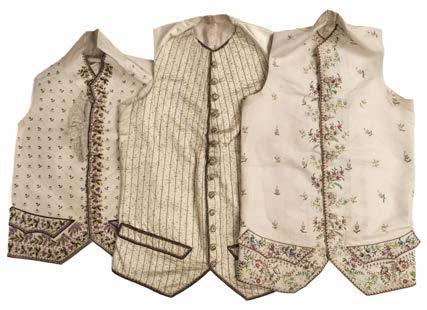
320* Clothing. A gentleman’s embroidered silk waistcoat, late 18th century, hand-stitched cream silk waistcoat finely embroidered to front panels in polychrome silk threads, using satin stitch, stem stitch, french knots, and chain stitch, with all-over large floral sprigs, and wide borders of flowers and leaves on sinuous stems, pocket flaps and 10 buttons embroidered to match, back of cream wool, some foxing (especially to back), underarms stained, edges of neck and underarms slightly fraying, lined with silk and linen (toned), chest 88 cm (34.5 ins), length 70 cm (27.5 ins), together with two other embroidered cream silk waistcoats similar: one with small sprigs overall, and trefoil and leaf border, worked in shades of green, burgundy, yellow, and brown, with 8 embroidered buttons and pocket flaps (for false pockets) to match, flaps becoming detached, later hand-made lace ruffle stitched to edge of left-hand side, a few stains, mainly to underarms, edges of neck and underarms slightly frayed, chest 86 cm (34 ins), length 57 cm (22.5 ins), and the other with chain stitch stripes of green silk thread flanked by cream silk thread, additionally stitched all over with tiny silver spangles in a lattice pattern (some missing), edges of front panels and pocket flaps embroidered with a border of metallic thread and green and pink chenille thread, buttons stitched with spangles and a flower to match, chest 97 cm (38 ins), length 74.5 cm (29.25 ins) (3) £300 - £500
£300 - £400
321* Clothing. A green and gold silk waistcoat, 18th century, hand-stitched waistcoat of gold and olive green narrow stripes, with matching buttons and pocket flaps, edges of front panels and flaps with green and metallised gold braid, olive green wool back (with some small areas of historic moth damage), lined with linen and cotton (slightly toned and marked), together with a striped yellow silk waistcoat, early 19th century, with later cloth tabs on back for tying, and:
A gentleman’s needlework waistcoat, mid 19th century, handstitched waistcoat, the front panels finely worked in polychrome wools in cross-stitch, with vertical lines of alternating floral and dotted flourishes, with slit pockets, back of brown twilled cotton, with laced half-belt, lined with beige twilled cotton annotated in contemporary ink ‘Edwd D. Nesfield Esqre Sept. 28/50’, lining lightly stained, but otherwise in very good condition overall, chest 100 cm (39 ins), length 54 cm (21.25 ins), plus a pair of hand-stitched short braces, worked in cross-stitch in coloured wools on canvas, backed with kid leather, and edged with cream silk ribbon (perishing), length 53.5 cm (21 ins) (5)
£200 - £300
322*
Clothing. A lady’s day dress, circa 1850s, hand-sewn lady’s gown of cotton patterned with wide and narrow stripes in a green and brown marbled effect, boned bodice with v-shaped neck, metal hook and eye fastenings at front (rusty, a couple missing), long flared sleeves, and gathered skirt with small train, rear with small shield-shaped lappet over 2 longer lappets, neck, sleeves and lappets embellished with black velvet ribbon and fringing, black velvet belt with bow to waist, and 3 bands of black velvet ribbon to skirt, lightly toned, bodice lined with twilled cotton, and the sleeves with fine linen (stained to underarms), hem doublelayered, the inner layer lined with gauze, bust 89 cm (35 ins), waist 72.5 cm (29 ins), sleeves 51 cm (20 ins), length at front 134.5 cm (53 ins), and at back 152 cm (60 ins), together with:
A day dress with gigot sleeves, circa 1890s, light brown shot silk gown with pattern of gold woven ovals, with gathered bodice, high buttoned neck with gold frill-edged collar (1 button missing and stitched loops broken), and very wide sleeves narrowing at cuff to terminate in a gold frill, metal hooks and eyes/stitched loops to front opening and waist (some missing), some small holes (mostly towards hem), stitching lost to left-hand shoulder seam, 6 cm closed tear to right-hand sleeve, lined with brown silk, together with a matching square collar, bust 79 cm (30.5 ins), waist 64 cm (25 ins), sleeves 73.5 cm (29 ins), length 137 cm (54 ins), and slightly longer at rear, plus 17 other ladies’ garments, mid 19th-early 20th century, comprising 9 gowns, 2 two-piece dresses, 5 bodices, 2 with gigot sleeves, 2 possibly of 18th century silk (though later construction), and a pink silk-lined wool cape with ruffle collar by W. Rowntree & Sons, Scarborough, various sizes and condition
Provenance: Private Collection, Derbyshire. (21)
323* Clothing. A pair of 18th century ladies’ riding boots, by Stone of Brighton, 1737, black leather, back of low heels with small square metal-lined aperture (presumably for attaching spurs), each boot with pair of woven cloth loop pulls inside, leather dry with some surface flaking, back of left boot with 20 cm vertical split from top edge, each boot with contemporary ink inscription inside ‘ Stone Maker To Their Majesties Brighton, 10.12.6. 1737’, height 26 cm (10.25 ins), width 6 cm (2.5 ins), length 23 cm (9 ins)
Provenance: Private Collection, Derbyshire.
£300 - £500
Rare pair of early ladies’ boots, with the maker’s name written inside each. A Mr Stone, shoemaker to His Royal Highness the Prince Regent, is documented as having a shop in East Street, Brighton, in 1819 (see History of Brighthelmston, by John Ackerson Erredge, 1862), and a Solomon Stone is listed as working out of 4 Gardner Street in Brighton in a 19th century Kelly’s Directory online, but we have been unable to trace the maker of these boots, who was most likely their forebear. (a pair)
£200 - £300
324* Clothing. A pair of ceremonial gauntlet gloves believed to belong to the King’s Champion, British, before 1728, hand-stitched buff leather gloves, some surface rubbing and several small holes, embellished with metalwork embroidery, comprising a large stylised palmette design emanating from each thumb, and 3 vertical lines of decoration in a similar style on the back of each glove, finely worked in bullion stitch incorporating spangles, each cuff with 11.5 cm (4.5 ins) wide gold metallised twisted fringe border incorporating ornate tassels (some losses, that to right glove partly detached), lined with cream silk (perishing at edges), initialled in sepia ink in an early hand just inside each cuff ‘G.B.’, length excluding fringing 32 cm (12.5 ins), width at cuff 17 cm (6.75 ins)
Provenance: Leeds Castle property and contents sale, 1925; Sotheby’s, Sale of the Contents of Sheffield Park, Sussex, March 8th, 1954; Private Collection, Derbyshire.
The Museum of Leathercraft in Northampton (to which we are indebted for help with our research) has a left-hand glove almost identical in style to this pair, which is identified as a King’s Champion glove, used during the coronation of King George IV in 1821. The Worshipful Company of Saddlers also has such a glove, which was used at the coronation of King George III in 1760. The Manor of Scrivelsby in Lincolnshire traditionally carries with it the hereditary title of the Grand Champion of England, a title dating back to William the Conqueror, and held by the Dymoke family since 1292. The Champion’s duty was performed at the coronation of each monarch: clad in full armour, carrying a gauntlet and attended by trumpeters, Serjeantsat-Arms, a Herald and the Lord High Constable, the King’s Champion rode into Westminster Hall to deliver a challenge against anybody who might gainsay the Sovereign. The Garter King of Arms read out the challenge three times, and on each reading the Champion threw down the gauntlet - first at the entrance to Westminster Hall, then in the middle of the Hall, and finally at the foot of the throne. Each time the gauntlet was recovered by the Garter. After the third challenge, there being no response, the undisputed monarch would toast the health of the Champion. Since the last such ceremony took place at the coronation of King George IV in 1821, and gauntlets exist for both his coronation, and his predecessor’s, our pair is believed to date from 1727 (the date of King George II’s coronation) or earlier.
(a pair)
£700 - £1,000
325* Clothing. A pair of gentleman’s shoes, European, mid 17th century, hand-stitched reversed grained leather, with blunt square toes, original latchet fasteners, carved wooden soles, and leathercovered high heels painted red, some minor rubbing and light dust-soiling, length 27 cm (10.75 ins), width 7.5 cm (3 ins), height 16 cm (6 ins), heel height 6 cm (2.5 ins)
Provenance: Private Collection, Derbyshire.
An extremely rare pair of 17th century gentleman’s shoes, surviving in extraordinary condition. Men’s shoes survive in far fewer numbers than women’s, meaning that a pair such as these is seldom seen outside of large collections and institutions (for a similar pair see The Met, accession number 1973.114.3a, b); in fact, we have been unable to trace anything similar sold at auction.
There are several clues to suggest that these shoes were owned by a personage of some consequence. Firstly, heels - not exclusive to women’s shoes as they most often are now - were worn by those who did not have to labour. The upper classes have always used impractical, uncomfortable and luxurious clothing to announce their privileged status. Heels were a hindrance for workers in the fields or people who had to walk any distance. Eventually, when the fashion of wearing heels did begin to infiltrate the lower ranks of society, the aristocracy responded by dramatically increasing the height of their shoes, so the higher the heels, the more important the wearer. Secondly, these shoes have leather-covered heels, rather than leather-stacked heels. The latter were more durable, and therefore more likely to be worn by soldiers, and others engaging in activity. Whilst leathercovered heels showed that the wearer was of high status, the addition of adding a layer of colour to the heels took the message to another level, as the dye used was expensive and associated with royalty and the upper echelons of society. Charles II’s 1661 coronation portrait by John Michael Wright (Royal Collection, Throne Room, Palace of Holyroodhouse), features him wearing a pair of enormous red heels. Unlike King Louis XIV, who also adopted heels, and was a diminuitive 5 ft 4 ins, King Charles didn’t need to add to his stature of over 6 ft. In 1771 Hyacinthe Rigaud painted a portrait of King Louis (Louvre Museum), in which his right foot is in profile to display prominently one of his red-painted heels. In the 1670s, Louis XIV issued an edict that only members of his court were allowed to wear red heels, although this didn’t prevent others from adopting the practice. (a pair)

£2,000 - £3,000
326*
Clothing. A pair of gentlemen’s slippers, probably Italian, early-mid 18th century, a pair of hand-made slippers of crimson velvet, with pointed toe and 2 cm heel, hand-embroidered overall with a meandering line in gold thread, soles and lining of leather, edges bound with fabric tape, some minor fraying to edges in places, heels trodden down and threadbare (the left one consequently split vertically), width 10 cm (4 ins), length 26 cm (10.25 ins)
Provenance: Private Collection, Derbyshire.
See: Museum of Fine Arts Boston for a similar pair, accession number 46.754a-b.
328* Clothing. A pair of wooden pattens, probably 18th century, hand-carved wooden overshoes, with small heel, pointed toe cap, and embossed leather strap riveted on underside of shoes (left clog with 2 rivets missing), leather rubbed and a little cracked, width 8 cm (3.25 ins), length 26 cm (10.25 ins)
Provenance: Private Collection, Derbyshire. (a pair)
£150 - £250
Slippers such as these would have been worn by a wealthy European gentleman, and as with other expensive clothing, were something of a status symbol. They likely would have completed an ensemble comprising a banyan (a type of loose coat or dressing gown), a matching waistcoat, and a cap or turban (with breeches borrowed from another outfit). Gentlemen received guests whilst attired in these, often luxurious, but informal, comfortable garments, as a mark of their intimacy with the visitor. By the 1780s gentlemen even ventured out of doors in this stylish costume. It is very rare for men’s footwear to survive, particularly slippers, which are inevitably less durable than a pair of boots for instance, added to which, women’s slippers were more likely to be kept for sentimental reasons. (a pair)
£200 - £400
327* Clothing. A pair of shoes belonging to Robert, 7th Lord Fairfax of Cameron (1707-1793), hand-stitched white kid leather, with front fastenings for buckle, blunt toe, leather soles, and red leather low heels, tongue of right shoe with label inside written in sepia ink in an early hand ‘Shoes of 7th Lord Fairfax’, soiled, length 27 cm (10.5 ins), width 9.5 cm (3.37 ins), heel height 2.5 cm (1 in)
Provenance: Robert, 7th Lord Fairfax of Cameron (1707-1793); Leeds Castle property and contents sale, 1925; Sotheby’s, Sale of the Contents of Sheffield Park, Sussex, March 8th, 1954; Private Collection, Derbyshire. Major Robert Fairfax served in the 1st Troop of Horse Guards. He was MP for Maidstone from 1740 to 1741 and from 1747 to 1754, and MP for Kent between 1754 and 1768. He was born and died at Leeds Castle, which he inherited from his mother Catherine, daughter of Thomas Culpeper, 2nd Baron Culpeper of Thoresway. (a pair)
£500 - £800
329* Clothing. A rare blue sprang sash, probably Hungarian or Turkish, circa 1620, long sash of blue fine silk, worked in the sprang technique, probably with a circular warp, with a number of different repeated horizontal patterns, including stylised cockerels, ships, women wearing high-waisted dresses, and men wearing hats and wide breeches with arms akimbo, short ends with 28 cm (11 ins) long twisted fringe, some very minor light discolouration in places, several small holes or splits (largest 3 cm long), width (when not stretched) 38 cm (15 ins), length (excluding fringe) 4.11 metres (13.5 foot)
Provenance: By descent through the Enys Family of Penryn, Cornwall, at least until the time of exhibition (see below).
A remarkable survival, in very good condition, this sash was exhibited, along with a red one similar, under the title ‘The Enys Family Sashes’ at a Civil War Exhibition at the Royal Cornwall Museum in 1992/3 (lent by the Trustees of the Enys estate, by permission of Professor Gordon Leonard Rogers who inherited the estate in 1980). Eminent clothing historian Janet Arnold (19321998) examined the sashes at that time, and dated the blue one to circa 1620. The V&A has a similar, though later, sprang sash in the more commonly found red hue (accession number T.193-1957).
Enys family tradition was that both sashes had been worn by family members during the English Civil War, although there is no documentary evidence for this. Such sashes were indeed worn by senior military officers, and were known to have had a practical as well as a decorative purpose; such is their tensile strength (silk being five times stronger than steel) and ability to stretch laterally (due to the sprang technique), that they were used as stretchers to carry wounded men off the battlefield. A sprang sash of circa 1709 in the collection at George Washington’s Mount Vernon (object number W-86) was apparently used to transport the fatally wounded Major General Edward Braddock during the Battle of the Monongahela in 1755 (he managed to present his sash to George Washington, his aide-de-camp, before expiring four days later).
After the Royal Cornwall Museum exhibition two of the curators there wrote an article for the museum’s biannual newsletter (RIC Newsletter 13, April 1993: full text available), in which the Enys sashes are compared to early 17th century sprang sash fragments in the National Museum of Hungary. The article concludes that it is highly probable that the blue sash is early 17th century and Hungarian in origin, although it has also been suggested by other scholars that the fragments came from Istanbul. George Rákóczi, Prince of Transylvania (1593-1648) ordered sprang sashes from the Turkish capital several times, where it seems from extant correspondence that such sashes were hard to come by, only one aged woman being proficient in the technique (see The Influence of Ottoman Turkish Textiles and Costume in Eastern Europe with particular reference to Hungary, by Veronika Gervers, Royal Ontario Museum, 1982). By whose hand this blue sash and its red companion were made, and how they came to be in the possession of the Enys family, is lost in the mists of time, but their worth was clearly known by the family, who passed them down the generations until the end of the 20th century when financial decisions had to be taken to ensure the survival of the estate.
(1)
330* Clothing. A rare pair of sleeve plumpers, circa 1830, two sleeve puffs of fine cotton lawn, filled with swansdown, with flap to sit on shoulders, and ties to attach to a corset, lightly stained and marked, 1 or 2 small holes and mends, each approximately 23 x 30.5 cm (9 x 12 ins)
See the V&A: accession number T.212-1917 (one sleeve puff only).
Sleeve plumpers rarely come onto the market, and are seldom found in institutions; we have been able to find only two other occasions when they have appeared at auction, in 2007 and in 2018, and even the V&A holds only a single puff and not a pair.
Sleeves began to widen to an exaggerated form during the second half of the 1820s, reaching their zinith around 1836, after which they began to decrease in size again. For full effect these capacious sleeves were kept in place with wire or cane structures or sleeve plumpers which were filled with either wool or swansdown. Often such structures would be sewn into gowns, others were designed to attach to a corset’s shoulder straps by means of cotton ties. In the 1830s these straps were oriented at a 45degree angle from the body, and sometimes even more obliquely, therefore puffs attached to them did not disrupt the line of the shoulder. Instead, they were poised somewhat precariously on the upper arm, with the sleeve’s outline simply continued in a descending line from the shoulder. It wasn’t until the 1890s, when sleeves ballooned again, that puffed sleeves rose vertically above the shoulder. In the late 1820s and early 1830s there were many engraved caricatures produced, satirising the ridiculous proportions of ladies’ sleeves and exaggerating them to even greater absurdity.
(a pair)
£1,000 - £1,500
£500 - £800
331 Clothing. A Regency muslin dress, circa 1805, hand-stitched white muslin fall-front gown, with red printed pattern of stylised foliate sprigs, short sleeves terminating in tucks, eyelets for lacing at front and back (lacing not extant), and train to rear (with some light discolouration), bodice lined with linen, a number of tears, holes, and darns, bust 78 cm (30.5 ins), sleeves 27.5 cm (10.75 ins), length at front 142 cm (56 ins), and at back 170 cm (67 ins)
Provenance: Private Collection, Derbyshire.
(1)
£200 - £400

332* Clothing. A silk christening gown, Steinmann & Co., Piccadilly, London, circa 1900, hand and machine-stitched cream silk baby gown, with tucked bodice, and elbow-length sleeves with deep turned-back scallop-edged cuffs, heavily ornamented all over with cream fringed and tasselled braid, lace edging to round neck, rear opening (with silk ribbon ties), sleeves, and hem, silk beginning to perish in places (notably to bodice), a few small marks, lined with ivory silk (that to bodice lightly stained), waist 42 cm (16.5 ins), sleeves 16 cm (6.25 ins), length 91 cm (25.75 ins), contained in purple paper-covered cardboard box (broken, with some losses), with printed label (foxed) on pull-off lid ‘Embroideries, Laces, Trousseaux and Layettes, Steinmann & Co., 185, 186, Piccadilly, London’ Steinmann & Company in Piccadilly was a famous and old established London firm specialising in wedding attire, lingerie, baby linen, and antique lace. Only producing the finest quality garments, Steinmann was an establishment frequented by the wealthy. (1) £100 - £150

333* Clothing. A silk taffeta two-piece gown, circa 1865, blackchequered emerald green silk, with machine and hand-stitching, comprising a long-sleeved boned bodice with round neck, embellished with black velvet ribbon and machine lace in a v-shape to each side terminating in a V on rear of bodice, and black velvet bows to shaped sleeves, concealed metal hooks and stitched loops to front opening, 3 buttons to back of waistband for attaching to buttonholes on skirt waistband, linen lining with a few marks and stained to underarms, chest 76 cm (30 ins), waist 62 cm (24 ins), sleeves 53 cm (21 ins), and a gathered skirt with train made up of 11 sections, with watch pocket at waistband and large pocket in side, occasional small holes and marks, small L-shaped tear near side opening (crudely stitch-repaired), lime green wool dust gatherer to hem (with some historic moth damage), linen lining with some staining, waist 64 cm (24.5 ins), length at front 118 cm (46.5 ins), and at back 141 cm (55.5 ins)
Provenance: From the collection of the late Mrs June Jeffreys (1928-2016), of Newhouse, Redlynch, near Salisbury, Wiltshire.
The fact that this gown has machine stitching suggests that it was made by a professional dressmaker, as sewing machines were still too expensive at this period to be found in ordinary domestic settings.
(2)
£200 - £300

334* Clothing. A two-piece satin wedding gown, circa 1840s, a hand-stitched cream heavy satin two-piece wedding dress, the boned bodice with deep v-shaped waist, and metal hook and loop fastening at rear with eyelets for lacing (not extant), boat neck and puffed seeves trimmed with hand-made lace, bust 71 cm (28 ins), overall length 48 cm (19 ins), the matching pleated skirt with short train, lined with calico (one portion replaced with cotton fabric, and machine-stitched), some minor small marks and foxing in places, waist 56 cm (22 ins), length at front 109 cm (43 ins), and at the back 123 cm (48.5 ins), together with other ladies’ wedding attire, comprising: a 1930s wedding trouseau consisting of a long cream satin sleeveless wedding dress with short train, some overall discolouration, a cream silk belt with faux diamond and pearl clasp (some stones missing), a cream silk petticoat, a cream silk skirt with gold sequin border to hem (worn), a net veil (scattered holes), a pair of cream silk beaded shoes lined with pink satin (some beads missing), a faux flower and pearl chaplet, and a cream satin clutch bag with faux pearl clasp (some pearls detached, yellow metal frame tarnished with verdigris), all contained in a cardboard box lettered on lid ‘G.S. Nicol Ltd., Glasgow’, broken; a two-piece cream satin gown, circa 1890, heavily embellished with lace and faux pearls, sequins, and ruffles, some wear and marks; and 3 small boxes containing other wedding accoutrements, e.g. veils and head-pieces, various condition and sizes
Provenance: Private Collection, Derbyshire. (15) £300 - £500
335* Clothing. A two-piece walking or croquet dress, circa 1860, white twilled cotton two-piece, machine-stitched, comprising a fitted jacket with 1.5 cm standing collar and flared waist, long sleeves with flared cuffs, and caps to shoulders, and concealed metal hooks and stitched loop closure to front, edges with looped zig-zag pattern border hand-stitched in brown wool using chain stitch, bust 80 cm (31.5 ins), sleeves 55 cm (21.5 ins), length 56 cm (22 ins), and a matching full gathered skirt with 3 frills to hem similarly embroidered with zig-zag pattern (some loss of threadwork), metal hook and eye fastening to waistband, pocket in side, inside of skirt with loops, ties, and 3 covered buttons, each hanging from a strip of fabric tape at the waist, closed L-shaped tear at top of skirt near waistband (5 cm x 5 cm) crudely repaired with stitching, waist 68 cm (27 ins), length 116 cm (45.75 ins)
Provenance: From the collection of the late Mrs June Jeffreys (1928-2016), of Newhouse, Redlynch, near Salisbury, Wiltshire. Machine stitched, apart from the embroidery, and therefore almost certainly made by a professional dressmaker, as sewing machines were still too expensive at this period to be found in the average home.
An unusual two-piece from the 1860s, with buttons, loops and tapes inside the skirt allowing it to be pulled up in order to gain greater freedom of movement; most likely made for playing croquet, a game which became very popular in the 1860s.
(2)
£300 - £400
336* Clothing. A Victorian General Officer’s Uniform, comprising: a scarlet melton cloth tunic with black facings and heavy bullion embroidered collar, cuffs, and shoulder cords, general officers silvered buttons by Jennens & Co, London, to the breast, epaulettes, and tail, historic moth damage, chest 80 cm (31.5 ins), inner arm of sleeves 49.5 cm (19.5 ins), length 81 cm (32 ins); black cloth trousers with silver oak leaf braiding, waist 102 cm (40 ins), length 118 cm (46.5 ins); and sword belt with bi-metal V.R. belt plate, manuscript label in the owner’s hand pertaining to provenance attached, general wear commensurate with age Provenance: Josslyn Francis Pennington, 5th Baron Muncaster (1834-1917); Private Collection, Derbyshire (purchased from the Penningtons at Ardverikie Castle).
(1)
337* Clothing. An Egyptian-style Assuit blouse, circa 1920s, cream net woven with hammered white metal pieces forming geometric vertical bands, with short ruched sleeves, and shallow v-neck, the shoulders and centre of front elaborately beaded with silvercoloured seed beads, cream bugle beads, glass beads, and faux pearls, occasional loss of beads, bust 112 cm (44 ins), sleeves 13 cm (5 ins), length 57 cm (22.5 ins), together with a black Assuit shawl woven with yellow metal pieces, sometime crudely made into an overdress (some edges raw and slightly fraying)
(2)
£200 - £300
£100 - £150
338* Clothing. An Egyptian-style Assuit dress, circa 1920s, sleeveless black net dress woven with hammered white metal pieces forming diamond patterns, lined with turquoise silk (some small stains and perishing around armholes, with a few stitched repairs), bust 132 cm (52 ins), length 129 cm (50.75 ins), together with a black Assuit shawl woven with yellow metal pieces forming geometric horizontal and diagonal bands depicting figures, camels, and other motifs, some scattered small holes and repairs, 88 x 247.5 cm (34.5 x 97.5 ins)
(2)
£200 - £300
Lot 337



339* Clothing. An embroidered jacket, possibly North African/Ottoman, early 20th century, hand-stitched jacket of gold brocade, with woven pattern of botehs and other motifs in cream and gold metallised threads, heavily embroidered with couched gold metallised threads and silk threads in orange, green, and blue, the front with 2 large wreaths enclosing roundels above 3 smaller roundels on each side, the edges of the jacket (including standing collar and ends of the short sleeves) with a wide matching border, cream silk moiré lining (slightly discoloured to neck), bust 92 cm (36 ins), sleeves, 20 cm (8 ins), length 48.5 cm (19 ins), together with two quilted jackets, also early 20th century, one a bolero in pale pink satin, chest 88 cm (34.5 ins), sleeves 61 cm (24 ins), length 47.5 cm (18.75 ins), the other of apricot silk woven with an oriental pattern, scalloped edges, including to collar, silk perishing on sleeves, bust 96 cm (37.75 ins), sleeves 62 cm (24.5 ins), length 66 cm (26 ins)
A striking jacket, in excellent, wearable condition. (3)
£150 - £250
340* Clothing. Ceremonial uniform in tin trunk belonging to E.J. Boothby, 1911, consisting of: a black wool tailcoat, with standing collar, decorative pocket flaps, and cuffs all decorated with heavy goldwork embroidery embellished with spangles, 9 armorial buttons to front, 2 matching to rear (with further goldwork motif between) and another 2 to end of tails, a few superficial small holes, lined with black silk, starched linen protective collar buttoned to nape, and stitched manuscript label ‘E.J. Boothby. Esqr 28.3.11’, chest 96 cm (38 ins), sleeves 69 cm (27.25 ins), length 106 cm (41.74 ins); a pair of black wool trousers, with metallised gold braid down each leg, some scattered small holes and marks, waist 76 cm (30 ins), length 118 cm (46.5 ins); a pair of cream wool knee breeches, with 3 self buttons and an embossed yellow metal buckle at each knee, some small scattered holes, waist 82 cm (32 ins), length 83 cm (32.75 ins); a black beaver cocked hat by F. P. Scholte, 7 Savile Row, embellished with black silk moiré ribbon and interwoven metallised gold braid with armorial button, edged with black ostrich feathers, lined with black silk, with maker’s gold stamp inside, height 23 cm (9 ins), length 52 cm (20.5 ins); a pair of black leather calf-length boots by N. Tuczek, 15B Clifford Street, Bond Street, with maker’s name etched on leather soles, and stamped in gold on red leather lining to top of boots, height 35 cm (13.75 ins), length 30 cm (11.75 ins); and 2 holsters and 3 pairs of stockings, all contained in a black metal trunk, with brass plaque on lid (left blank)
Provenance: Private Collection, Derbyshire.
Almost certainly purchased for the coronation of King George V and Queeen Mary, which took place at Westminster Abbey on 22nd June 1911. Frederick Scholte, known for his perfectionism and attention to detail, was one of the most influential tailors of the 20th century. He dressed many of the rich and famous, notably the Duke of Windsor. Scholte’s apprentice, Peter Gustav Anderson, founded Anderson & Sheppard, which dresses King Charles.
Renowned British shoemaker Nikolaus Tuczek was born to a family of Austro-Hungarian immigrants. Such was his masterful skill that he became cordwainer to the privileged; Winston Churchill was one of his many wellknown customers, even purchasing his monogrammed velvet slippers there. Tuczek’s legacy continues: George Cleverley started his career with Tuczek in 1920 and worked there for 38 years before opening his own workshop, which was taken over by John Lobb in 1970, a company which still exists today.
(1)
£400 - £600
341* Clothing. Shoes and a tricorn hat belonging to Charles Wykeham Martin of Leeds (1801-1870), hand-stitched black grained leather shoes, rubbed (with some surface flaking), with front fastenings for buckle (versos bearing the name ‘Martin C W Esqr’ in contemporary ink), cream silk lining (perishing), leather soles, and red leather low heels, length 28.5 cm (11.25 ins), width 8 cm (3 ins), heel height 3 cm (1.25 ins); and a black beaver tricorn hat, made by Moore & Co. Late Bicknells & Moore, Old Bond Street, London, with maker’s name to cream silk lining, embellished with gold metallised trim and soutache braid with button, worn, with crown torn, loss of white ostrich feather to brim, and large brown ostrich feather detached, 33.5 x 39 cm (13.25 x 15.25 ins), together with a note written in sepia ink in an early hand ‘Shoes & Hat worn by Charles Wykeham Martin Esqr M.P. at Queen Victoria’s Fancy Ball 1845’

Provenance: Leeds Castle property and contents sale, 1925; Sotheby’s, Sale of the Contents of Sheffield Park, Sussex, March 8th, 1954; Private Collection, Derbyshire.
Worn by Charles Wykeham Martin to the second of three fancy dress balls held by Queen Victoria and Prince Albert at Buckingham Palace. At the first, on 12th May 1842, the Queen and her Consort appeared as King Edward III and Queen Philippa of Hainault; at the second, on 6th June 1845, the attendees were invited to wear early Georgian dress; and the third, on 13th June 1851, was in the style of the Restoration. (a pair)
£200 - £300
342* Crichton-Stuart (John Patrick, 3rd Marquis of Bute, 18471900). Court dress in tin trunk, comprising: a black wool tailcoat by Meyer & Mortimer, 36 Conduit Street, London, with their printed label at nape annotated in contemporary manuscript ‘Marquess of Bute’, 6 self buttons to front, 3 to each cuff, and 2 to reverse, black braid to front, cuffs, and ornamental pocket flaps, black silk rosette to reverse of neck, and ribbon bows to shoulders, black silk lining; black wool breeches, knees with self buttons, buckles, and black grosgrain ribbon bows, a few tiny holes in rear; a black silk bicorn hat by Meyer & Mortimer, embellished with interwoven black braid, and grosgrain ribbon with matching button, black silk lining, with maker’s name in gilt, some light spotting to crown; a black wool and silk waistcoat by Meyer & Mortimer, with their label to verso of rear belt annotated in contemporary manuscript ‘Marquess of Bute’, with pockets, and 5 self buttons, lined with ivory silk; a long white cotton shirt by Thresher & Glenny Outfitters, 152 Strand, London, with their oval printed label at nape, cuffs with lace frill, a ‘B’ surmounted by a coronet embroidered in red cross-stitch to right side of front, foxed in places; 5 silk bow ties; and 3 pairs of silk stockings, one pair with ‘B’ surmounted by a coronet embroidered in pink thread, generally in good condition, various sizes, all contained in a large black metal trunk, with engraved brass plaque lettered ‘Marquess of Bute’ below the badge of H. Poole & Co., Army & Navy Tailors, 52 Saville[sic] Row, and 4 Old Burlington St, London, height 12 cm (4.75 ins), length 104 cm (41 ins), depth 32 cm (12.75 ins)
Provenance: Private Collection, Derbyshire.
John Patrick Crichton-Stuart acceded to the title 3rd Marquess of Bute at the tender age of six months, whereupon it was said that his inheritance made him the richest person in the world. He became an industrial magnate, antiquarian, scholar, philanthropist and architectural patron. His collaboration with architect William Burges led to the creation of two of the finest examples of late Victorian Gothic Revival architecture, Cardiff Castle and Castell Coch. When he died at the age of 53 his heart was buried on the Mount of Olives in Jerusalem. He was a Knight Grand Cross of the Holy Sepulchre, Knight of the Order of Saint Gregory the Great and Hereditary Keeper of Rothesay Castle.
343* Embroidered Panel. An Arts & Crafts ecclesiastical panel, circa 1870s, expertly worked in polychrome silk threads, using long and short stitch, couching, and french knots, on a pink-purple velvet ground, with a central quatrefoil enclosing a half-length portrait of St Michael, titled to left, with lilies at outer corners, to each side a fire-breathing dragon encircling a cross, flanked by flame-bladed swords surmounted by a crown, ground beginning to perish in places, backed with linen, and with remains of terracotta silk lining, hem stitching unpicked, 24 x 193 cm (9.5 x 76 ins), together with: a large brocade tablecloth, late 18th/early 19th century, fraying overall, with some losses, edged with metallised fringing; 2 embroidered pelmets and 2 appliquéd pelmets, Victorian; a square panel with heavily embossed metalwork embroidery on a velvet ground, depicting a coat of arms, probably Spanish, 19th century, worn; and a collection of curtain ties, 19th & early 20th century, comprising a quantity of tasseled ties, including 7 pairs, 2 sets of 6, a set of 3, and several single ties, and some twisted cord ties, including a set of 4, some wear and losses, various sizes
Provenance: Private Collection, Derbyshire.
Probably made to adorn an altar, the panel takes Revelation chapter 12 for its themes of St Michael and the dragon.
According to the current owner, the second item (large brocade tablecloth) was acquired by a Captain Barwell during the Napoleonic Wars in Spain. (2 cartons)
£200 - £400
Prestigious bespoke tailors Meyer & Mortimer, Thresher & Glenny, and Henry Poole are all still in operation today. (1)
£700 - £1,000



344* Embroidered Panel. Scenes from the Life of Christ, probably Swiss or South German, early 17th century, needlework panel finely worked in silk and wool threads, in shades of pink, blue, green, brown, and yellow, using tent stitch and cross-stitch, on a canvas ground, comprising 6 interior and exterior scenes each within a yellow line border: the Samaritan woman at the well; Jesus at the home of Mary and Martha; two blind men receiving sight; Peter walking on the water with Jesus; the faith of the Canaanite woman; and the feeding of the 5000, each scene approximately 20.5 x 25.5 cm (8 x 10 ins) and set within a border comprising a large stylised flowering stem rising up from an urn between each scene, and meandering stems of fruit and flowers above and below, incorporating animals and birds, including hounds and deer, the whole enclosed in an outer line border of predominantly yellow thread, scattered small holes and threadbare areas (some later infills and repairs), 20th century linen backing (with neatly-sewn patch to left-hand edge), overall size 36.5 x 216 cm (14.25 x 85 ins)
An impressive early needlework panel, well-preserved with the colours still bright. For similar pieces see The Met: Border with Scenes from the Life of Christ, Southern German, 1627, accession number 06.1199.1; and Noli Me Tangere, Swiss, St. Gallen, 1569, accession number 64.101.1402. (1)
£4,000 - £6,000
345* Embroidered Picture. A miniature oval picture of a beggar, circa 1790, his arm outstretched begging to a family by a cottage, the background with trees and a country house, hand-worked in coloured silks on a cream silk ground, using long and short stitch, and stumpwork, the faces and limbs finely delineated in ink, 8 x 9.5 cm (3 x 3.75 ins), period glazed gilt oval frame with hanging loop (11 x 13.5 cm)
(1)
£100 - £150
346* Embroidered Picture. A woolwork embroidery of a child picking flowers, circa 1810, worked in coloured wools on silk, in shades of blue, brown, green, and red, using long and short stitch, seed stitch, and stumpwork, depicting a small girl with a basket on her arm, picking flowers on a bank beneath a tree, her face and hair carefully delineated in sepia pen, ink, and watercolour, sky (with losses to silk ground) painted with watercolour, split in silk to face and arm, 37 x 30 cm (14.5 x 11.75 ins), framed and glazed (41 x 34 cm), together with 2 other framed and glazed textiles: a portion of pieced handembroidered linen, late 18th/early 19th century, worked with flower sprigs enclosed in lattice fronds, browned, 46 x 57.5 cm (18 x 22.5 ins); and a linen napkin with elaborate drawn threadwork pattern of a large quatrefoil enclosing hearts, 36 x 35 cm (14.25 x 14 ins) (3) £100 - £200

347* Embroidered Picture. Princess Iseult with the shield of Sir Tristram of Lyonesse, after Harry Theaker (1873-1954), circa 1925, appliqué and embroidered picture, worked in coloured silk threads, using stem stitch, latticework, satin stitch, and long and short stitch, incorporating couched gold metallic threads, depicting an Arthurian maiden with long hair and flowing robes, standing on the steps of a castle, holding a shield on which are 3 rampant lions, 2 birds in flight to her right, some scattered light foxing and marks, 80 x 57.5 cm (31.5 x 22.5 ins), glazed period oak frame (92 x 67 cm)
A well-executed needlework picture after Harry George Theaker’s illustration ‘The Princess Iseult with the shield of Sir Tristram of Lyonesse’, which appeared in Stories of King Arthur, retold by Blanche Winder, published by Ward, Lock & Co. in 1925. (1)
£150 - £200
348 Fabric. A small collection of early fragments, 16th-17th century & later, 13 pieces of voided velvet, brocade, and damask, variously patterned, in a variety of colours and shapes, some incorporating metallic threads, some pieces matching, including a 16th or early 17th century sleeve of pieced voided velvet (dark red on a gold ground) from a doublet or jacket, worn, a few pieces with labels attached (one stating ‘from John Fowler’s Collection’), various condition, smallest 14 x 10 cm (5.5 x 4 ins), largest 102 x 63.5 cm (40 x 25 ins), together with a length of early metallised tassel trim, 4.5 x 105 cm (1.75 x 41.25 ins) (15)
£300 - £500
349 Fabric. A small collection of early fragments, 18th-19th century, 13 pieces of brocade or damask, with various floral patterns, in a variety of colours and shapes, the smallest incorporating gold metallic threads, 2 pieces matching (one stitch-mounted to a linen backing), most with old paper labels attached (mainly in French) and with old numeral ink stamps at edge, largest (a piece of pale blue and cream damask with flower urns) faded, and a couple of other pieces with splits (one with a few marks), but mostly in good condition, smallest 69 x 8 cm (27.25 x 3.25 ins), largest 50 x 53.5 cm (27 x 21 ins) (13)
£300 - £500
350* Figurine. A clothed articulated male mannequin, probably Continental, late 18th century, carved wooden figure with limbs articulated at shoulders, elbows, and knees, head with carved hair and sculpted features fixed half-profile to right, mounted on a painted wooden plinth, right arm detached, 2 fingers on left hand truncated, surface losses to paintwork on face, a few worm holes in feet, the figure dressed in contemporary attire consisting of a linen shirt with ruffle of hand-made lace, brown velvet knee breeches and cream velvet chaps, a yellow silk waistcoat with pocket flaps and 4 buttons, edged with purple silk, and a black damask double-breasted frock coat with 4 buttons to each side, lined with striped floral brocade, and edged with cerise thread, clothing somewhat dusty and worn, height 40 cm (15.75 ins)
Provenance: Private Collection, Derbyshire.
A most unusual survival, the purpose of which we have been unable to establish. It could have been used in a shop display, or as a travelling salesman’s prop, although perhaps more likely, given the stance and gesture of the figure, it could have been one of a number of figures in a tableau telling a story or portraying a scene. The National Trust property of Snowshill Manor in Gloucestershire has a mannequin not dissimilar (NT 1339162).
(1) £200 - £400

351 Greece. A collection of Greek island embroidered items, 18th-19th century, comprising: a blouse-front and pair of sleeves similar, both of fine self embroidery on handspun cream cloth, Mitylene, late 18th/early 19th century, one sleeve with pencilled label attached ‘Ex Walford Collection’, 1 x 1 cm area of slight fraying to left-hand side of blousefront, blouse 47 x 39.5 cm (18.5 x 15.5 ins), sleeves 33 x 18 cm (13 x 7 ins); a chasuble of Cretan embroidery, with all-over geometric pattern, hand-worked in blue, green, orange, red, and beige silk threads, and metallised thread, incorporating borders of metallised gold ribbon (that to outer edges removed and seams partially unpicked), on a beige linen ground, some losses, lined with pale pink linen stamped in ink ‘50’ (faded, a few holes and marks), 95 x 63 cm (37.5 x 24.75 ins); and other items related: a white cotton underdress with fine selfembroidery, Mitylene, some stains and historic pest damage; a wide-sleeved wedding blouse from Piestany, Slovakia, ornately stitched with orange eyelet and metalwork embroidery, woven label stitched inside neck ‘Salter Collection’, some small brown marks, underarms stained; a panel composed of two joined sleeve ends richly embroidered with camels; and some Turkish towels, borders, and other fragments, various condition and sizes (26)
£200 - £300

352 Handkerchief. Carte de la France et de ses Colonies, Rouen: Manufacture de E. Renault (fl. 1860-1890), printed in red and black on fine cream linen, with a large map of France, flanked by a number of smaller maps, titled upper right corner, and with text to lower margin: ‘Bureaux de Recruitement’; ‘Répartition et Emplacement’; and ‘Troupes de L’Armée Français’, foliate border, selvedges to sides, top and bottom edges machine-stitched, lightly toned, a few small holes (towards edge) and fox spots, 68 x 81 cm (26.75 x 32 ins), together with: Draughts, the Favourite Game of Our Soldiers in the Trenches and Our Sailors on the Sea, circa 1914, printed in brown and blue on cream twilled cotton, depicting a chequerboard against a background of army and navy scenes, within a border of draught pieces incorporating a vignette of a soldier on one side and a sailor on the other, a few fox spots, very small hole in lower left corner, 49 x 62.5 cm (19.25 x 24.5 ins), plus The Military Map of Aldershot and Surrounding Country, London & Aldershot: Gale & Polden, 1895, printed in black on fine linen, partially toned, and 4 British wartime escape maps printed on silk
For a similar handkerchief by E. Renault see: The Met, accession number: 1989.246.15.
This unusual handkerchief is in the same format as a series of thirteen ‘Mouchoirs Militaire D’Instructions’ patented by the commandant of the Rouen garrison, Pierre Perrinon, in 1875, and produced by E. Renault. Presumably the handkerchiefs were a useful tool for instruction in the period following France’s defeat in the Franco-Prussian War, when widespread conscription was re-introduced, providing as they did information about drill, kit, weapons handling, first aid for the wounded and other essential military topics in a durable and convenient format. Our map does not seem to be part of the numbered series, but also bears the name of manufacturer E. Renault, and details the structure of the French army beneath the map.
For the second item see: Imperial War Museum, catalogue number EPH 2594.
(7)
353* Handkerchief. The Royal Chain or Family Link, 1850s, cotton handkerchief printed in black on a red ground, with portrait medallions of Queen Victoria, Prince Albert, and 8 of their children, with explanatory text, crown motifs between, and a border of interlocking laurel wreaths encircling floral sprigs, selvedges to sides, top and bottom edges raw (and slightly frayed), some foxing, several small marginal holes, 69 x 76.5 cm (27.25 x 30.25 ins), together with 6 identical handkerchiefs commemorating Queen Victoria’s 60th Jubilee, printed with the Union Jack to upper left and an oval portrait of the Queen to lower right, some light marks, but generally in good condition, each approximately 53.5 x 63.5 cm (21 x 25 ins)
A rare commemorative handkerchief printed before Queen Victoria had her ninth and final child, Princess Beatrice, in 1857.
(7)
£200 - £400
£100 - £200
354* Hats. A collection of hats and bonnets, early 19th-20th century, 27 women’s and gentlemen’s hats, including: a ‘two hellos’ straw bonnet from Auvergne, France, with brim shaped under at the sides, and curled up at both front and back, trimmed with black velvet ribbon and blue cotton, and embellished with woven straw appliqués (broken in a few places, with some small losses), lined with blue cotton, 15 x 29.5 cm (6 x 11.5 ins); a straw coal scuttle bonnet, 21.5 x 25.5 cm (8.5 x 10 ins); and 3 gentlemen’s hats made by: Renaud, 2, Place de Marché; Robert Heath, 25, St. George’s Place, Hyde Park Corner; and J. Wippell and Co. Ltd., Exeter, various condition and sizes
Provenance: Private Collection, Derbyshire. (27)
£200 - £300
355* Huari. Pre-Columbian textile fragment, Peru, embroidered in polychrome threads on a canvas ground, depicting geometrical symbols, slightly faded and worn in places (losses consolidated with fabric), dimensions of largest extremities 43 x 33 cm (17 x 13 ins), carefully stitch-mounted onto cream cotton stapled to a wooden stretcher (53 x 44 cm), together with an Ikat, woven in pink and yellow, some light marks and stitched repairs where slightly frayed, 105.5 x 90.5 cm (41.5 x 35.75 ins), mounted on yellow fabric backed with cream fleece (127 x 113 cm) (2)
£200 - £300
356* Lace bobbins. A large collection of lace-making bobbins, 19th-20th century, together 300+ hand-carved or turned bobbins, comprising approximately 66 bone, 30 brass, 13 blown glass, and 228 wood, including red or green stained, wire-wrapped, handpainted, pierced, coloured dots and bands, incised and applied ornamentation (including Bedfordshire tigers, leopards, and butterflies), many with spangles, one with a peach stone, others with buttons and large beads, a number of beads detached, some inscribed with lettering, including: Sarah, Betsy, Anna Lane and James [Purrens?], Susan, George, Elizabeth Ann Arnsby Lilley, R E 1838, length 11.5 cm (4.5 ins) and shorter (300+)
£200 - £300
357* Lace. A cloth of needlepoint lace, Italy, circa 1700, chequerboard cloth of linen needle lace, composed of large and smaller squares alternating between plain linen rectangles, scattered small holes (a few areas with period darns), breaks in lace (with occasional small losses), and faint marks, neatly handstitched chevron edge, 137 x 135 cm (54 x 52.75 ins), together with a sepia photograph, circa 1920s, showing the cloth being used as a curtain, and a single sheet of typed provenance, signed by D.B. Grether and dated November 1979
Provenance: Purchased by Bendicht Hofstetter (died 1816); given to his son, Johannes Hofstetter (1794-1864); then to his son, Hans Hofstetter (18311903); then to his son, Ernst Wilhelm August Hofstetter (1876-1962); then to his daughter, Dory Grether-Hofstetter (born 1910); purchased by Peter J. Meyer; Private Collection, Derbyshire.
A rare survival, thought to have been originally intended for use on a dressing table, but later used as a curtain, as can be seen from the accompanying photograph. (1)
£400 - £600
Lot 356
358* Lace. A polychrome embroidered cutwork border, probably Italian, 17th century, white linen, with arabesque decoration incorporating flowers and leaves, the cut edges embroidered in buttonhole stitch with green, pink, yellow, and cream silk threads, over gold metallised thread forming picots, 12 x 27.5 cm (4.75 x 10.75 ins), together with a portion of early metalwork embroidery on fine linen edged with metallic lace, probably part of a collar, 6 x 25 cm (2.25 x 9.75 ins), plus a small quantity of assorted lace, machine and hand-made, including lengths, collars, modesty panels, appliqués, etc.
(a small carton)
£100 - £150

359* Lace. A substantial collection of British and Continental lace, 18th-early 20th century, a large and varied collection of lace, both hand and machine-made, mostly white and cream, but also some black lace and one or two pieces of coloured lace, including handkerchiefs, collars, veils, modesty panels, sleeves and cuffs, lengths and wide flounces, shawls and tippets, mats and doilies, etc., e.g. a fine cotton lawn collar edged with Mechlin lace, a short train and matching pair of sleeves embellished all over with faux pearls, 6 lengths of wide canvas lace with blue or green fabric appliqués, a scalloped pelmet of net needlelace and embroidered cream satin appliqués, and a silk-lined reticule, many pieces pinned to tissue paper, together with some embroidered fragments, mostly whitework, including a tambourwork muslin apron, with scattered small sprigs and larger baskets of catkins, labelled ‘Apron worked by Margaret Manning at School. Mother of Harriet Jermyn’, various condition and sizes
Provenance: The collection of a lady who collected in the 1950s and 1960s. (3 cartons)
£700 - £1,000
360* Lace. Brussels lace veil, and bonnet veil, belonging to Eugénie de Montijo (1826-1920, Empress of the French), cream lace veil of Brussels needle lace, with overall pattern of small leaves, and wide border of large floral sprigs, with scalloped edges, together with a bonnet veil of appliqué and needle lace, both hand-worked on machine net, each bearing a label ink stamped in gilt with the Empress’s cypher ‘E’ surmounted by a crown, mounted together in a wooden glass case (53 x 68 cm/20.75 x 26.75 ins), unexamined out of the case
Provenance: Private Collection, Derbyshire.
Eugénie de Montijo married Napoleon III on 30th January 1853, and was Empress until her husband was overthrown on 4th September 1870. From 28th July to 4th September 1870, she was the de facto head of state of France. This item would have been among the Empress’s vast collection of lace which was sold at auction when she died.
(1)
£200 - £300
Lot 359
361* Piper (John, 1903-1992). Aldeburgh Scarf, screen-printed silk scarf, depicting Snape Maltings Concert Hall in white on an apple green ground, hand-stitched rolled hem, a few tiny marks to edge, 76 x 73 cm (30 x 28.75 ins), together with 4 other scarfs, including a Jacqmar green and white patterned scarf, and a V&A scarf ‘Vulcan Forging The Armour of Achilles’, and 2 handkerchiefs, one depicting printing processes, printed by W.A. Scholten, all in good condition, various sizes
Produced to celebrate the reopening of Snape Maltings Concert Hall following a devastating fire in 1969. Completed in 1970, the scarf was on sale from 1974 until 1981. Produced in several different colourways, this version is particularly striking.
(7)
362* Sewing. A duck egg sewing etui, French, circa 1818, the real duck eggshell case with yellow metal hinged mount, opening to reveal miniature sewing accoutrements held in yellow metal compartments (some missing), comprising scissors, bone thimble, bodkin, stiletto, basket pin cushion, and a miniature book entitled L’Amour et les Belles, Pour L’Année 1818 A Paris (several full-page illustrations, original gilt decorated green morocco, slightly rubbed, 27 x 20 mm), lid lined with yellow silk and with inset circular mirror, egg cracked and fragile, with surface losses, and some small holes, lacking the metal stand, length 6.5 cm (2.5 ins) Sewing etuis made from real eggshells are rare for the obvious reason of their inherent fragility.
£150 - £200
(1)
£100 - £150
363* Shawl. A large Kashmir shawl, early 19th century, rectangular cream fine wool shawl, short ends woven with wide border of botehs and fleurons, in red, blue, green, and yellow, some minor colour run, narrow woven border to sides, fringed to short ends in red, green, orange, and blue (some losses), some scattered small threadbare areas and tiny holes, 142 x 305 cm (56 x 120 ins) excluding fringing
Provenance: Private Collection, Derbyshire.
(1)
£400 - £600
364* Shawl. A large woven crinoline shawl, circa 1860s, woven shawl with wide border of interlocking botehs and ogee niches, palmettes, and other motifs, in shades of red, olive green, turquoise, yellow, and white, on a central turquoise ground (latter with some scattered tiny holes and small marks), fringed border to short sides, occasional loss to fringing, and 2 small holes to one end (largest 2 x 2.5 cm), 152 x 339 cm (60 x 133.5 ins)
The turquoise ground of this large crinoline shawl is unusual and provides a striking contrast to the border.
(1)
£150 - £200
365* Shawl. A large woven crinoline shawl, circa 1860s, woven shawl patterned with botehs, arabesques, palmettes, and other motifs, in predominantly red and orange tones with black centre field, harlequin fringe gates to short sides, some losses to fringe but otherwise in very good condition, 164 x 330 cm (64.5 x 130 ins)
(1)
£100 - £150
366* Shawls. A large crinoline shawl, mid 19th century, woven soft wool shawl, with all-over pattern of botehs, palmettes, and other motifs, in muted shades of red, brown, and blue, polychrome fringing to short ends (with losses), a few very small holes and marks, 151 x 273 cm (59.5 x 109.5 ins), together with 2 other large crinoline shawls similar, one predominantly red tones, a few small inconspicuous marks, 162.5 x 343 cm (64 x 135 ins), the other red, green, and blue, with central ground of crimson one side and cream the other, scattered holes, 160.5 x 330 ins (63.25 x 130 ins), and a printed Paisley shawl, a few holes, 160 x 325 cm (63 x 128 ins)
Provenance: Private Collection, Derbyshire. (4)
£300 - £500
367* Sleigh (Bernard). A Map of Fairyland, Rosebank Fabrics, 1930s, a pair of nursery curtains and a portion of matching fabric, printed in polycrome on a white cotton ground, with a fantastical landscape, incorporating classical and Arthurian themes, nursery rhymes, and fairy tales, name of designer, title, and manufacturer printed in the selvedge, curtains gathered with rings sewn to rufflette tape, and hemmed by machine all round, lightly faded, leading edge of left curtain with several vertical tears extending 4 cm in from edge, leading edge of right curtain with horizontal tear extending 18.5 cm in from edge, fabric portion machine hemmed to sides, and with top and bottom edges raw, each curtain drop 113 cm (44.5 ins), width of lower hem 59 cm (23.25 ins), fabric portion 116 x 124.5 cm (45.5 x 49 ins) (3)
£150 - £200
368* Tapestry. A verdure tapestry of a country house, probably French, circa 1680-1720, woven in polychrome wools (faded), depicting a vista through trees of a large house with turret, and a church behind, a lake with waterfowl in the foreground, border of beribboned floral swags, with coronets at the corners, 4.5 cm vertical split in centre, verso of top and bottom edges hemmed with old green ribbon (worn), some old curtain rings to verso of top edge, verso of side edges hemmed with later cloth tape, 189 x 126 cm (74.5 x 49.5 ins), together with a small panel composed of verdure tapestry fragments, lightly faded, later hessian backing, brass curtain rings sewn along verso of top edge, 78 x 59 cm (30.75 x 23.25 ins)
Provenance: Private Collection, Derbyshire. (2)
£300 - £500


369* Toile de Jouy. A large and impressive collection, French, 18th-mid 19th century, 25 items of Toile de Jouy fabric, comprising large and small pieces, including a number of curtain pelmets and bed valances, some hand-quilted, pieced, and/or linen-backed, in a variety of colours (raspberry, purple, scarlet, yellow, brown), depicting various figures and scenes, buildings, and animals, such as genre, Biblical, historical, classical, etc., e.g. Joseph and His Brothers, French Revolution soldiers chasing a pig, children at play, marriage scenes, musicians, armoured knights, sailing ships, some pieces matching, various condition, largest (a linenbacked and quilted bedcover) 195.5 x 222 cm (77 x 87.5 ins), smallest (a deconstructed pelmet) 28 x 198 cm (11 x 78 ins) at largest points, together with 2 pieces of cotton, probably French, 18th century, printed in purple and cream (smallest piece partially faded), with large repeated pattern of an exotic bird and suspended basket of fruit amongst large stems and fronds, short ends gathered, some tears, 227 x 72.5 cm (89.5 x 28.5 ins) and 237.5 x 124.5 cm (93.5 x 49 ins), and 3 lengths of a wide printed floral border (28)
£1,000 - £1,500
370* Trumpet Banner. An heraldic ceremonial banner for the reign of Queen Victoria, 19th century, hand-embroidered in high relief using gold and silver metallised threads, and coloured threads, with the Royal coat-of-arms within the garter, supported by a lion and a unicorn with the Royal motto below, a crown above flanked by winged putti and Queen Victoria’s cypher ‘V R’, scrolling border with cornerpieces of shamrocks, thistles, and roses, on a crimson silk ground, somewhat dusty and worn, with some loose and lost threads, and ground perishing (some old repairs), dark blue grosgrain backing (soiled), 5 metal hooks along top edge, side and lower edges bordered with gold fringing (approximately 10.5 cm section lacking from lower edge), lacking tassels to top corners, dimensions excluding fringe 50.5 x 42 cm (20 x 16.5 ins)
Provenance: Private Collection, Derbyshire. Trumpet banners such as these, which are attached to the instruments that state trumpeters use to sound fanfares at ceremonial events, rarely come onto the market.
(1)
£500 - £800
371* Wallpaper. A collection of 18 samples, The Wallpaper Manufacturers Ltd, circa 1930-1940, woodblock colour print, various patterns, e.g. Roman artefacts, moulded ceilings (titled ‘Medici’ on verso), birds amongst flowering trees, Chinese influence, floral (titled ‘Gloxinia’ on verso), geometric patterns, including some repeated patterns in different colourways, some with ‘Lancastria line’ printed along edge, all with numbers ink stamped to verso and with stab holes along one side where previously sewn into a portfolio, some slightly frayed or chipped to edge, 51 x 51 cm (20 x 20 ins) and slightly smaller
The Wallpaper Manufacturers Limited, or WPM, established in 1899, was an amalgamation of a number of businesses which came to control 98% of the UK wallpaper production and distribution.
(18)
£100 - £200
372* Fan. The Mutiny of Aranjuez, London: Behrmann & Collman, November 1st, 1813, etching and aquatint in sepia on paper, depicting a tumult of soldiers and citizens in the square at Aranjuez, Spain, lettered beneath ‘Dia 19. de Marzo de 1808. En Aranjuez. Caida Y Prision del Principe de la Paz’, sheet size 27 x 52 cm (10.75 x 20.5 ins), laid down on paper (overall size 28 x 53 cm)
Schreiber Collection, p.72, 39 (unmounted).
An extremely rare fan leaf based on an engraving by Francisco de Paula Martí after Zacarías Velázquez entitled ‘Fall and Imprisonment of the Prince of Peace’, published in 1814. It depicts the Mutiny of Aranjuez, an uprising against King Carlos IV and his prime minister Manuel de Godoy, which took place in the town of Aranjuez, Spain, 17th-19th March 1808. The event, which is still celebrated annually in Spain, saw the fall of the monarch and the subsequent accession of his son Ferdinand VII. In the time leading up to the Mutiny Spain had been suffering from an economic crisis which was heightened after the country lost its navy at the Battle of Trafalgar in 1805. Furthermore, under the terms of the Treaty of Fontainebleau, the King and Godoy had allowed Napoleon’s troops to cross Spain to attack Portugal, an ally of England at the time, a move which was extremely unpopular with the Spanish people, threatening as it did the continuity of the Spanish monarchy, as French troops rapidly occupied important cities in Spain. England played a critical role in liberating Spain from Napoleon and removing Godoy from power, and this fan leaf was made in London for export to Spain.
(1)
£200 - £300
373* Fans. A boxed ostrich feather court fan, early 20th century, folding fan of white curled ostrich feathers mounted on celluloid sticks, upper guard stick with applied gilt monogram ‘E.C.’, part of shaft of first feather missing, 49.5 cm (19.5 ins), housed in original ivory satincovered box (marked), together with 3 other boxed ostrich feather court fans similar (all with condition issues): a fan of cream feathers mounted on filigree mother of pearl sticks by J. Duvelleroy; a fan of peach feathers mounted on mother of pearl sticks, housed in a box covered with willow pattern fabric; and a fan of cream feathers mounted on celluloid sticks by J.C. Vickery, plus 2 Victorian corsets, one boxed Provenance: Private Collection, Derbyshire.
(6)
£100 - £200
Lot
374AR* Batterham (Richard, 1936-2021). A stoneware jug, covered in a green ash glaze, unsigned, incised clay body code to base, height 23.5 cm
(1)
£150 - £200
375AR* Bayer (Svend, 1946-). A large wood fired stoneware jar and cover, with green ash glaze to interior and cover, unsigned, height 25 cm
Provenance: Private Collection. (1)
376AR* Bayer (Svend, 1946-). A wood fired shallow stoneware dish, covered in shino and ash glaze, remnants of scallop shells to the well, diameter 26 cm, and a smaller wood fired stoneware bowl attributed to Bayer, shino and ash glaze, diameter 14 cm, both unsigned
Provenance: Private Collection. (2)
£150 - £200
£100 - £150
377AR* Bayer (Svend, 1946-). A wood fired stoneware twin-handled storage jar and cover, the interior with an ash glaze, unsigned, height 24 cm
Provenance: Private Collection. (1)
£100 - £150
378* Batterham (Richard, 1936-2021). A very tall two-piece stoneware bottle, 1980s, covered in an ash glaze, with chatter bands, unsigned, height 74 cm
379* Collins (Nic, 1958-). A tall wood fired stoneware tankard, covered in a shino and ash glaze, decorated with three incised birds, incised signature to base, height 16.5 cm, and a small stoneware bowl attributed to the same potter, shino and ash glazes, 15 cm diameter, unsigned, plus a similar sized stoneware bowl by Chuck Schwartz, incised initials
Provenance: Private Collection.
(3)
£80 - £120
380* Collins (Russell, 1942-). A large globular stoneware vase, abstract decoration over a speckled grey glaze, impressed mark, height 24 cm (1)
£150 - £200
Provenance: From the Estate of Richard Batterham; purchased by the current owner from Woolley & Wallis, Studio Pottery from the Estate of Richard Batterham, 23 March 2023, lot 487. (1)
£1,500 - £2,000
381* Corser (Trevor, 1938-2015). A footed stoneware bottle vase with lugs, covered in a tenmoku glaze, impressed TC mark to base, height 27 cm
Purchased directly from the potter. (1)
£150 - £200
382* Corser (Trevor, 1938-2015). A footed stoneware jar and cover, covered in a light russet glaze, running cobalt to the lid and sides, impressed TC mark to the inside of the foot, height 22 cm
Purchased directly from the potter. (1)
£120 - £180
383* Corser (Trevor, 1938-2015). A stoneware bottle vase, covered in grey and cobalt glazes, impressed TC mark to base, height 27 cm
Purchased directly from the potter. (1)
£100 - £150
384* Corser (Trevor, 1938-2015). A stoneware bottle vase, covered in a kaki glaze with trailed oxide slip decoration, impressed TC mark to base, height 25 cm
Purchased directly from the potter. (1)
£150 - £200
385* Corser (Trevor, 1938-2015). A stoneware jar with lugs, covered in a russet glaze, cobalt to the rim, impressed TC mark to base, height 16 cm
Purchased directly from the potter. (1)
£100 - £150
386* Corser (Trevor, 1938-2015). A stoneware tea bowl, covered in a russet glaze, running cobalt to the rim, impressed TC mark to base, height 9 cm
Purchased directly from the potter. (1)
£80 - £120
387* Davis (Harry, 1910-1986) and Davis (May, 1914-1998). A cruet set for Crowan Pottery, comprising a salt pot, pepper pot and lidded mustard pot with spoon, grey ground with iron and wax resist decoration, impressed CP mark (flooded in the mustard and salt pots), in very good condition, the tallest 4.5 cm
Provenance: Private Collection.
(3)
£50 - £80
388AR* Dodd (Mike, 1943-). A set of four early earthenware bowls, each with a similar design in oatmeal slip to the well, the rims also with the same glaze, incised mark to each base, small chips and nibbles to each rim, each approximately 16 cm diameter
Provenance: Private Collection.
These are Dodd’s earliest pots and were made when he was a pupil at Bryanston School. This has been confirmed by the potter. (4)
£100 - £150
389AR* Dodd (Mike, 1943-). A stoneware footed bowl, covered in a green ash glaze, impressed MJD mark (partially flooded) to base, height 11 cm, diameter 20 cm (1)
£100 - £150
390AR* Dodd (Mike, 1943-). A stoneware yunomi, covered in an ash glaze, incised foliate decoration, impressed personal mark to base, height 9 cm, together with six early pieces by the same potter, including a deep bowl, green ash glaze with incised vertical and horizontal decoration, incised mark to base (before use of MJD mark), diameter 19.5 cm, a small faceted stoneware vase, height 8.5 cm, a stoneware bowl made at Jacob’s Cottage, celadon glaze, diameter 18 cm, plus a small bud vase and two egg cups
Provenance: Private Collection.
The potter has confirmed that the six early works are by him. (7)
£150 - £200
391AR* Dodd (Mike, 1943-). A large stoneware bottle vase, covered in a green ash glaze, running over the shoulders, impressed decoration, impressed mark to base, height 45.5 cm
Provenance: Private Collection.
(1)
£300 - £500
392* Hanssen Pigott (Gwyn, 1935-2013). A large salt glazed earthenware flaring bowl, covered in an ash glaze, with an iron oxide band to the rim and swirl to the well, impressed mark, diameter 42.5 cm (1)
£200 - £300
393* Frith (David, 1943-). A large square stoneware footed dish for Brookhouse Pottery, covered in a kaki and mottled blue and grey glaze with wax resist decoration, impressed marks to base (one flooded), diameter 34.5 cm (1)
£100 - £200
394* Frith (David, 1943-). Stoneware teapot for Brookhouse Pottery, kaki and tenmoku glazes with wax resist decoration, impressed personal mark below handle, height 12 cm
Provenance: Private Collection. (1)
£70 - £100
395AR* Hayes (Peter, 1946-). A fractured raku disc, 2011, mounted on a canal clay and slate base, etched signature and date, height 25.5 cm
Provenance: Private Collection. (1)
£150 - £200
396* Hurn (Tim, 1964-). A wood fired salt glazed costrel, side fired on shells, repeated decoration, impressed mark to base, height 16 cm, with another similar lugged costrel by the same potter, impressed mark to base, height 17.5 cm, together with a squat lugged vase by Malcolm Jepson, impressed mark to base, and a cylindrical wood fired stoneware vessel by an unknown maker, partially covered in an ash glaze with feldspar inclusions, impressed K mark to base, height 16 cm
Provenance: Private Collection.
(4)
£80 - £120
397AR* Leach (Bernard Howell, 1887-1979). An early stoneware dish, mid to late 1930s, covered in a celadon glaze, impressed early BL and Leach Pottery marks, professional restoration to rim, diameter 15.5 cm (1)
£150 - £200
398AR* Leach (David, 1911-2005). A large shallow stoneware bowl for Leach Pottery, tenmoku with wax resist combed motifs, impressed personal mark and Leach Pottery mark, diameter 32 cm (1) £100 - £150
399AR* Leach (David, 1911-2005). A porcelain lidded box, light blue celadon glaze with painted foxglove motif, impressed DL mark to base, diameter 10.5 cm, height 4.5 cm (1)
£150 - £200
400* Leach (Janet, 1918-1997). A small twin handled stoneware vase, with indented sides, abstract glaze decoration, impressed personal and Leach Pottery marks, height 8.5cm
Provenance: Private Collection.
(1)
£80 - £120
401* Leach Pottery. A porcelain cruet set, circa 1950s, comprising of an open salt pot, pepper pot and lidded mustard pot, mottled grey and brown glaze (possibly ‘B’ glaze), each with impressed pottery mark and England stamp (marks partially flooded in pepper and salt pots), the tallest 7.5 cm, a few small chips to base of mustard pot otherwise excellent, together with three further Leach Pottery items, a stoneware Z bowl, covered in speckled grey glaze with a band of pale blue and iron decoration, impressed pottery mark, 14 cm diameter, a small stoneware cream jug, tenmoku glaze, height 7.5 cm, impressed mark (flooded), a stoneware half pint beer tankard, covered in a celadon glaze, impressed mark below handle, plus two Muchelney Pottery beakers, each 7 cm in height
Provenance: Private Collection.
(8)
£80 - £120
402* Leach Pottery. A small stoneware decorated cake dish, with wave design, impressed mark to base, diameter 15 cm, together with two coffee mugs, each covered in tenmoku glaze, impressed marks to base, both 8 cm high, and seven further items, four bowls (one made by Ian Steele), an egg cup, a lemonade jug (repaired) and a Crowan Pottery porcelain pepper pot (10)
405* Lee Kang-Hyo (1961-). A punch’ong stoneware bowl, with iron oxide decoration, incised mark, 15 cm diameter
£100 - £150
Provenance: Private Collection. (1)
£100 - £150
£80 - £120
403* Leach Pottery. A stoneware beer tankard, with applied coat of arms depicting a gun and fishing rod, indistinct incised mark to base, impressed Leach pottery mark, height 12 cm, together with two further Leach standard ware tankards, impressed marks (3)
404* Lee Kang-Hyo (1961-). A deep punch’ong stoneware bowl, incised marks to base, diameter 27.5 cm
Provenance: Private Collection. (1)
£150 - £200
406* Lee Kang-Hyo (1961-). A deep punch’ong stoneware bowl, incised mark, 16 cm diameter
Provenance: Private Collection. (1)
£100 - £150
407AR* Malone (Jim, 1946-). A large cut-sided stoneware bowl, covered in a tenmoku glaze, the interior ash, impressed JM and A (for Ainstable) marks, height 15.5 cm, diameter 30.5 cm (1)
£150 - £200
408AR* Malone (Jim, 1946-). A large lugged stoneware jar, with hakeme slip and iron decoration, impressed JM and A (for Ainstable) marks, height 25 cm
Provenance: Private Collection.
(1)
£200 - £300
409AR* Malone (Jim, 1946-). A stoneware bowl, tenmoku with wax resist decoration, nuka glaze to the interior, impressed JM and A (for Ainstable) marks, diameter 14 cm
Provenance: Private Collection.
(1)
£70 - £100
410AR* Malone (Jim, 1946-). A stoneware Korean bottle, covered in tenmoku with wax resist decoration, running nuka to neck, impressed JM and A (for Ainstable) marks, repair to rim, height 26 cm
Provenance: Private Collection.
(1)
£150 - £200
411AR* Malone (Kate, 1959-). Seed Pod, circa 1994, double-walled stoneware vessel in the form of a seed pod with three wells, glassy green, yellow and ochre crystalline glazes, pooling in each well, length 36.1 cm
Maak, Pioneer Potters | Modern + Contemporary Ceramics, 14 to 17 November 2022, lot 279 (1)
£200 - £300
412* Maroger (Daphné, 1962-). A large black stoneware rectangular platter, enamel and oxide abstract decorations against a white crawling glaze, number five from the series ‘L’eau, le vent, la terre’, impressed mark to base, approx. 49.5 cm x 32. 7 cm, with an exhibition catalogue ‘Objects of Intention / Daphné Maroger’ “The series Water, Wind, Earth is inspired by English rectangular dishes decorated with slips (17th-18th centuries), crossed horizontally by a very fluid decoration. I took up the theme of fluidity: waves, currents, or even dune reliefs produced by the wind, cross my dishes in the same way. The raw materials have something archaic, coming from the depths of time” from the website of Daphné Maroger (translated from the original French) (1)
£100 - £150
413* Melbourne (Mark, 1964-). A tall stoneware vessel, covered in ash and running iron glazes with subtle finger wipe decoration, unsigned, height 28 cm
Provenance: Private Collection.
(1)
£70 - £100
414* Earthenware. A collection of nine vessels, including a dish by Clive Bowen, yellow slip decoration on a brown ground, unsigned, 18 cm diameter, together with a small earthenware jar and cover attributed to the same potter, slip decorated, repair to the rim of the lid, and a chip to the handle, unsigned, height 12 cm, together with seven further pots by or attributed to Deborah Mitchell, Scott Garrett, and Josie Walker, painted or incised marks, forms include dishes, lidded jars and a jug
Provenance: Private Collection. (9)
£100 - £150
415* Osborne (Andrew, 1956-). A large salt glazed conical jar and cover, mid 1980s, intricately decorated with numerous incised patterns, including zig-zag, chevrons and crosses, incised AO to base of one handle, repair to cover, height 33 cm
Purchased from Bristol Guild of Applied Art Ltd., Park Street, Bristol. (1) £80 - £120
416AR* Owen (Elspeth, 1938-). A mottled earthenware round vase, smoke fired, heavily textured with a rounded base, layered slips in cream, grey and blues, height 9 cm, diameter 13 cm, together with a mottled earthenware sphere with rattle, smoke fired, layered slips in cream, grey and blues, height 6.5 cm, diameter 7 cm, with two Oxford Ceramics Gallery Elspeth Owen exhibition catalogues (2) £200 - £300
417AR* Ford (Kim). A wood fired stoneware bottle, covered in an ash glaze with incised decoration, impressed KF mark, height 25 cm, together with another stoneware bottle by the same potter, ash glaze with inclusions, impressed mark, height 21 cm, and three other pots by Douglas Fitch, Tom Kowles Jackson and Steve Booton, impressed marks (5)
£80 - £120
418* Owen-Jones (George, 1916-1997). A shallow stoneware charger, covered in a kaki glaze, with trailed iron oxide decoration to the well, incised signature to base, diameter 31 cm (1)
£80 - £120
419* Prindl (Chris, 1968-). A large wood fired globular stoneware jar with handles, salt glazed, with additional running green ash glaze, impressed CAP mark, height 32 cm (1)
£200 - £300
420* Prindl (Chris, 1968-). A selection of salt glazed drinking vessels, including three dimpled stoneware mugs, each covered in an ash glaze, incised decoration, impressed marks, the tallest 9.5 cm high, together with two dimpled cups and two dimpled guinomi by the same potter, each with impressed or incised marks (7)
£80 - £120
421* Prindl (Chris, 1968-). Various stoneware and porcelain vessels, including two stoneware yunomi, covered in blue glaze, incised marks, height 7.5 cm, and another example in porcelain, three ‘thumbcups’, four porcelain bowls in celedon and oxblush glazes, the largest 16 cm in diameter, and a porcelain pourer, each with incised marks (11)
£100 - £150
422AR* Rogers (Phil, 1951-2020). A salt glazed bellied jug, covered almost entirely in brushed slip, with incised decoration, impressed PR and MP (for Marston Pottery) marks, height 24.5 cm
Provenance: Private Collection. (1)
£100 - £150
423* Rogers (Phil, 1951-2020). A stoneware yunomi, covered in brushed slip with iron decoration, impressed PR mark, height 10 cm, and a slightly smaller example, salt glazed with brushed slip decoration breaking to green ash glaze, impressed PR mark, height 8.5 cm
Provenance: Private Collection.
(2)
425* Schloessingk (Micki, 1949-). A salt glazed oval stoneware dish, yellow slip to the interior, impressed mark, 27.5 cm diameter, and a wood fired salt glazed mug, impressed mark, height 11.5 cm, together with two further salt glazed pots by Sarah Walton, a small jug and mug, both with impressed marks, the tallest 12 cm, plus a small soda glazed bowl attributed to Lisa Hammond, unsigned, 11 cm diameter, and a small salt cellar and spoon by an unknown maker
Provenance: Private Collection.
(6)
£80 - £120
424* Ruggles (Will, 1956-) and Rankin (Douglass, 1948-). A wood fired stoneware pitcher for Rock Creek Pottery, covered in a yellow slip breaking to ash, with repeated dot and drip pattern, impressed mark, height 20 cm, and a footed bowl with lid, repeated dot pattern to the bowl, impressed mark, 15.5 cm diameter, plus a smaller footed bowl, shino glaze breaking to ash, impressed mark, 9.5 cm diameter
Provenance: Private Collection.
(3)
£70 - £100
£80 - £120
426* Slipware. A very large earthenware dish, covered in dark brown and mustard glazes, with fish and foliate decoration, unsigned, diameter 42 cm (1)
£150 - £200
427* Studio Pottery. A collection of jugs, including a Lowerdown Pottery stoneware jug, decorated with foxglove motif on grey ground, impressed mark, height 7 cm, and others by or attributed to Scott Marshall, Winchcombe Pottery, Russell Gibbs, impressed marks, various sizes
Provenance: Private Collection.
(5)
£50 - £80
428* Studio Pottery. A collection of nine mugs, various makers including Wenford Bridge, Mark Hewitt, Charlie Collier, Joanna Howells, Josh Copus, impressed marks, various sizes and conditions
Provenance: Private Collection.
(9)
£70 - £100
429* Studio Pottery. A collection of stoneware yunomi and beakers, eight in total, impressed, painted or incised marks, all in good condition, various sizes
Provenance: Private Collection.
(8)
£80 - £120
430* Studio Pottery. A collection of various ceramics, including two stoneware vessels by Gary Wood, the tallest 13 cm, a stoneware pestle and mortar by Jano Clarke, a stoneware mug by Richard Andrews, a porcelain beaker by Debbie Prosser, and other forms by various makers, impressed or incised marks
Provenance: Private Collection.
(approx. 24)
431* Studio Pottery. A collection of various stoneware ceramics, including a small stoneware dish by Hajeong Lee Rogers, wood fired with inlaid white slip, impressed mark, 17 cm diameter, a stoneware store jar and cover by John Davies at Crochendy Gwynedd Pwllheli, green ash glaze, incised decoration, height 18 cm, and a smaller ginger jar by the same potter, lid repaired, height 12 cm, and other forms by various makers
Provenance: Private Collection.
(10)
£100 - £150
£80 - £120
432* Studio Pottery. Three slab vases, each covered in a mottled grey glaze with an additional band of blue celadon or lavender glaze, incised or pained RS mark, the tallest 23 cm (3)
£70 - £100
433* Tudball (Ruthanne, 1948-). A faceted stoneware jar and cover, covered in a soda glaze, impressed RAT mark, height 14 cm, together with two further soda glazed items, an oval stoneware vessel by Sabine Nemet, repeated stamp decoration, green ash glaze to the well, impressed SN to base, approx. 20 cm in length, and a small stoneware bowl by Peter Starkey, a few chips to rim, unsigned, 12.5 cm diameter
Provenance: Private Collection. (3)
£80 - £120
434AR* Walford (James, 1913-2003). A stoneware bowl, scalloped sides and rim, covered in a celadon glaze, impressed JW mark to base, 20.5 cm diameter
Provenance: Private Collection. (1)
£70 - £100
435* Wondrausch (Mary, 1923-2016). A large bellied earthenware jug, incised decoration with accompanying text ‘Fill me full of liquor for that is good...’, incised MW, Wharf Pottery label, chip to spout, height approx. 24 cm, with a smaller bellied jug, incised decorations on an ochre ground, with the text ‘a cup of wine together will make us glad...’, incised MW, remnants of a Wharf Pottery label to base, height 18 cm, and two further Wharf Pottery items, a twin-handled earthenware cup and a cheese plate (4)
£100 - £150
436AR* Leach (Bernard Howell, 1889-1979). Technical throwing instructions, 1934, pen and ink on blue paper, additional drawing in ink of a Japanese pottery to verso, and dated ‘19.8.34’, gallery label to frame verso, mount aperture recto and verso 20.5 x 15.5 cm (8 x 6 ins), framed and double glazed (34 x 30 cm) (1)
£200 - £300
437AR* Leach (Bernard Howell, 1889-1979). Kiln technical drawing, ink, pen and pencil on buff paper, gallery label to frame verso, mount aperture 22.5 x 18.5 cm (9 x 7 1/4 ins), framed and glazed (34 x 30 cm)
(1)
£200 - £300
438AR* Leach (Bernard Howell, 1889-1979). Japanese Climbing Kiln, pen, ink and paper on buff paper, gallery label to frame verso, mount aperture 18 x 23.5 cm (7 x 9 1/4 ins), framed and glazed (32 x 37.5 cm)
A very similar version of this kiln design can be found in the ‘Kilns’ section of A Potter’s Book, Unicorn Publishing, page 239 (page 184 in the older Faber editions).
(1)
439AR* Leach (Bernard Howell, 1889-1979). Communal Korean Kiln, pen and ink on wove paper, with an additional ink drawing underdrawn in pencil to the sheet verso, possibly of a raku kiln, gallery label to frame verso, sheet size 6.8 x 11.5 cm (2 1/2 x 4 1/2 ins), framed and glazed (29.5 x 34 cm)
£200 - £300
An almost identical version of this kiln design can be found in the ‘Kilns’ section of A Potter’s Book, Unicorn Publishing, page 239 (page 184 in the older Faber editions). (1)
£200 - £300
440AR* Leach (Bernard Howell, 1889-1979). Climbing Kiln ‘Sunagama’, pencil and ink on buff paper, gallery label to frame verso, mount aperture 19 x 24 cm (7 1/2 x 9 1/2 ins), framed and glazed (32 x 37.5 cm) (1)
£200 - £300
441* Amphora Pottery. A pair of twin handled ovoid Campina pattern vases, each decorated with a cockerel and flowers in raised enamel, impressed marks to base including Royal Crown, Amphora, Austria and serial number, 18 cm high, 22 cm diameter (2)
£100 - £150
443* Brotto (Angelo, 1914-2002). Wall Light, circa 1960, bronze and Murano glass, designed for Esperia, produced by Vistosi, with original wall mount, 52.5 × 37 × 14 cm, requires rewiring
A pair of similar wall lights sold recently at Artcurial's Design Italien sale, Paris, 30 October 2023, lot 130 for €5,900. (1)
£300 - £500
444* De Morgan (William, 1839-1917). An early Fulham period Persian ovoid pottery vase decorated by Joe Juster, birds and foliage sprays in aubergine, green, turquoise and blue on a white ground, impressed mark, painted ‘JJ’ to base, 8.5 cm high, light crazing, very small areas of wear to rim
Provenance: M. D. E. Clayton-Stamm, thence by family descent.
This vase is illustrated in colour in William Gaunt and M. D. E. Stamm, William De Morgan, (London: Studio Vista, 1971), item 72, page 92. (1)
£2,000 - £3,000
442* Bohemian Glass. A pair of Bohemian cut glass pedestal vases and covers, 19th century, amber glass and engraved with stags and trees, minor chips to the inner rim of covers, 29 cm high (2)
£150 - £200
445* Lalique. A pair of Lalique ‘Dampierre’ frosted glass vases circa 1960s, each decorated with birds, the bases signed ‘Lalique France’, 12 cm high, in good condition
The ‘Dampierre’ pattern was originally designed by Marc Lalique in 1948 and more commonly made for production in the 1960s.
(2)
£200 - £300
446* Masonic Glass. A fine George III double series opaque twistfiring glass circa 1765, the ogee bowl with white enamelled masonic symbols raised on a double series opaque twist stem and thick terraced firing foot, 10cm high
The glass is very reminiscent of the work of Newcastle-upon-Tyne glass maker Anthony Taylor who was active circa 1765. Similar examples have been sold at Bonhams on 19 May 2010 (lot 28) and Woolley & Wallis on 16 June 2021 (lot 18).
For other examples of Taylor’s Masonic glass see Simon Cottle, ‘The Other Beilbys: British Enamelled Glass of the Eighteenth Century’, Apollo (October 1986), pp.315-327.
(1)
£500 - £800
447* Sevres. La Lecon De L’Amour (Lesson of Love), bisque porcelain figural group, late 19th century, modelled as Venis and Cupid kneeling on a naturalistic base impressed with title, the underside with the interlaced Sevres factory mark, 22 cm high (1)
£150 - £200
448* Wall Mirrors. A pair of Dresden porcelain wall mirrors, each with an oval frame surmounted with two cherubs united by a garland of flowers, the lower section with a pair of girandoles, each mirror profusely encrusted with flowers, 32 x 25.5 cm
Provenance: Dambuster, William “Bill” Townsend, 617 Squadron, Royal Air Force (1921-1991), thence by family descent.
(2)
£200 - £300
449* Boxes. A Victorian campaign mahogany brass bound writing box, the hinged lid enclosing fitted interior and green baize fall, 15.5 cm high x 45.5 cm wide x 25 cm deep, together with a Regency rosewood tea caddy, 19 cm high x 34.5 cm wide x 17 cm deep, plus two jewellery boxes
(4)
£100 - £150
450* Bronze. A bronze sculpture, late 20th century, modelled as a boxer dog, with an attractive verdigris, 15 cm high (1)
£70 - £100
451* Cricket. A Cased Presentation Cricket Stump, with brass plaque inscribed ‘Presented by Rothman’s of Pall Mall, Freddie Trumans [sic] 150th Test Wicket, England South Africa Test Edgbaston 1960, Mayoress of Southport Charity Evening, Kingsway Club Southport’, length 88cm, presented in a teak case with plaque and Perspex cover
Frederick Sewards Trueman (1931-2006) was an English cricketer who played for Yorkshire County Cricket Club and the England cricket team, later becoming an author and legendary BBC Test Match Special broadcaster. (1)
£150 - £200
452* Desk Stand. A Regency bronze desk stand, of tapered oval form applied with mask heads and floral swags, encompassing a pounce pot and two inkwells, one with cover the other missing, raised on two supports, 8 cm high x 21 cm wide x 9.5 cm deep (1)
£100 - £150
453* Fountain Pens. A Parker Victory fountain pen, maroon with 14K nib, 13.5 cm long, together with another Parker with 14K nib, plus a Parker “17” with original box and instructions, Mont Blanc biro and other pens (24)
£100 - £200
454* Grand Tour Intaglios. A group of fourteen late 18th/early 19th century intaglios, mixture of coloured glass and obsidian oval intaglios and cameo reliefs of classical and neo-classical subjects, male and female portraits, one signed with initials ‘’C. H. W’, another ‘W WVQN’(?), 2 depicting Minerva, two 8 faceted polished desk seals, possibly obsidian, one depicting a bull, the other a Bacchanalian procession, various sizes, the largest 4.5 x 3.5 cm, a few with small chips, contained in a Regency period oval mahogany glazed display case, with hooked clasp, 22.5 x 21.5 cm (14)
£700 - £1,000
455* Grand Tour. A yellow metal ring, set with an oval carved carnelian stone, 18th century, the speckled stone depicting a recumbent lion, its head turned to the right, there is an indistinct motto beneath, set into a fine yellow metal mount, misshapen, the face of the stone 15 x 20 mm, together with a collection of cameos mostly carved on conch shell, depicting Greco-Roman female heads, largest 28 mm, smallest 7 mm, plus another cameo carved in lava, 25 mm, laid of green cloth and presented in wooden frame, glazed, frame size 24 x 20.5 cm (7)
£300 - £500
456* Mahjong. A Chinese mahjong set, early 20th century, the hardwood box with two carrying handles and fret-cut corners, the sliding cover engraved with two characters, enclosing five drawers (one handle missing) each with bone and bamboo tiles (148), the lower drawer with various bone sticks and printed instructions, the case 16 cm high x 24 cm wide x 15.5 cm deep (1)
£100 - £150
457* Snuff Box. An Italian tortoiseshell and white metal oval snuff box, late 18th century, the lid inlaid with white metal, mother of pearl and brass, depicting two putto each holding a trident representative of Neptune with dolphins flanking a fountain, 8.5 cm long, some damage to the tortoiseshell, together with a French silver buckle, early 19th century, 10 long, plus two papier mache snuff boxes, one painted with a female, 8 x 5 cm (4)
£100 - £200
458* Table Cabinet. A Flemish ebonised table cabinet, 18th century, with two-panel doors with brass roundels and shaped key escutcheon and carrying handles, enclosing 8 drawers each carved in relief with scroll and swags, the central cabinet door flanked with pilasters, the hinges requiring minor attention, 33 cm high x 44.5 cm wide x 23.5 cm deep (1)
£400 - £600
Lot 456
459* Tea Caddy. A George III satinwood and silver tea caddy, circa 1800, of rectangular form with silver handle and white metal hinges and lion paw feet, the hinged lid enclosing velvet lined divisions for three canisters plus additional spoon holders, 19.5cm high x 32cm wide x 17cm deep (1)
£200 - £300
460* Writing Slope. A Victorian Papier Mache ladies’ writing slope, the sloping lid painted with abbey ruins within a landscape, inlaid with abalone and bordered in gold-painted scrolls, enclosing tooled velvet fall and compartments, some loss and damage, 29.5 x 36 cm (1)
£100 - £150
461* Eames (Charles, 1907-1978) and Eames (Bernice ‘Ray’, 19121988). DSR moulded plastic side chairs, late 1950s, a set of four beige polyester resin reinforced fibreglass seats with polished chrome ‘Effiel Tower’ wire bases, designed by Charles and Ray Eames for Herman Miller, Michigan, produced under license by Hille of London, each with original manufacturer’s label to underside of seat, all four chairs have the original rubber shock mounts between the seat base and legs, and each leg has the original self-levelling black plastic floor glide, height 80 cm, width 47 cm, depth 53 cm, seat height 44.5 cm, signs of use and wear, some rust patches to the chrome legs (4)
£200 - £400
462* Desk. An Edwardian Carlton House satinwood desk in the manner of Holland & Sons, the top with raised superstructure with an arrangement of drawers and cupboards, leather lined sliding writing panel, over three short drawers on four tapered supports each with brass castor, restored and lacking one handle, 97 cm high x 130 wide x 60 cm deep (1)
£400 - £600
463* Folio Stand. A William IV mahogany folio stand, the slatted divisions with ratcheted folio rests to each side on end standards with moulded C-scroll brackets and turned feet with inset antifriction castors, with baton carrying handles, 104 cm high x 69 cm wide x 71 cm deep (1)
£700 - £1,000
464* Ancient Egypt. An Egyptian faience turquoise amulet, modelled as a seated cat which was sacred to the goddess Bastet, 4 cm high
Provenance: Ex Donald Searle collection. (1)
£300 - £500
466* Babylonia. A Babylonian rectangular clay tablet, containing around 8 lines of cuneiform text on the front and back, another containing 9 lines on the front and back, approximately 32 mm long, each with an old manuscript label inscribed in Arabic
465* Ancient Rome. A Roman stone carving of the head of Pallas Athene, finely carved with the remains of a helmet resting on the top of her head, weathered, 11 cm high, mounted on a red marble base, overall height 16.5 cm
Provenance: Private collection, Berkshire.
Pallas Athene is the ancient Greek goddess of wisdom, warfare and handicraft she was depicted wearing a helmet and holding a spear and later associated with the Roman goddess Minerva. (1)
£200 - £300
Provenance: Ralph Ewart Ford (1897-1974), precision engineer and founder of Fords (Finsbury) Ltd. In Bedford. A member of the Bibliographical Society, he formed one of the largest collections of English Bibles in England. During the coronation of Queen Elizabeth II in 1953, a selection of the rarest and most important early English Bibles from Ralph Ford’s collection went on display in a touring exhibition across England, including the Chapter House at Westminster Abbey. (2)
£200 - £300
467* Ancient Egypt. An Ancient Egyptian cup, probably circa 2000 B.C., carved in lapis lazuli stone with plain foot, 40 mm high
Provenance: Private collection, Gloucestershire.
A simple but elegant piece carved from Lapis Lazuli, a stone found in Afghanistan and transported to Egypt for use in ornamental production. (1)
£300 - £500
468* Ammonites. An ammonite deathbed, Jurassic period found in Marston Magna, Somerset, a fine display piece, approximately 14.5 x 19 cm
£300 - £500
This fossil display is a contemporary to the Lyme Regis ammonites and shows Xipheroceras and Promicroceras specimens. Many hours of work have gone into exposing them. (1)
469* Cave Bear Tooth. A fossilised cave bear tooth from the Pleistocene period, approximately 25,000 years old, found in the Carpathian mountains in Romania, this specimen comes from a large animal and a fully intact root and crown, 10 cm long (1)
£100 - £150
470* Fossil Crinoid. A fine example of a Scyphocrinite species from the Silurian period of Alnif in South Morocco, approximately 410 million years old, these fossils were dubbed sea lilies but are in fact animals, this specimen measures approximately 26 x 26 cm (1)
£100 - £150
471* Fossil Display. A fossilised scallop and belemnite, from the mid-Jurrasic found in Yeovil, Somerset, many hours of preparation have gone into this piece to reveal a near-perfect Ctenostreum scallop and belemnite, the stone matrix measuring approximately 19 x 20 cm, presented on a metal stand for display (1)
£150 - £200
472* Fossil Reptile. A fossilised Barasaurus reptile preserved in a nodule, from the Permian period of Fianarantsoa, Madagascar, an excellent example with fine detail throughout the skull and the limbs, approximately 22 cm long (1) £300 - £500
473* Fossilised Starfish. A Brittlestar, Ophiuroidea from the Middle Ordovician period of El Kaid, Morocco, a fine and well-detailed specimen which is preserved in a coating of limonite giving the fossil its orange colouration, the matrix measures approximately 24 cm long (1) £70 - £100
474* Fossilised Wood. A large fossilised agatized wood slice from the Triassic Period of Madagascar, approximately 220 million years old, a nice example with a deep buff of orange, 36 cm across (1) £100 - £150
475* Fossils & Minerals. A Hildoceras Ammonite, Jurrasic period, 9.5 cm across, together with two polished ammonite slices, 5 and 4 cm across, a fossilised fish, 8 cm long, fossilised sea urchin, polished agate slices, Cornish Serpentine egg and other items (12)
£70 - £100
476* Mammoth Tusk. A British Woolley Mammoth tusk found in Oxfordshire in the 1990s, retaining its natural patina, approximately 60 cm long and scarce Tusks from inland locations such as Oxfordshire are rare in the United Kingdom. Most tusks are found in the permafrost of Russia. (1)
£500 - £800
477* Megalodon Tooth. A Megalodon tooth, from the Miocene period of Indonesia, an exceptional example of this popular fossil with every serration still intact, approximately 10 cm long
The condition of this fossil sets it apart from the majority of specimens found in this location.
(1)
£300 - £500
478* Megalodon Tooth. A Megalodon tooth, from the Miocene period of Indonesia, an exceptional example of this popular fossil with every serration still intact, approximately 13.5 cm long
The condition of this fossil sets it apart from the majority of specimens found in this location and it would have come from a huge animal.
(1)
£500 - £800
£70 - £100
479* Neolithic Axe. A Neolithic axe found in Katanga, Democratic Republic of the Congo, Africa, from an old collection this example has fine knapping to each side, approximately 8 cm long (1)
480* Theropod Tooth. A Therapod tooth, from the Cretaceous of Taous (Kem Kem), Morocco, approximately 110 million years old, this fossil is preserved with fine serrations, approximately 20 mm long
The Theropod dinosaur was a predatory dinosaur and was a close resemblance to the North American Tyrannosaurus Rex. The Theropod grew to lengths of 40 feet and weighed up to 15 tons. (1)
£70 - £100
481* Tooth. A fossilised Cave Hyena tooth from the Pleistocene period approximately 25,000 years old, found in Srbsko, Czech Republic, a complete tooth from a large animal and scarce, approximately 65 mm long (1)
£70 - £100
Lot 477
Lot 478
Lot 480
482* Charger. A Chinese famille rose porcelain charger, 18th century, polychrome decorated with pagodas, a fence and flowers, two hairline cracks to the rim and several small chips, 35.5 cm diameter, together with a smaller Chinese porcelain charger, decorated with a vase of flowers and foliate panels to the rim, the underside painted with three red flowers, hairline cracks, 31 cm diameter (2)
£100 - £150
483* Elephants. A fine pair of Japanese bronze elephants, Meiji period (1868-1912), the substantial and finely detailed bronze elephants modelled standing, heads slightly facing down with long tusks (one missing), unsigned, 23 cm high x 35 cm long (2)
£700 - £1,000
484* Jade. A Chinese hardwood box, the lid inset with a large jade panel with 11 rows of calligraphy, the panel measuring 7 x 10 cm, the box, 7.5 cm high x 18 cm wide x 12 cm deep (1)
£150 - £200
485* Jade. A Chinese jade archers ring, mottled black stone, 3.5 cm diameter, together with another celadon jade archers ring, 3.5 cm diameter, plus another ring with a flat top engraved with a warrior, 3.2 cm wide, plus a belt toggle grey black mottled stone, 3.5 cm long (4)
£200 - £300
489* Jade. A Chinese jade pei, one side carved with a recumbent deer and bat, the other with a seal mark, pierced for suspension, 5 cm high, together with another jade pei, both sides with geometric carving, pierced for suspension, 5.5 cm long, plus a jade bi and a small kylin carving
£100 - £150
486* Jade. A Chinese jade boulder, carved as a lingzhi, natural flaw to the stone, 7 cm long, together with a jade ruyi sceptre, 7.5 cm long, plus a butterfly pendant, pierced and carved with swastika symbols, with central white metal drop flanked by two jade leaf drops, 6 cm long (3)
£100 - £150
487* Jade. A Chinese jade boulder, carved as two fruit with a bat to the right, 8 cm long, together with three further jade carvings including a sleeping cub, 4.5 cm high, plus a kylin and lingzhi, 5 cm long
£150 - £200
Jade. A Chinese jade fruit, carved as berries and vine, 5 cm long, together with a jade boulder carved as a cub with a paw resting on a ball, 6.5 cm long, plus another jade carving
490* Jade. A jade panel, carved as a carp catching a dragonfly, 9 cm long, together with a jade fish, 6 cm long, a jade carving of a cub, 6 cm long plus a foliate carved jade panel, 6 cm long (4)
£150 - £200
491* Jade. A spinach green jade boulder, carved a recumbent feline cub sleeping on a leaf, 8.5 cm long, together with a jade carving of a boy resting, 6 cm long, plus another jade carving
£100 - £150
(4)
488*
(3) £150 - £200
(4)
(3)
492* Jade. A Chinese jade belt hook, carved with a monkey and a beast fighting over a fruit, with a horsehead terminal, 12.5 cm long, together with a near pair of dragon belt hooks, each 8.5 cm long (3)
£200 - £300
493* Jade. A Chinese jade feline cub, the recumbent cub with its head turned back, 8 cm long, together with two further jade cubs, each carved from a mottled stone, 7 and 5 cm (3) £150 - £200
494* Persian Metalwares. An Islamic circular brass tray, late 19th century, profusely inlaid with silver and copper, 69.5 cm diameter, together with a pair of Indian brass vases each with black lacquer decoration, 22 cm high, plus a pair of smaller Indian brass spill vases, 18 cm high (5) £150 - £200
Each lot is subject to a Buyer’s Premium of 20% (Lots marked * 24% inclusive of VAT @ 20%)
495* Tibet. A Tibetan bronze, 19th century, four co-joined female heads each wearing a headdress inset with semi-precious stones, the top with a vajra, 30 cm high, with associated Indian brass stand (1)
£300 - £500
496* Vases. A pair of Japanese bronze vases, Meiji period (18681912), of slight baluster form each cast in relief with exotic birds and pine trees, 19 cm high, one lacking base and both with one minor hole (2)
£150 - £200
497* Bon Bon Dishes. “The Queen’s Beasts Silver Jubilee 1952-1977”, a pair of silver bon bon dishes by Garrard & Co Ltd, London, 1977, limited edition numbered 30/250, the bowl engraved and with scalloped edge, surrounded with the ten gilt beasts, with original fitted box, gross weight 549g
(2)
498* Canteen. An Austrian ‘800’ silver canteen of cutlery, circa 1920, comprising 6 dinner forks, 6 dinner knives, fish servers, 6 fish knives, 6 fish forks, 6 dessert forks, 12 dessert knives, 12 teaspoons, 12 coffee spoons, 8 serving spoons, contained in a fitted box, gross weight approximately 2300g
(1)
£600 - £800
£300 - £400
499* Cigar Case. “The Churchill Centenary” cylindrical cigar case by Garrard & Co Ltd, London 1973, the lid with a relief portrait titled ‘Sir Winston Churchill 1874-1974’, designed by John S Churchill & Alex Styles, limited edition numbered 36/100, the gilt slightly tarnished, 11cm high, 385g, in a Garrard & Co Ltd fitted case (1)
£300 - £400
500* Condiment Set. A three piece condiment set designed by Anthony Elson for Garrard & Co Ltd, London, 1975, comprising salt, pepper and a mustard pot, each piece with a diamond pattern gilt top, the mustard pot with hinged cover and blue glass liner with an accompanying spoon, 237g
Anthony Gordon Elson was born in Worthing, Sussex in 1935. He was a Liveryman of the Worshipful Company of Goldsmiths and trained under Dunstan Pruden at Brighton College of Art in 1956. (3)
£150 - £200
£150 - £200
501* Cufflinks. A pair of 9ct gold cufflinks, each engraved with a family crest showing a greyhound and griffin head, stamped ‘375’, gross weight 9.1g, together with another pair of 9ct gold cufflinks each inset with bloodstone panels, stamped ‘375’, gross weight 7.5g (2)
502* Cutlery. American Sterling silver cutlery, circa 1920s, comprising 12 dinner forks, 12 dinner knives, 12 dessert forks, 9 dessert knives, 12 dessert spoons, 11 teaspoons, 6 serving spoons, 12 tea knives, 6 grapefruit spoons, 6 coffee spoons plus 4 matching pepperet tes, gross weight approximately 3030g (a shoe box)
£1,000 - £1,500
503* Equestrian Salver. A William IV silver salver, makers mark worn but probably Henry Wilkinson & Co, Sheffield 1833, the substantial circular salver embossed with horse racing panels amongst grape and vine decoration, with scroll and grape edge, raised on three curved shell and scroll supports, 45.5 cm diameter, approximately 2480g (1)
£1,000 - £1,500
504* Goblets. A set of 8 silver goblets designed by Anthony Elson for Garrard & Co Ltd, London, 1975,1977, each of traditional form with cast stem a geometric trellis pattern on a circular pedestal with circular domed foot, each with gilded interior, bases stamped with makers marks, 20 cm high, 1720g
Anthony Gordon Elson was born in Worthing, Sussex in 1935. He was a Liveryman of the Worshipful Company of Goldsmiths having trained under Dunstan Pruden at Brighton College of Art in 1956. (8)
£800 - £1,200
506* Mixed Silver. A large collection of mixed silver cutlery, including serving spoons, teaspoons, a toast rack and forks, gross weight approximately 803g, plus other continental silver items (a small box)
£300 - £500
507* Mixed Silver. A silver armada silver dish by Garrard & Co Ltd, London 1985, 17.5 cm diameter, 276g, together with four silver napkin rings, 6 silver teaspoons by Samuel Godbeheret and Edward Wigan, London 1792, each engraved with the initial ‘G’, 13 cm long, a set of 12 silver coffee spoons, and other items, weighable silver gross weight approximately 667g (a small box)
£250 - £350
505* Mixed Silver. A George IV silver serving spoon by Richard Crossley & George Smith IV, London, 1811, of plain form engraved with a monogram, 118g, 30 cm long, together with a pair of silver spoons by Samuel Hayne & Dudley Cater, London, 1850, of plain form engraved with a monogram, 142g, a sifter spoon by John, Edward, Walter & John Barnard (Barnard & Sons Ltd), London, 1868, 51g, plus other mixed silver items including sugar tongs, toddy ladle serving spoon, total weight approximately 624g (a shoe box)
£200 - £300
508* Mixed Silver. An art deco silver salver by F.C.Richards, Birmingham, 1938, the plain circular salver with shaped edge on three cabriole supports, 15.5cm diameter, 200g, together with a small silver bowl by Albert Edward Jones, Birmingham, 1966, with shaped edge and a relief portrait of Sir Winston Churchill, 141g, a small silver circular dish on raised foot, the hallmarks rubbed, 109g, plus a silver candle stick by D B, Birmingham 1977, 14.5 cm high, weighted (4)
£150 - £200
509* Mixed Silver. An art deco silver-gilt mesh purse, with engineturned cantle and chain, fine chain link bag, with import marks and the chain stamped ‘925’, 14 cm long, 101g, together with a white metal snuff box, engraved with foliate scrolls, gilded interior, 7 cm wide, a white metal pedestal cup embossed with grape and vine decoration, 11 cm plus a Danish silver caddy spoon decorated with fisherman, reverse engraved and dated 1963, 11 cm (4)
£150 - £200
510* Pepper Mill . A silver pepper mill by Anthony Elson for Garrard & Co Ltd, London, 1978, with cast gilt bands with a geometric trellis pattern and matching finial, the underside with the maker and designer mark, contained in the original card box, 11.5 cm high, weighted
Anthony Gordon Elson: born 1935 Worthing, Sussex. Liveryman of the Worshipful Company of Goldsmiths. 1956 trained under Dunstan Pruden at Brighton College of Art where he received a diploma. (1)
£200 - £300
511* Silver Casket. A Continental silver casket designed as a copy of Doges Palace, Venice, with winged lion finial, hinged lid, composite liner, 11.5 cm high, 178g (1)
£150 - £200
512* Soup Ladle. A Victorian silver soup ladle by Josiah Williams & Co, London, 1897, of plain form, 33.5 cm long, 298g (1)
£100 - £150
513* Spoons. A collection of silver spoons, including two Victorian serving spoons by Goldsmiths’ Alliance Ltd, London, 1887, four Victorian teaspoons by John, Henry & Charles Lias, London, 1827, each with a monogram, two ladles by Elkington & Co Ltd, Birmingham, 1900, engraved with a family crest plus four other serving spoons, total weight approximately 657g (12)
£300 - £500
514* Table Suite. A silver candlestick converted to seven light candelabra designed by Anthony Elson for Garrard & Co Ltd, London, 1973, the cast gilt stem with geometric trellis pattern on a circular pedestal and domed foot, 32.3 cm high, together with a pair of candlesticks designed by Anthony Elson for Garrard & Co Ltd, 1973, each with matching geometric stems on circular pedestal and domed foot, 24.5 cm high, 953g
Anthony Gordon Elson: born 1935 Worthing, Sussex. Liveryman of the Worshipful Company of Goldsmiths. 1956 trained under Dunstan Pruden at Brighton College of Art where he received a diploma. (3)
£400 - £600
Lot 509
Lot 511
Lot 512
515* Tea Service. A four-piece Queen Anne style “Britannia Silver” tea service by Garrard & Co Ltd, London, 1977, comprising of coffee pot, teapot, cream jug, sugar bowl, of plain form, the tea and coffee pot of pear-shaped with domed hinged cover, wooden handles, the underside of each stamped with makers mark, the coffee pot 24 cm high, 2009g (4)
£800 - £1,200
516* Tray. A silver tray by Pinder Brothers, Sheffield, 1962, of oval form with two handles, classical style with gadrooned border, raised on four domed feet, 51.4 cm across,
£600 - £800
1697g (1)
519* Gold. A gold charm bracelet, the hollow links with catch stamped but illegible, with various charms including a Chinese pendant which is pierced and displaying a character stamped 14K, a bowl and spoon stamped 14K and other charms, 15.5 cm long, gross weight 19g (1)
£300 - £500
£600 - £800
517* Charm Bracelet. A 9ct gold charm bracelet, with a heart shaped padlock and 12 charms including a typewriter, scooter, poodle, church, and clover, gross weight 37.6g (1)
518* Gold Pencils. A 9ct gold propelling pencil by E Baker and Son, Birmingham, circa 1950, together with another 9ct gold propelling pencil by the same maker, smallest 9.3 cm, largest 12 cm (2) £200 - £300
520* Jensen (Georg). A pair of 18ct gold earrings designed by Nanna Ditzel circa 1970s for Georg Jensen numbered 1131, plain abstract form with screw back clasps, 30 mm long, 14.3g (1)
521* Lipstick
A 9ct
£500 - £800
Holder.
gold textured lipstick holder, hallmarks worn but made in London, 5.5 cm high, 25.5g (1)
£400 - £600
522* Mixed Jewellery. A 15ct gold ladies wristwatch, the white enamel dial signed ‘Waltham’, stamped ‘15’ on a 9ct gold strap, together with a yellow metal charm bracelet, unmarked but with a 9ct gold heart shape lock, an Edwardian 9ct gold pendant set with pink stone surrounded by pearls with a pearl drop, reverse stamped ‘W.B. Bros 9ct’ suspended on a fine 9ct gold chain, plus two Victorian gold plated guard chains plus various silver jewellery and propelling pencils including an Asprey example (12)
£300 - £500
523* Napkin Rings. A fine pair of art deco 9ct gold napkin rings by Goldsmiths & Silversmiths Co Ltd, London, 1929, each of plain form and cased, 4.5 cm diameter, 47g (2)
£800 - £1,200
524* Pendant. A 22k gold pendant set with a large facet cut smokey quartz, the openwork mount stamped ‘22k’, suspended on a yellow metal chain with Chinese hallmarks on the clasp, the stone measures 20 x 25 x 30 mm (1)
£300 - £500
525* Pendant. A modern 9ct gold open work pendant, set with a moonstone cabochon, 45 mm long, suspended on a 9ct gold chain, total length including pendant 30 mm, gross weight 11.7g (1)
£100 - £150
526* Powder Compact. A 9ct gold Kigu powder compact, by W H Manton Ltd [?], Birmingham, 1992, with a hexagonal textured gold body and ornate thumb piece, the interior fitted with mirror and powder mesh, 6.9cm diameter (1)
£700 - £1,000
Lot 523
Lot 524
527* Ring. A 14ct gold ring, set with a large facet cut pale blue topaz, the stone measures approximately 18 x 20 x 30 mm, ring size L (1)
£300 - £500
528* Ring. A gent’s 18ct gold signet ring, engraved with initials, hallmarked ‘18’, size T, 7g (1)
£200 - £300
529* Rings. A 9ct gold ring, the openwork mount set with a large facet-cut citrine, stamped ‘ 9 375’, size O, period box, together with a 14K gold ring, set with a large facet cut purple stone (possibly an amethyst), stamped ‘I4K’, size P, period box, a 9ct gold eternity ring set with diamond chippings and garnets, size T/U, plus three dress rings (6)
£200 - £300
530* Rings. A 9ct gold seal ring, inset with a bloodstone intaglio, carved with a family crest, stamped ‘375’, size P/Q, together with three further 9ct gold rings each inset with bloodstone plus a pair of 9ct gold cufflinks inset with bloodstone, 19.5g (4)
£100 - £150
531* Rings. An 18ct gold abstract ‘two-part’ ring, one ring set with four rows of diamond chippings, the other left plain, each stamped ‘18’, size N/O, gross weight 13g (2)
£300 - £500
Lot 529
Lot 530
532* Tiepins. A collection of 160 gold and yellow metal Victorian and Edwardian tiepins, many different types, including 9ct gold with green jade stone horseshoe, stamped ‘9ct’, 6 cm, French 18ct gold pin with crescent set with three rough cut diamonds, hallmarked with “tete de marcassin” (wild boar), 7 cm long, 14ct gold pin set with an oval citrine, other examples include opals, amethyst, moonstone, turquoise, carnelian, cameo and agate, presented in two albums with typed descriptions assembled by the current owner, with 20 period boxes (160)
£1,500 - £2,000
533* United States of America. 1896 ten dollar gold coin, obverse showing Liberty, reverse American eagle, 27 mm diameter, converted to a pendant with yellow metal mount, gross weight 17.6g (1)
£800 - £1,200
Lot 532
Lot 533
1. A spectacular 'Gallipoli Landings, River Clyde' C.G.M. gallantry group awarded to Petty Officer Frederick Gibson Estimate £20,000-£30,000
2. A superb Victorian group awarded to Major-General Fitzroy Hart-Synnot, C.B., C.M.G. Estimate £10,000-£15,000
3. The historically important 'Dambusters' logbooks kept by Flight Lieutenant Bill Townsend, C.G.M., D.F.M., 617 Squadron Estimate £8,000-£12,000
1.
2.


























